Artist/Captain Ants Lepson
SS Lexington Disaster
The Real McCoy
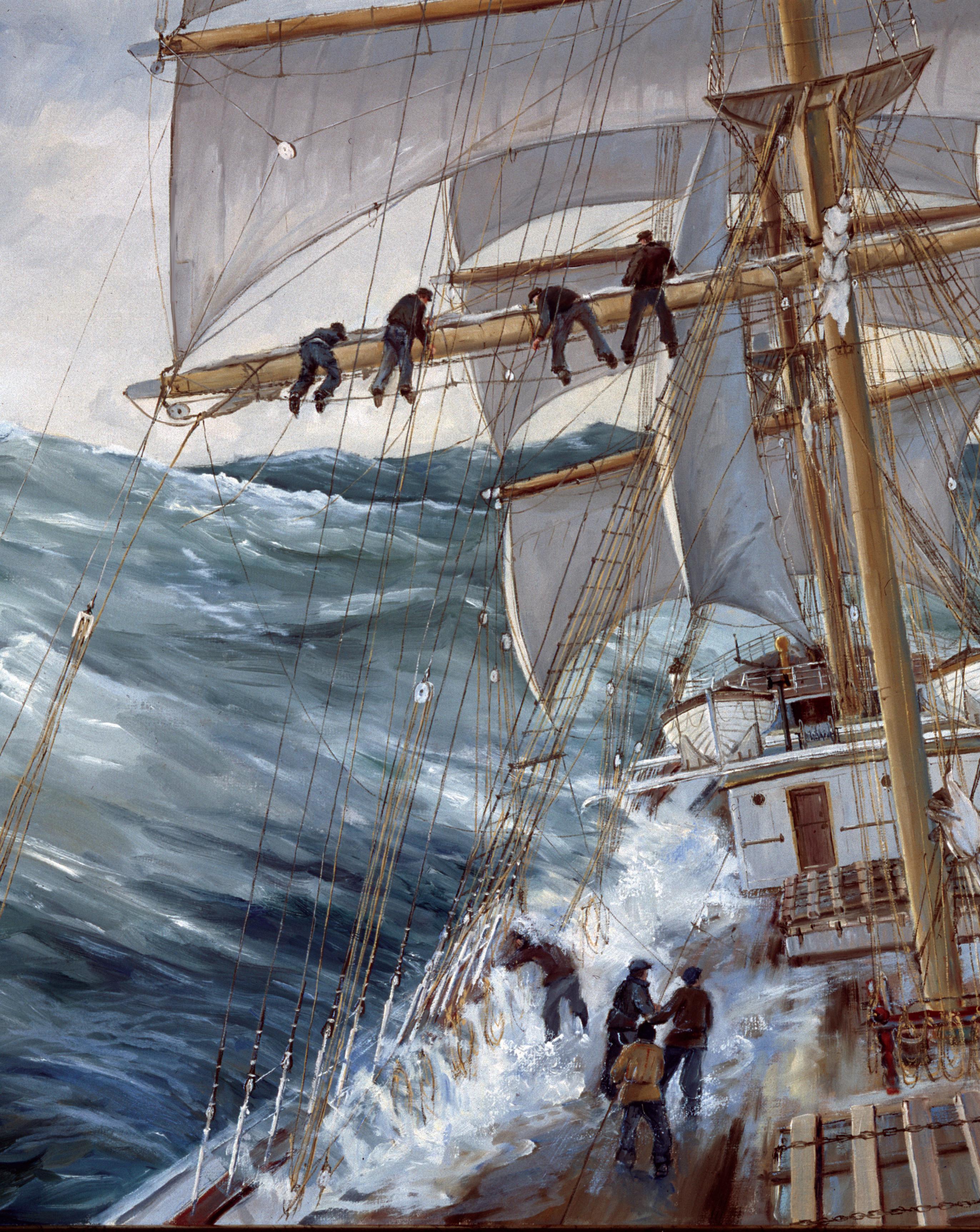
ART | HISTORY | SCIENCE | ADVENTURE N o . 184 | AUTUMN 2023 | $4 . 95



14k 18k
- Fish Float
n/a ------------- $2100.
Flemish
$1650.
$2100.
$2100.
$1100.
J
Strand Turk's
$4400.
$5900. K - Port & Starboard Hand Enameled Dangle Earrings ------------------------------------------------n/a ------------- $2250. • 18" Rope Pendant Chain $750. C A G B D J E H F K ® A.G.A. CORREA & SON JEWELRY DESIGN I PO Box 1 • 11 River Wind Lane, Edgecomb, Maine 04556 USA • 800.341.0788 customer.service@agacorrea.com • Please request our 52 page book of designs • M-F 10-5 ET • agacorrea.com Over 1000 more nautical jewelry designs at agacorrea.com ©All designs copyright A.G.A. Correa & Son 1969-2023 and handmade in the USA Jewelry shown actual size | Free shipping and insurance
A
Sphere with Aqua Chalcedony Pendant (U.S. Patent D678,110)
B -
Coil Pendant (matching earrings available) ----------------------------------------------
------------
C - Compass Rose with working compass Pendant -----------------------------------------------
------------ $2900. D - Correa/Chart Metalworks 3/4" Sailboat Pendant (additional designs available) -- $1850. ------------ $2500. E - Bowline Knot Earrings (please specify dangle or stud) ------------------------------------------
------------ $1500. F - Deck Prism Anchor Chain Dangle Earrings (matching pendant available) --------------n/a ------------- $2300. G - Monkey's Fist Stud Earrings (matching pendants available)--------------------------------- $1400. ------------ $1900. H - Original Working Shackle Earrings ------------------------------------------------------------------------ $950. ------------ $1300. I - Two Strand Turk's Head Ring with sleeve (additional designs available) ------------- $2300. ------------ $2900.
- Two
Head Bracelet --------------------------------------------------------------------------
------------



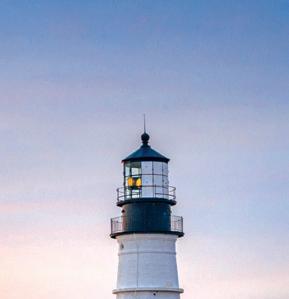





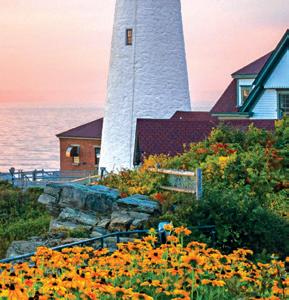







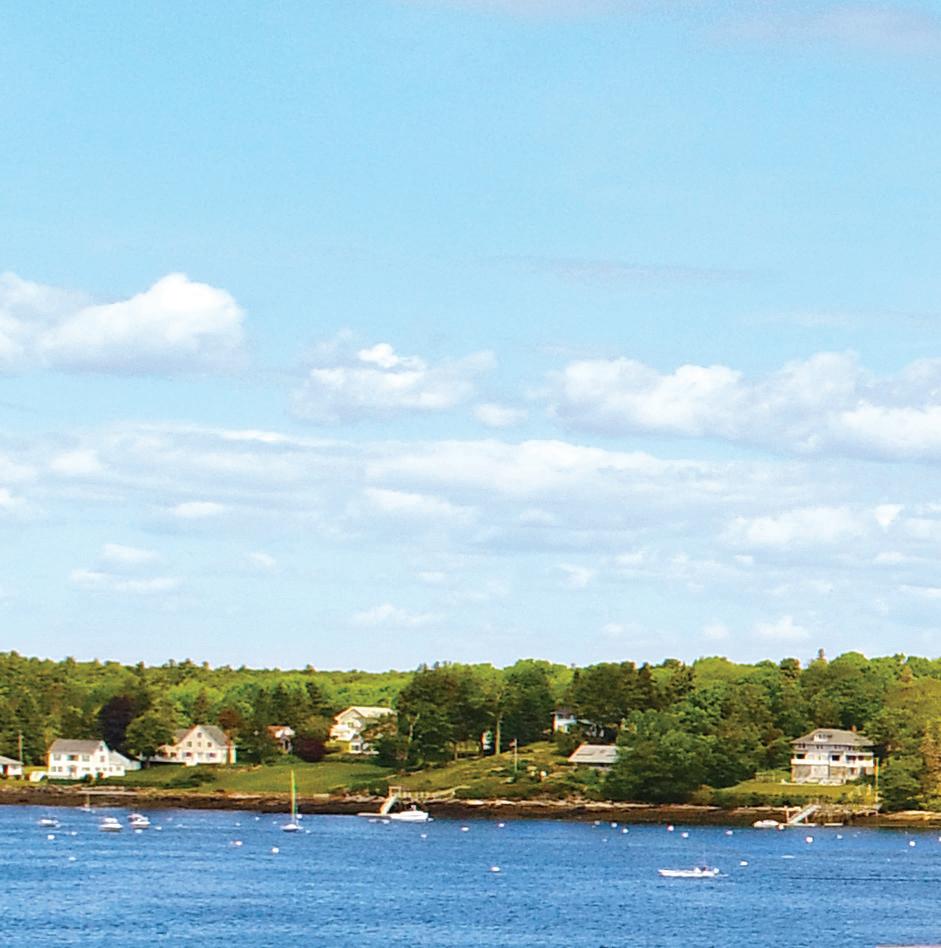
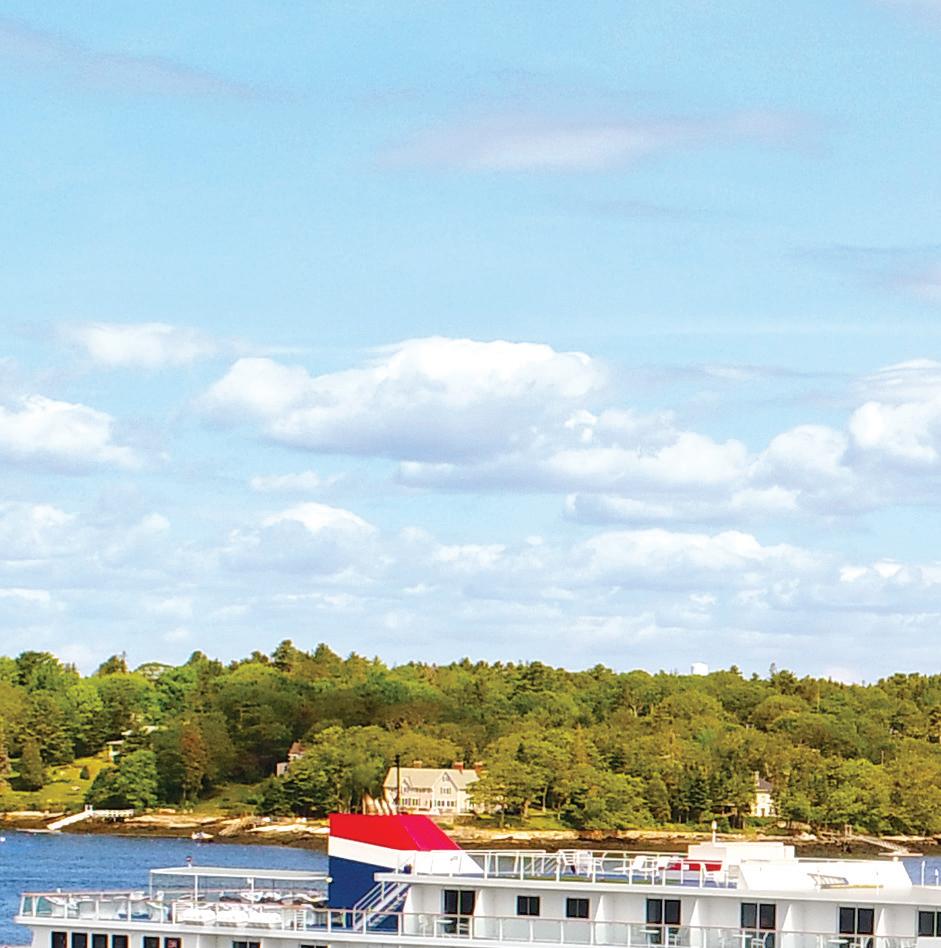


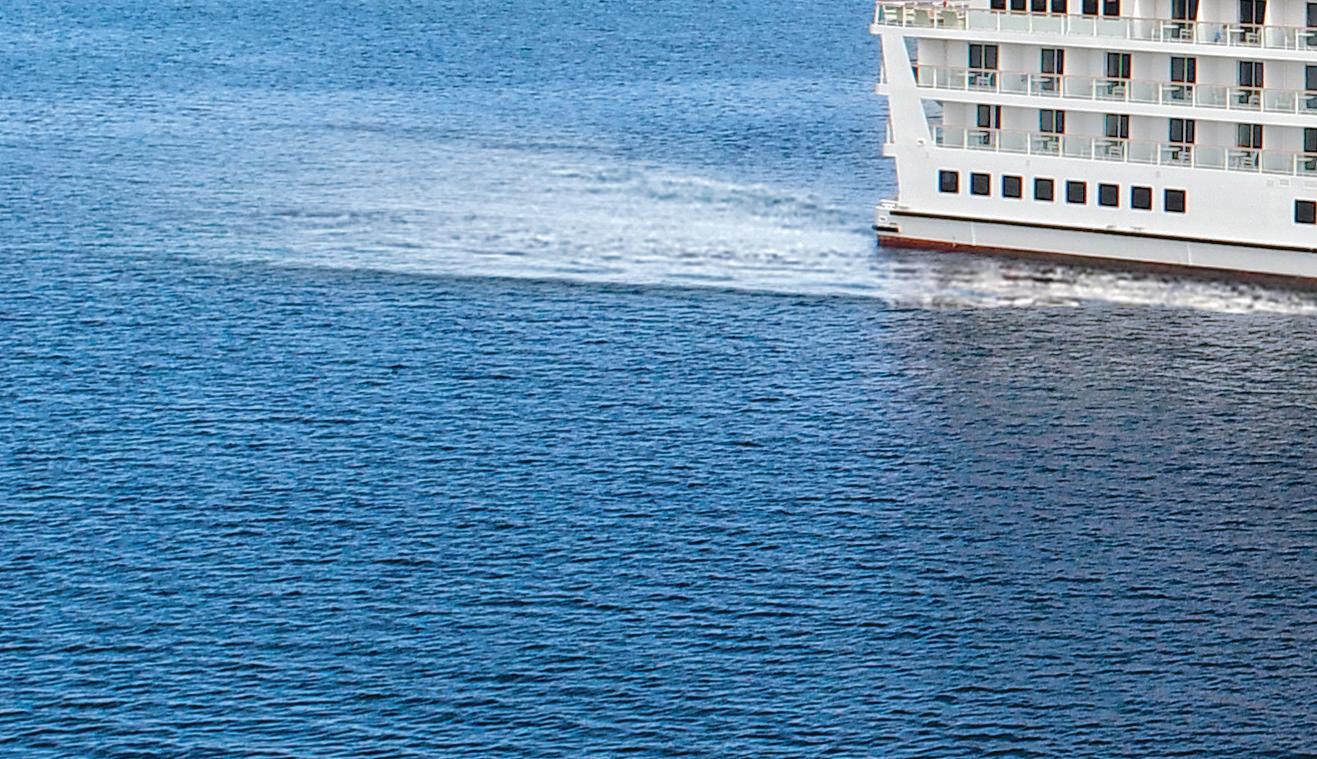
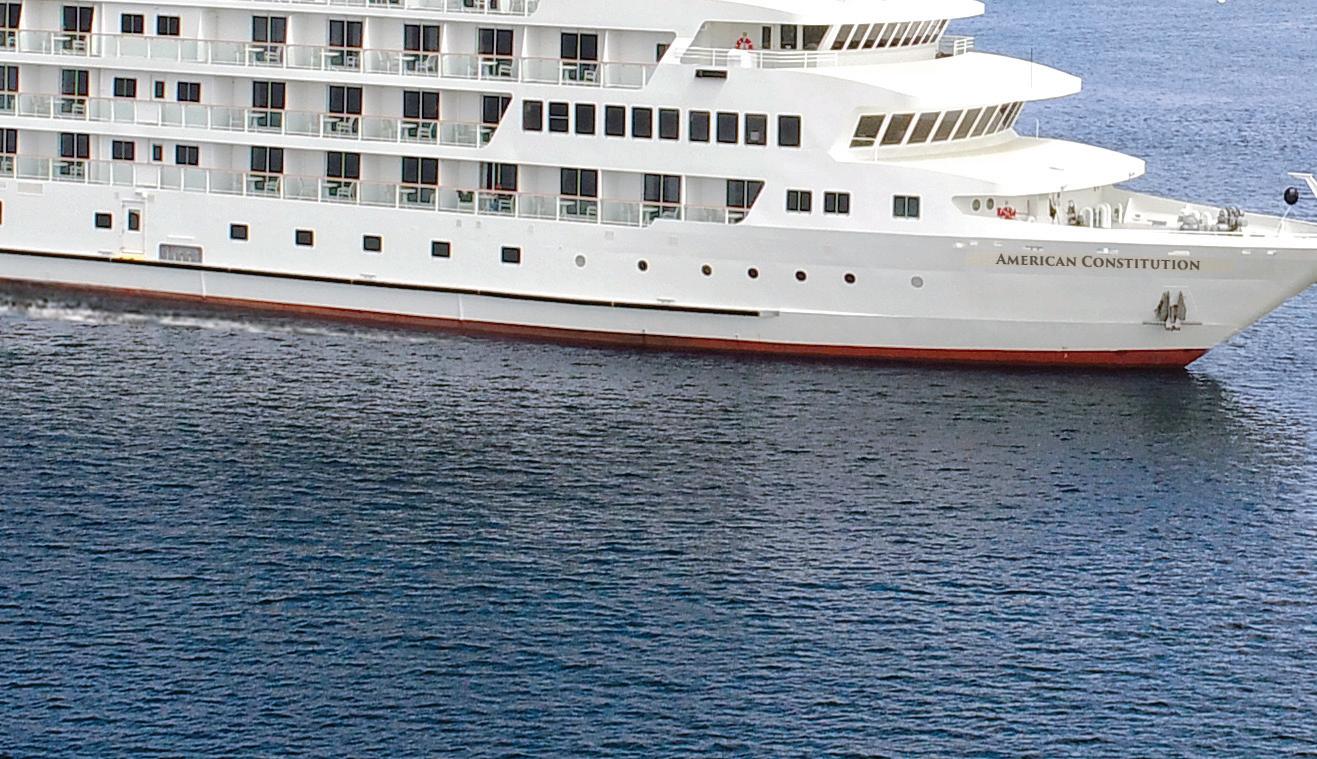









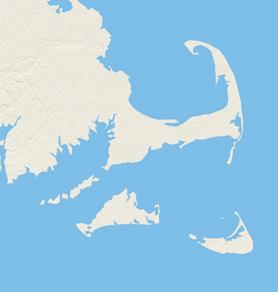





Portland Rockland Boothbay Harbor Bath Camden Bucksport Gloucester Bar Harbor Boston Atlantic Ocean Provincetown Newport Martha’s Vineyard MAINE NEW HAMPSHIRE MASSACHUSETTS RHODE ISLAND From the rich maritime heritage of whaling towns to quaint island villages and grand seaside mansions of the Gilded Age, our small, comfortable ships can take you to the heart of New England’s most treasured destinations. Be welcomed back to your home away from home, where you can delight in the warm camaraderie of fellow guests and crew. Small Ship Cruising Done Perfectly ® HARBOR HOPPING New England Cruises AmericanCruiseLines.com Call 866-229-3807 to request a FREE Cruise Guide
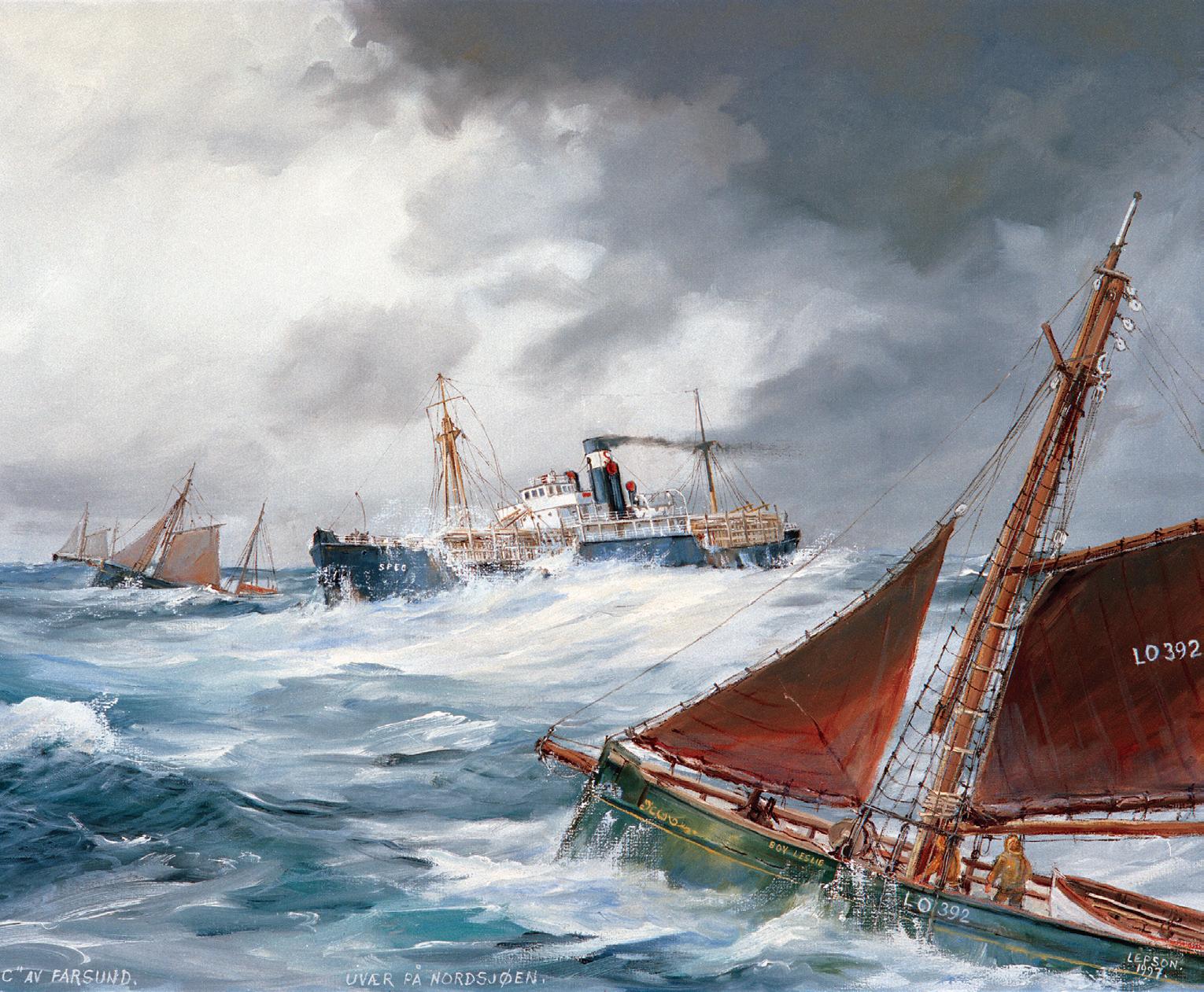
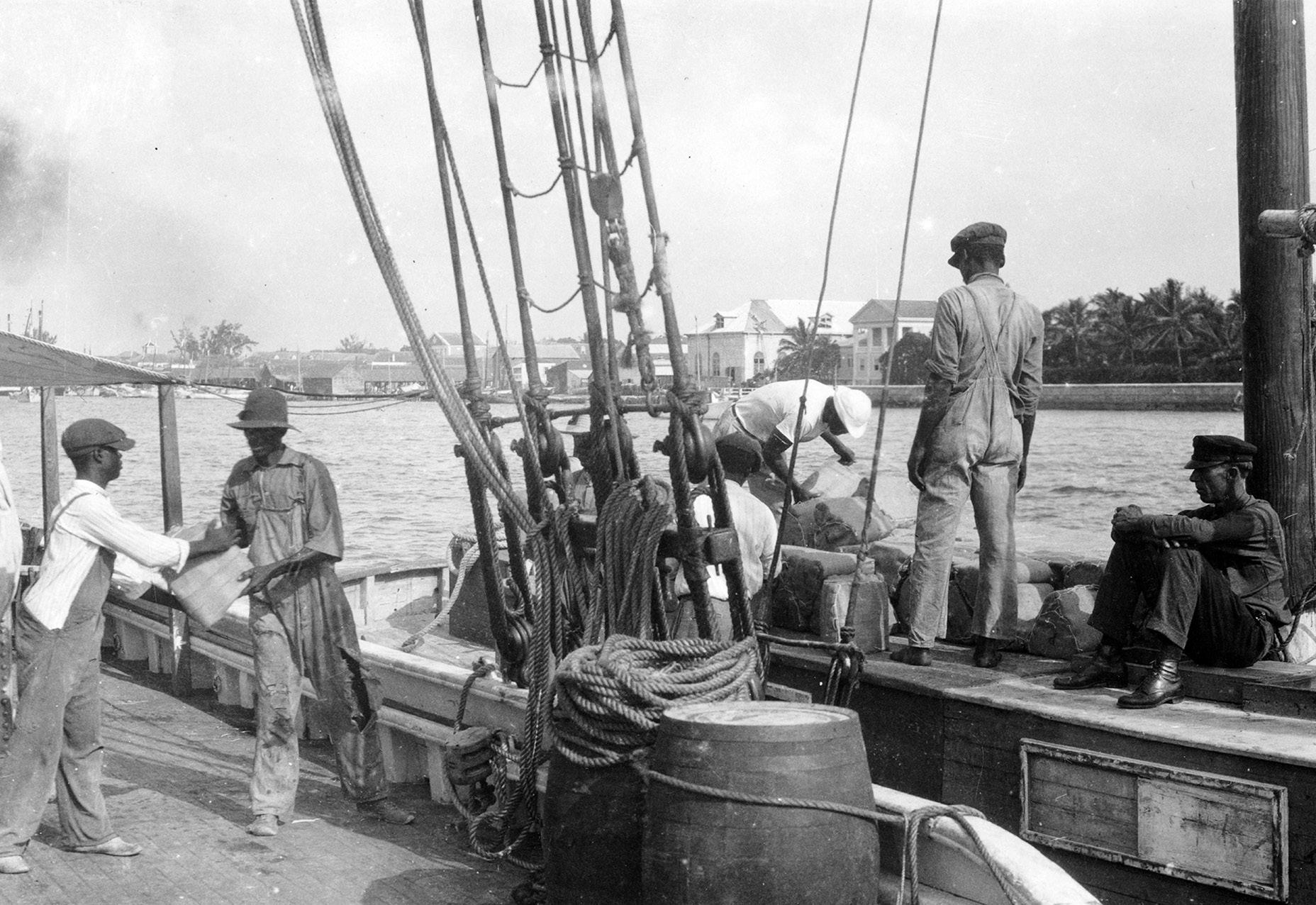
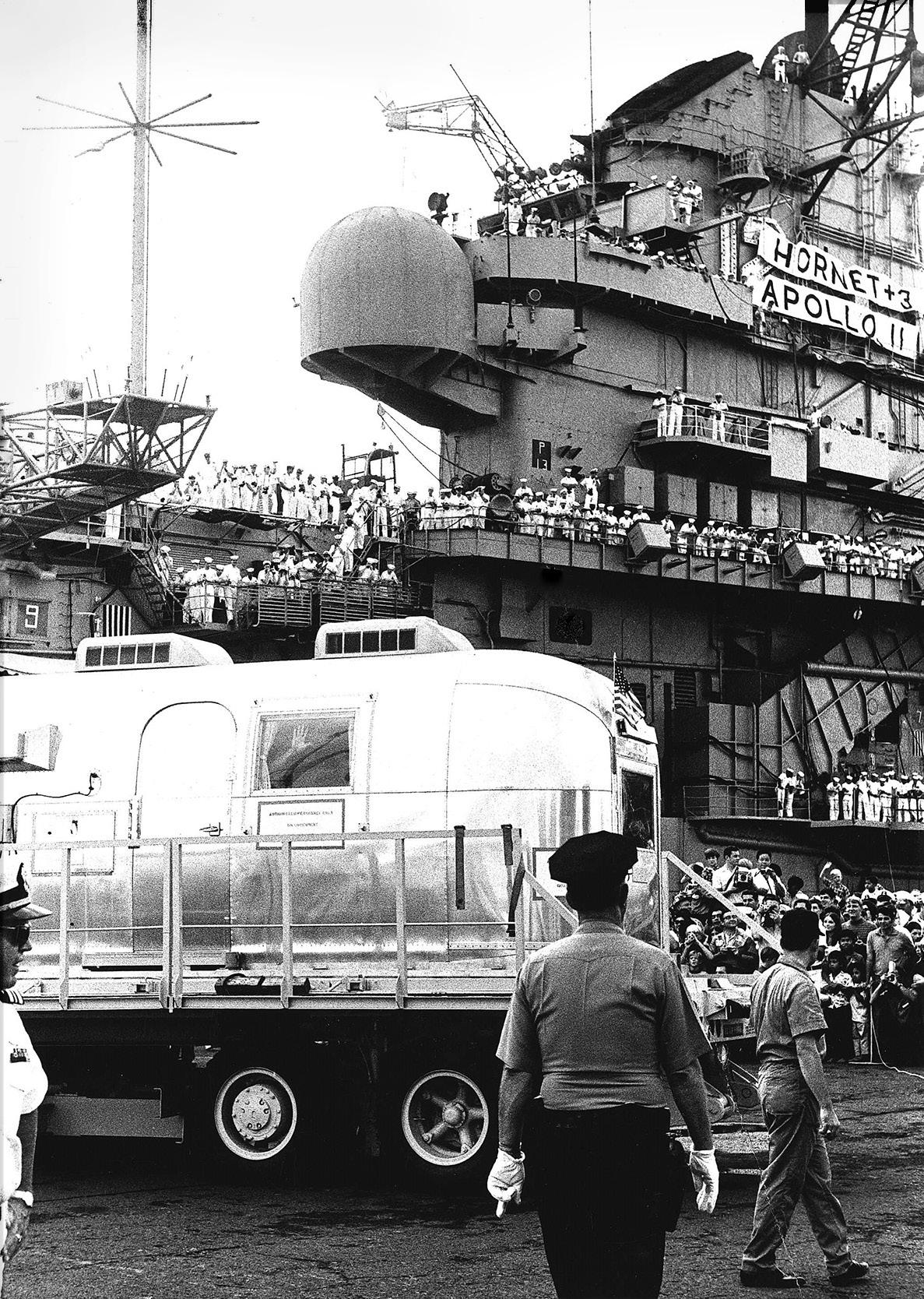
42 20 36 THE MARINERS’ MUSEUM AND PARK
US NAVY 2 SEA HISTORY 184 | AUTUMN 2023 CONTENTS No. 184 | AUTUMN 2023
©ANTS LEPSON
28
14 NMHS 2023 Annual Awards Dinner
by Julia Church
20 It’s the Real McCoy!
The Capture of Prohibition’s Most Notorious Rumrunner
by CAPT Daniel A. Laliberte, USCG (Ret.)
28 “Appalling Calamity”
The Lexington Disaster on Long Island Sound
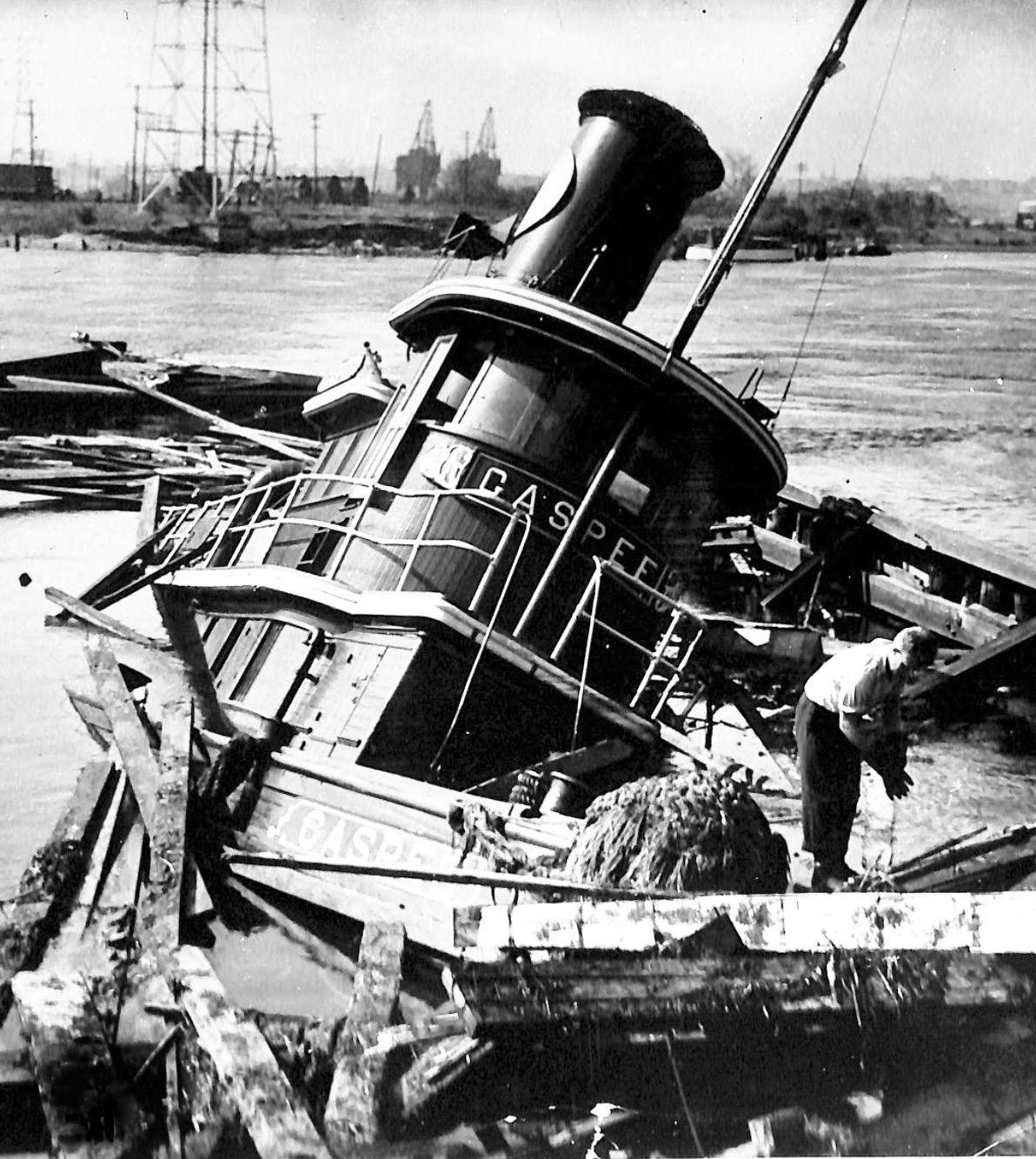

by Bill Bleyer
36 Happy Birthday USS Hornet!
by Chuck Myers
42 Master of Sail, Steam — and Oil!
Artist / Captain Ants Lepson
by Deirdre O’Regan
50 The 1938 Hurricane
The Coast Guard’s Last Ba le Before the War
by William H. Thiesen
4 Deck Log
6 Le ers
10 NMHS Cause in Motion
12 Fiddler’s Green
34 Curator’s Corner
56 Sea History for Kids
62 Ship Notes, Seaport & Museum News
71 Reviews
Cover: 40 South by Ants Lepson.
See article on pp. 42–48.
DEPARTMENTS
50 NEW YORK SUN, 1840
SeaHistory.org 3
ARMY CORPS OF ENGINEERS
Fill Our Sails!
NMHS 60th Anniversary Membership Campaign
e National Maritime Historical Society was founded 60 years ago as a membership organization, and because of the dedication of our members we have grown to be the voice of America’s maritime heritage, partnering with a myriad of other organizations along the way to preserve and promote our rich seafaring legacy. e Society has not only survived the ups and downs of the non-pro t world over the decades, but it has grown and ourished in what it seeks to accomplish and what it o ers to those who support our mission. While the reach of the organization has expanded, our membership numbers have not. We are asking you to help us grow our membership, and we are giving you an easy way to gift your friends a full membership at prices you won’t believe because, at this moment, growing our membership and getting our message and Sea History out to more people across the country is our most pressing concern. is 60th Anniversary Membership Campaign is underwritten by the NMHS Trustees.
Back in 1963 the price of membership was $10, and we are returning to this symbolic gure this year only for NEW members. BUT WAIT—there’s more! For that same $10, you can give a gift membership to up to 6 people (since we’re celebrating 6 decades of NMHS) … that’s just $10 total for all six! Our strength is in our numbers, and this campaign seeks to get our mission, Sea History, and our programming o ers out to as many people as we can. Over and over again, we nd that when people learn about NMHS and Sea History, they are excited about it and can’t believe they have never heard of us before. is is your chance to introduce NMHS membership to 6 friends, family members, neighbors, colleagues, fellow sailors, local businesses that have waiting rooms, o ces, libraries and boat clubs, colleagues, lovers of
history, the student down the street, the friends who go on cruise ships or the neighbors with a kayak on their car. is deal is for our 60th anniversary year only. At the stroke of midnight 31 December 2023, this campaign vanishes. e price is just $10, whether you send us 1, 2, 3, 4 ,5 or 6 new members, it’s a great opportunity.
Recently, we were poking around our archives and reread what NMHS President Emeritus Peter Stanford wrote in the second edition of Sea History, which was a yearly publication at the time.

Seaward! It’s said man is the only animal that laughs. There must be a kind of wisdom in that whether the observation is strictly true or not. But unmistakably, man is the only being around the planet who learns consciously from his past, and can extend his experience and his understanding across generations. He is a voyager in time. It is right that a nation born of endeavor by sea come back to its sea heritage for be er bearings. Let us come to the task with openness and laughter (that vanishing a ribute of man!) and with all the arts we’ve mastered in our voyaging through time. For this heritage lives only as it lives for us today, no other way.
Please take this opportunity to join us in strengthening NMHS—your organization—by getting the word out and building our membership. It will be the future support of new members that will keep our advocacy and resource and educational programs alive.
Let us join the NMHS Trustees on their 60th Anniversary Membership Campaign as a voyager back in time revisiting the prices of our rst year to build our membership. $10 for up to six gift memberships—seriously, it doesn’t get much better than that! (www.seahistory.org/anniversary.) As Peter Stanford stated, “It is right that a nation born of endeavor by sea come back to its sea heritage for better bearings,” and we ask your help as we do just this.
—Burchenal Green, NMHS President Emeritus
DECK LOG 4 SEA HISTORY 184 | AUTUMN 2023
Love ships and the sea? We do too and we know there are lots more out there who would love to know about Sea History and the work the National Maritime Historical Society does to keep these stories coming. Strength is in numbers and we can’t do it alone, so please take this opportunity to share what we do with those in your lives who might like to join us!
6 Memberships for $10!
Get your membership online at www.seahistory.org/anniversary.
Thank you!
Sea History e-mail: seahistory@gmail.com
NMHS e-mail: nmhs@seahistory.org
Website: www.seahistory.org
Phone: 914 737-7878
Sea History is sent to all members of the National Maritime Historical Society. MEMBERSHIP IS WELCOME: Afterguard $10,000; Benefactor $5,000; Plankowner $2,500; Sponsor $1,000; Donor $500; Patron $250; Friend $100; Regular $45. Members outside the US, please add $20 for postage. Individual copies cost $4.95.
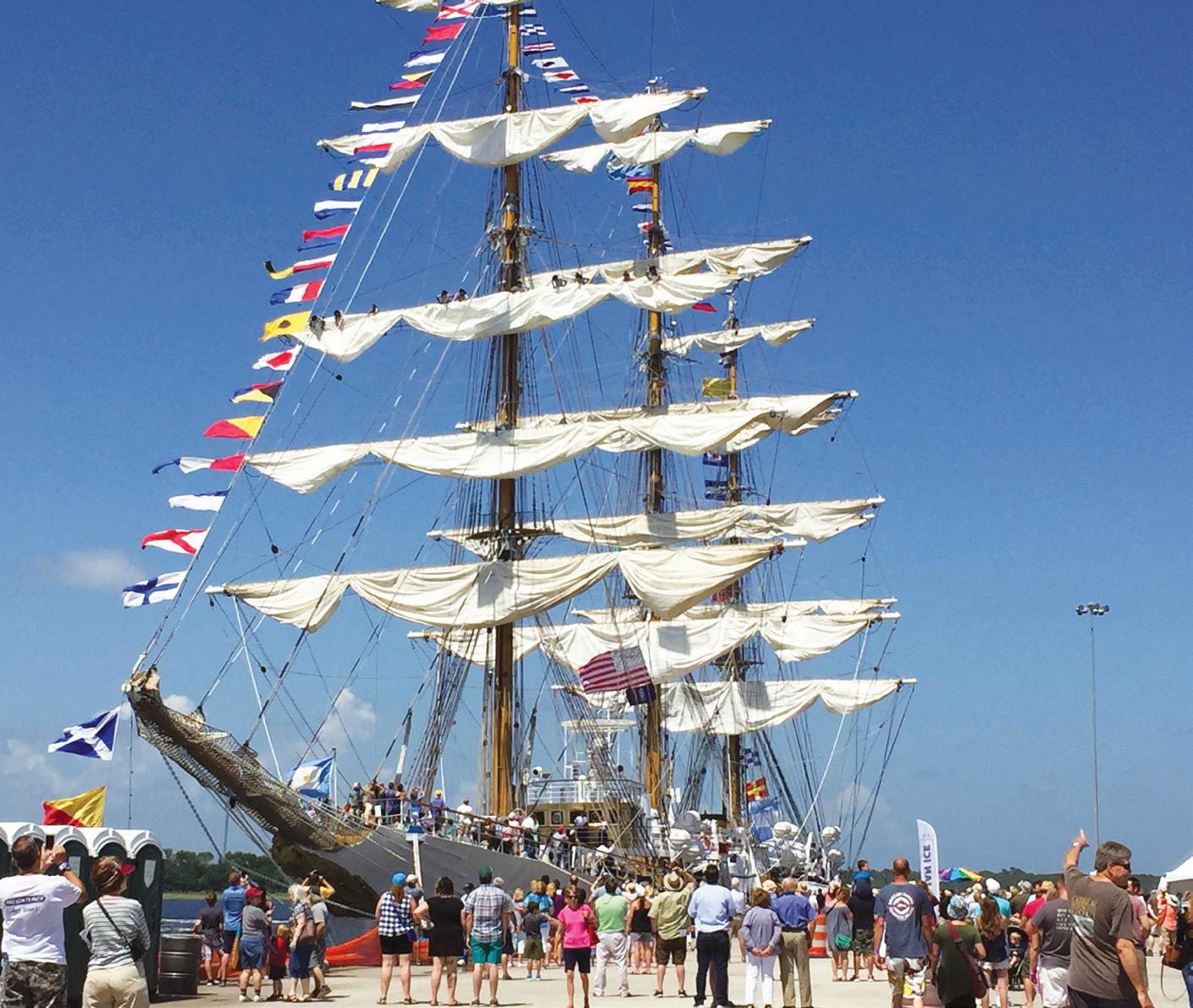
PETER ARON PUBLISHER’S CIRCLE: Guy E. C. Maitland, Ronald L. Oswald, William H. White
OFFICERS & TRUSTEES: Chairman , James A. Noone; Vice Chairman, Richardo R. Lopes; Vice Presidents: Deirdre E. O’Regan, Wendy Paggiotta; Treasurer, William H. White; Secretary, Capt. Je rey McAllister; Trustees: Charles B. Anderson; Walter R. Brown; CAPT Patrick Burns, USN (Ret.); CAPT Sally McElwreath Callo, USN (Ret.); William S. Dudley; David Fowler; Karen Helmerson; VADM Al Konetzni, USN (Ret.); K. Denise Rucker Krepp; Guy E. C. Maitland; Salvatore Mercogliano; Michael Morrow; Richard P. O’Leary; Ronald L. Oswald; Timothy J. Runyan; Richard Scarano; Jean Wort
CHAIRMEN EMERITI: Walter R. Brown, Alan G. Choate, Guy E. C. Maitland, Ronald L. Oswald; Howard Slotnick (1930–2020)
FOUNDER: Karl Kortum (1917–1996)
PRESIDENT EMERITUS: Burchenal Green, Peter Stanford (1927–2016)
OVERSEERS: Chairman, RADM David C. Brown, USMS (Ret.); RADM Joseph Callo, USN (Ret.); Christopher Culver; Richard du Moulin; Gary Jobson; Sir Robin Knox-Johnston; John Lehman; Capt. James J. McNamara; Philip J. Shapiro; H. C. Bowen Smith; Philip J. Webster; Roberta Weisbrod
NMHS ADVISORS: John Ewald, Steven Hyman, J. Russell Jinishian, Gunnar Lundeberg, Conrad Milster, William Muller, Nancy Richardson
SEA HISTORY EDITORIAL ADVISORY
BOARD: Chairman, Timothy Runyan; Norman Brouwer, Robert Browning, William Dudley, Lisa Egeli, Daniel Finamore, Kevin Foster, Cathy Green, John O. Jensen, Frederick Leiner, Joseph Meany, Salvatore Mercogliano, Carla Rahn Phillips, Walter Rybka, Quentin Snediker, William H. White
NMHS STAFF: Executive Director, Burchenal Green; Vice President of Operations, Wendy Paggiotta; Senior Sta Writer, Shelley Reid; Business Manager, Andrea Ryan; Manager of Educational Programs, Heather Purvis; Membership Coordinator, Marianne Pagliaro
SEA HISTORY: Editor, Deirdre E. O’Regan; Advertising Director, Wendy Paggiotta
Sea History is printed by e Lane Press, South Burlington, Vermont, USA.
SeaHistory.org 5
PHOTO BY BURCHENAL GREEN NATIONAL MARITIME HISTORICAL SOCIETY
Liberty Ships: Merchant Vessels Serving the Military
I’ve been a member of NMHS for a number of years and enjoy Sea History immensely. I’m a retired Coast Guard o cer and I’ve had over 36 years of service in a number of assignments; one in particular was Captain of the Port (COTP), Boston. While reading the summer issue of the magazine, I encountered an oddity in the identi cation of a photograph in the article “Naval Architect William Francis Gibbs: A Dream Deferred Never Died.” On page 17, the photograph of the launch of the WWII Liberty Ship Zebulon B. Vance is identi ed with the designation “USS,” which was reserved for US Navy ships, not a merchant vessel. If memory serves me correctly, the Vance should have been identi ed as “SS” not “USS.” I may be wrong, but to my knowledge Liberty ships were not combatants or US Navy vessels. ank you for your consideration.
Neal M. Doherty, USCG (R et.) Green Harbor, Massachusetts
From the editor: How right you are! anks for the keen eye and alerting me to this error, which I assure you is a misidenti cation all my own and not from the author of the article.
Titan, Titanic, and Deep-Sea Ocean Travel
e implosion of the submersible Titan and the loss of its ve occupants dominated the news last June and captivated the world. In the days after Titan went missing, still not knowing its fate, a massive surface and underwater search took place to nd the missing craft. While many suspected that the unconventional submersible and its owner may have met their end, there was hope that the craft may have lost power and was stranded on the bottom. e arrival of the Odysseus 6K, Pelagic Research Services’ remotely operated vehicle (ROV), con rmed the disaster, and questions were immediately asked of all those concerned: how could this have happened?
e irony of this event is that Titan was diving on one of the most famous shipwrecks in history, RMS Titanic. It was the loss of Titanic in 1912 that led to the passage of the Safety of Life at Sea Convention (SOLAS) that led to many of the safety measures that exist today in modern shipping. Today, all
(le )
ships, regardless of their country of registry, must meet certain international standards in not just safety, but also pollution, ship construction, and management. All nations, through port state authority, can inspect ships and ensure that they meet these standards, or hold vessels in port and require them to correct any discrepancy.
Titan was built in the United States to a much di erent design than any previous deep-sea submersible. In lieu of a single steel or titanium sphere pressure vessel, it had titanium caps with a carbon ber tubular hull to accommodate up to ve personnel. Most vessels built in the United States would have to obtain a Certi cate of Inspection (COI) from the US Coast Guard to carry passengers, but it does not appear that Titan ever received one. While it had made successful dives to Titanic in 2021 and 2022, its rst dive of 2023 met with disaster.

Titan fell into a loophole in that it was not a traditional vessel that sailed from port to port; instead, it was a submersible that was carried out to a dive

LETTERS We Welcome Your Feedback! Email correspondence to seahistory@gmail.com. 6 SEA HISTORY 184 | AUTUMN 2023
The 10,000-ton SS Zebulon B. Vance was built at the North Carolina Shipbuilding Company and was launched on 6 December 1941, the first of 90 sister ships to be built for the Maritime Commission. Liberty ships were manned by civilian merchant mariners.
US OFFICE OF EMERGENCY MANAGEMENT PHOTOGRAPH, LIBRARY OF CONGRESS.
OceanGate’s deep-sea submersible, Titan
OCEANGATE
site aboard a mother ship and apparently did not fall under that standard. Making matters more confusing, OceanGate, the company created by Stockton Rush, had its headquarters based in Everett, Washington, but OceanGate Expeditions, which ran the Titan expeditions to the Titanic wreck site, was registered in the Bahamas. Titan itself was not registered as a vessel with the United States nor with any other country. As part of traditional ship operations, vessels beyond their registry would have a ship society, such as the American Bureau of Shipping (ABS), Lloyds, or DNV, classify a vessel to provide third-party oversight, particularly for purposes of insurance.
OceanGate had one submersible classi ed with ABS, but Stockton Rush believed it would take the organizations too long to develop the needed procedures and standards for his new design. So, Titan was taken out of St. John’s, Newfoundland, aboard a Canadianagged support vessel, bound for international waters to visit the Titanic wreck site, more than two miles below the surface. It appears that no nation or authority had jurisdictional oversight over Titan as it made its descent that fateful day.
e US National Transportation Board and similar organizations from Canada, Great Britain, and France all initiated investigations into the loss of the submersible. e massive search, coordinated by the US Coast Guard in conjunction with the Canadian Coast Guard, along with military and private assets, was mobilized because OceanGate failed to have a backup plan, should something go wrong with Titan.
e question remains: since it operated outside the territorial waters of any nation, did any of these nations or organizations have oversight over Titan?
Some have prophesied the end of underwater dives on Titanic. In 1960, the bathyscaphe Trieste dived to the
bottom of Challenger Deep in the Marianas Trench with Swiss oceanographer Jacques Piccard and US Navy lieutenant Don Walsh on board. e loss of Titan and the ve people aboard is tragic, but it is the rst loss of a submersible at depth and resulted in the rst fatalities in sixty-three years of deep-sea manned exploration.1 When Titanic went to the bottom of the At-
lantic early on 15 April 1912, it did not mark the end of transAtlantic crossings. It is unlikely that Titan will end deepsea submergence diving; however, there need to be changes in how submersibles are regulated and operated when embarking passengers. Perhaps Titanic is not yet done in uencing shipping.
Salvatore R. M ercogliano, P hD Fuquay-Varina, North Carolina
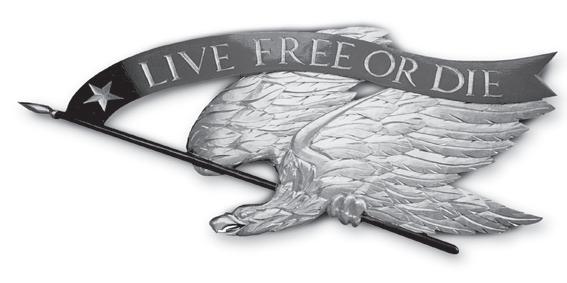
Tired of nautical reproductions?
Martifacts has only authentic marine collectibles rescued from scrapped ships: navigation lamps, sextants, clocks, bells, barometers, charts, flags, binnacles, telegraphs, portholes, US Navy dinnerware and flatware, and more.
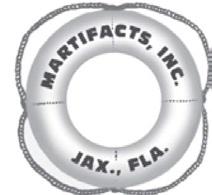
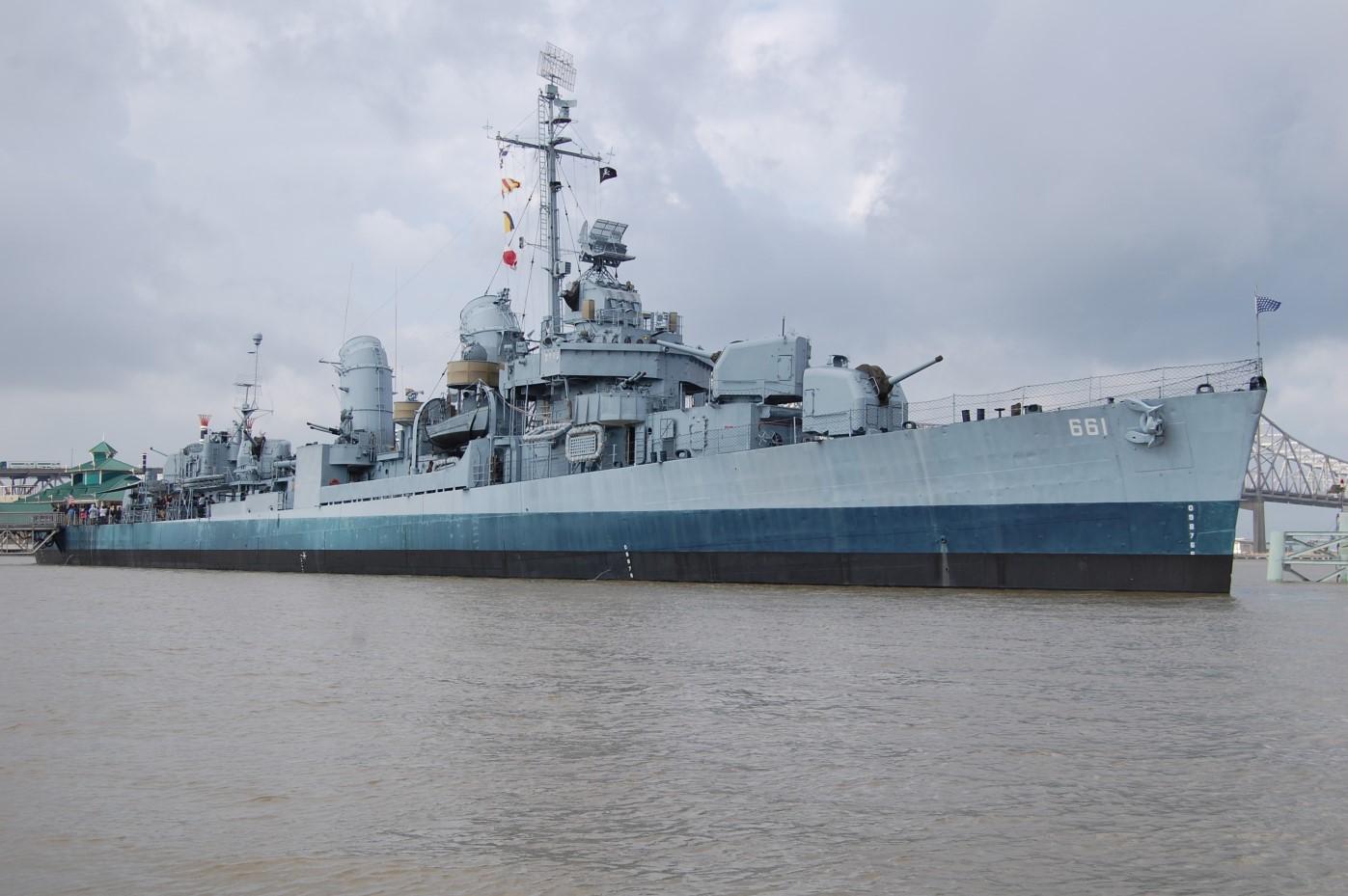
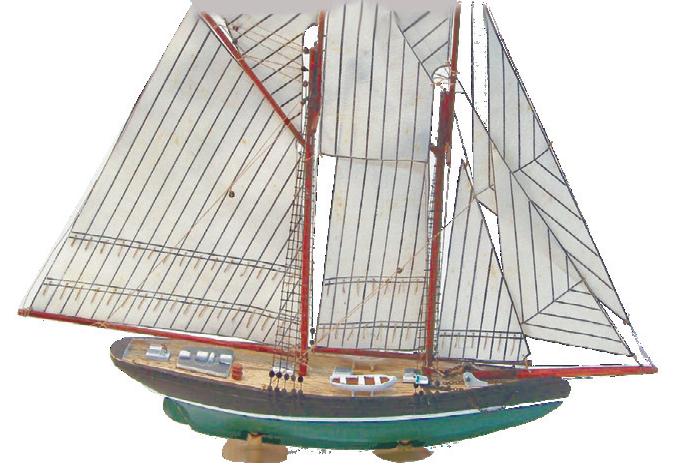
MARTIFACTS, INC.
P. O. Box 350190
Jacksonville , FL 32235-0190
Phone/Fax: (904) 645-0150
www martifacts com email: martifacts@aol.com
www.modelshipsbyrayguinta.com
e-mail: raymondguinta@aol.com

SeaHistory.org 7 J.P.URANKERWOODCARVER WWW.JPUWOODCARVER.COM THETRADITION OFHANDCARVED EAGLES CONTINUES TODAY (508) 939-1447 ★ ★ ★ ★ Model Ships by Ray Guinta Experienced ship model maker who has been commissioned by the National Maritime Historical Society and the USS Intrepid Museum in NYC. P.O. Box 74
Leonia, NJ 07605 201-461-5729
USS KIDD Open daily on the Mississippi River in Downtown Baton Rouge www.usskidd.com • 225 342 1942 • info@usskidd.com
1 With the exception of an accident that occurred in 1969, when aquanaut Berry Cannon died of asphyxiation, while making a repair to the exterior of SeaLab III at a depth of 610 feet.
Ballad of the Old Black Pearl Nicolas Hardisty’s excellent article about Barclay Warburton’s brigantine Black Pearl reminded me of a song about the ship. In 1970s Newport, Jim McGrath and the Reprobates often sang the “ e Ballad of the Old Black Pearl ” at the congenial bar One Pelham East on Newport’s waterfront. It remains a great song of the sea, and it’s available to hear on YouTube at www.youtube. com/watch?v=shdI_wTEMac (or search YouTube for “Ballad of the Old Black Pearl Jim McGrath”).
Bill G alvani Bainbridge Island, Washington
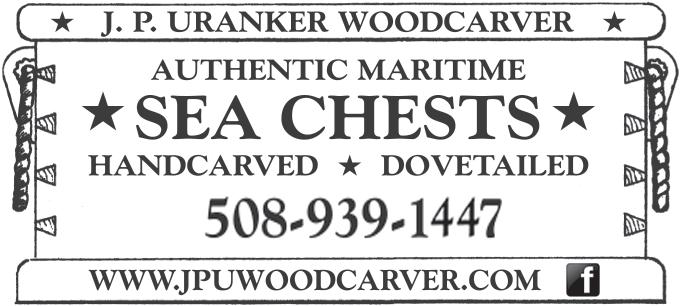
Gazela in Philadelphia
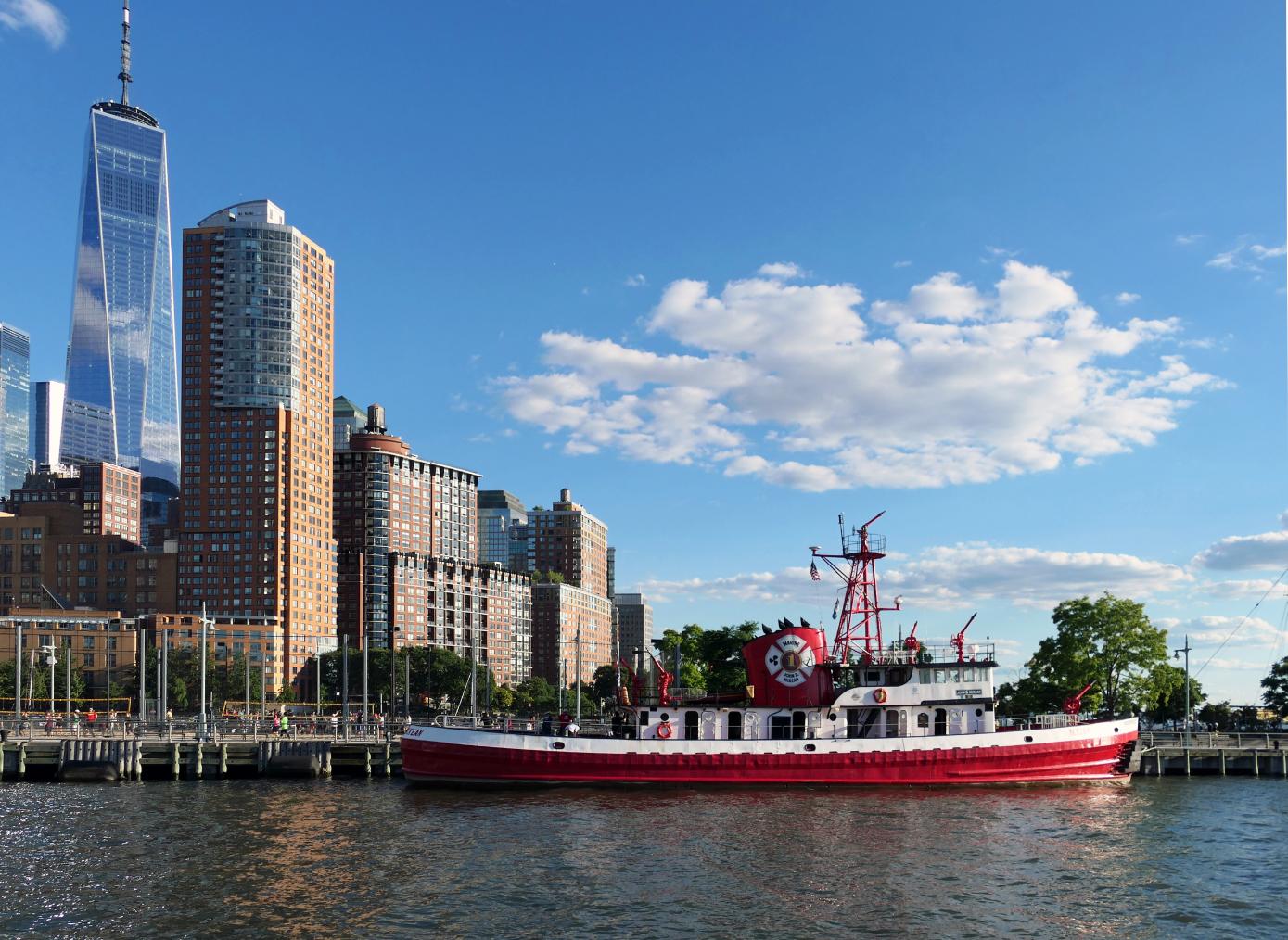

e photo on page 11 of the summer issue of Sea History shows Peter Stanford and John Stobart sitting in front of barquentine Gazela (1883), but the location as indicated in the caption is incorrect.


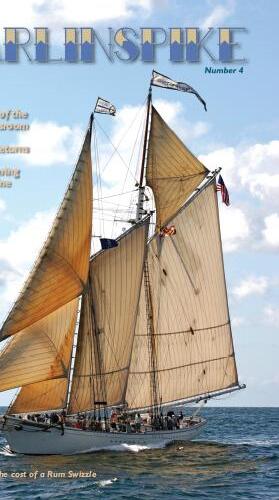
e photo was taken at Penns Landing in Philadelphia, with the Ben Franklin Bridge, visible in the background, to con rm this as the location.
L isa Kolibabek




East Haddam, Connecticut

8 SEA HISTORY 184 | AUTUMN 2023 The quarterly magazine devoted to traditional sailing vessels, sailors, and sail training! One year $29 * Two years $53 To subscribe, visit our website, call (978) 594-6510, or send a check to MARLINSPIKE 98 Washington Square #1, Salem MA 01970
A New England Tradition For 60 Years Open 7 days a week - 860.889.3793 25 Cottrell St. • 2 Holmes St. MysticKnotwork.com Traditional Knotwork Made in Downtown Mystic CT Nautical Ornaments MAINE WINDJAMMER CRUISES ® SELECT YOUR A DVENTURE ! Choose from 4 Traditional Sailing Vessels SWIFT Luxury Windjammer Sailing M ay – October Weekend 7-Day Cruises $755 and up Free 16-page Brochure 1-800-736-7981 NEW! OCEANGATE EXPEDITIONS THE FIREBOAT MCKEAN PRESERVATION PROJECT FIREBOATMCKEAN.ORG STONY POINT - NEW YORK
Mystic Knotwork
NMHS FILE PHOTO
Neith, 1996, Cover photograph Wood, Wind and Water
A Story of the Opera House Cup Race of Nantucket
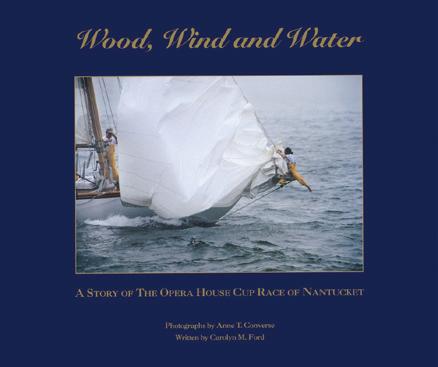

Photographs by Anne T. Converse
Text by Carolyn M. Ford
Live vicariously through the pictures and tales of classic wooden yacht owners who lovingly restore and race these gems of the sea.
“An outstanding presentation deserves ongoing recommendation for both art and nautical collections.”

10”x12” Hardbound book; 132 pages, 85 full page color photographs; Price $45.00
For more information contact: Anne T. Converse Phone: 508-728-6210 anne@annetconverse.com www.annetconverse.com
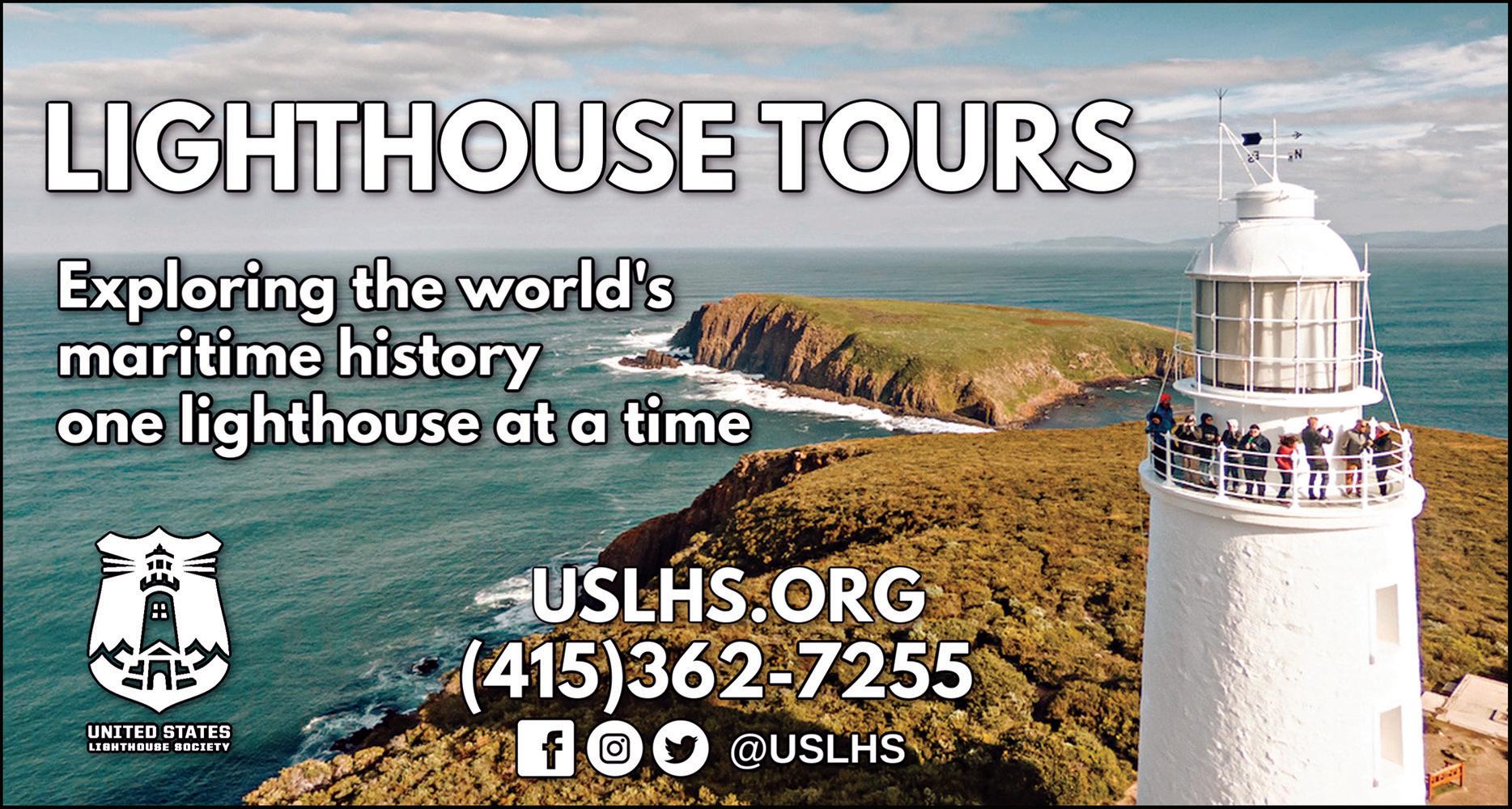
SeaHistory.org 9
Anne T. Converse Photography
The National Maritime Historical Society—Underway and Making Way!
e National Maritime Historical Society has been working to preserve and promote our maritime heritage for 60 years. We do that in myriad ways, where the need is great and when other maritime organizations are looking for support for their good works. is summer we were delighted to sponsor a fabulous concert for the Navy Memorial, and were honored to receive the National Lighthouse Museum’s National Maritime History Preservation Award. is fall we will host naval history scholars from around the world, and next spring we’ll dedicate our impressive maritime library. We are only able to do our work with the support of our membership. We invite you to join us, remembering that your membership starts with me and ends with ship
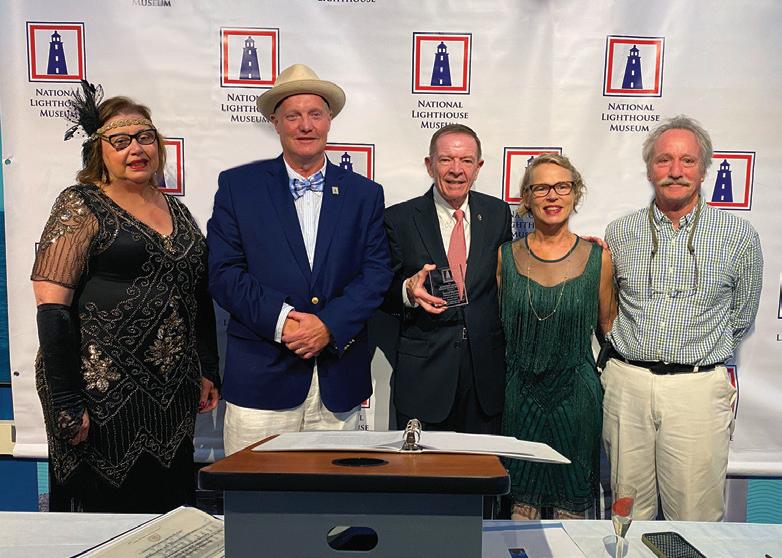
The United States Navy Memorial
e United States Navy Memorial is a magni cent tribute to the men and women who served in the US Navy. Its mission is to “honor, recognize, and celebrate the men and women of the Sea Services…and to inform the public about their service.” e organization is active throughout the year with events, concerts, and programs for visitors and Navy personnel. Check the Memorial website (www.navymemorial.org ) for scheduled events during your next trip to Washington, or just stop in to view the interesting exhibits. NMHS was honored to sponsor an evening concert at the memorial this June, hosted by four-star Admiral James Frank Caldwell Jr., Director, Naval Nuclear Propulsion Program, and to meet so many of the Navy personnel who work to keep our submarine and nuclear forces ready.
President and CEO of the Navy Memorial RADM Frank Thorp IV, USN (Ret.) (le ), thanks the Society for sponsoring the concert. Shown here (–r) Thorp; NMHS trustee CAPT Patrick Burns, USN (Ret.); Burchenal Green; CAPT Todd Creekman, USN (Ret.); trustee K. Denise Rucker Krepp; and NMHS chair CAPT Jim Noone, USN, (Ret.).
The National Lighthouse Museum
e National Lighthouse Museum (NLM) honored NMHS on Friday, 4 August, with its National Maritime History Preservation Award. e award was presented to NMHS chairman Jim Noone by Captain Joseph Ahlstrom, NLM chair, to honor the Society’s 60 years of work in historic preservation, education, and advocacy. e Society has worked closely with the museum and the many dedicated lighthouse preservation projects across the country, particularly in organizing sessions during the National Maritime Alliance’s Maritime Heritage conferences.
McMullen Naval History Symposium
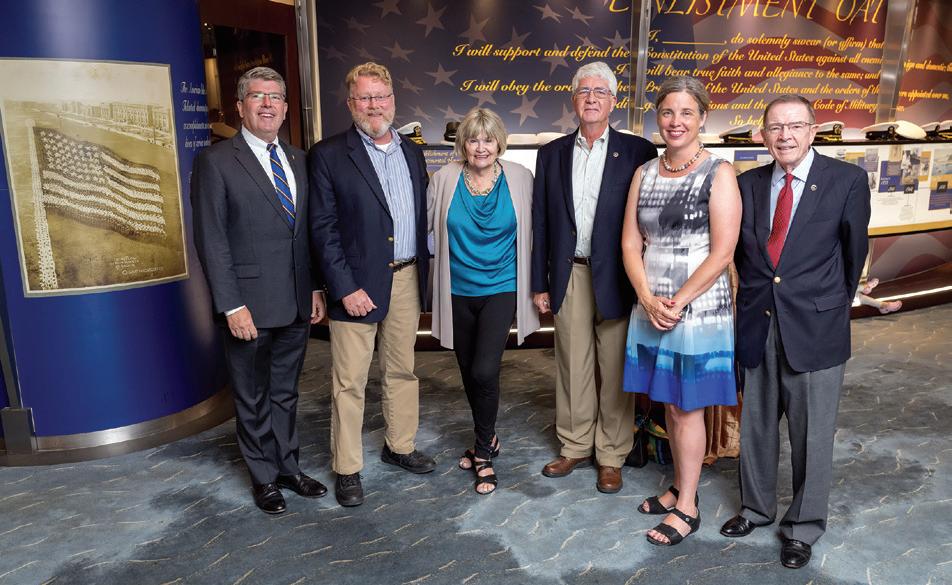
NMHS will sponsor a luncheon on 22 September 2023 during the biennial McMullen Naval History Symposium. Dr. David Winkler and CAPT Jim Noone, USN (Ret.), will welcome our guests and host the event. is year’s symposium will be held in Annapolis, Maryland, on 21–22 September 2023; it has been described as the “largest regular meeting of naval historians in the world” and as the US Navy’s “single most important interaction with an academic historical audience.” We are grateful to Benjamin “BJ” Armstrong, Commander, USN, and 2023 Chair of the Symposium.
Ronald L. Oswald Maritime Library
Libraries have been the collective repository of the culture of every civilization. NMHS has been collecting maritime books for decades from members and outside donors from around the country. In 2018 we were awarded a $50,000 National Maritime Heritage Grant to digitize our library catalog, archives, and collections, and make them accessible to the public online, at our headquarters, and through the Westchester Library System and Hendrick Hudson Free Library. e 5,000-volume library catalog can be viewed at www.seahistory.org/education/library e library is named for our
NMHS CAUSE IN MOTION 10 SEA HISTORY 184 | AUTUMN 2023
PHOTO BY A. E. LANDES
National Lighthouse Museum Executive Director Linda Dianto and Chairman Captain Joseph Ahlstrom present the National History Preservation Award to NMHS chairman Jim Noone and trustees Karen Helmerson and Rick Scarano.
PHOTO BY BURCHENAL GREEN
chairman emeritus Ronald L. Oswald, for his long and dedicated service. Ron is a voracious reader and amateur historian: “My life has been shaped by reading, by the worlds and knowledge introduced to me by books. Even my adventure with NMHS started from reading Sea History in a library. I know how important libraries are, and I cannot think of a more meaningful honor to me to have this in my name,” he remarked.
Please join us for a reception in spring 2024 (date TBD) for the o cial dedication of the Ronald L. Oswald Maritime Library at our headquarters at 1000 N. Division St., #4, Peekskill, NY.
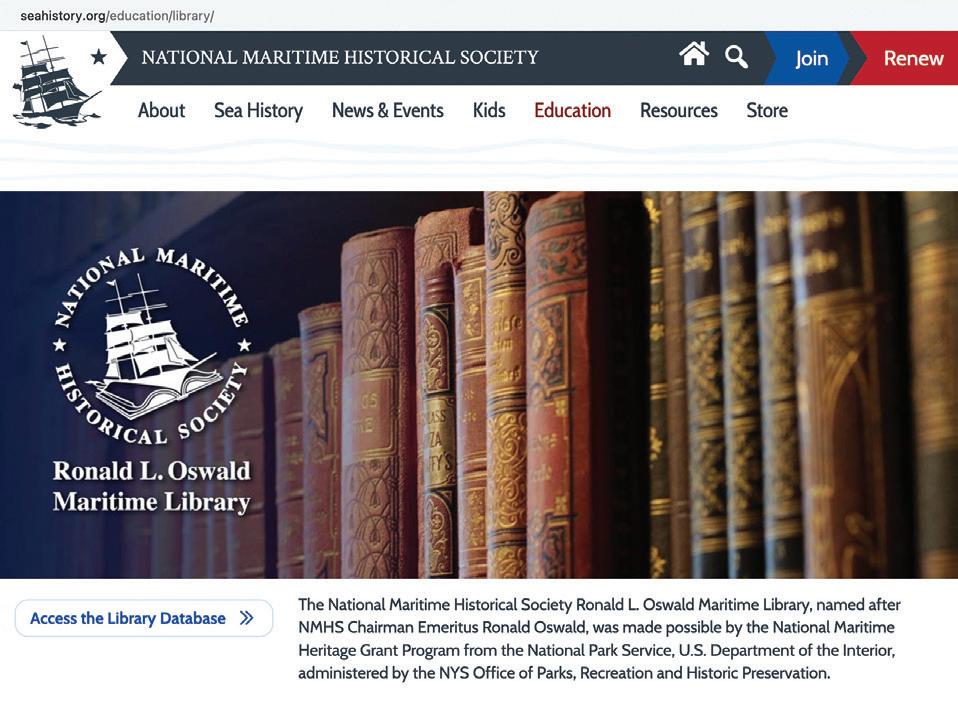
Sail 250 New York
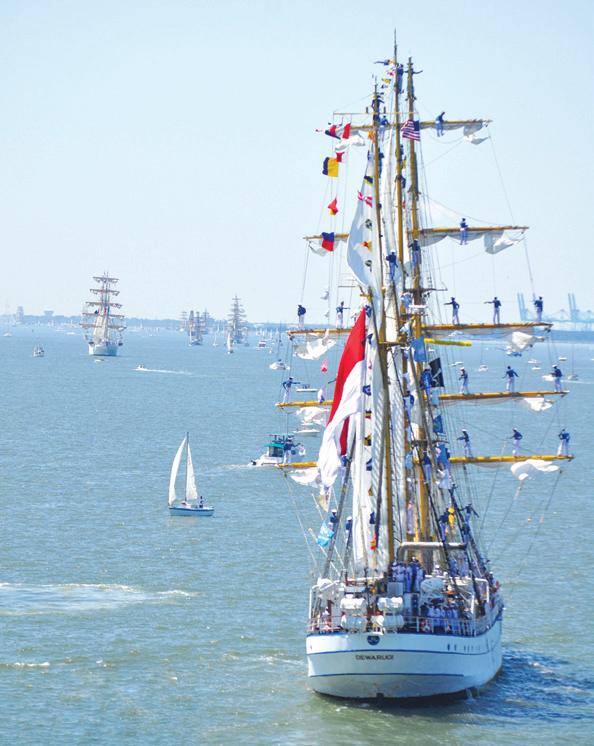
A spectacular celebration of America’s 250th birthday will take place in New York Harbor on 4 July 2026, continuing the extraordinary maritime tradition of gathering the world’s eet of tall ships. Sail 250 New York will host an armada of international naval and sail training vessels for a grand parade of ships in New York Harbor. e New York City port call is the centerpiece of a ve-port celebration on the Atlantic and Gulf coasts. NMHS is working with Sail 250 New York to include an educational component for the event. We welcome your support and ideas at nmhs@ seahistory.org.
—Burchenal Green NMHS President Emeritus
NMHS 60th Anniversary Calendar 2024
Enjoy 12 months of stunning marine paintings from America's most celebrated artists, including John Barber, Peter Egeli, Kathleen Hudson, Russ Kramer, William Muller, John Stobart, & Len Tantillo.

This wall-hanging calendar is saddle-stitched and printed on quality heavyweight paper.
18" H x 12" W (open)
$13.60, plus $5.50 s/h (media mail) within the USA. NYS residents add sales tax. Please call for multiple or international shipping charges.
TO ORDER, call 914-737-7878 ext. 0, or online at www.seahistory.org/calendar2024.
SeaHistory.org 11
Russ Kramer, F/ASMA, The Corinthians, oil, 24" x 36"
PHOTO BY WILLIAM G. ARMSTRONG JR.
Peter Arthur Aron (1946–2023)
Peter Arthur Aron was the quintessential Renaissance man, really a modern-day prince. He grew up with a passion for all things maritime, as a child reading sea adventures by ashlight under the covers. He was quick to credit his interest and a good deal of his knowledge about history and the sea to his late father, Jack R. Aron, who was a founder of South Street Seaport. Peter and his father were instrumental in saving the 1911 four-masted barque Peking from the shipbreakers in England in 1974 and bringing her to the South Street Seaport in the challenge to keep alive the vibrant heritage of the Port of New York, which built the city, which built the country. Peter and Jack Aron were recipients of the NMHS Ship Trust Award in 1990 for their work saving the Peking. anks to them, the ship was saved and is now fully restored and homeported in Hamburg, Germany.
Peter Aron’s major involvements with maritime history included his service for over thirty years as a trustee of the South Street Seaport Museum, serving the last ten years of his tenure as its chairman, and then chairman emeritus. He and his family signed on at the very beginning, when Peter Stanford and Jakob Isbrandtsen made the rounds of all the maritime-related companies in lower Manhattan seeking help for the then-new waterfront museum. e Arons, then major importers of co ee, cocoa and sugar, along with the Aron Charitable Foundation, Inc., soon became supporters of South Street Seaport Museum. ey were among the early “Plankowners” for the 1885 full-rigged ship Wavertree when she was found by Karl Kortum in Buenos Aires and towed to New York for restoration. She has been fully restored and is an important and impressive historic reminder of the port.
Over the years, Peter Aron and his family have helped with the preservation of a number of vessels, including Ernestina/Morrissey, Matilda, and Lettie G. Howard. He served for a time on the Advisory Council of the museum at the United States Merchant Marine Academy, which is only about a mile down the road from his home in Kings Point, NY. He served as a trustee and corporate member of the Woods Hole Oceanographic Institution.
Following a family tradition of service to his country, Peter served two years in Vietnam as a 1st lieutenant in the US Army. He was awarded the Bronze Star and Department of Defense Joint Service Commendation Medal for meritorious Vietnam service, among other decorations.
For many decades, Peter has been a strong supporter of Sea History magazine, founding the Publisher’s Circle to encourage supporters. “It is the best written, the most honestly researched, and just plain attractive of all the publications about history and the sea. Each issue gives everyone who loves ships and things-nautical a great ‘ x,’” he said. Mr. Aron was a leader in promoting the written voice of the heritage, the magazines and books that record the seafaring story. In 2005, Peter spearheaded a family gift in honor of his father to the Library of America’s Guardians of American Letters Fund to ensure that Richard Henry Dana’s Two Years Before the Mast and other Voyages would be kept in print. In 2008 he was the recipient of the NMHS David A. O’Neil Sheet Anchor Award, given to recognize extraordinary leadership in building the strength and outreach of the Society.
With a lifetime of active dedication to education and the arts, and as a highly successful and astute businessman and investor, he was a generous philanthropist, supporting his schools and numerous art programs, and was the recipient of numerous awards and recognitions. He was a collector of Asian and maritime art; he become a licensed helicopter pilot, a certi ed open water scuba diver, and an accomplished sailor and photographer. He enjoyed the opera and symphony. His great passion was for his family—his beloved wife of 51 years, Erika Kostron Aron, and their daughters Heather and Holly, and their families. He was known to say that one should live life with simple acts of love and kindness, that you should ask “if you are doing things right, or doing the right thing,” and that with a twinkle in his blue eyes, he would say, “that is all I have to say about that.”
Fair winds, dear friend and shipmate.
—Burchenal Green, NMHS President Emeritus
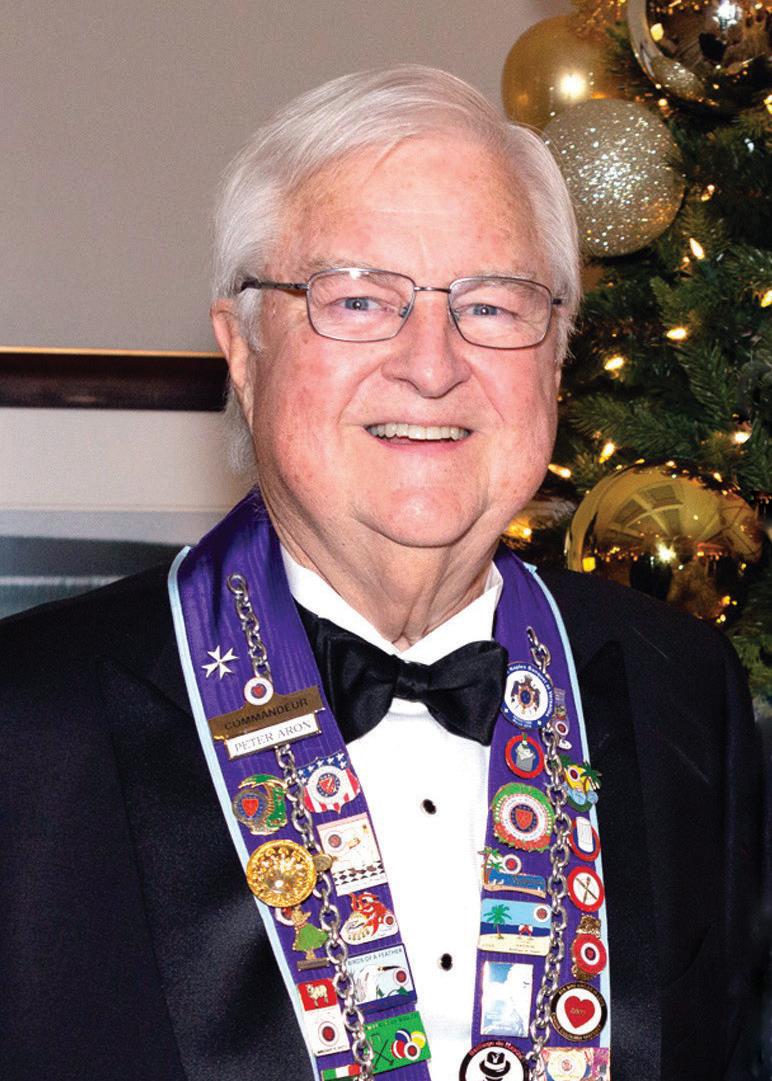
12 SEA HISTORY 184 | AUTUMN 2023
FIDDLER’S GREEN
COURTESY THE ARON FAMILY
We were saddened to learn of the death earlier this year of our founding president and long-time NMHS Overseer, Alan D. Hutchison. A graduate of George Washington University School of Law, Hutchison was a lawyer in Washington, DC, in the early 1960s. His law rm was representing the Washington Waterfront Development Company, which hoped to revitalize the waterfront in the nation’s capital with a plan that included featuring a historic sailing ship that could connect visitors with America’s maritime origins. Hutchison sought the advice of noted maritime historian Karl Kortum, who advised him that the barque Kaiulani, the last American-built ship to sail around Cape Horn with cargo, would be the ideal vessel for this purpose. e Committee for the Preservation of the Kaiulani was soon formed to lead e orts to bring Kaiulani back from the Philippines, where she was being used as a lumber barge. As the project grew in scope, the National Maritime Historical Society was incorporated, with Mr. Hutchison as its founding president.
In 1964, Philippine president Diosdado Macapagal presented Kaiulani to the people of the United States in a formal White House ceremony.
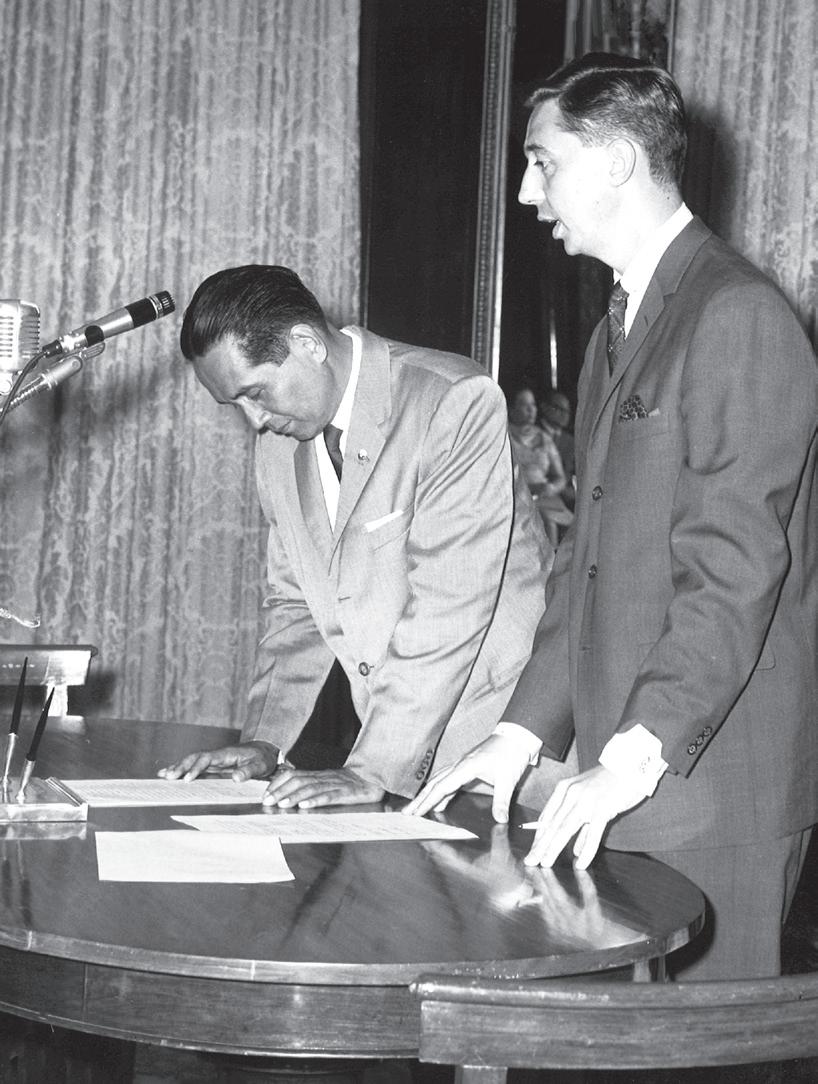
e National Maritime Historical Society was appointed steward for the ship and continued to raise awareness and funds to bring her to the US. Despite the organization’s successes in raising money and securing a federally guaranteed loan, the ship proved to have deteriorated beyond what was reasonable to restore, and she was broken up.
Emerging business commitments spurred Mr. Hutchison to turn over the mantle of NMHS president to Peter Stanford. Mr. Hutchison wrote the full story of this adventure in Sea History 94 (Autumn 2000), and it can be accessed online at www.seahistory.org. In 2000 he provided the funds to purchase a Kaiulani model that had been lost, but later found in Florida.
e model needed extensive restoration, which was recently completed by Ray Guinta; the model is on display here at our NMHS headquarters. It serves as a constant reminder of Alan Hutchinson’s unrelenting e orts to save this ship—and later its model—and is a constant inspiration.
Mr. Hutchison joined InterAmerican Finance Corp. as General Counsel and Managing Director; in 1986 he was appointed to the National Advisory Committee on Oceans and Atmosphere.
Rest in peace, Alan Hutchison, and many thanks from a grateful organization.
Burchenal Green, NMHS President Emeritus
Sail Aboard the Liberty Ship John W. B roW n
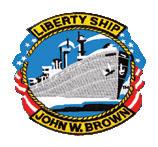

2023 Cruise on the Chesapeake Bay September 17th
On a cruise you can tour museum spaces, bridge, crew quarters, & much more. Visit the engine room to view the 140-ton triple-expansion steam engine as it powers the ship though the water.
Reservations: 410-558-0164, or www.ssjohnwbrown.org
Last day to order tickets is 14 days before the cruise; conditions and penalties apply to cancellations.
SeaHistory.org 13
FILE
NMHS
PHOTO
Alan D. Hutchison (right) accepting the title to the Kaiulani from President Diosdado Macapagal of the Philippines, 23 November 1964.
Alan D. Hutchison (1931–2023)
Project Liberty Ship is a Baltimore-based, all volunteer, nonproft organization. SS JOHN W. BROWN is maintained in her WWII confguration. Visitors must be able to climb steps to board.
National Maritime Historical Society

2023 Annual Awards Dinner
26 October • New York Yacht Club • New York City
by Julia Church
Pam Rorke Levy and Ma Brooks, co-chairs of the 2023 Annual Awards Dinner, invite you to join us for good cheer and camaraderie at the New York Yacht Club on Thursday, 26 October 2023, as the National Maritime Historical Society once again hosts its annual gala.
The 2023 Awardees
e Barkers of Interlake Steamship Company will receive the NMHS Distinguished Service Award in recognition of their leadership in the maritime industry and service to the United States maritime community, as their vessels are American built, American owned, and American operated, and for their unwavering support to preserve the maritime heritage of the United States. We especially honor their commitment to restoring the historic ferry SS Badger, the last coal- red passenger vessel operating on the Great Lakes, a National Historic Landmark, and an icon on Lake Michigan since 1953.
James Rex Barker is a legend in Great Lakes shipping. As chair of the Interlake Steamship Company, he leads the largest privately held US- agged eet on the Great Lakes. A recognized expert and industry leader in marine transportation, Barker serves as vice chair of Moran Towing Corp. and Mormac Marine Group, Inc., and as chairman of SeaStreak, LLC. He is also chair of the National Maritime Council and is a director of the American Bureau of Shipping (ABS).
Barker grew up in Sault Sainte Marie, Michigan, where his uncle and grandfather worked on supply boats that serviced the Great Lakes eet. During World War II, he and his cousins got an eyeful with 300 vessels passing by between Lake Superior and Lake Huron. “We knew them all,” Barker shared.
A US Coast Guard veteran, Barker served from 1957–61, after his graduation from Columbia College, and was assigned to the US Coast Guard base in Sault Sainte Marie as the executive o cer. In 2022, the United States Navy Memorial honored him with its Lone Sailor Award, given to sea service veterans who have excelled with distinction in their respective careers during or after their service. “I am most proud of this honor,” Barker says.
He studied transportation and nance at Harvard Business School, graduating with distinction in 1963. ere, Barker met Paul Tregurtha and the two formed a lasting partnership that continues today. He returned to Cleveland
to join the Pickands Mather Marine Department, which then operated Interlake. In 1971 Jim Barker was elected chairman, president, and CEO of Moore McCormack Steamship Company. An innovator in the eld, he pioneered the use of 1,000-foot freighters and containerization in Great Lakes shipping. Tregurtha joined him and together they grew Moore McCormack into a resources and water transportation company. In 1987 Barker purchased Interlake, and seven years later he and Tregurtha acquired Moran Towing Company, the oldest and largest tugboat company on the East and Gulf Coasts.
Barker served on the Services Policy Advisory Committee of the US Trade Representative during the Reagan Administration, the Business Advisory Committee of the Transportation Center at Northwestern University, and the Board of Visitors of Columbia College. Le Sault de Sainte Marie Historical Sites honored Jim Barker as Man of the Year in 1976 and inducted him into the Great Lakes Hall of Fame. In 1995, the United Seamen’s Service presented him with the Admiral of the Ocean Sea Award.
His namesake ship, MV James R. Barker, with its distinctive horn known as the “Barker Bark,” was built by the American Ship Building Company at Lorain, Ohio, and was the rst 1,000-foot-class vessel constructed entirely on the Great Lakes.
“I’m proud of the role the American maritime industry plays in the health of the American economy. Our industry
14 SEA HISTORY 184 | AUTUMN 2023
James R. Barker and Mark W. Barker
is nearly invisible, yet its role is incalculable. On the Great Lakes, the main commodity that we move is iron ore, the raw material for making steel—the backbone of American industry. e American maritime industry is the invisible grease that keeps our economy moving.”
Mark W. Barker has been at the helm of Interlake since 2007 as its president. “Great Lakes Shipping has played an incredible role for our nation,” he said. “ e only way to get through or around America was by boat. e iron ore found in the North Range started the building of America from the industrial age. Our company found its roots in the need to move iron ore from Minnesota and Michigan down through the Great Lakes.”
Interlake Steamship Company carries more than 20 million tons of cargo each year. e company operates and manages a versatile eet of nine self-unloading vessels that range in carrying capacity from 24,800 to 68,000 gross tons and have a total trip capacity of 390,300 gross tons. e company’s new 639- foot Mark W. Barker, launched in spring 2022, is the rst US- agged Great Lakes freighter built in almost 40 years. She was named 2023 Ship of the Year by Professional Mariner. e self-unloading bulk carrier is the lead ship in Interlake’s River class and is the rst ship to operate on the Great Lakes with EPA Tier 4 engines. Designed to ensure a low environmental impact, the steel ship was built by Fincantieri Bay Shipbuilding. She will carry all types of cargo throughout the freshwater lakes and river systems but was speci cally designed to navigate the tight bends of Cleveland’s Cuyahoga River. “We are moving the building blocks of America; we are moving the raw materials to create steel,” said Barker. “ e Great Lakes are an important aspect of our economy and an incredible resource for this country. Shipping is the invisible industry. We literally glide into port and deliver, and no one even knows we are there.”
Mark Barker’s maritime career was launched at SUNY Maritime College, where he studied marine engineering.

Prior to joining Interlake, he sailed aboard numerous vessels in the Great Lakes, Gulf of Mexico, and transAtlantic trades. He has an MBA from Case Western Reserve University’s Weatherhead School of Management and holds an Unlimited ird Assistant Engineer License.
“I grew up around the maritime industry and learned to love it, much as my father did as a child. My dad shared his passion for the ships and his deep passion for the history of the boats. I grew up learning that from him and experienced it as a young child when I got to go onboard the ships myself.”
Barker is chair of the National Museum of the Great Lakes and a past chair of the Lake Carriers’ Association. He serves on the board of Moran Towing Corporation and is an active member of the Council of the American Bureau of Shipping. “Without US shipbuilding capability, we not only can’t build merchant ships, [but] we can’t build Navy ships. It’s an important thing we need to keep alive and on the forefront.”
Richard du Moulin will present this award to NMHS’s rst father-and-son recipients. Jim Barker shared with us that he gave Rich his rst job in the eld, which makes the award that much more meaningful.
SeaHistory.org 15
James R. and Mark W. Barker
COURTESY JAMES AND MARK BARKER
Bolero O Antigua
by Russ Kramer
Bolero, the historic 73-foot wooden yawl, was designed by Sparkman & Stephens and launched in 1949. She is considered to be near the apex of the Top 10 of the great designs of Olin Stephens II. Bolero had a fine racing career in Sweden and San Francisco, across the Atlantic, and along the US East Coast. With 2,980 square feet of sail, she won the 1956 Bermuda Race, a record that stood until 1982.
Russ Kramer, a past president of the American Society of Marine Artists, is widely regarded to be among America’s leading marine artists, specializing in historic yachting scenes.

Paper/image size 30” x 20” paper/trim size 36” x 27”
Signed & numbered limited edition of 500 $450
Signed & numbered remarqued edition of 50 $700
Double-remarqued artist proof edition of 5 $900
—add $30 S/H within the US
Canvas/image size 36” x 24”
Signed and numbered limited edition of 175 $900
Artist proof edition of 5+ original 8” x 10” sketch $1,350
—add $75 S/H within the US
To order call 914 737-7878, ext. 0 or visit our website at www.seahistory.org.
NYS residents add applicable sales tax. For international orders, please email advertising@seahistory.org.
You can own this spectacular print by acclaimed artist Russ Kramer and support NMHS at the same time.
Edward W. Kane
Ed Kane will receive the 2023 NMHS Distinguished Service Award for the restoration of Bolero, the historic 74-foot wooden yawl designed by Sparkman & Stephens and launched from the Henry B. Nevins Yacht Yard in 1949.
Originally built for John Nicholas Brown, then Under Secretary of the Navy and vice commodore of the New York Yacht Club, Bolero arrived on the yachting scene with the reputation of being both luxurious and fast, rst to cross the nish line in the Newport-Bermuda Race in 1950, 1954, and in 1956, setting a course record that stood until 1982. “Restoring Bolero was important for four reasons,” Kane said. “She was commissioned by Commodore Brown of the New York Yacht Club; she was designed by the late Olin Stephens, one of the greatest yacht designers in the world; she was built at Henry B. Nevins shipyard in New York; and Bolero has an unbreakable connection to the New York Yacht Club—I have always been very involved with it. ese considerations were important to me.”

In 1989 Gunter Sunkler found Bolero abandoned and rotting away in a Florida canal; he rescued the vessel and set to work restoring the topsides and interior. Kane bought Bolero in 1999 and proceeded to make major repairs to the hull, adding a new stem and replacing the mahogany planking under the waterline. Bolero’s iconic sail was designed by his wife, Marty Wallace, with a motif depicting a Spanish Bolero dancer. “ e Browns [Bolero’ s original owners] named their yachts after Spanish dancers. We wanted to create a motif that would continue that legacy.”
His restoration projects date back to when he and Marty Wallace funded Musketaquid , a replica of the ski that Henry David oreau and his brother rowed from Concord, Massachusetts, to Concord, New Hampshire; oreau later wrote about it in A Week on the Concord and Merrimack
Kane learned to sail in Marblehead during his graduate school years at Harvard. Buying his rst sailboat in 1979, he sailed it in Maine with only a compass and a chart to guide him. With his racing days mostly behind him, the
Rick Scarano
Vice President of Scarano Boat Building and NMHS Trustee Rick Scarano will receive the 2023 David A. O’Neil Sheet Anchor Award in recognition of his extraordinary leadership in building the strength of the Society. His exceptional work as co-chair of the NMHS Membership Committee has effectively expanded the Society’s reach through promotion and marketing. e National Maritime Historical Society has bene tted from his leadership, enthusiasm, and par-
Kanes use Bolero primarily for cruising now: “Racing is a young person’s sport. It has become much more competitive, and people don’t do family racing anymore.”
Kane is a trustee emeritus and supporter of the International Yacht Restoration School (IYRS). He has funded projects such as IYRS’s replica of Olin Stephens’s 1930 6-meter Cherokee and the restoration of the 1926 Nathanael Herresho -designed Marilee. His generosity also helped establish the school’s Edward W. Kane and James Gubelmann Library with its unique collection celebrating the maritime heritage of Rhode Island. Kane is a partner with HarbourVest Partners, a venture capital rm that he cofounded in 1982. He earned a BA from the University of Pennsylvania and an MBA from Harvard Business School. Kane was a US Army paratrooper and a major in US Army Intelligence; he graduated from the US Army Command and General Sta College.
NMHS Annual Awards Dinner co-chair Pam Rorke Levy will present the award .
ticipation in countless events and initiatives and has been the recipient of signi cant in-kind support from him and Classic Harbor Line.
As vice president of Scarano Boat Building, Rick is responsible for business development and management, systems installations, quality control, and production. Scarano Boat Building has a special niche in the production of replica sailing vessels and certi ed passenger vessels, and has
SeaHistory.org 17
Ed Kane at the helm of Bolero during Antigua Race Week. COURTESY EDWARD W. KANE
designed and built private and commercial vessels ranging from steel crane barges and upscale yachts to commercial USCG-certi ed power and sailing vessels. Scarano also operates Adirondack Sailing Excursions, which operates Classic Harbor Line, with a eet of nine passenger vessels designed by Scarano Boat Building.
With more than 200,000 people sailing with them annually, Classic Harbor Line operates out of Boston, Massachusetts; New York, New York; Newport, Rhode Island; and Key West, Florida. eir agship, America 2.0, a stunning 105-foot sailing yacht, is a tribute to the 1851 schooner America —winner of the rst America’s Cup.

e Scarano brothers took to the water at an early age, learning to sail in upstate New York on a small lake in “the tub”—an 8-foot vessel made out of a World War II bomber fuel tank that was split in half and converted into a lug-rigged sailboat. “We grew up spending our summers playing in boats—canoes, kayaks, sailboats that were barely considered sailboats, and little speed boats. We had eight boats at one time, almost the size of the current Harbor Line eet! My brother John was the one who was inspired to design, build, and operate boats for a living, and he has designed every vessel that we have ever built.”
Scarano boats are rooted in the past—yet wed to the present. According to Rick, “I think to a large degree, sailing is traveling back in time. We do our best to integrate performance with the old-time aesthetic, and we love when the boat, under wind power, takes o and really performs. e wonderful thing for us is to introduce people to sailing, which is a multi-sensory thrill.”
A trustee for the National Maritime Historical Society since 2008, Rick is an active member of the American Sail Training Association, Friends of Hudson River Park Trust, the Waterfront Alliance, and the Passenger Vessel Association. Rick is an in uential, respected, and generous leader in the East Coast maritime world.
You’re Invited!
We are excited to gather again with old friends and shipmates and welcome new friends to our yearly gala. Our co-chairs Pam Rorke Levy and Matt Brooks, recipients of the 2019 Distinguished Service Award for the restoration of the classic yacht Dorade, welcome you!
Richard du Moulin will return from hiking the mountains in northern Canada to serve as our Master of Ceremonies. NMHS Vice Chair Rick Lopes took time away from lming the NMHS documentary, Sails Over Ice & Seas, about the 1894 schooner Ernestina-Morrissey to produce the tribute videos for the event. ese biographical mini-documentaries are always a highlight of the evening and a great way to acknowledge our award
recipients. e US Coast Guard Cadet Chorale, directed by Daniel McDavitt, DMA, will perform a traditional seafaring and patriotic set for the evening’s entertainment.
We gratefully acknowledge our event Marquee Sponsors Matt Brooks and Pam Rorke Levy—and our Commodore Sponsors Caddell Dry Dock & Repair Company, Inc., Interlake Steamship Company, Moran Towing Company, and William H. White.
To register, or to congratulate our recipients with an ad in the dinner journal, please visit www.seahistory. org/aad2023, or contact Wendy Paggiotta at vicepresident@seahistory.org or 914-737-7878, ext 557. Seating is limited, so make your reservation today!

18 SEA HISTORY 184 | AUTUMN 2023
Rick Scarano at the helm.
COURTESY RICK SCARANO
Rik Van Hemmen will make the presentation.
Share Sea History for $10
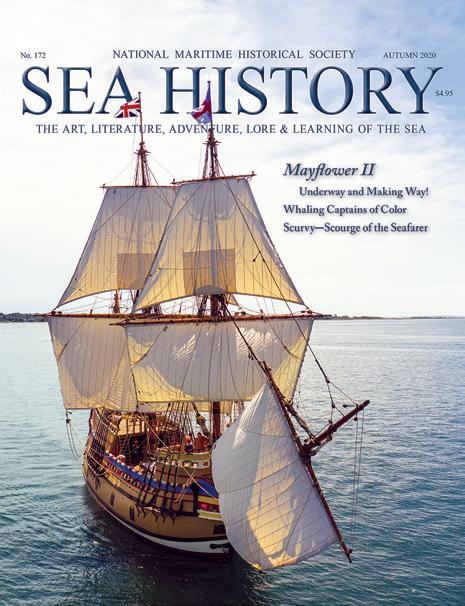
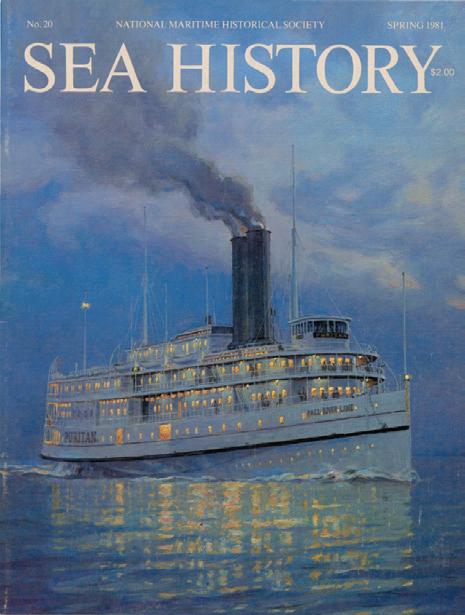
60 TH ANNIVERSARY MEMBERSHIP CAMPAIGN
Back in 1963 the price of membership was $10 and we are returning to this symbolic figure this year only and for new members only.
For that same $10, you can give up to 6 people (that’s 6 for the 6 decades) a gi membership…that’s $10 for all six, or for 1!
Our strength is our numbers and this campaign seeks to get our mission, Sea History, and our programming o ers out to as many people as we can.
Please take this opportunity to join us in strengthening NMHS your organization by ge ing the word out and building our membership. You will help us, and we o er up to 6 gi s you can give for the price of $10.
This special o er to members is for your US friends only and starts with the winter issue. Go to www.seahistory.org/anniversary, or mail us your list with a check.
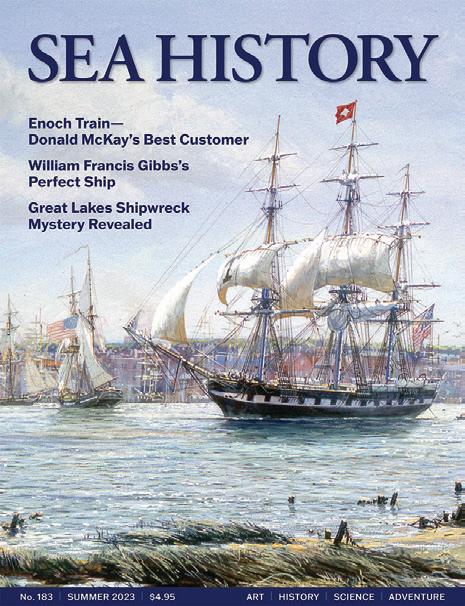
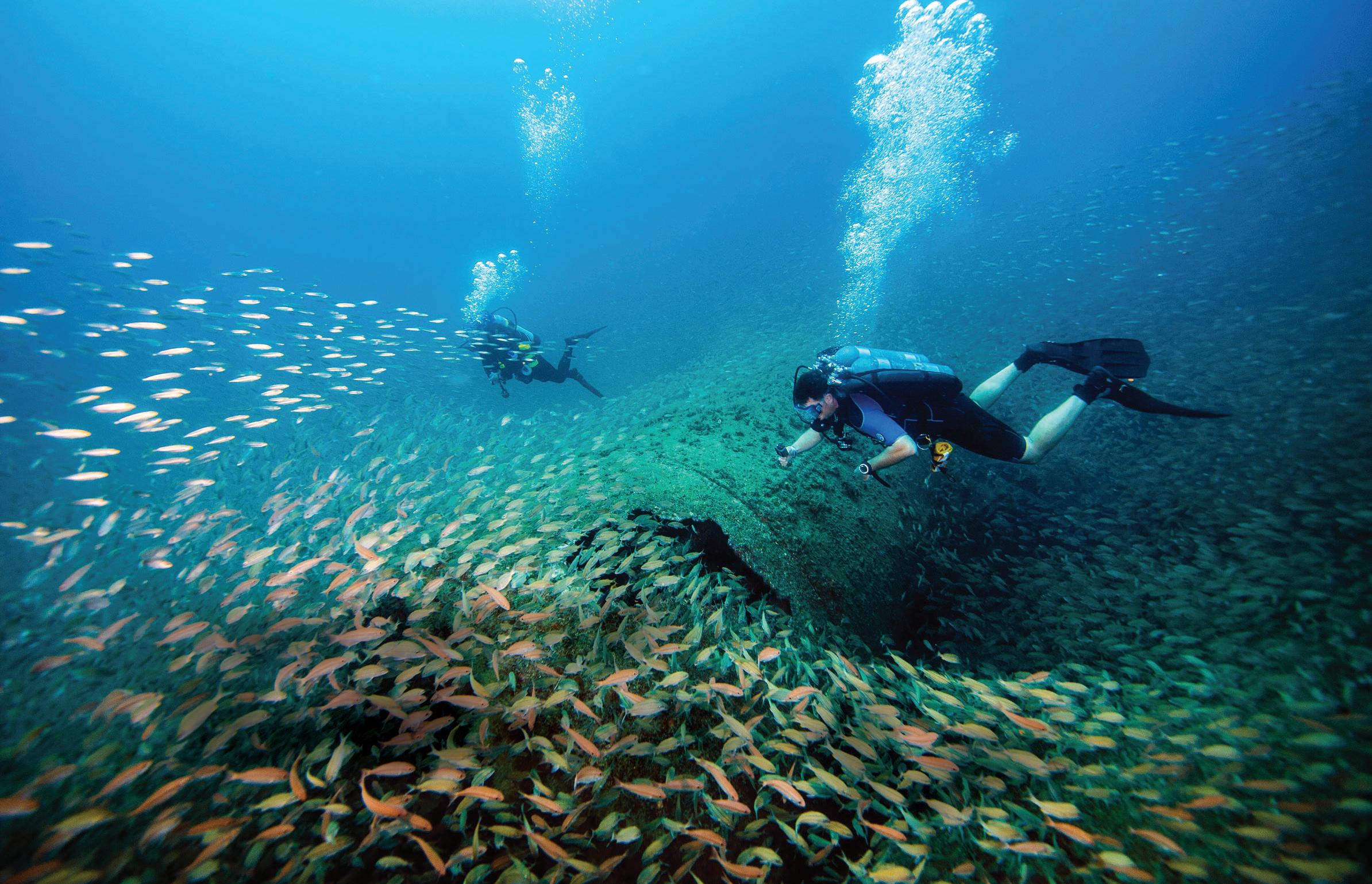
SeaHistory.org 19
It’s the Real McCoy! The Capture of Prohibition’s
Most Notorious Rumrunner
William “Bill” McCoy watched with a mixture of amusement and consternation as a whaleboat from Coast Guard Cutter Seneca pulled through the rough seas in the wake of his 90-foot schooner
 by CAPT Daniel A. Laliberte, USCG (Ret.)
by CAPT Daniel A. Laliberte, USCG (Ret.)
Tomoka (ex-Arethusa of Gloucester, Massachusetts). He had been toying with the Coast Guardsmen for the better part of an hour—since 1030 that morning, 24 November 1923, when the Seneca had rst ordered him to “heave
to for boarding.” While he had initially slowed his vessel to appear he was complying, as soon as the cutter’s boat was launched, he proceeded to adjust his speed to stay just beyond the reach of the struggling boat.
When the commanding o cer of the Seneca , Lieutenant Commander Philip F. Roach, nally reached the limit of his patience, he “called [his] guns’ crews to quarters, cast loose No. 1 gun, stood over to Tomoka, and directed the master to heave-to and permit his crew to board him.”
Staring into the muzzle of the cutter’s forward 3-inch/50-caliber deck gun, McCoy nally relented and steered his schooner’s head into the wind. McCoy felt uneasy as he waited for the eight-person boarding party to scramble over his gunnel, as he had 150 cases of Bacardi Rum—the tiny remnant of a load of more than 4,500 cases of whiskey he had delivered over the last four days—stored in his hold. Normally that would be enough justi cation for the Coast Guard to arrest him and seize his vessel for smuggling alcohol, but by his reckoning, he was about 6½ miles o the coast of New Jersey, well beyond the three-mile limit of US territorial waters. Since he had changed Arethusa’s registry to British to avoid US jurisdiction on the high seas, the Coast Guard would need proof that he had been in contact with a boat from shore to take law enforcement action under the National Prohibition Act.
20 SEA HISTORY 184 | AUTUMN 2023
COURTESY THE MARINERS’ MUSEUM AND PARK
The 1907 schooner Arethusa (later renamed Tomoka) underway. Bill McCoy purchased the fishing schooner to use her for rum-running during Prohibition.
When Prohibition went into e ect on 17 January 1920, McCoy was quick to see the opportunity it presented, knowing that demand for liquor would not evaporate just because the government had banned it. Concealed stockpiles, diversion of medicinal and industrial alcohol, and “moonshining” soon proved inadequate to satisfy the continued demand. Smuggling across the land borders with Canada and Mexico quickly took o ; however, getting the booze to the largest concentration of customers in coastal New York, New Jersey, and the southern New England states required additional risky and complex land transportation. Smugglers turned to the sea.
e Coast Guard’s East Coast Florida Patrol—a handful of former Navy submarine chasers—and a few outdated cutters on the Paci c coast began seizing rumrunners barely four months after the enactment of Prohibition. Seizures of numerous small vessels, carrying from a few dozen to around 400 cases of alcohol, quickly became so frequent that the Commandant of the US Coast Guard felt compelled to caution the commander of the Florida Patrol against neglecting his other missions to the exclusion of alcohol enforcement, while the Customs Service began encountering di culty nding spaces to hold the many vessels awaiting forfeiture hearings.
McCoy, a Florida-based boatbuilder by trade, found a safer and more lucrative solution. He purchased the shing schooner Henry L. Marshall for $15,000, modi ed her internal conguration to maximize storage of dry cargo rather than sh, and sailed her to Nassau. ere he re- agged his vessel under the Union Jack, purchased 1,500 cases of whiskey, and returned to the US East Coast to sell his rst load. In that single run, he cleared enough to recover the entire purchase price of his vessel. By the summer of 1920, McCoy was making regular runs from Nassau to points o the coast of New Jersey and New York and was making a lot of money doing it.
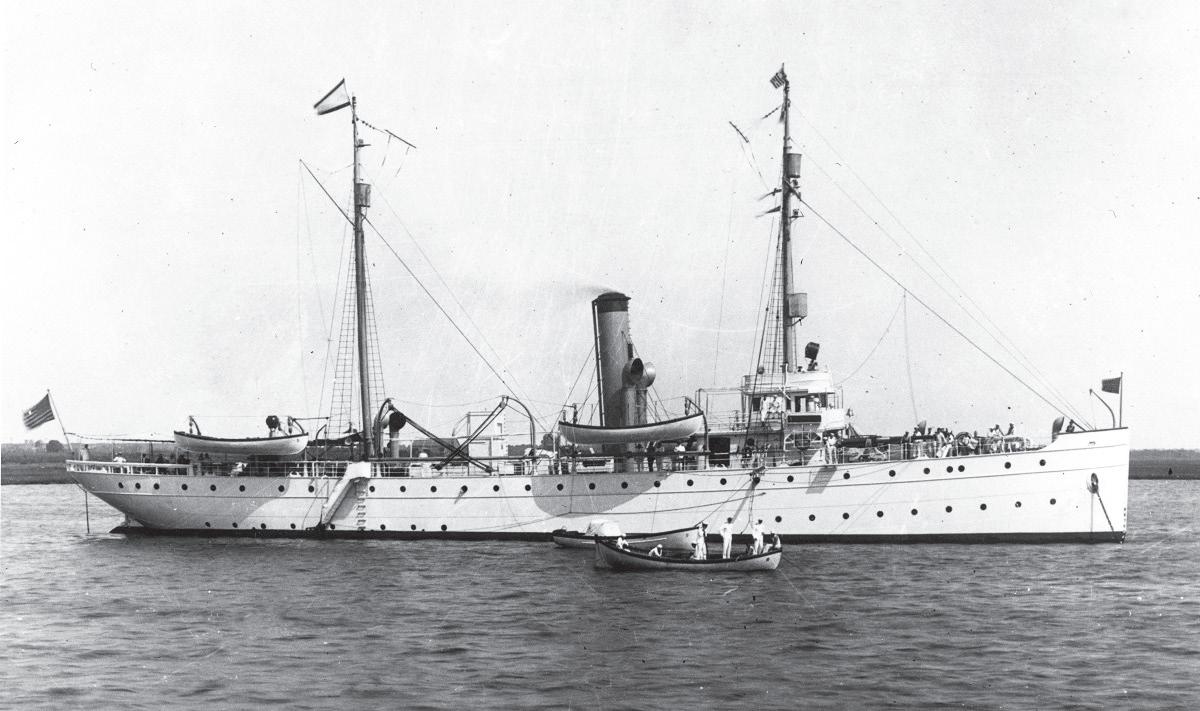

SeaHistory.org 21
LIBRARY OF CONGRESS
US COAST GUARD
US Coast Guard Cu er Seneca’s outdated 6-lb. rapid-fire deck guns were replaced with modern 3-inch/50-caliber gun mounts during an overhaul at the Washington Navy Yard in 1922. Despite having been designed and launched in 1908 for the destruction or recovery of floating derelicts, and for search-and-rescue under extreme sea conditions, Seneca proved to be an e ective law enforcement cu er during Prohibition. Inset photo circa 1908.
Even though he kept his activities quiet, other entrepreneurs caught on and copied his method. In the summer of 1921, newspapers began to report the presence of mysterious, unlit vessels hovering o the East Coast. ese sightings, of course, heralded the formation of “Rum Row.”
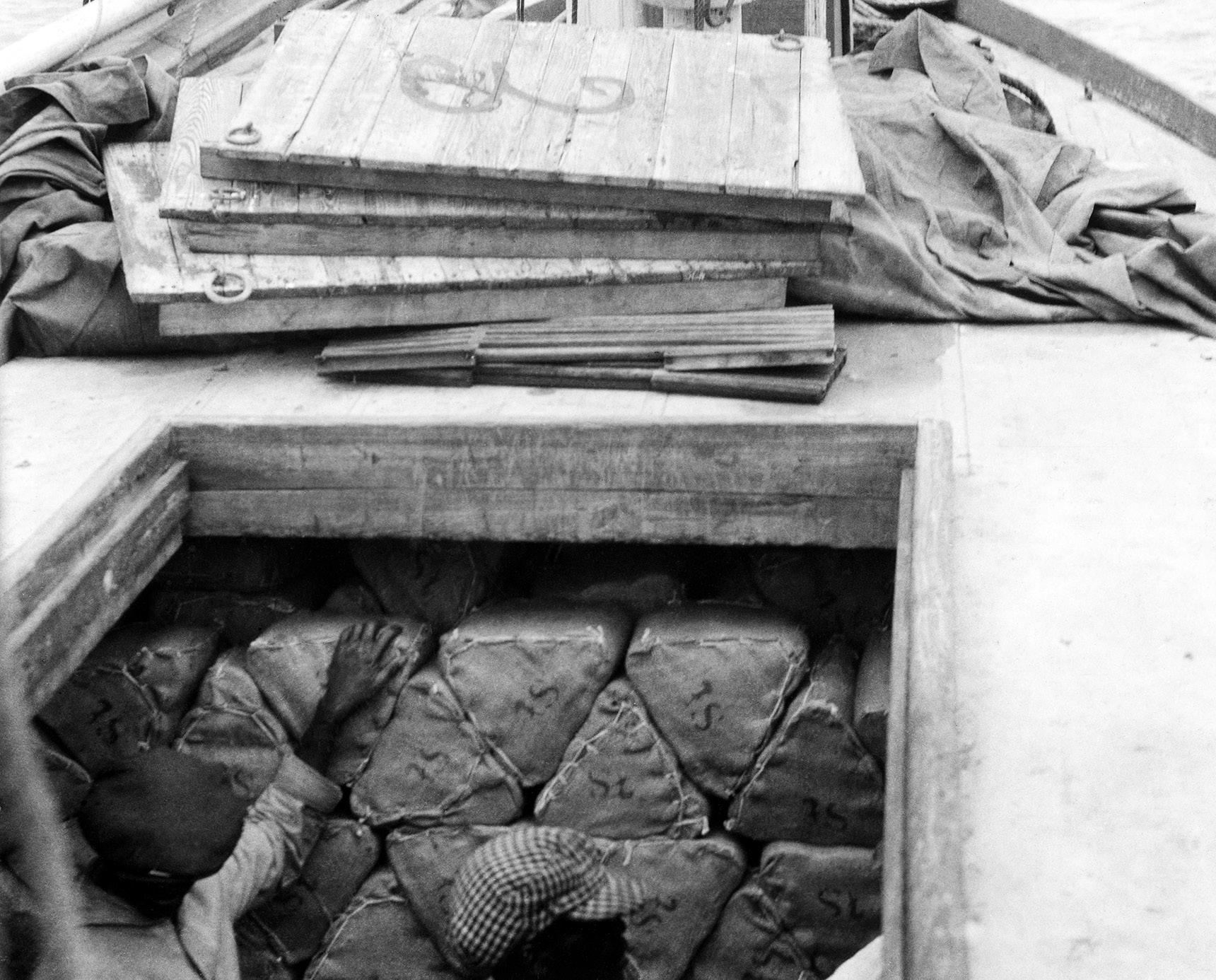
Far from the common misconception of a continuous line of vessels stretching the entire length of the Eastern Seaboard, Rum Row was actually several clusters of vessels anchored o of population centers such as New York, Boston, and Atlantic City. ere, the foreign- agged “motherships” would wait in safety for contact boats from shore to run out and purchase several hundred cases at a time. It was easy money for the motherships, with all of the risk assumed by the smaller boats making the nal sprint into the United States.
Rum Row would ourish for almost three years. Over that time, McCoy expanded his smuggling eet to

22 SEA HISTORY 184 | AUTUMN 2023
COURTESY THE MARINERS’ MUSEUM AND PARK COURTESY
PARK
THE MARINERS’ MUSEUM AND
(above) McCoy mostly hauled Rye, Irish, and Canadian whiskey, with smaller amounts of other liquor and wine. To save space in the hold, o entimes bo les were removed from their cases, wrapped in burlap, and stored as “hams,” as is seen in this photo of Tomoka’s forward hold.
(below) Booze being loaded aboard Tomoka in the Bahamas, 1923.
ve schooners—all British agged to avoid US jurisdiction. It was during a routine run that McCoy rst came to the government’s attention. Until August 1921, his schooners had stayed under the radar by following four basic rules: “Stay true to your contract; stay clear of the government’s notice; stay well o shore; and stay vigilant to avoid the Coast Guard.” On this particular trip, Carl Anderson—who had eeted up from rst mate to captain of the Henry L. Marshall after McCoy added the Arethusa to his otilla—sailed to a position o of Atlantic City with 1,500 cases of whiskey. en he promptly proceeded to break every one of McCoy’s prescriptions.

On 27 July, local newspapers began running articles announcing the Marshall ’s arrival o shore—with whiskey for sale. When a journalist came out by boat to verify the rumors, Anderson brazenly granted an interview in which he gave a comprehensive overview of maritime smuggling operations and
even detailed the speci c modus operandi and history of McCoy’s operations.
Despite the publicity, Anderson might still have gotten away with this run if he had stayed true to the terms of his contract and quickly o oaded his cargo. Instead, when new buyers o ered $60 a case instead of the previously negotiated $40, Anderson sti ed the original buyers and waited to work out delivery details with the new purchasers. is gave time for intelligence to reach the Coast Guard leadership in New York, which promptly dispatched the Seneca to investigate.
e hot, windless afternoon of 1 August 1921 found the Seneca steaming at its full speed of 11 knots towards a 90-foot, two-masted schooner anchored about three miles due north of its position. As the 204-foot, coal-burning cutter closed on the schooner, Commander Aaron L. Gamble—who would be relieved as captain by Roach the next year—noted that the schooner t the
description of the subject of the intelligence he had been investigating for the last two days. Although a British ag dangled listlessly from the vessel’s mainmast, canvas covers draped over the vessel’s name and homeport gave Gamble the justi cation he needed to send over a boarding party to establish her identity.
Once aboard, Gamble’s lieutenant discovered the schooner’s entire crew to be, in seaman’s terms, “three sheets to the wind.” e only member of the ship’s company able to speak coherently, the supercargo (the owner’s representative responsible for the management, buying and selling of cargo) reported that the master and mate had departed earlier aboard a boat from nearby Atlantic City. He insisted that the British ag immunized them from Coast Guard scrutiny, since they were outside the US territorial sea. Gamble, however, continued the boarding under an old 1799 law, “An Act to Regulate the Collection of Duties on Imports
SeaHistory.org 23
COURTESY THE MARINERS’ MUSEUM AND PARK
Bill McCoy aboard his schooner. McCoy became somewhat of a folk hero during Prohibition.
and Tonnage,” which allowed Coast Guard o cers to “go onboard ships or vessels…within four leagues of the coast to examine manifests and cargoes to prevent smuggling.”
e search turned up several incriminating documents: ownership papers revealing the vessel to be the Henry L. Marshall, formerly of Gloucester, Massachusetts, and currently of Nassau, British West Indies, and multiple, con icting clearance papers for the same voyage—one for transporting 1,500 cases of whiskey to Halifax, and another for transiting in ballast to Gloucester. Notably, no cargo manifest was located—which was itself grounds for seizure. Along with 1,250 cases of scotch found in the Marshall ’s hold, Gamble had overwhelming evidence to seize the vessel and arrest her crew for suspicion of smuggling alcohol.

Within three days, further investigation by agents of the Prohibition Bureau resulted in the additional arrests ashore of the Marshall ’s master and
mate, and the owner of a local saloon in Atlantic City, where 250 cases of illegal whiskey matching that aboard the Marshall had been found.
While this event was groundbreaking for the Coast Guard—the rst seizure for alcohol smuggling of a foreign vessel outside the US territorial sea—for McCoy it was even more consequential. Additional papers found aboard the Marshall revealed that the transfer of his vessel’s ag from US to Great Britain was a sham designed to evade US jurisdiction. Even more damning was a set of written instructions for the smuggling venture from him to Captain Anderson.
A warrant was issued for McCoy’s arrest, but over the next two years his fame only grew as he played cat-andmouse with the cutters Manhattan, Seminole, and Seneca. McCoy became a folk hero—referred to in the press by monikers such as “Rummie Bill” and “King of the Rumrunners.” e origin of the well-known expression, “It’s the
real McCoy,” is still debated. It became a popular nickname for Bill McCoy’s product because he was scrupulous in his purchasing and only dealt in name brands with original labels—not watered-down concoctions that were rebottled and relabeled. Buyers could count on his product being the genuine article, as labeled.
McCoy was becoming an embarrassment to the US government in its e orts to keep liquor out of the country. Despite being the most well-known and hotly pursued rumrunner and despite the capture of several of his vessels, McCoy somehow seemed to stay just beyond law enforcement’s grasp. But, as the sun was setting on 20 November 1923 and the Tomoka was just starting to o oad cases of whiskey to a contact boat from nearby New Jersey, a sharpeyed lookout aboard the schooner shouted warning of the Seneca hull down on the horizon. McCoy immediately broke o operations. e contact boat raced o in one direction, while
24 SEA HISTORY 184 | AUTUMN 2023
COURTESY THE MARINERS’ MUSEUM AND PARK
The schooner crew transferring cases of whiskey from Tomoka to a seaplane.
McCoy ran south. Despite the inauspicious start, his luck seemed to hold. Seneca faded into the gathering darkness, and over the next four days McCoy would successfully sell all 4,500 cases of whiskey—worth nearly $300,000 (more than $5 million in today’s dollars). Although the whiskey was already gone by the fourth night, he still had 150 cases of rum in the hold. A buyer interested in the rum requested that McCoy delay his departure until morning when he would return in a ski for the remaining booze. Despite feeling that he might be pressing his luck, McCoy deemed the risk low, especially since the Seneca had made no further appearances over the previous days.
As luck would have it, morning brought the approach not of the ski , but of the Seneca. By the time the cutter’s eight-man boarding party, led by Lieutenant Louis W. Perkins, nally scrambled aboard the Tomoka, tempers were already hot due to McCoy’s antics in stringing out the boarding process. Di ering expectations about what would happen during the boarding would raise them to boiling.
McCoy expected a few perfunctory questions and examination of his ship’s papers, perhaps followed by some good-natured taunting of Lieutenant Perkins as he departed after establishing his vessel’s identity. After all, Tomoka as she appeared on the rolls in Nassau,
was foreign- agged and outside of the three-mile limit, and, despite the rum in her hold, no contact boat was nearby. What McCoy did not realize was that the Department of Justice had directed the Coast Guard to “seize the Tomoka and her cargo of liquors anywhere within the 12-mile limit and arrest the crew. Be sure that Wm. F. McCoy does not get away.”
Accordingly, after establishing the identities of the notorious McCoy and his vessel, Perkins informed Seneca that everything was all right and that he would follow the cutter aboard Tomoka to the Ambrose Channel lightship at the entrance to New York Harbor. As Seneca departed and headed north,
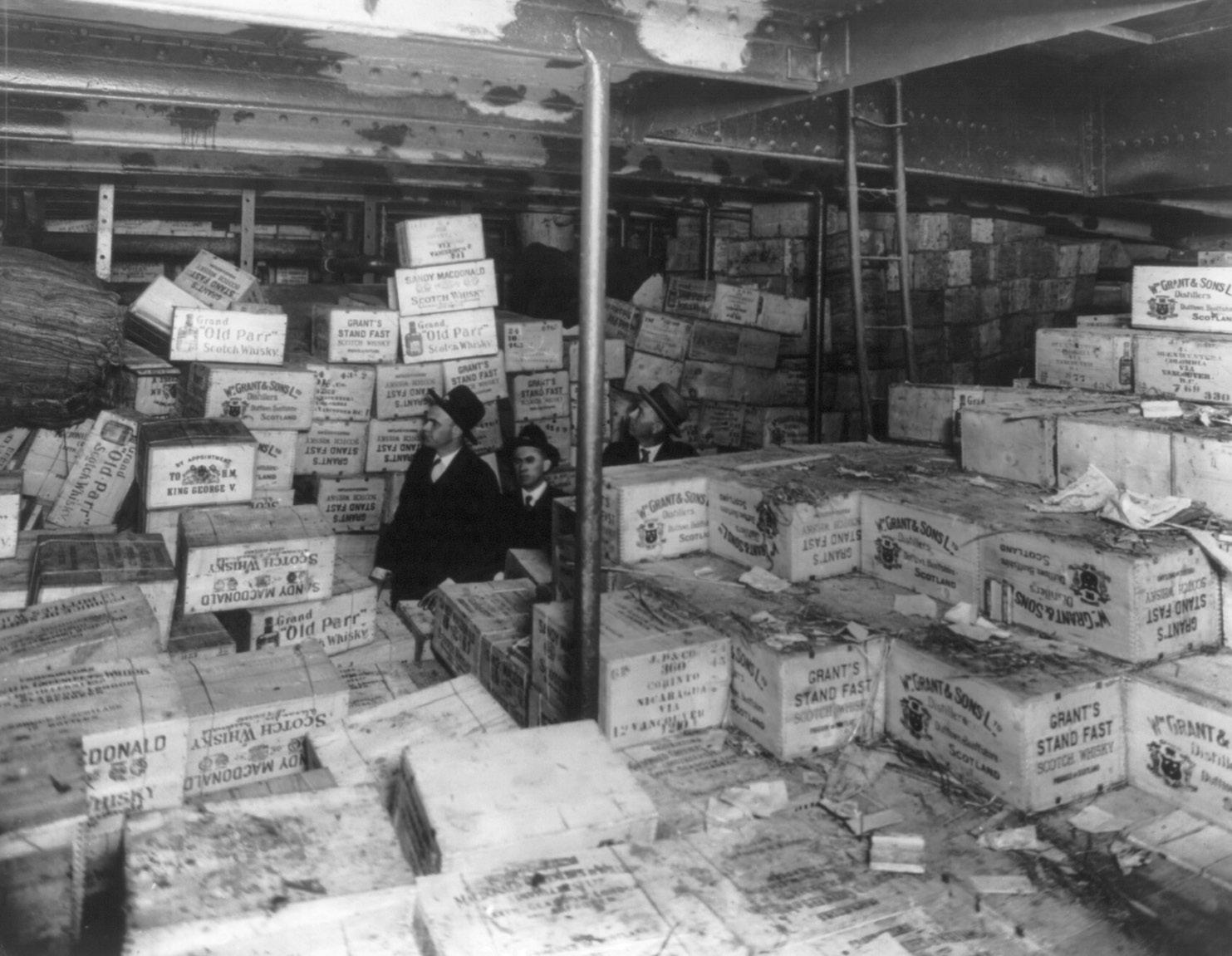
SeaHistory.org 25
OF
Prohibition agents amid cases of whiskey in the hold of a ship that was caught by USCGC Seneca in 1924.
LIBRARY
CONGRESS
Perkins then informed McCoy that he was taking control of the vessel and bringing her to New York for further investigation.
McCoy sco ed and informed Perkins that he and his boarding party were instead coming for a ride to Nassau. Rather than heading north, Tomoka proceeded to the east. In response, the Coast Guardsmen drew their sidearms, but McCoy’s six-man crew in turn brandished an assortment of pistols and ri es and trained a mounted World War I-surplus .30 caliber machine gun on them. Tense negotiations followed, after which Perkins and his party were allowed to depart aboard their whaleboat.
While Seneca’ s Captain Roach paused to recover Perkins, McCoy red up his auxiliary engine and bent on more sail. A gale was approaching, and McCoy gambled that if he could increase his half-mile lead just a bit further, he just might be able to lose the Seneca in the approaching rain. McCoy did his best to foul the Seneca’ s eld of re as he ran, keeping himself in range of other vessels passing in the distance, but the deteriorating sea state favored the Coast Guard vessel. Although the Seneca had a top speed of only around 11 knots, it had been designed and launched in 1908 to conduct searchand-rescue operations under extreme sea conditions and to recover or destroy the many oating derelicts that infested the East Coast’s shipping lanes in this era. Within an hour, Seneca had overhauled McCoy and enjoyed a clear eld of re for her deck gun.
After receiving a warning shot across his bow, shots both ahead and astern of him, and a fourth round that landed only about ten feet o the Tomoka’ s beam—splashing water on his deck—McCoy nally surrendered. It had taken more than two years, but the Coast Guard had nally nabbed McCoy and the elusive schooner.
e case against McCoy would drag through the courts for nearly two years, but it eventually resulted in a conviction. After serving a minimal sentence of only nine months, upon his release McCoy found a drastically changed smuggling environment. A dramatically expanded Coast Guard had dispersed Rum Row. Faced with an expanded and integrated force of major cutters, patrol boats, and aircraft, smugglers had been forced to change tactics. Individual motherships—rather than clusters of vessels— had been pushed more than 50 miles o shore, where they met contact boats speci cally built for increased range, speed, and stealth. Additionally, freighters using false identities were increasingly used to sneak cargoes of spirits directly into port. Perhaps most importantly to McCoy, organized crime had mostly taken over smuggling, and individual entrepreneurs
like himself had been forced out or forced to work for the mob.
Faced with these changes, and after having smuggled hundreds of thousands of cases of liquor to East Coast buyers, McCoy declined to return to the game. While Prohibition would continue until repeal in 1933, no smuggler would ever match McCoy’s exploits or assume his title of “King of the Rumrunners.”
CAPT Daniel Laliberte, USCG (Ret.), served for more than thirty years in the US Coast Guard, during which time he participated in or provided intelligence support to the interdiction and repatriation of hundreds of undocumented Haitian migrants, and the seizure of numerous drug smuggling vessels and the arrest of their crews. He writes on historical topics involving the Revenue Marine Service and Coast Guard.
ShipIndex.org Research Tip:
To narrow a Google search, use the “AROUND(x)” operator, with ‘x’ representing the number of words. For example: “constellation AROUND(5) sloop-of-war”. For more research ideas, visit: https://shipindex.org/research help
Over 150,000 citations are completely free to search
Use Coupon Code “NMHS” for a special discount to access the full database.
With ShipIndex.org you can find vessel images, ship histories, passenger and crew lists, vessel data, and much more. Search over 1000 sources including books, magazines, databases, and websites, all at once.


26 SEA HISTORY 184 | AUTUMN 2023
S h i p i n d e x . o r g p u t s o v e r 3 . 2 m i l l i o n c i t a t i o n s f r o m o v e r 1 0 0 0 r e s o u r c e s a t y o u r f i n g e r t i p s
Celebrate our maritime heritage this holiday season with NMHS greeting cards.
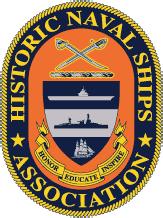
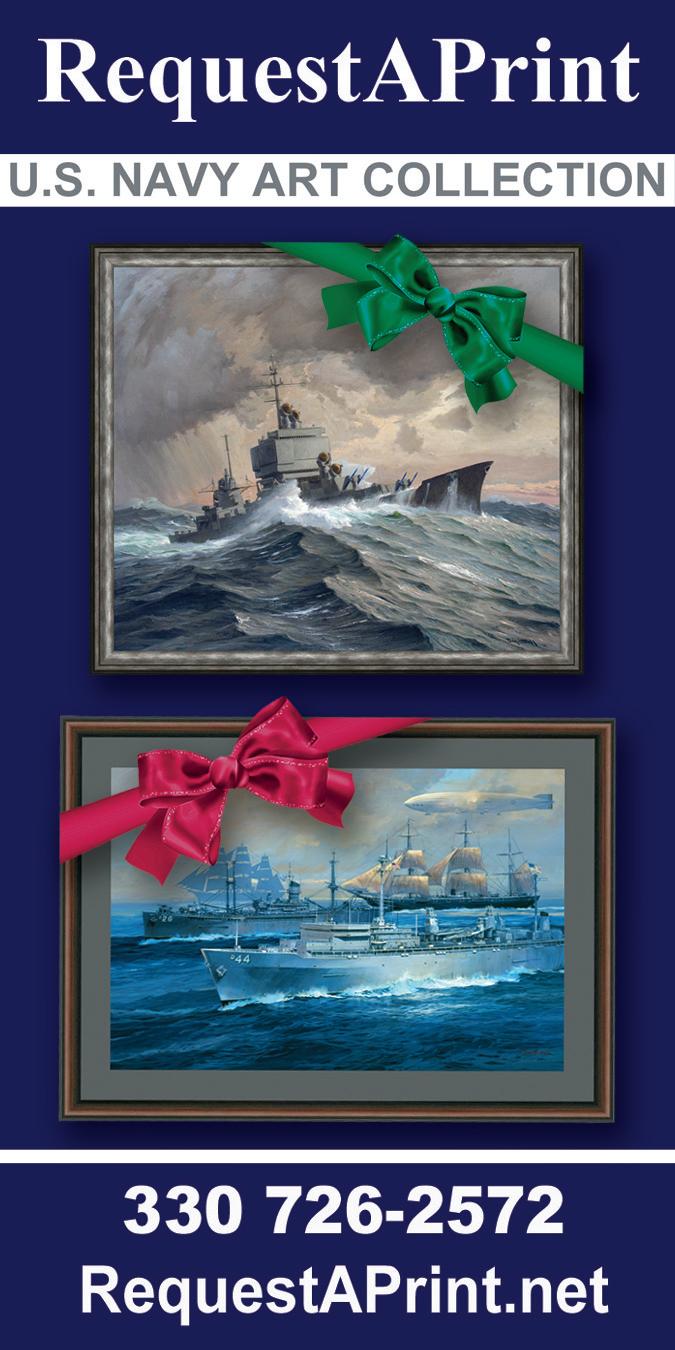
"Lulu W. Eppes at Ellsworth, Maine" by Victor Mays, F/ASMA Watercolor, 11 5/8" x 19 1/2"
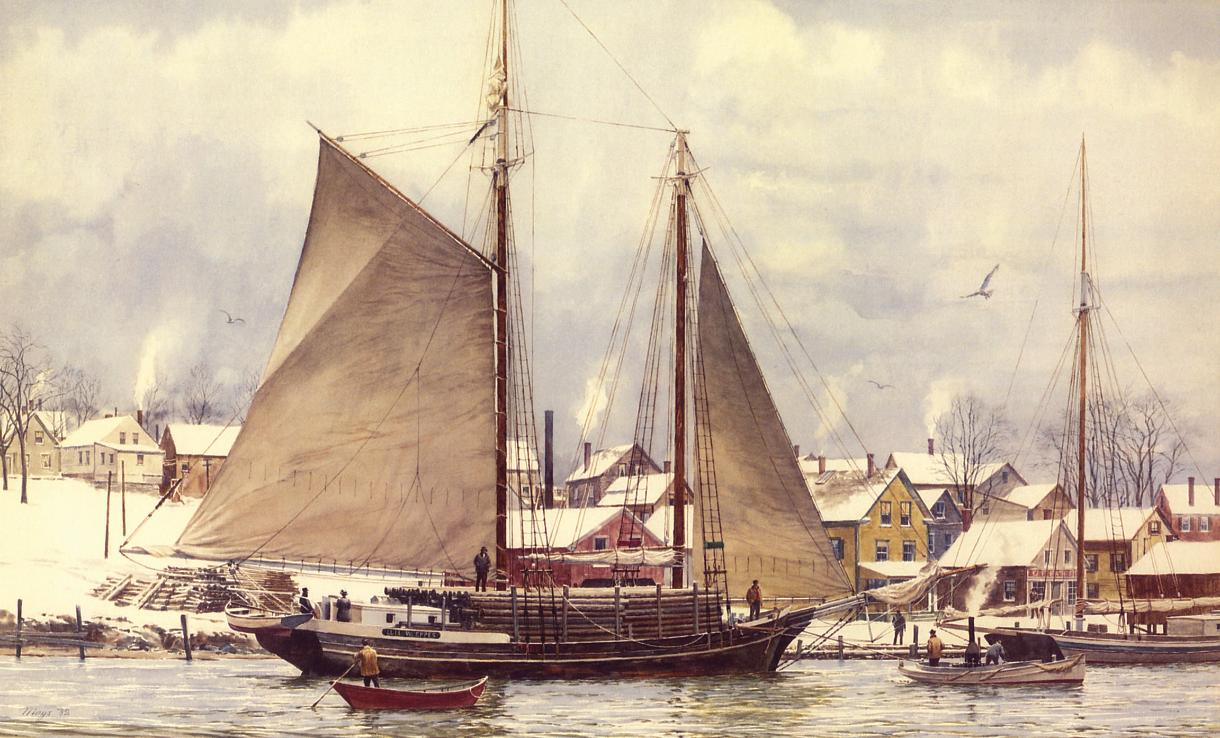
Greeting reads: "May Your Days Be Merry and Bright - Warm Wishes this Holiday Season and Smooth Sailing in the New Year!"
Set of ten 5" x 7" cards: $14.95. Add $5.50 s/h for one set, and $2.50 for each additional set. NYS residents add sales tax. Please indicate your choice of holiday or blank note cards. Call for priority or international shipping charges.

TO ORDER, CALL 1-800-221-NMHS (6647), ext. 0, or online at seahistory.org/product-category/gifts/.
Handmade in the U.S.A. by Third Generation Master Craftsman Bob Fuller.
SOUTH SHORE BOATWORKS
CARVER, M A • 781-248-6446
WWW.SOUTHSHOREBOATWORKS.COM
SOUTH SHORE BOATWORKS X, www.southshoreboatworks.com
2.25”x 2” South Shore Boatworks #SH149 Revised
Beaufort Naval Armorers
Beaufort Naval Armorers
Beaufort Naval Armorers
CANNONS
CANNONS
CANNONS

Finely Crafted Marine Grade Working Replicas
Sit in the wardroom of a mighty battleship, touch a powerful torpedo on a submarine, or walk the deck of an aircraft carrier and stand where naval aviators have flown off into history. It’s all waiting for you when you visit one of the 175 ships of the Historic Naval Ships Association fleet.
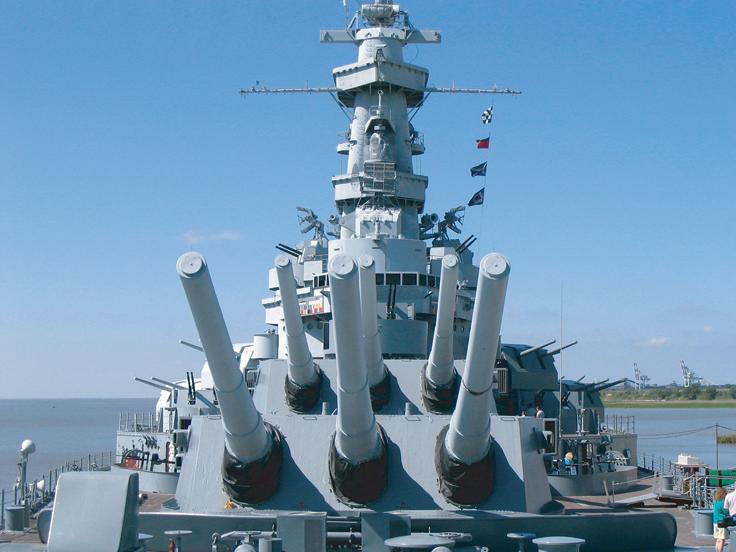
Finely Crafted Marine Grade Working Replicas
Finely Crafted Marine Grade Working Replicas
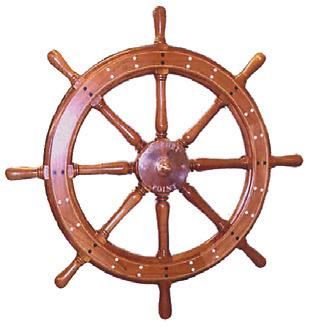
Morehead City, NC USA 252-726-5470
Morehead City, NC USA 252-726-5470
Morehead City, NC USA 252-726-5470
www.bircherinc.com
www.bircherinc.com
www.bircherinc.com

For information on all our ships and museums, see the HNSA website or visit us on Facebook.

SeaHistory.org 27
O���� ��� ��� O������ D������� THE HISTORIC NAVAL SHIPS ASSOCIATION THE FLEET IS IN.
www.HNSA.org
CM MY CY CMY K 2.25x4.5_HNSA_FleetCOL#1085.pdf 6/5/12 10:47:40
WOODEN SHIP'S WHEELS
TRADITIONAL
The Lexington Disaster on Long Island Sound
 by Bill Bleyer
by Bill Bleyer
he steamboat Lexington left its Manhattan pier on the bitterly cold afternoon of 13 January 1840 bound for Stonington, Connecticut. It would never arrive. Before the night was over, all but four of the up to 150 people on board would be dead in the worst maritime disaster in the history of Long Island (as most people now think of it—Nassau and Su olk counties). Only a handful of maritime historians and scuba divers, as well as lithograph collectors, have ever heard of the re that consumed and sank the steamboat launched by Cornelius Vanderbilt in 1835, but at the time, the disaster was headline news that captivated and in amed the public.
Steamboat navigation on Long Island Sound began in 1815, and in 1829 35-year-old Cornelius Vanderbilt established his own steamboat company. After initially focusing operations in New York Harbor and on the Hudson River, in 1834 he shifted his attention to the growing market between ports on Long Island Sound.
Vanderbilt, who designed his own steamboats, began construction of a vessel with a unique boxlike latticeworktype hull design rather than the traditional plank on frame. He designed it with an angled deck that was higher amidships than at the bow and stern, based on similar plans he had seen for for a bridge ashore. It would be propelled by a single huge engine that could perform the work of two conventional engines. e interior was lavish and trimmed with teak railings, paneling, and stairways. Vanderbilt decided to name his revolutionary steamboat “Lexington,” after the place where a revolution of a di erent sort had begun.
In building the Lexington, Vanderbilt placed a high priority on safety, which provided a marketing advantage in an age when boiler explosions, res, and other steamboat mishaps were common. e smokestack was encased, as it ran up through multiple decks, and the vessel was equipped with a portable “ re engine” pump with hoses. Two lifeboats were placed near the stern, with a third on the promenade deck.
By the time Lexington was launched into the East River in April 1835, Vanderbilt had spent $75,000—the equivalent of about $2.5 million today—on its construction, but it proved to be an excellent investment.
e steamboat was placed into service on 1 June 1835, with a crew of about 35. On its rst trip, with streamers ying, the vessel covered the 210 miles between New York City and
Providence, Rhode Island, at an average record-setting speed of about 15 knots.
e twelve-hour trip awed travelers, who regularly spent eighteen hours or more on the route.
“FASTEST BOAT IN THE WORLD,” announced the Journal of Commerce
In 1838 Vanderbilt approached his major competitor, New Jersey Steam Navigation and Transportation Company, and threatened that if it did not buy the Lexington, which he now considered too small to operate pro tably, he would initiate a fare war. e company agreed to pay $60,000 for the ship and invested another $12,000 to refurbish it, convert its steam engine from burning wood for fuel to coal, and add blowers to force more air into the reboxes to increase its speed.
Before the ship got underway on 13 January 1840, the crew loaded al-
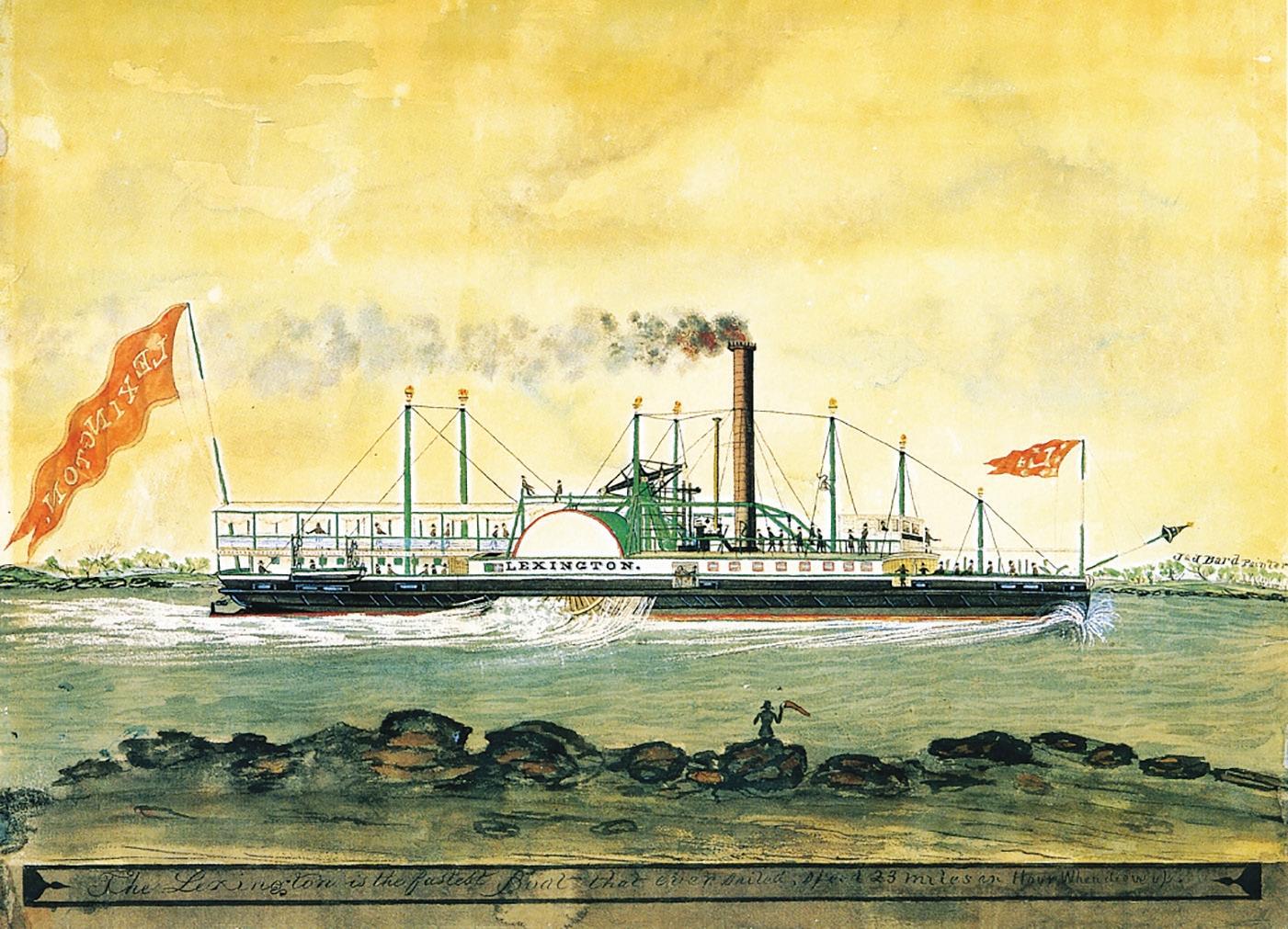
28 SEA HISTORY 184 | AUTUMN 2023
The paddlewheel steamboat Lexington, launched in 1835, began regular service between New York and Providence and was considered the fastest and most luxurious steamer on that run.
WATERCOLOR ON PAPER BY JAMES AND JOHN BARD, P.D. VIA WIKIMEDIA COMMONS
most 150 bales of cotton on the main deck, a cargo that would prove to be a godsend, but ultimately highly controversial. e air temperature was a mere four degrees, and sheets of ice were oating on the Sound.
A crew of 34 ran the boat and took care of passengers, who hailed from as far away as England and included two prominent comedy actors from Boston, Charles Eberle and Henry Finn; Charles Follen, a professor of German literature at Harvard College and a minister; new bride Mary Russell, who had gotten married the day before in New York and was returning to New England
without her new spouse to break the news to her parents. ree members of the family of recently deceased Henry A. Winslow, including his widow, Alice, were accompanying his co n, which was stowed in the hold for burial in Providence. Many were traveling for business. Several ship captains were aboard traveling as passengers, including 24-year-old Chester Hillard, who would play a critical role in the events that followed.
Providence resident Stephen Manchester, the pilot, was navigating on the bridge when the re was discovered about 7:30 pm north of Huntington,
New York. One of three surviving crew members, Manchester testi ed at the inquest a week after the disaster: “Someone came to the wheelhouse door and told me the boat was on re. My rst movement was to step out of the wheelhouse and look aft; saw the upper deck burning all around the smoke pipe.”
Lexington’ s captain, George Child, made his way to the wheelhouse as the emergency was unfolding and joined Manchester, who was directing the helmsman to steer for the nearest point of land—Eatons Neck on Long Island, which he estimated was 20 minutes away at their cruising speed of 11 knots.
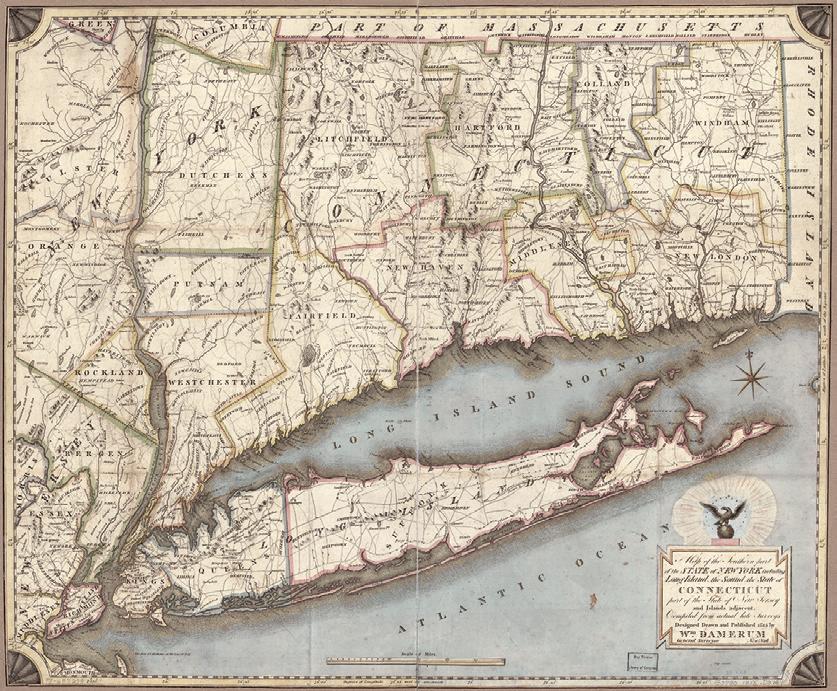
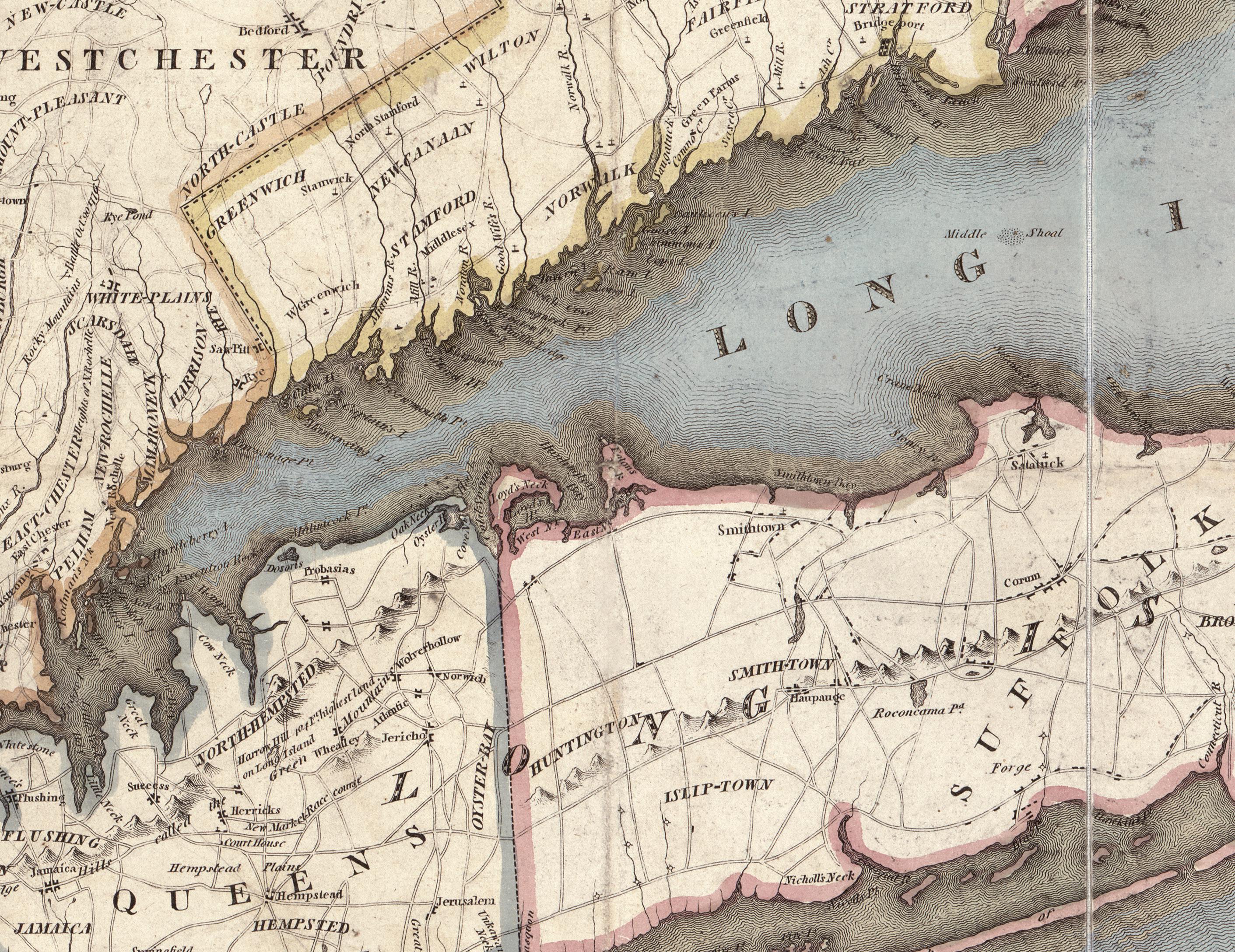
SeaHistory.org 29
DAVID RUMSEY MAP COLLECTION
Stephen Manchester, serving as the pilot onboard Lexington when the fire broke out, a empted to steer for the closest point of land Eatons Neck on Long Island. With the flames visible from both shores, the captain of a sloop out of Southport, Connecticut, tried to get underway to assist but was, at first, blocked in by ice choking the harbor.
Eaton’s Neck
Southport
“We had not yet headed to the land, when something gave way, which I believe was the tiller rope,” he said. e Lexington had metal steering rods running under the top promenade deck, but the rods were connected on both ends by rawhide ropes, which apparently had burned and parted.
e crew tried to start the re pump, while others began using buckets to throw water on the blaze. One end of the rehose was in the re and unusable, and many of the buckets that were hung above the engine were out of reach because of the ames. To make matters worse, the engineering crew was forced away from the steam engine by the re and could not release the pressure, so the boat plowed ahead at cruising speed until the steam dissipated after about 15 minutes.
Even though the steamboat was still making way, Manchester, Captain Child, and the rest of the crew, assisted by passengers, tried to launch the three lifeboats. But all three boats were swamped and lost because of the forward motion. e passengers and crew who had been trying to launch the boats either drowned or died from exposure in the water.
e towering ames from the burning steamship were visible from the shorelines of Long Island and Connecticut. Men on both shores, including most importantly Captain Oliver Meeker of the sloop Merchant in Southport, Connecticut, tried to head out to assist, but were blocked by ice choking their harbors. Manchester, who was on the foredeck with about 30 passengers and crew, testi ed that they “took the ag-
sta s and parts of the bulwarks and made a raft,” but it proved unmanageable when launched.
Meanwhile, passenger Chester Hillard, after watching the unsuccessful attempts to launch the lifeboats, urged the people around him amidships to stay on board until the vessel stopped moving. Hillard testi ed at the inquest that “I then recommended to the few deck hands and passengers who remained, to throw the cotton overboard…. ere were perhaps ten or a dozen bales thrown overboard.” Fireman Charles Smith testi ed at the inquest that after attempting—unsuccessfully—to operate the re pump, he went over the side and climbed up on a oating piece of a paddlewheel guard.
Second Mate David Crowley said he threw pails of water on the re before jumping overboard and climbing aboard a cotton bale with reman Benjamin Cox. “ is was just 8 o’clock by my watch, which I took out and looked at it. It was so cold as to make it necessary for me to exert myself to keep warm, which I did by whipping my hands and arms around my body; about 4 o’clock the bale capsized.” e two men were able to climb back aboard the cotton bale, but Cox had become insensible from the cold and fell o the bale— never to be seen again.
About 30 people remained on the bow with pilot Manchester. He became convinced near midnight that the steamboat could not stay a oat much longer, and subsequently went over the side and shared otation on a cotton bale with passenger Patrick McKenna. “I encouraged him and told him to thrash his hands, which he did for a spell, but soon gave up pretty much,” Manchester said. “When he died, he fell back on the bale and the rst wave that came pushed him o it.”
On Tuesday morning as the tide rose, Captain Meeker was able to get the Merchant out of Southport Harbor
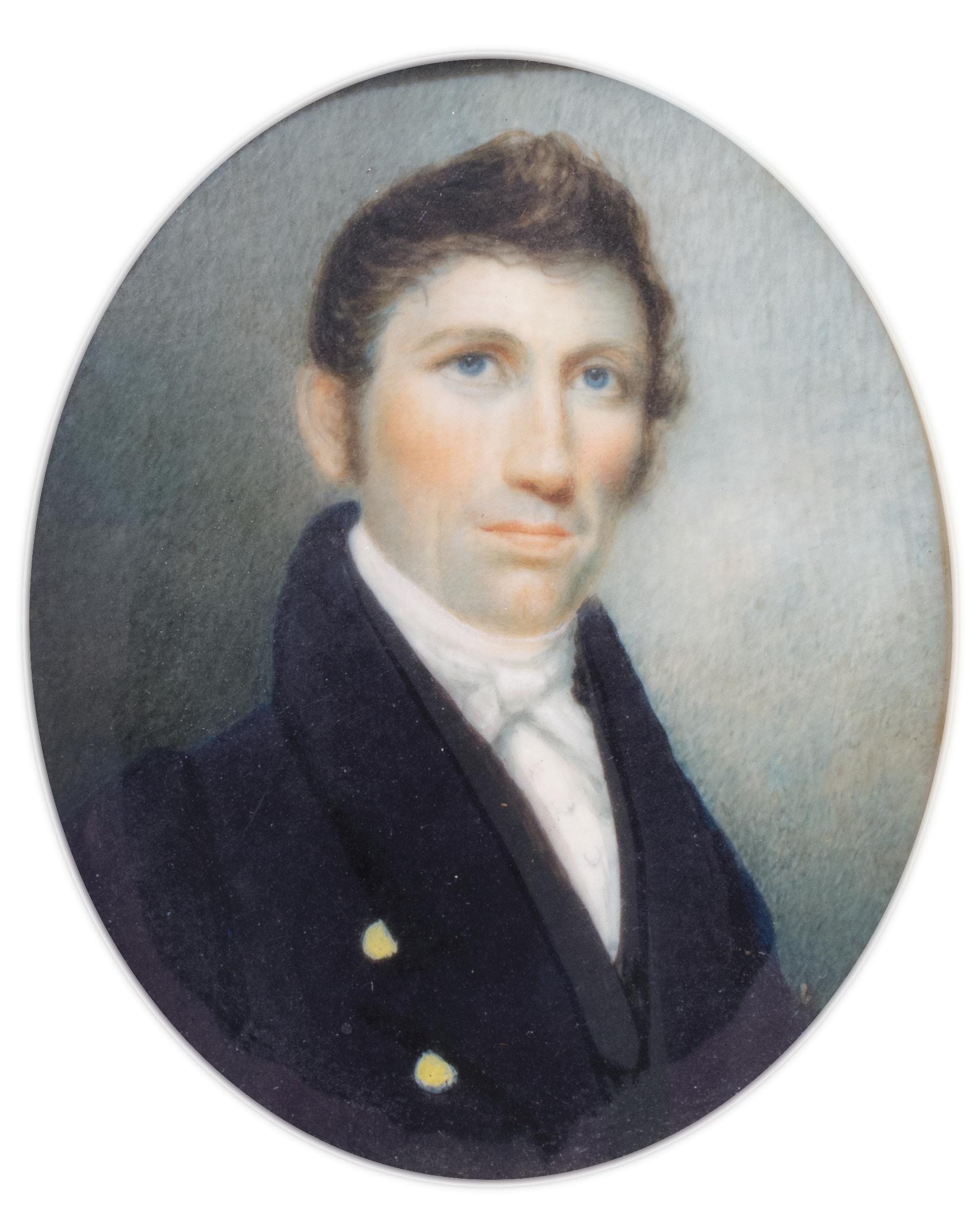
30 SEA HISTORY 184 | AUTUMN 2023
Lexington’s captain, George Child.
CONNECTICUT HISTORICAL SOCIETY
and rescued Hillard around 11 am, and then pilot Manchester from a cotton bale and reman Smith around 2 pm.
By far the most remarkable survival tale was that of Second Mate David Crowley. It was not until 9 pm Wednesday that he drifted ashore along the ice built up on the Long Island side near Riverhead, nearly fty miles from where he had abandoned ship 48 hours earlier. Crowley crawled over the accumulated ice along the beach and then stumbled three-quarters of a mile to the house of Matthias and Mary Hutchinson, where he knocked on the door before passing out. e couple and their son treated the survivor’s frostbitten hands and feet. “ e rst request that Mr. Crowley made the next day was that the bale of cotton might be secured, as a souvenir of the imminent perils for which he had passed,” Mary Hutchinson wrote later. “ is was done.”
Nine months later, when Crowley was nally healthy enough to return home to Providence, he took his cotton bale with him. He kept it until late in the Civil War, when the price of cotton soared, and he sold it, reportedly to be made into uniforms for Union soldiers.
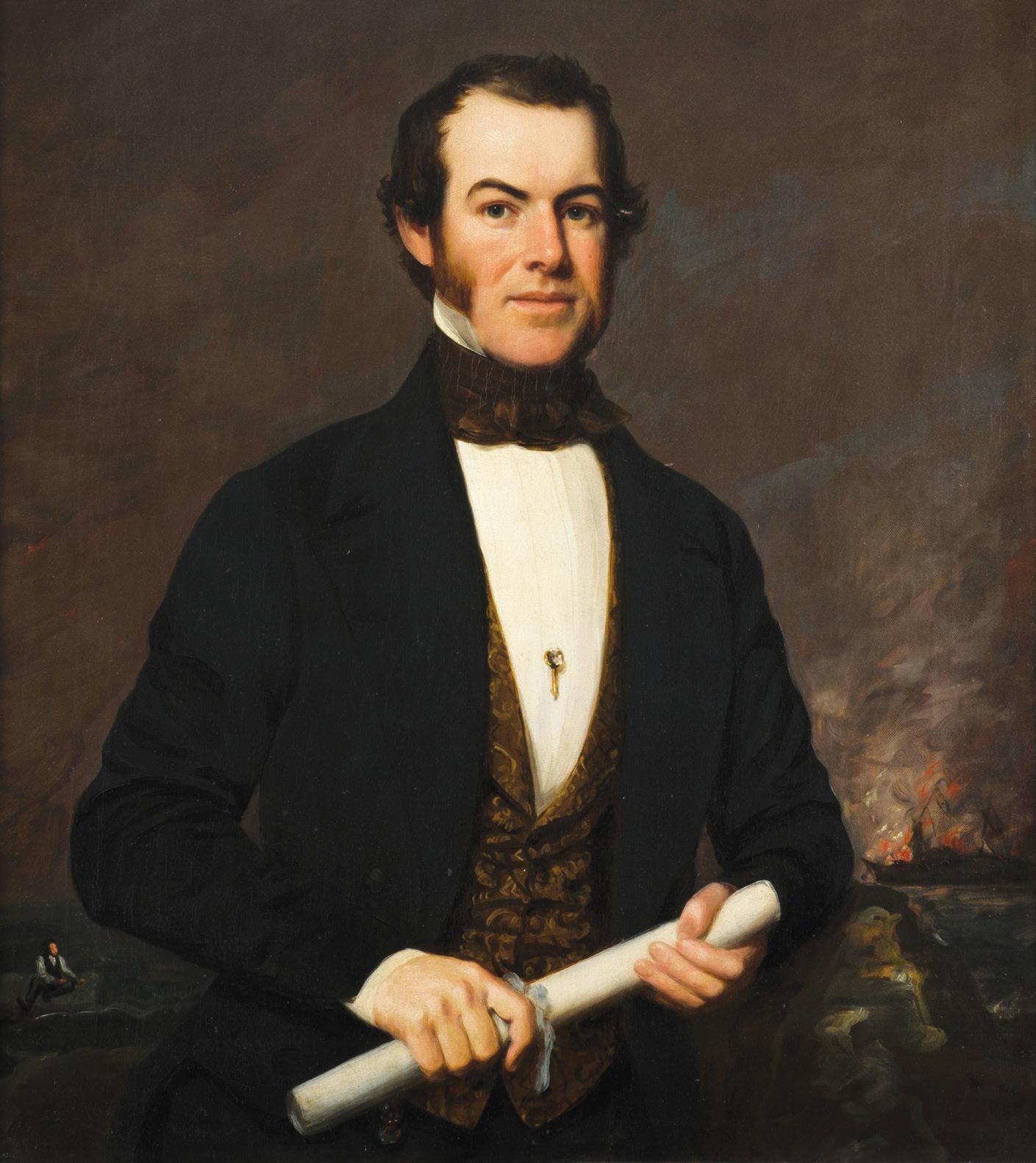
e three crewmembers who survived each eventually went back to work
(top right) The only passenger to survive was Captain Chester Hillard of Norwich, Connecticut, who clung to a co on bale floating in the frigid January water for more than 15 hours before being rescued by Captain Oliver Meeker aboard the sloop Merchant out of Southport, Connecticut. This illustration was printed in Steamboat Disasters and Railroad Accidents in the United States by S. A. Howland in 1846.
(right) Second Mate David Crowley also survived by clinging to a co on bale—for 48 hours! It took him more than nine months to recover from his injuries, but in time he went back to sea and became a steamboat captain.
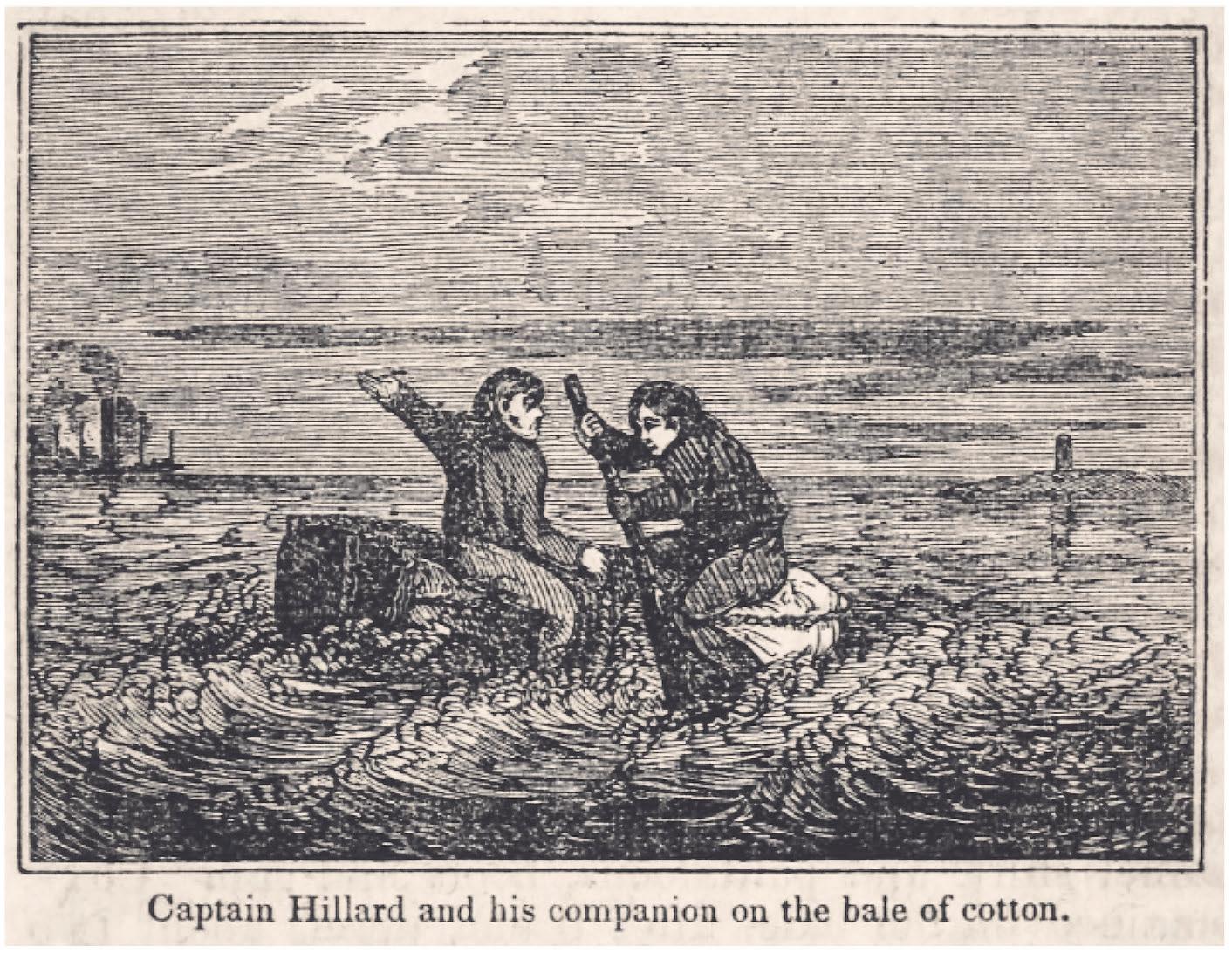
SeaHistory.org 31
RHODE ISLAND HISTORICAL SOCIETY CONNECTICUTHISTORY.ORG, P.D.
aboard ships, with Manchester and Crowley becoming captains and Smith a chief engineer.
Newspapers in Bridgeport, Connecticut, near where the drama played out and near where three of the survivors were taken, apparently were the rst to report on the re the following day, and the story appeared in extra editions of the New York City daily newspapers the day after that. From there the news spread across the country. e media coverage created a furor. Widespread condemnation of the steamboat company along with the crew led to demands that the board of directors be indicted.
If people in 1840 and the years following had a vivid sense of what the Lexington looked like ablaze, it was
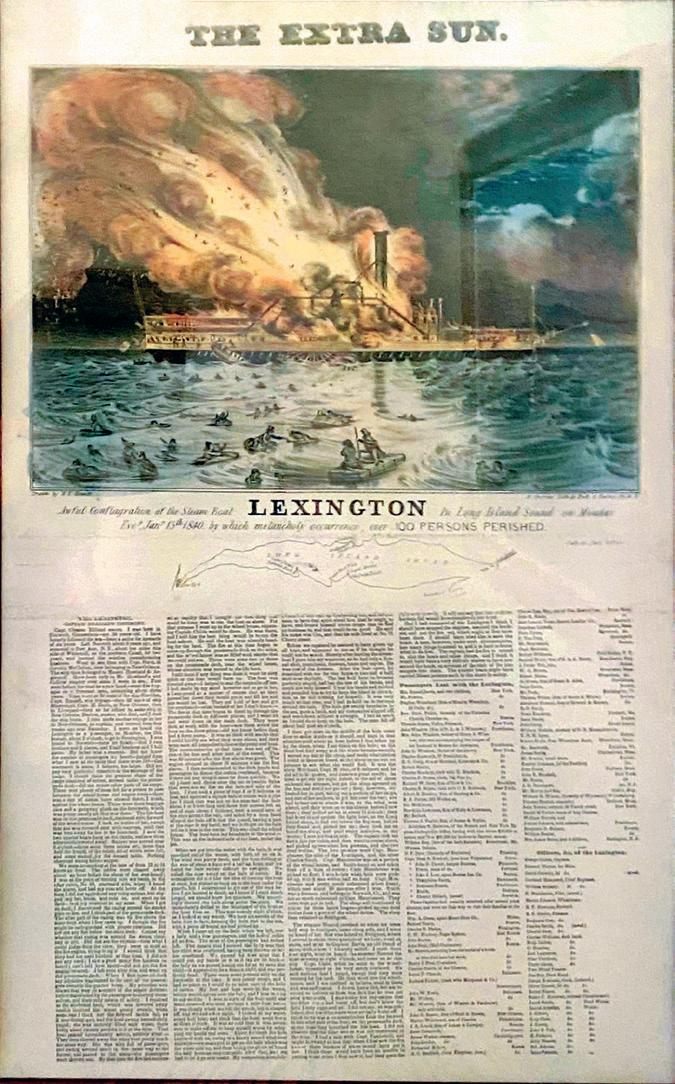
because of lithographer Nathaniel Currier and his groundbreaking image “Awful Con agration of the Steam Boat LEXINGTON In Long Island Sound on Monday Evening, January 13th 1840, by which melancholy occurrence, over 100 PERSONS PERISHED.” Currier, who would later famously partner with James Merritt Ives to create the rm Currier & Ives, collaborated with the editors at the New York Sun, the city’s largest daily newspaper, to produce an image of the burning steamboat so the newspaper could use it in special “extra” editions. e print sold more than 12,000 copies after the Sun ran several versions over many days. Currier began printing his own hand-colored copies, which sold widely for the next 11 months.
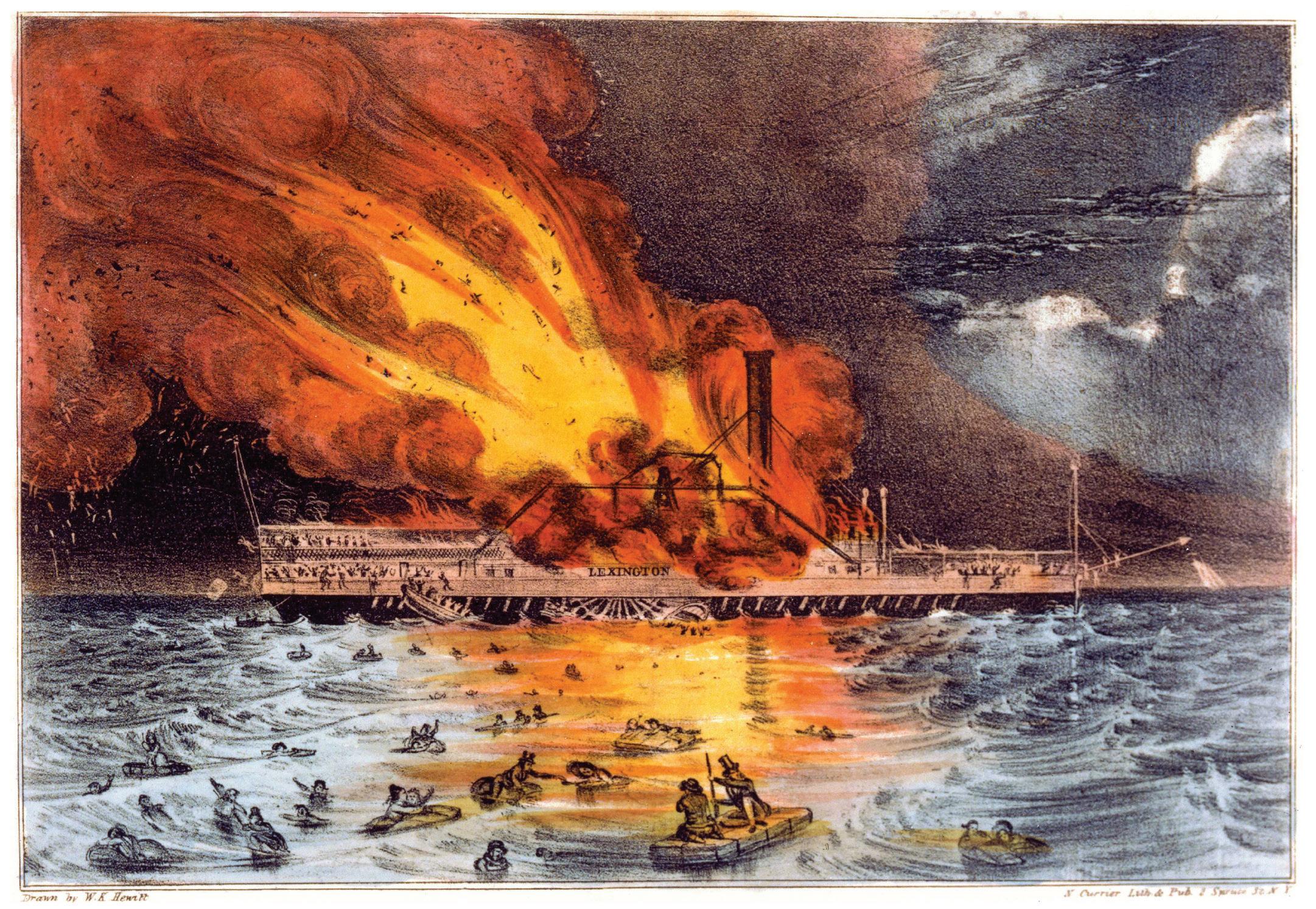
32 SEA HISTORY 184 | AUTUMN 2023
COURTESY OF
The success of Nathaniel Currier’s lithograph, Awful Conflagration of the Steam Boat LEXINGTON, helped launch his career when it was featured in the special “extra” edition of the New York Sun.
JAMES BRUST
NEW YORK SUN, 1840
Because of the enormity of the disaster, New York City coroner Ira B. Wheeler convened a “Jury of Inquest” in Manhattan on 19 January. e twelve jurors—all male—heard eight days of testimony before issuing their damning and controversial ndings on the evening of the ninth day. Witnesses included Lexington’ s designer and original owner Cornelius Vanderbilt; steamboat builders, captains, engineers, and crewmembers; New Jersey Steam Navigation Company officials and employees; steamboat inspectors; and, most dramatically, three of the four survivors.
ere were disagreements among the witnesses about the condition of the Lexington before she embarked on her ill-fated passage, the safety of burning coal versus wood in the furnaces, the safety of using blowers to increase the draft and power of the furnaces, the safety of carrying a cargo of cotton bales, and other details. e preponderance of the evidence, however, made it clear that the steamboat had been well-built, was well-maintained, and could burn coal safely, and that carrying cotton in compacted bales was not a re hazard. When they issued their verdict on the ninth day, the jurors, none of whom had any maritime background, ignored the evidence and excoriated the Lexington, its crew and owners as well as the two federal steamboat inspectors who had examined the vessel. “ e conduct of the o cers of the steamboat Lexington … deserves the severest censure of this community,” the jury stated.
Unsurprisingly, the verdict generated a great deal of comment in the newspapers, at public meetings, and in church sermons, much of it critical of the steamboat company and its employees. Newspapers and their readers demanded that the company’s o cers as well as the surviving o cers on the crew be indicted for murder.
But there would be no criminal prosecution. ere also would be no
lawsuits led against the company by the families of those who had died because in 1840 any grounds for litigation for personal injury died with the victim.
e inquest did produce some immediate results. e steamboat company announced that it would put more advanced—but not more—lifeboats on its steamboats and that it would no longer transport cotton. While there would be no criminal prosecution or civil litigation, not surprisingly, the loss of the Lexington prompted lawsuits from those who su ered nancial losses from lost cargo or possessions.
e most signi cant case went all the way to the Supreme Court, dragging on until almost eight years after the sinking. e litigation was led by the Merchants’ Bank in Boston, which had shipped $25,000 worth of gold and silver coins aboard the ship. e court recognized a carrier’s right to limit its liability as a common carrier by contract, but it held the limitation could not be construed to extend to “willful misconduct, gross negligence, or want of ordinary care.” Reviewing the record, the justices concluded that there was gross negligence in the stowage of cotton near the steam chimney.

In the years after the sinking, there were multiple e orts to salvage the wreck and some of its contents. In 1842, a salvage company placed cables under the hull and brought it up to the surface, only to have one of the cables break and the remains of the Lexington break in two and drop back to the bottom of Long Island Sound. In 1843, Mark Davis of Newark used a primitive diving bell to recover an 18-by-8-foot section of the steamboat that was later displayed at Castle Garden in lower Manhattan.
Demands that the government improve steamboat safety after the loss of the Lexington and other steamboat accidents went unheeded until 1852, when Congress passed the Safety Act of 1852.
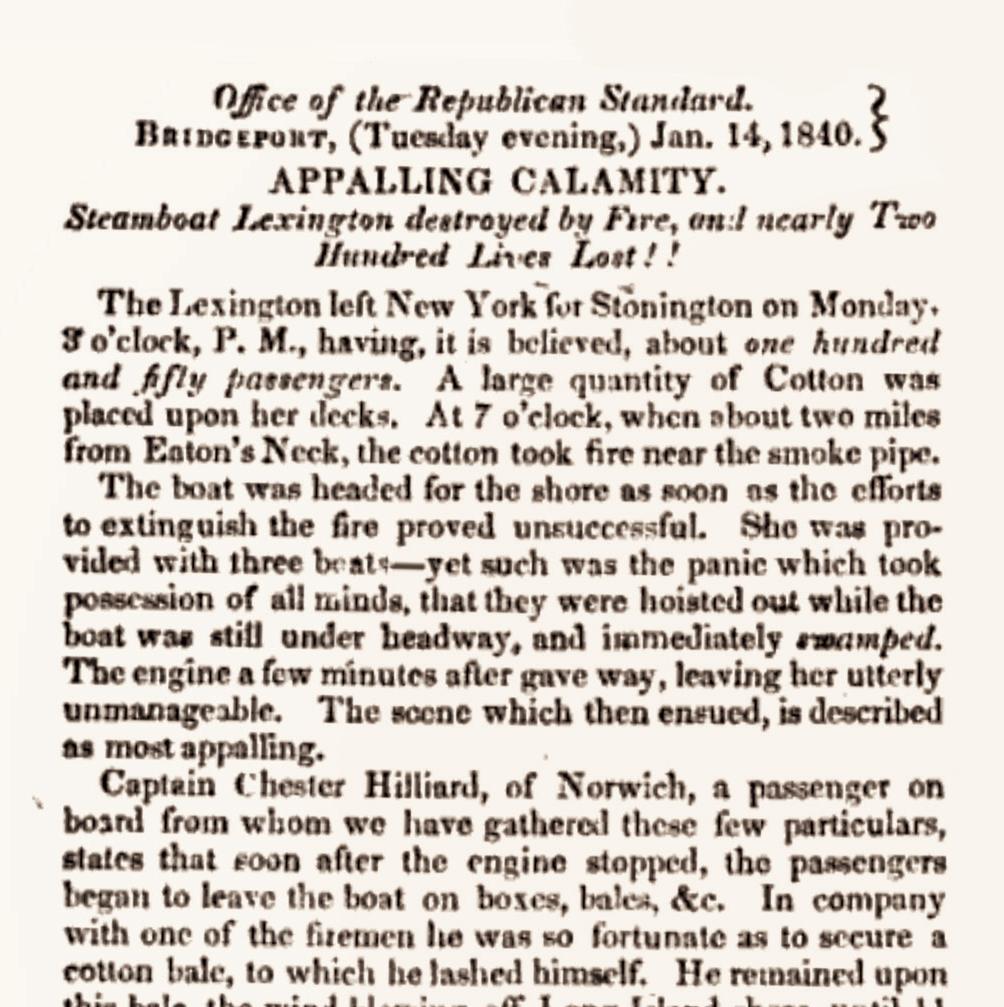
Appalling Calamity. Steamboat Lexington Destroyed by Fire, and nearly Two Hundred Lives Lost!! ...” Headline in the Republican Standard, Bridgeport [CT], Tuesday, 14 January 1840.
It mandated tougher standards for inspections and more boiler and re safety equipment.
In the decades after the unsuccessful salvage attempts, most people forgot about the Lexington, but not adventure novelist Clive Cussler. In 1982 he sponsored an expedition to rediscover the location of the wreck site, and the next year he dispatched a team of divers from Port Je erson to visit it. Only one of them, Robert Wass, a commercial diver and dive shop owner from Smithtown, made it down to the remains of the Lexington. After he brought up pieces of charred wood, Cussler had it tested and it was determined to be from the ill-fated steamboat.
Bill Bleyer, a retired award-winning Newsday reporter, is the author of six books on Long Island history and is a regular contributor to Sea History and other nautical journals. This article is based on his latest book, The Sinking of the Steamboat Lexington on Long Island Sound, which was published in May 2023 by the History Press.
SeaHistory.org 33
The Mariners’ Museum and Park
The Pontoon-Hydroplane Boat: A Motorboat Built on Airplane Principles
by Sarah Pucki
The Curator’s Corner series in Sea History o ers maritime museums the opportunity to feature historic photos from their collections that, while available to researchers upon request, rarely go on public display. Each issue, we ask a museum curator to pick a particularly interesting, revealing, or representative photo from their archives and tell us about it. In this installment, we are invited into the archives of The Mariners’ Museum and Park in Newport News, Virginia. Enjoy!
Is it a boat? Or a plane? Perhaps both. Where would we be without those among us who put forth an improvement of an existing item, or imagine something completely new? e creator of this vessel, omas Alva Edison Lake, was born into a family of inventors, and, having been named after the famous American inventor, his destiny seemed pre-set.
ese photos are from 1932. omas Lake received a patent for this experimental craft, and on this day he was about to test it in the harbor in Milford, Connecticut.
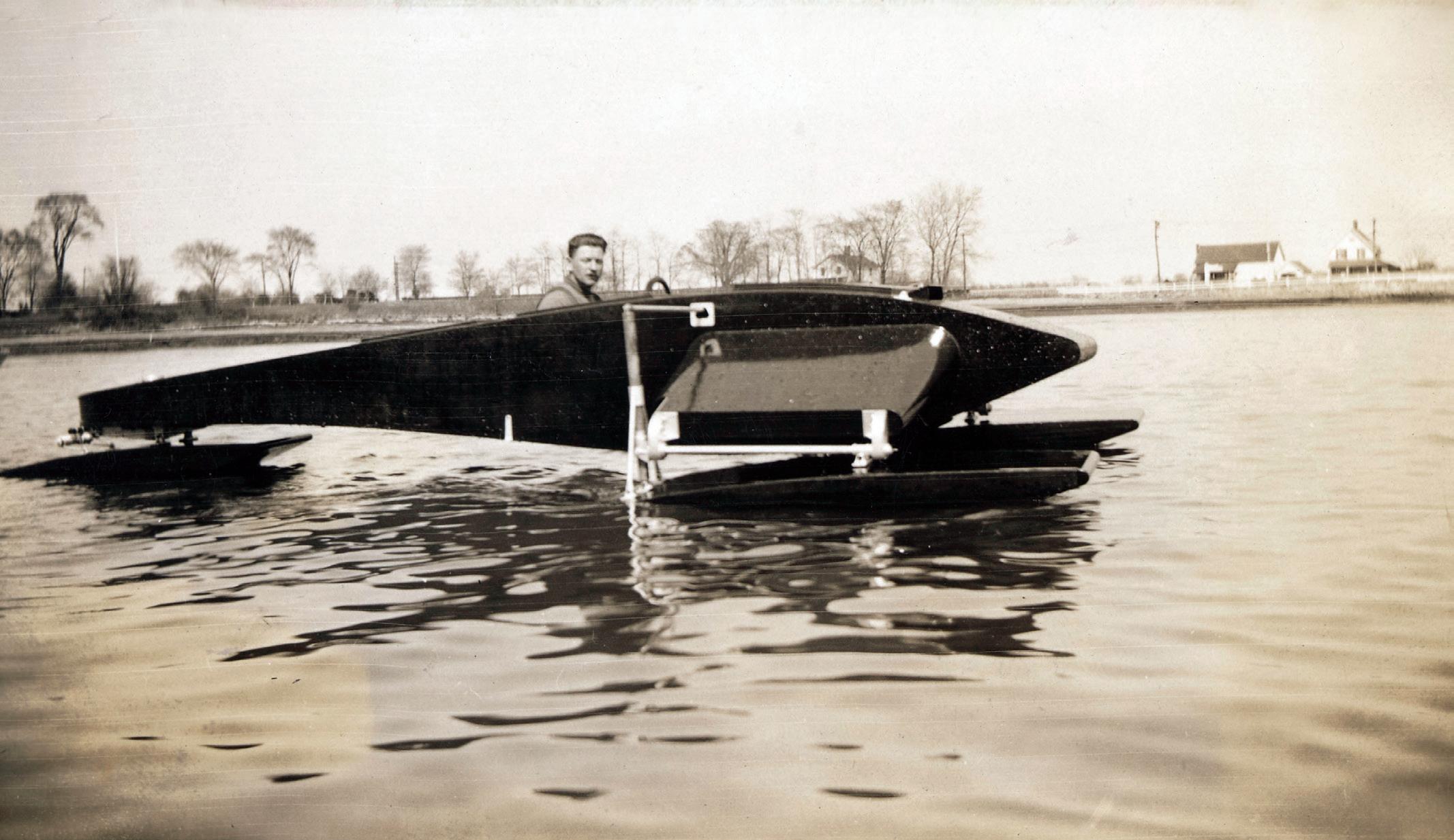
His patent application describes “a type of boat which is capable of skimming over the surface of the water at high speed and be able to make small radius turns at high speed without ‘skidding’ and maintain its stability at all times.”
A clever combination of plane and watercraft, the boat is supported by a hydroplane oat on each side, similar to the wings on an airplane. A third pontoon sits at the rear of the craft and acts as a rudder. Secured ahead of the operator’s seat is an Elto outboard motor to “[exert] a
CURATOR’S CORNER 34 SEA HISTORY 184 | AUTUMN 2023
ROBERT G.
SKERRETT COLLECTION, THE MARINERS’ MUSEUM & PARK, # MS 0163-01-1087
Thomas Lake in the cockpit of his unique cra (1932).
lifting as well as a forward propelling force. By tilting or ‘banking’ the forward set of pontoon-hydroplanes and steering with the rear one, turns could be made at high speed without ‘skidding’ or side-slipping.” 1

is photograph is part of the Robert G. Skerrett Collection at e Mariners’ Museum and Park in Newport News, Virginia. Skerrett was an engineer and proli c author of scienti c papers and articles, including many for the Department of the Navy. e collection reveals his curiosity for a variety of subjects, including advancements in diving, salvage operations, and aeronautics. His personal photographs and sketches often illustrated his published articles.
Skerrett was already acquainted with omas Edison Lake from articles he had previously written about omas’s father, Simon Lake, who is often credited as the inventor of the modern submarine. In 1932 omas Lake invited Skerrett to visit him in Connecticut and see his new invention, the pontoon-hydroplane boat. Correspondence between the two men indicates that Skerrett did pay Lake
a visit and was impressed with the design, so much so that Skerrett o ered to assist by publishing articles in New York newspapers. Lake was also seeking nancial backing and hoped that his design would be of interest to the United States government, as well as the commercial industry.
Had Lake’s craft been pitted against a Gar Wood boat or a Hacker Craft, both of which were pushing the speed record for boat racing that same year, he would have won handily due to his vessel’s lack of wetted hull surface (creating less friction) and its ability to maintain speed in a tight turn. Lake led several patents, including one for a “ ying machine” and another for what may have been the rst automobile jack for changing a tire.
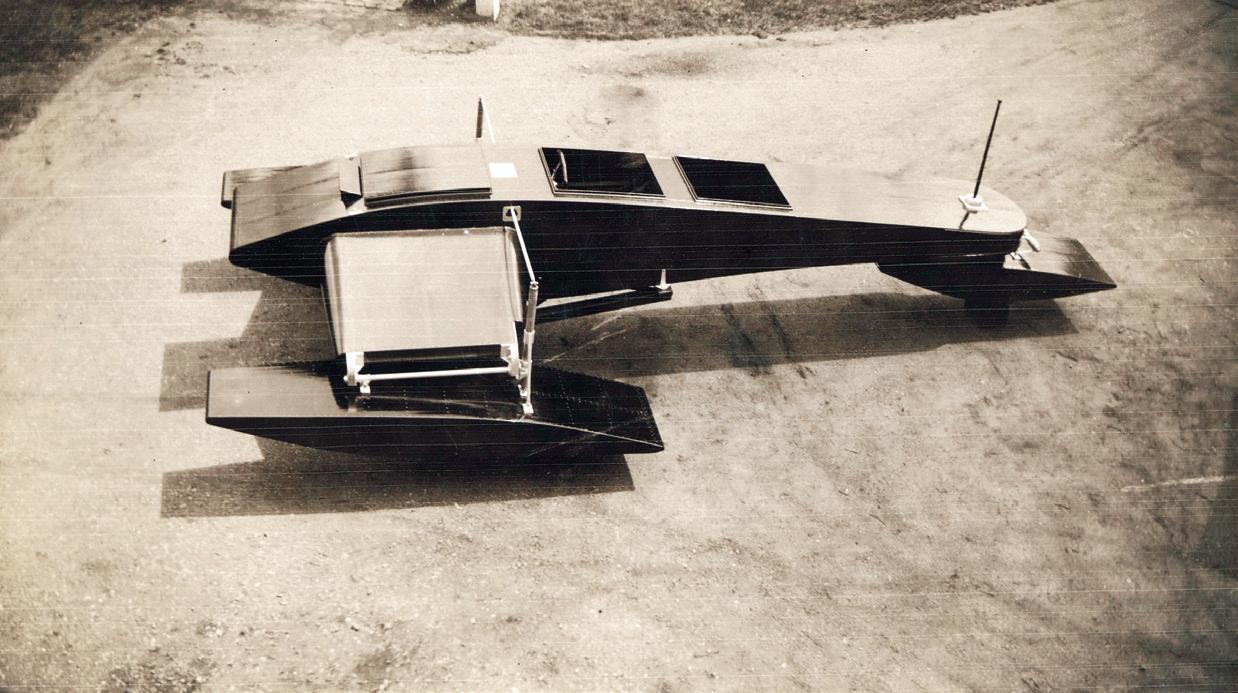
ere is no record that omas Edison Lake’s pontoon-hydroplane boat ever got beyond the patent state. Such is the case with so many great ideas. Nevertheless, Lake’s concepts for increased stability and the ability to make turns at high speeds were realized in future racing boats.
Sarah Pucki is The Mariners’ Museum’s Curator of Photography / Photo Archivist. The Mariners’ Museum Library and Archives holds the largest collection of maritime cultural heritage in the Western Hemisphere; its rich collection and international scope makes the library and archives a premier resource for maritime research. Since 2016, admission to the museum is just $1 per person, to make its facility and the history it interprets accessible and open to everyone. The museum is the proud caretaker of more than 200 tons of artifacts recovered from the wreck of the Civil War ironclad warship USS Monitor, including its revolving gun turret, Dahlgren guns, steam engine, and more.
The Mariners’ Museum and Park, 100 Museum Drive, Newport News, Virginia; www.marinersmuseum.org.
SeaHistory.org 35
1 omas A. Edison Lake. 1932. Pontoon-Hydroplane Boat. US Patent 1,846,602, led 13 March 1931; issued 23 February 1932
“Had Lake’s cra been pi ed against a Gar Wood boat or a Hacker Cra , both of which were pushing the speed record for boat racing that same year, he would have won handily...”
Pontoon-hydroplane boat (1932).
ROBERT G. SKERRETT COLLECTION, THE MARINERS’ MUSEUM & PARK, #MS0163-01-1086
Happy Birthday USS Hornet!
On 29 November 1943, the newest vessel in the US Navy carrier eet, USS Hornet (CV-12), was commissioned in Virginia as the eighth American naval ship of that name. She would embark on a career that would make history from both her wartime service and her role in the Apollo program. By the time she had nished her service and was relegated to reserve status in June 1970, her name was familiar to Americans across the country and TV-viewing audiences around the world. at status largely resulted, not from her exploits in World War II, the Cold War, or Vietnam, but from the televised appearance of four famous men on her decks in July 1969.
by Chuck Myers
Much of the world watched live coverage of the view from Hornet’ s deck of the Apollo 11 command module, Columbia, emerging from the clouds with parachutes open. Television coverage continued and broadcast the scene as President Richard Nixon greeted Neil Armstrong, Buzz Aldrin, and Michael Collins through the window of the Mobile Quarantine Facility (MQF).
Hornet went on to recover the Apollo 12 astronauts in November of that year, albeit with much less fanfare, before sailing o to retirement a few months later. Now a museum facility in Alameda, California, the ship houses a considerable collection of space exhibits, including an Apollo command
module and the Apollo 14 Mobile Quarantine Facility. Every day the museum celebrates “one small step for man, one giant leap for mankind.” Other space-related exhibits are also on display, including a very rare Biological Isolation Garment, a.k.a. “BIG” suit. en uncertain of what the astronauts had been exposed to, the crew of the rst moon landings wore BIG suits from the time they exited the command module until they were isolated in the MQF.
In June 1970, USS Hornet was dispatched to the Puget Sound Naval Shipyard in Bremerton, Washington, to join the mothball eet, along with many other ships of all types that had served in World War II. Her ight deck
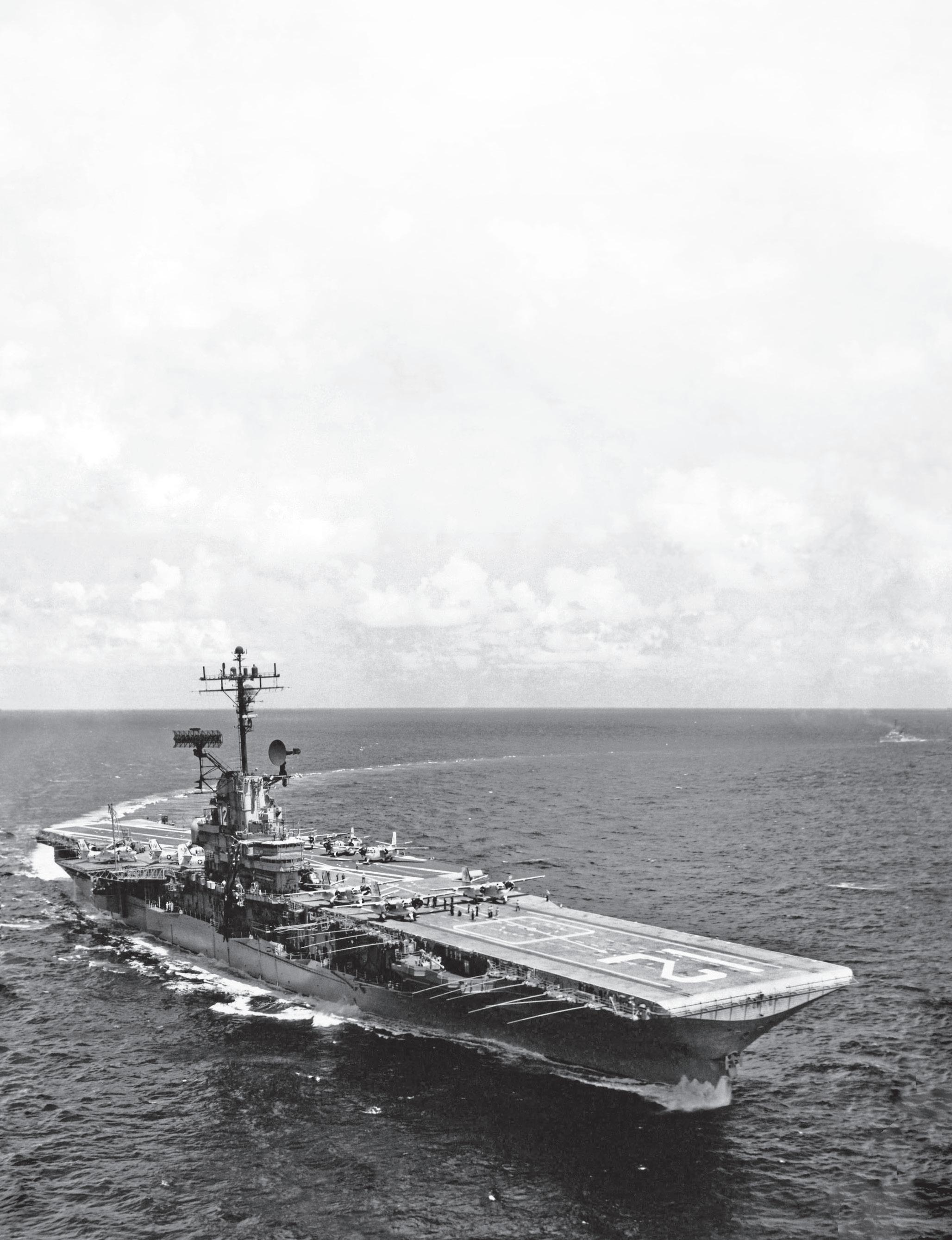
US NAVY PHOTO, COURTESY USS HORNET SEA, AIR, AND SPACE MUSEUM
and hangar decks were covered or lled with Styrofoam, although from a distance she would look pretty normal to the casual observer.
Nearly 20 years later, Navy brass decided that Essex-class aircraft carriers were never again going to be suitable for active duty; they were considered too small, too weak, and too costly to bring up to the standards of the day. USS Hornet was stricken from the registry, a death sentence in naval terminology. Imagine a vessel nearly 900 feet long, with a 2½ acre ight deck, displacing 40,000 tons when fully loaded, as “too small and too weak!” But that was the reality of the modern era. Her hydraulic catapults could not launch the newer aircraft, nor could the ight deck support the force of landing them. e super-carriers then being designed and built would range up to 100,000 tons.
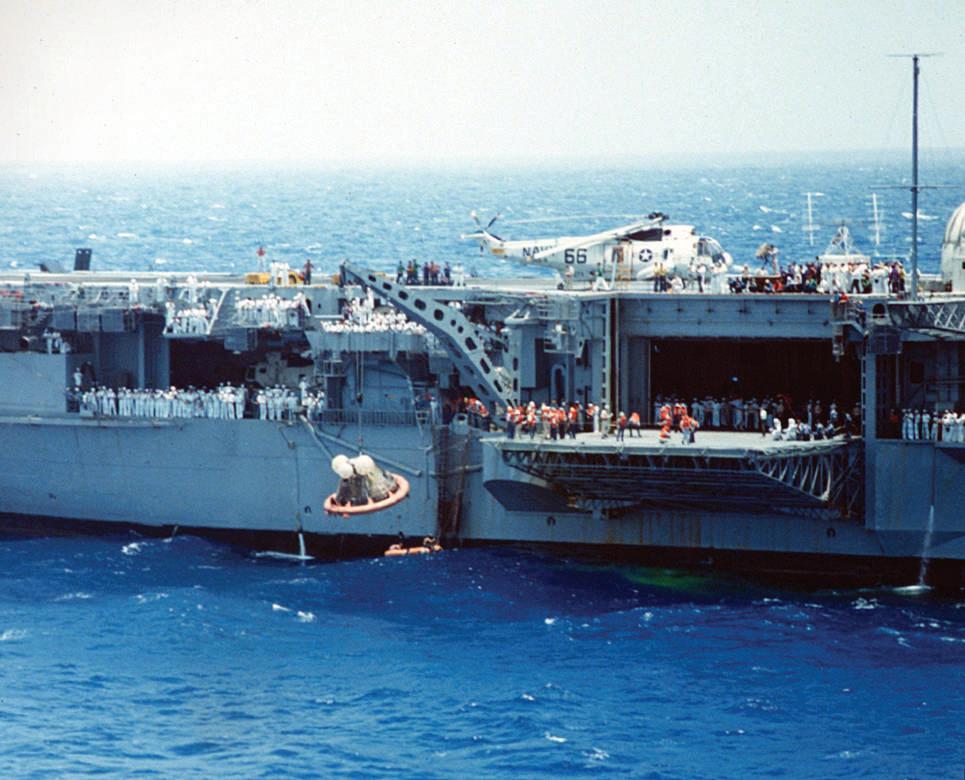
ey were installed with steam catapults and had reinforced ight decks of 4½ acres.
A ship of this historic importance being unwanted was noticed by some industrious and in uential folks, including Apollo 11 astronaut Buzz Aldrin, and together they managed to get Hornet designated a National Historic Landmark in 1991 (and later a California Historic Landmark as well). Undeterred, the Navy sold the ship for scrap and she was towed back to California, fated to turn into razor blades. e fact that she was saved from that ignominious fate is another (long) story; after a brief legal battle, she was donated to the Aircraft Carrier Hornet Foundation by the somewhat chastened US Navy. Fast forward to 1995. Some readers familiar with the region will recall that was the year USS Hornet became a xture at Pier 3 at the Alameda Naval Air Station, when the base was closing as part of the Defense Base Closure and Realignment Commission (BRAC) decision from 1993. at interlude was long enough for the founders of the

SeaHistory.org 37
President Richard M. Nixon was on board USS Hornet to welcome the Apollo 11 astronauts home. Apollo 11 splashed down on 24 July 1969, about 812 nautical miles southwest of Hawaii and only 12 nautical miles from the aircra carrier. Confined to the Mobile Quarantine Facility (MQF) are (L–R) Neil Armstrong, Michael Collins, and Edwin Aldrin Jr.
NASA NASA
The Apollo 12 Command Module, Yankee Clipper, being hauled out of the water and hoisted aboard USS Hornet, 24 November 1969.
Foundation to persuade the Navy that the carrier’s legacy would best be served by converting her to a oating museum.
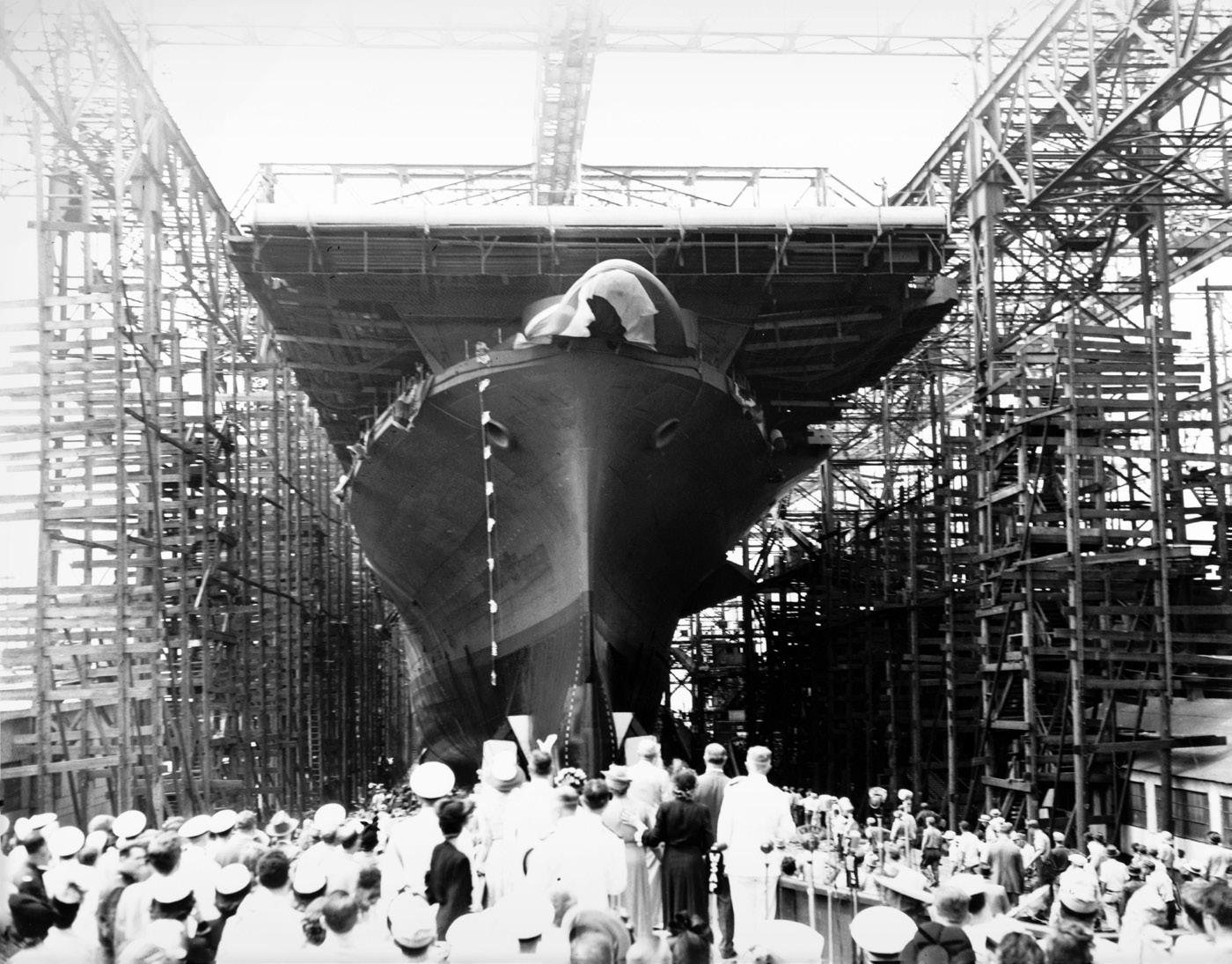
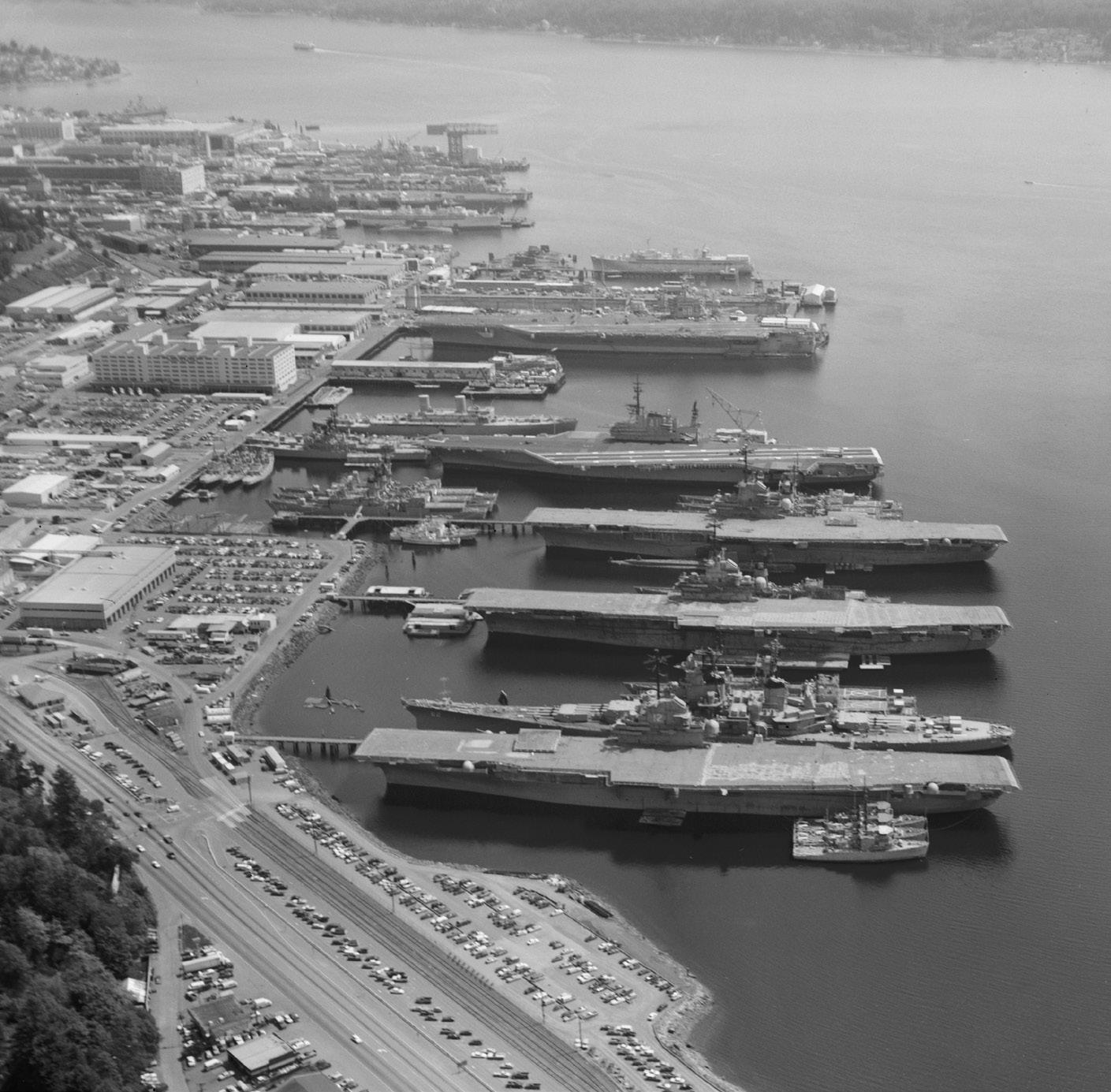
e USS Hornet Museum began serving the community on 28 October 1998, with some 5,000 guests on board and on the pier to celebrate the moment. It was truly a homecoming for the ship, having been an Alameda resident of sorts for much of her active duty career. Even though the landlord—the Alameda Naval Air Station—was no more, Pier 3 was still intact and was well suited to her new role as home to a museum ship.
e USS Hornet Sea, Air, and Space Museum, a Smithsonian a liate, is the largest artifact of two of the major historical events of the 20th century: World War II and the Space Race. She embraces the concept of “museumswithin-a-museum,” beginning with the Nisei veterans 442 / 100th MIS museum1 and the new African Americans in the Military spaces. USS Hornet is also the home for three Congressional Gold Medals, one each for the Doolittle Raiders, the World War II Nisei veterans, and Apollo 11.
Renewal is a constant theme at the museum, and it comes in many forms. Volunteers are always busy maintaining aircraft and the ship itself. By the time this article is published in fall of 2023, the museum’s F-4 Phantom aircraft will have rolled out of the Hangar Bay 3 restoration area and taken its place on the ight deck, and what used to be
(opposite page) USS Hornet (CVS-12) underway on 9 August 1968, shortly before she began her final Seventh Fleet deployment.
1 e 442 Nisei Exhibit memorializes the signi cant contributions of second-generation Japanese Americans in the World War II European theater, despite their circumstances in virtual captivity in mainland America.
38 SEA HISTORY 184 | AUTUMN 2023
LIBRARY OF CONGRESS
(above) Hornet was launched on 30 August 1943 at Newport News Shipbuilding.
(below) The Puget Sound Naval Shipyard at Bremerton, Washington, in August 1992. USS Hornet (CVS-12) is the first carrier in the foreground.
LIBRARY OF CONGRESS
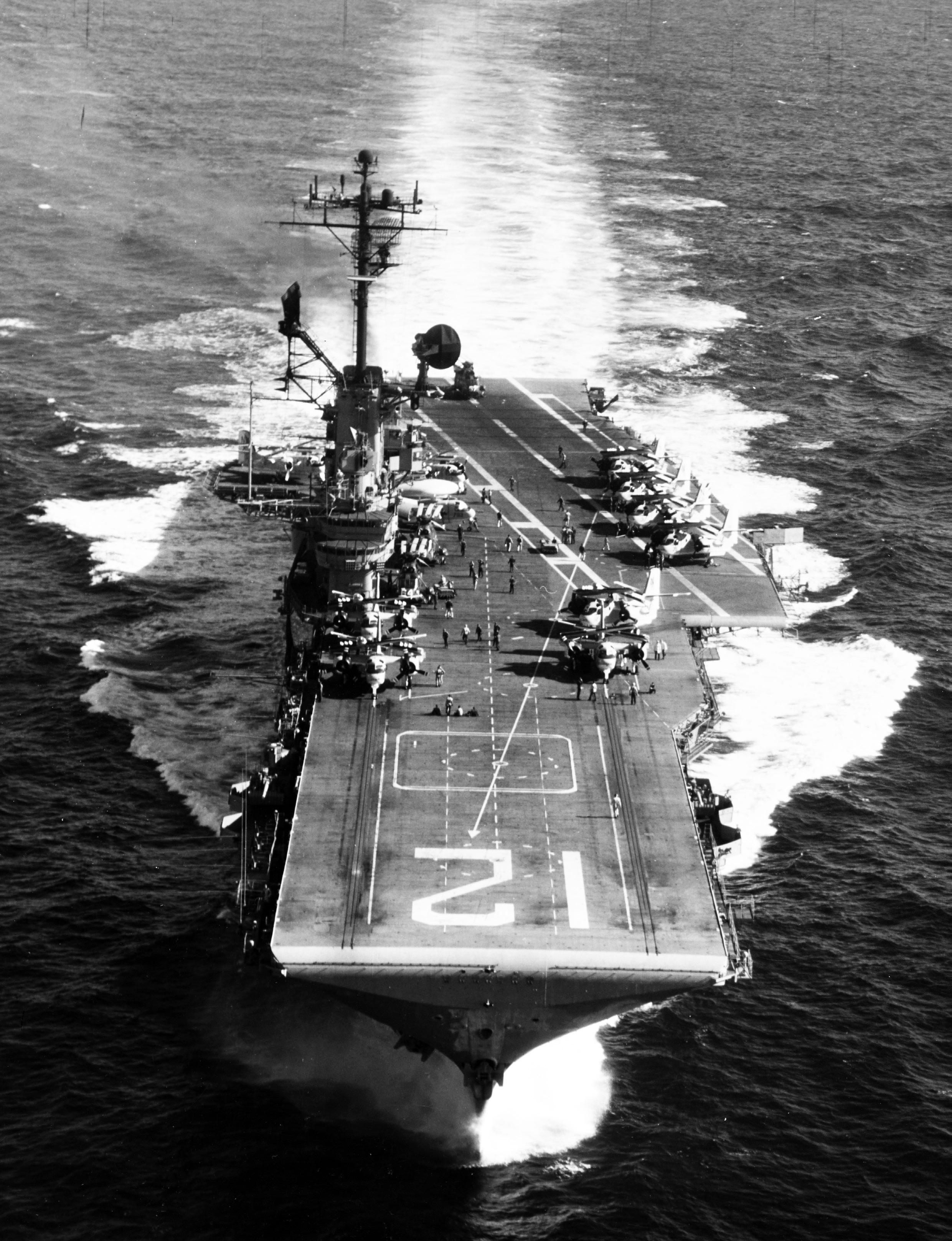 PHOTO BY PHCS W. M. COX, US NAVY
PHOTO BY PHCS W. M. COX, US NAVY
called “the special weapons locker” will open to the public. (Hornet carried a variety of nuclear weapons during her service, both bombs and depth charges. ey were housed in the special weapons locker and closely guarded.)
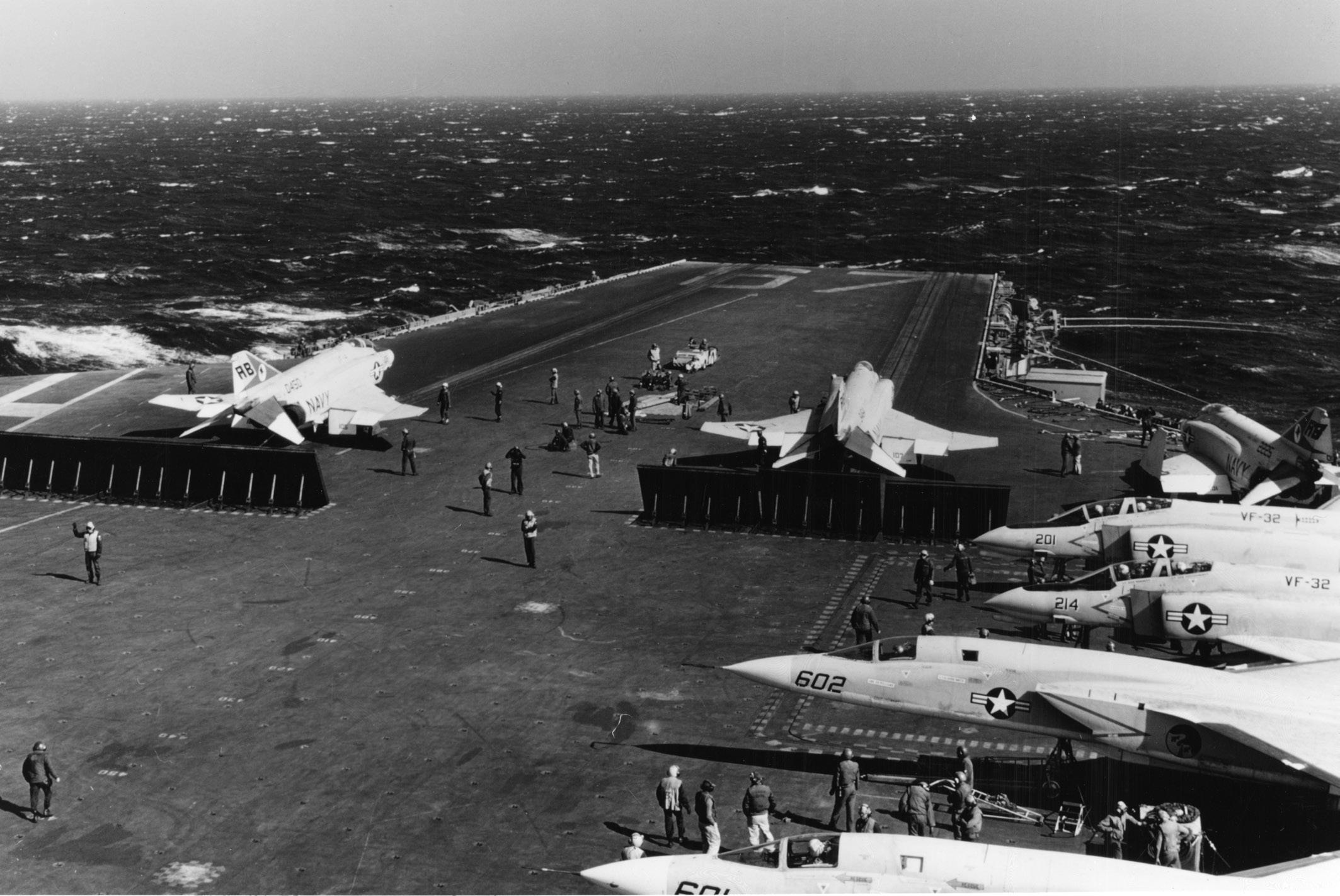
In addition to Hornet ’s role as a museum ship, she also serves as an education center for grades K-12, o ering STEM and history classes that make use of various features of the ship and its historical legacy. What better way to understand the uses of pneumatics and hydraulics than by seeing and working with examples in the catapult engine room, where the energy to launch air-
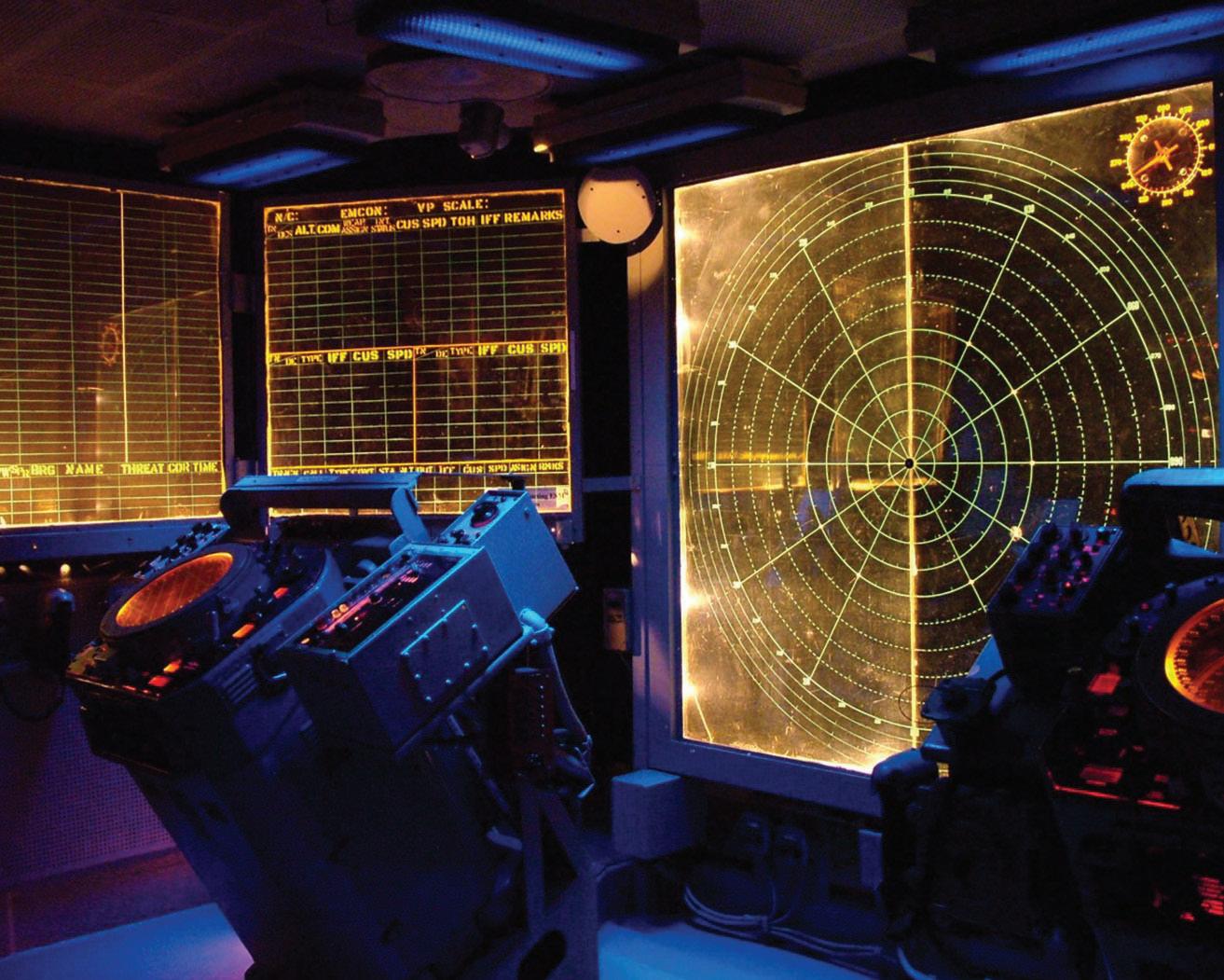
40 SEA HISTORY 184 | AUTUMN 2023
This fall, the USS Hornet Museum will have an F-4 Phantom aircra ready for display on the carrier’s flight deck. In this photo, two F-4 Phantom II planes are being readied for launch from the a ack carrier USS John F. Kennedy (CVA-67).
US NAVY PHOTO
(le ) Visitors on a docent-led guided tour can view USS Hornet’s Combat Information Center.
USS HORNET MUSEUM
craft is generated? ese STEM classes have had the bene t of the close cooperation of the US Naval Academy, the US Navy Research Lab, and NASA’s Ames Research Center. All the educational programs comply with California state educational standards; they served nearly 9,800 students in 2022.
Anecdotal evidence of a national history de cit is always best taken with a grain or two of salt, but consider this: Several years ago, Hornet ’s CEO was practicing “management by wandering around” and encountered two twentysomething guests making their way through the hangar deck displays. He stopped to have a conversation with them about their experience at that point in their tour and asked them if they had any questions that he could help with. He got this response: “What was Pearl Harbor about?” Once he recovered his composure and provided
the answer, he thought, “what better way to learn up close and personal about America’s role in world events, from Pearl Harbor to the Apollo missions, than on a ship that played a major role in those events?”

e museum hosts guests of all ages for overnights in its “Live Aboard” program, as thousands of scouts have done over the years. On an overnight stay, not only can you see more of the ship than the average crewmember could back in the day, you can also relive history in a way that can only be done through the experience and e orts of the Hornet sta . You might lose an hour of sleep in a bunk designed for an average 1940s sailor (19 years old, ve feet seven, and 147 pounds), but you will come away with a whole lot of perspective.
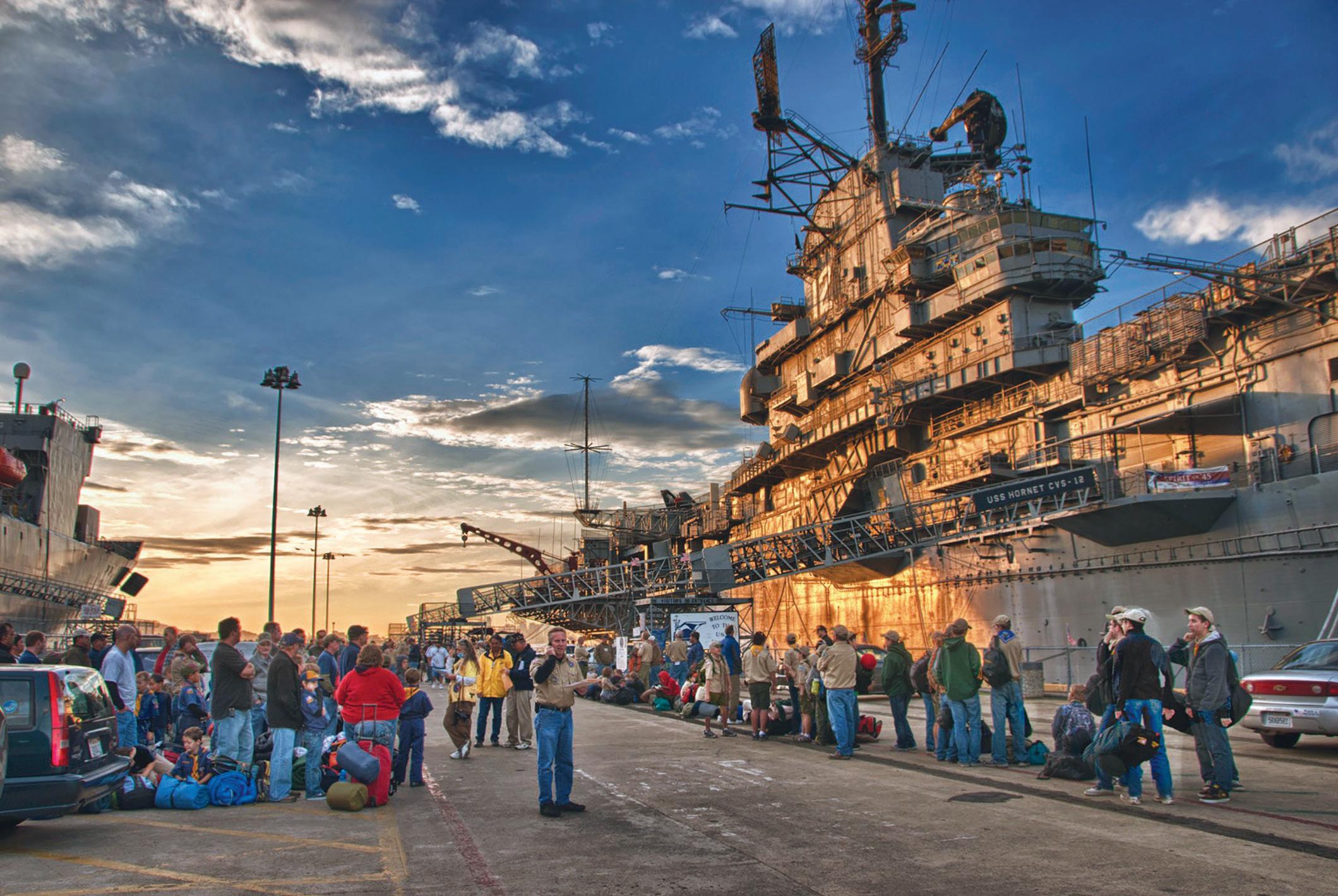
is fall on 11 November, the San Francisco Bay Area, along with US
Navy and Marine Corps veterans everywhere, will celebrate the combination of Veterans Day and Hornet ’s 80th birthday in conjunction with the 25th anniversary of the museum’s opening. Check the museum’s website at www. uss-hornet.org for details and join in the walk-through of 20th-century history, with a hint of the 18th and 19th as well.
Chuck Myers is a museum volunteer, both a docent and a member of the Aircra Carrier Hornet Foundation board of trustees. He served as a junior o icer in USS Yorktown (CVS10) in the 1960s. He also served as an advisor on the movies Midway (2019) and Devotion (2022).
USS Hornet Sea, Air, & Space Museum, 707 W Hornet Ave, Pier 3, Alameda, CA; www.uss-hornet.org.
SeaHistory.org 41
USS HORNET MUSEUM
One of the museum’s most popular programs is the Live-Aboard Overnight program.
Master of Sail, Steam — and Oil! Artist / Captain Ants Lepson
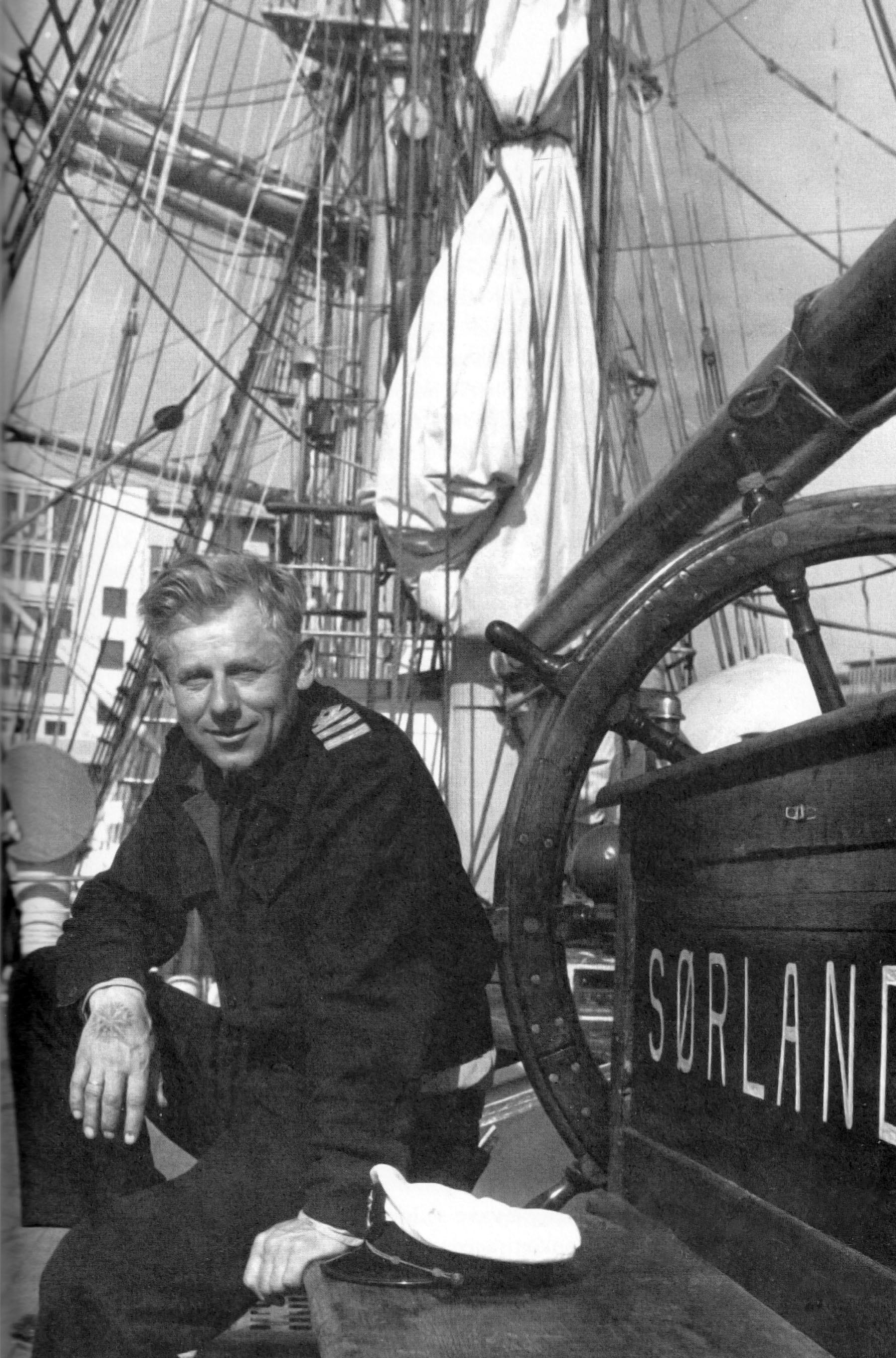 by Deirdre O’Regan
by Deirdre O’Regan
It would be hard to say whether Ants Lepson was more a professional mariner or a marine artist, as he had long and accomplished careers in both. Lepson’s life at sea began at a young age—perhaps younger than anyone would have wanted. He was just ten years old when his parents packed up their two sons and minimal belongings and boarded a 27-foot boat along with 29 other people to ee Soviet-occupied Estonia in 1944. at dash across the Baltic to Sweden nearly killed them all when the boat began to founder, but the experience did not dissuade either boy from later pursuing a career at sea.
e Lepsons settled in Sweden at rst, but the “fear of being returned to Estonia loomed over them, and it was decided to cross the Atlantic.”1 e family made the crossing in a 69-foot vessel with 69 Estonians onboard. Like their rst open-water passage, this vessel nearly foundered during a hurricane near Bermuda, but they made it to Wilmington, North Carolina, in good shape, arriving on 28 September 1948.
Young Ants’s fascination and determination to make a career on the high seas might have seemed odd to his parents. “I am of farmer stock, born on the coast but we lived with our backs to the sea. Nevertheless, I wanted to be a sailor since I could talk,” he said. Reportedly, the choice did not please his father. “Apparently, sailor means a bum to a father’s mind.”2
As a teenager, Ants was a student in the maritime program aboard SS John W. Brown.3
“Ants had the appearance of a man that had worked hard, learned a lot, and had li le to say. He was not impressed by his ability to learn English, German, Norwegian, Estonian, and some Spanish—it was just something he did. He did not convey anything other than someone who lived with what life threw at him and did the best he could with it.”
Rick Lai, Vice President, SS John W. Brown Alumni Association
42 SEA HISTORY 184 | AUTUMN 2023
1, 2 Kristen Taraldsen, foreword to Ants Lepson, by Ants Lepson (Arendal, Norway: self-published, 2015).
COURTESY ANTS LEPSON
3 Ants Lepson was a lifetime member of the SS John W. Brown Alumni Association.
Motor Cu er Blia Foundering in a Hurricane, 11 November 1941. oil on canvas, 50 x 70 cm
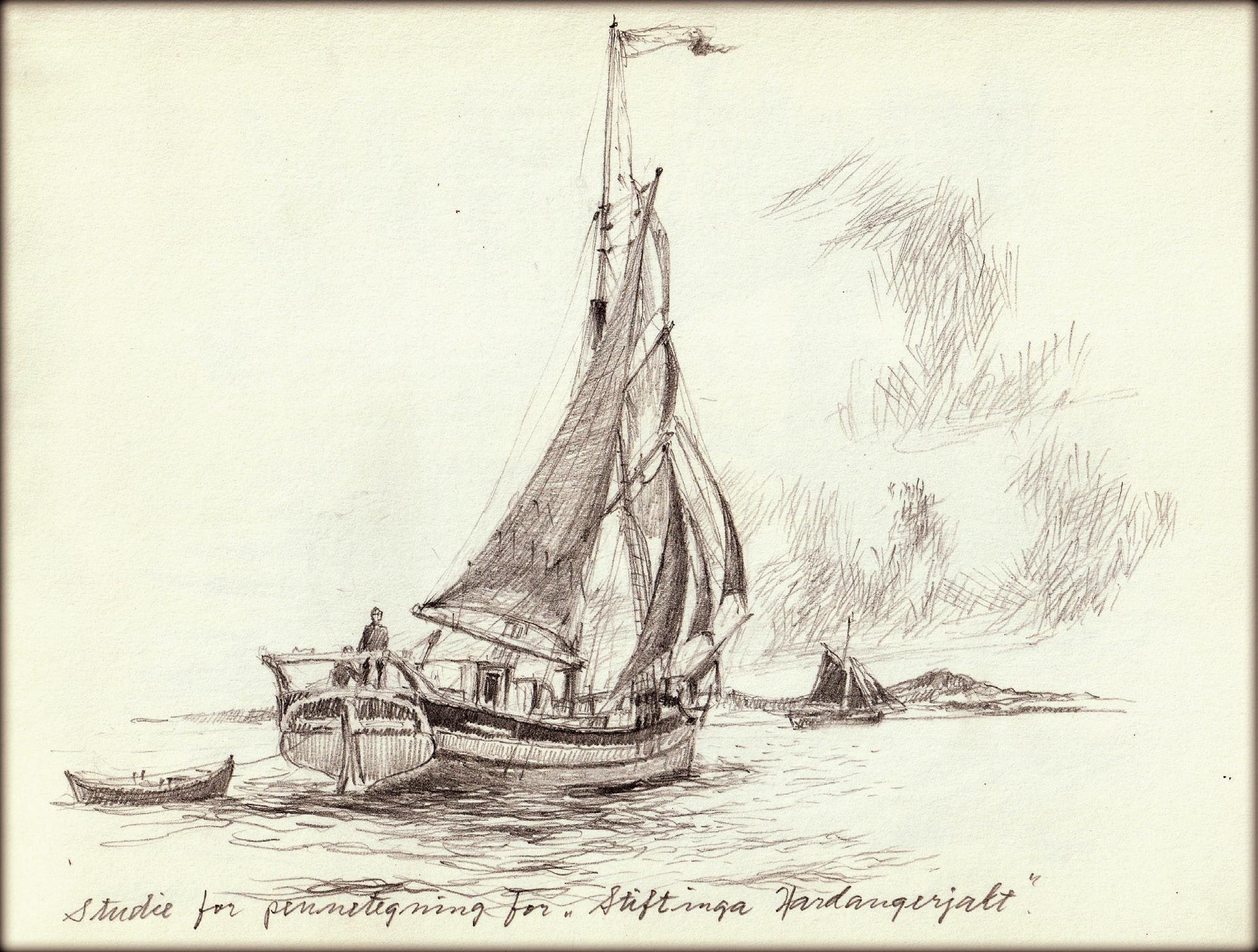
Blia put to sea on 10 November 1941 with 43 persons fleeing German-occupied Norway. According to Ants’s brother, Indrek Lepson, “That scene is similar to what we endured—fleeing the Russians in 1944 with 33 people crammed on a 27-foot boat. We were caught in a fierce storm and the boat began to founder. That would have been the end of us, save for the heroic actions taken by my father, who pulled up floorboards and found the source of a leak. We managed to keep the boat afloat until we were rescued by a vessel sent out from a lighthouse on the Swedish coast.”
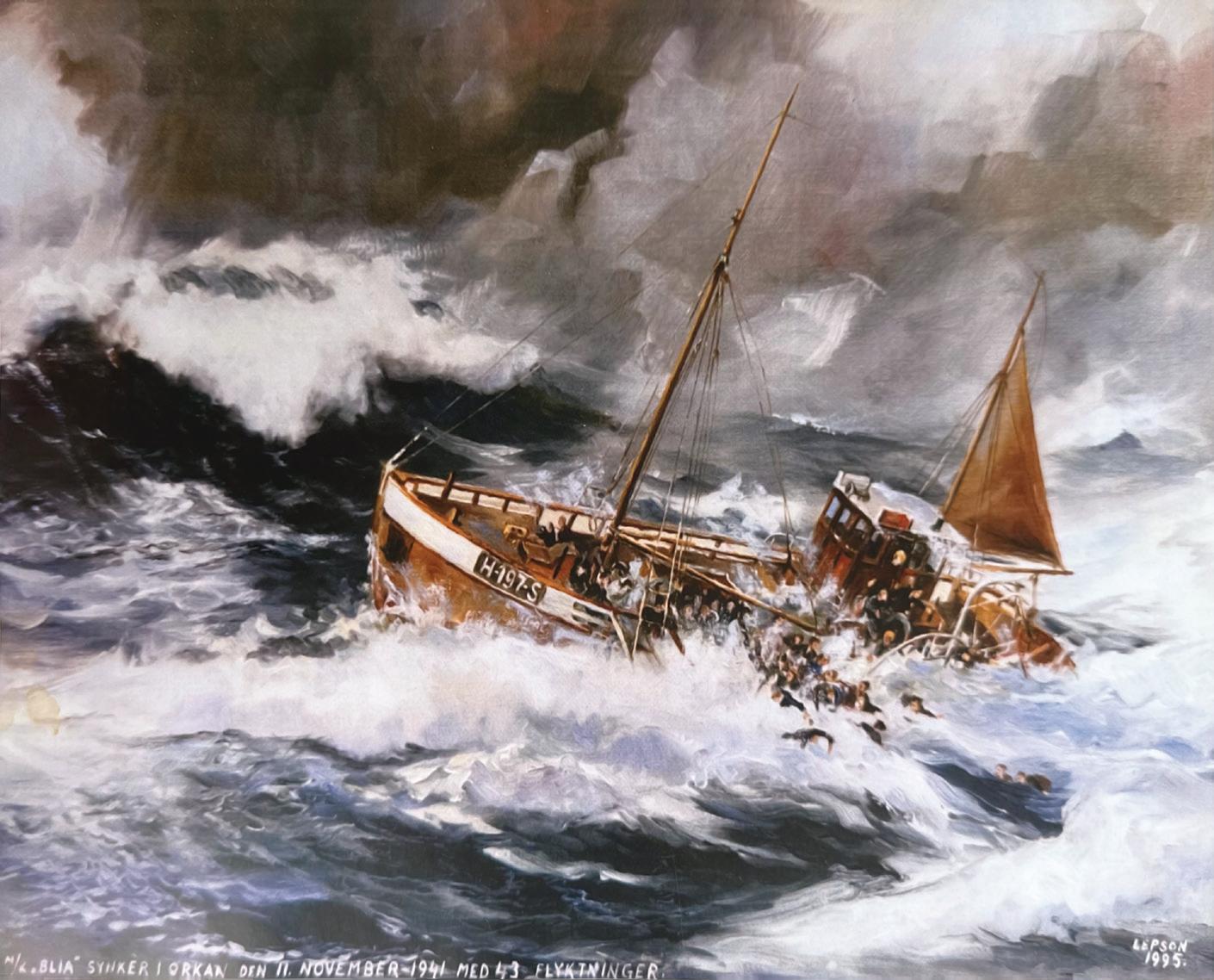
SeaHistory.org 43
© ANTS LEPSON © ANTS LEPSON
Practice sketch for pen and ink drawing of a wooden boat for a vessel restoration center in Norway. From a sketchbook dated 1993.
“Don’t paint nautical Picassos!”
at training only furthered his intention to ship out. His brother, Indrek Lepson, explained, “Ants went to sea at 16 by forging our mother’s signature, which he had practiced to perfection. He had typed up a letter, posing as our mother, giving him permission to go to sea on a foreign ship. He was keen on joining a Norwegian crew and took the letter to the Norwegian consulate in Brooklyn. He subsequently got a berth as mess boy on a Norwegian ship, and in time worked his way up to become a captain, which was his ultimate dream and goal when he rst shipped out.”
Ants Lepson’s career at sea lasted more than 50 years. He sailed under ve nations’
SS Kajak of Tallinn, oil on canvas, 50 x 70 cm
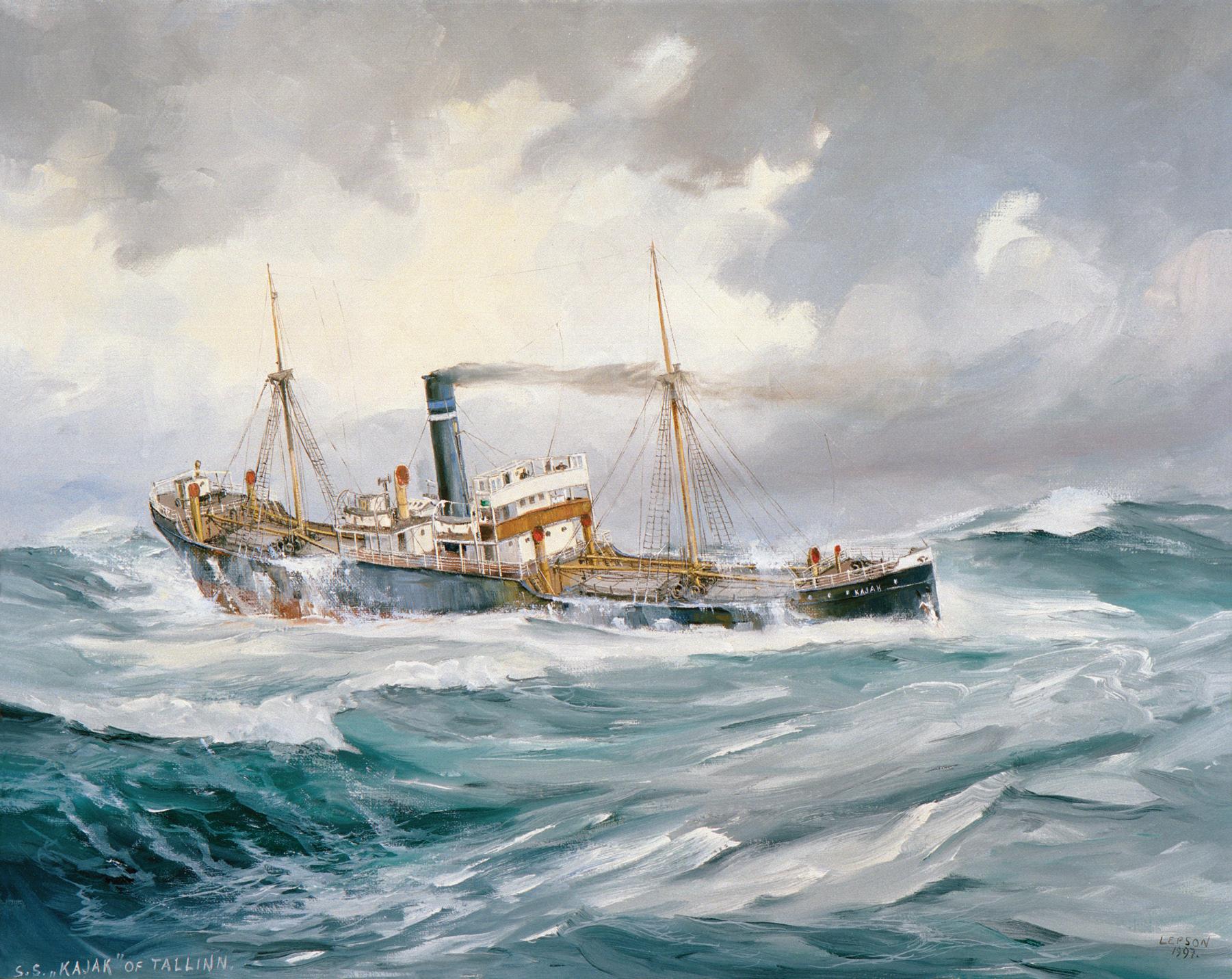
ags for fteen companies on at least 40 vessels of all kinds, culminating in his command of the Norwegian fullrigged training ship Sørlandet, which would become a frequent subject of his art once he took up painting.
It was his wife, Astri, who walked in the door some 45 years ago with some paintbrushes and canvas. A self-taught artist, Ants Lepson tended to paint what he knew best and was inclined to paint ships in heavy weather, when he could show the details of a ship and crew straining to get through a tempest. He never claimed to be a master painter, but he took pride in getting the details
“An Estonian steamer of about 1890 vintage. These old steamers were real diehards; some kept working into the 1970s. Most were knocked out by new technology, rather than old age. They are every bit as di icult to paint as sailing ships. In a curious way, they are extremely pleasingly proportioned and consequently di icult to depict correctly.” —Ants Lepson

44 SEA HISTORY 184 | AUTUMN 2023
© ANTS LEPSON
“When approaching the English Channel one could expect depressing weather—low clouds, misty air, sullen sea, and tense o icers on deck. Most paintings do not show the deck layout of a sailing vessel, but as both sailing vessels and steamers were designed for the same job, the only real di erence between them was the steamer having more winches—and no sails, of course.” —Ants Lepson
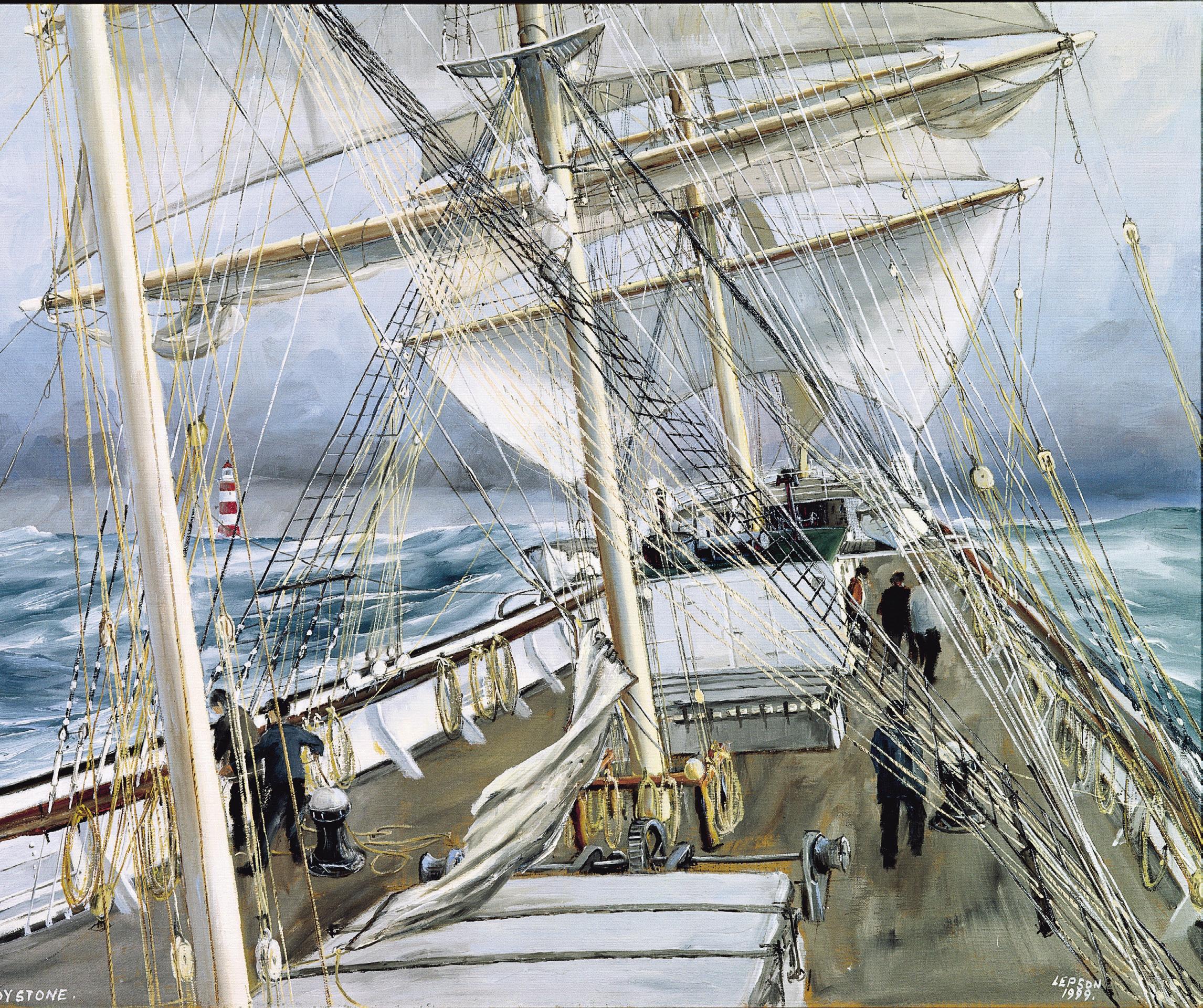
According to his brother Indrek,
“I have seen a lot of great paintings of ships by many famous artists, depicting famous sea ba les and ships under clouds of billowing canvas—all great works of art—but I have never seen a painting that shows in detail the deck layout of a ship as seen from the poop deck by an artist intimately familiar with what he paints, other than, perhaps, Anton O o Fischer, who sailed aboard the three-masted barque Gwydyr Castle as an AB.”
SeaHistory.org 45
Channel Weather by Eddystone oil on canvas, 50 x 70 cm
© ANTS LEPSON
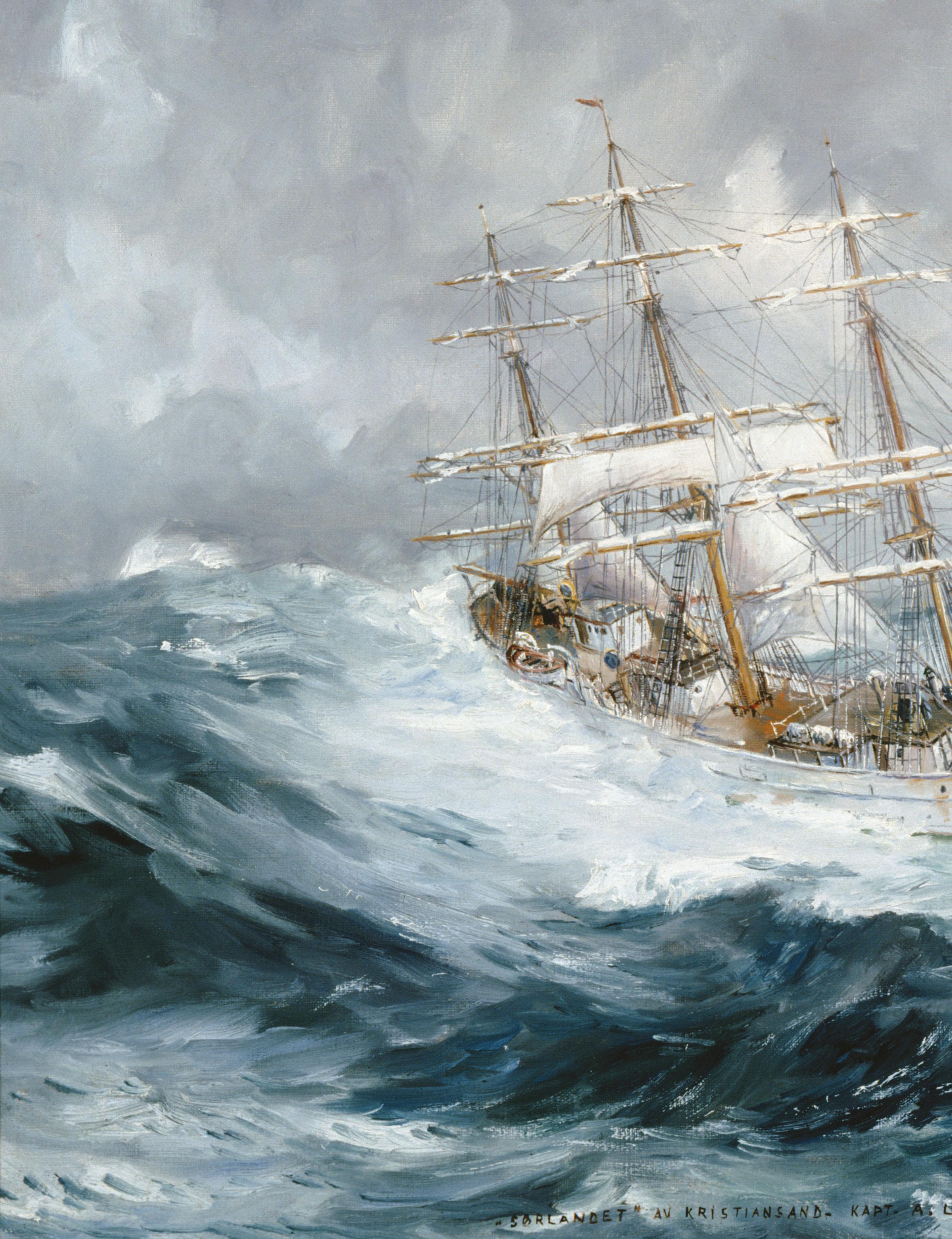
Sørlandet, Hove To, oil on canvas, 50 x 70 cm
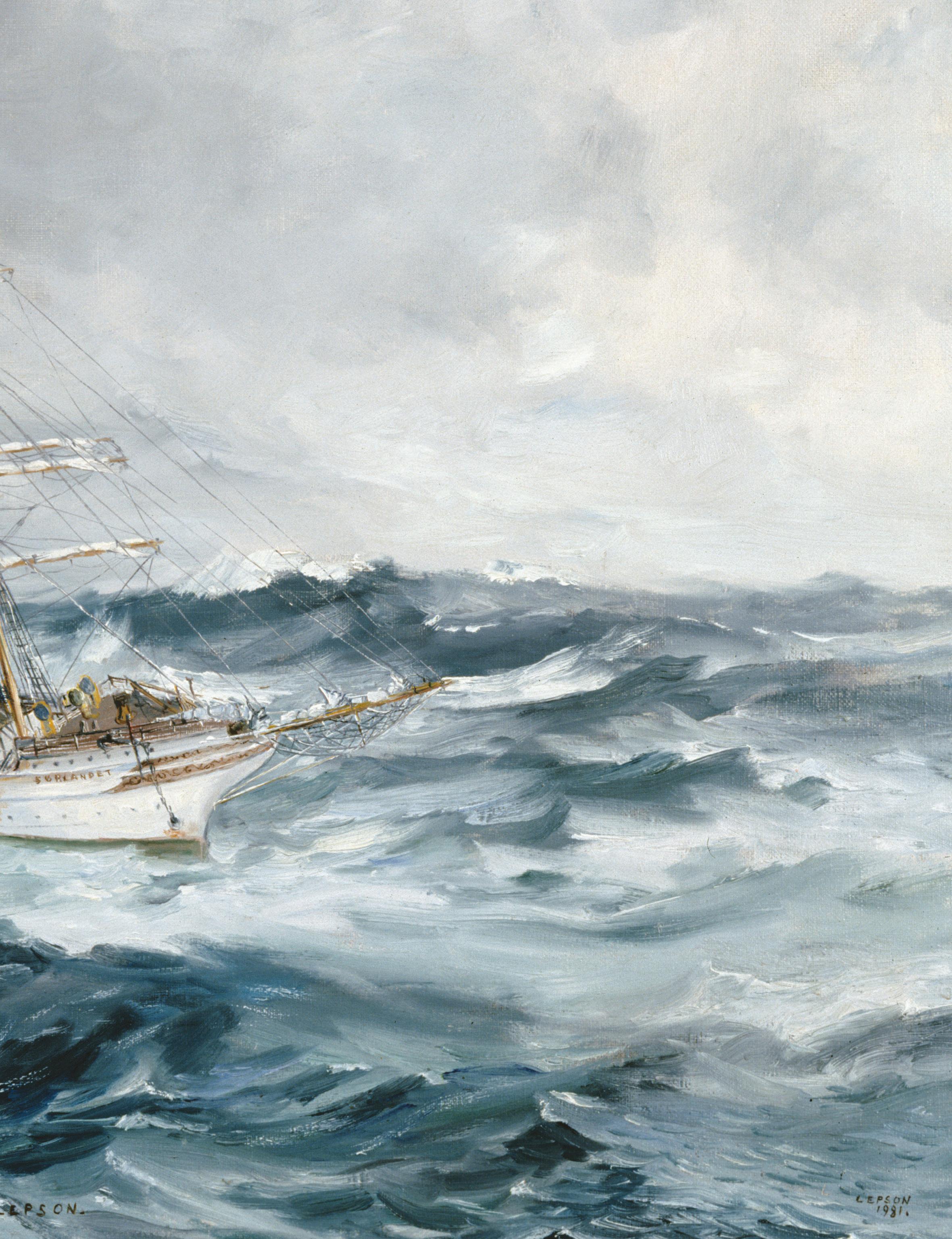
“Heaving to is a salty and much-used expression among sailors. It means simply abiding be er weather when the going gets too rough. The ship is shortened down to minimum sail, laid with the wind slightly forward of the beam, the helm lashed a-weather, and then she takes care of herself. This is a usual practice when there is sea room in bad weather.” —Ants
Lepson
right. “A marine artist does not have to be a marine architect. But a ship is a technical device. An artist may simplify or idealize, but the working principle must remain correct. In other words, ‘Don’t paint nautical Picassos!’”

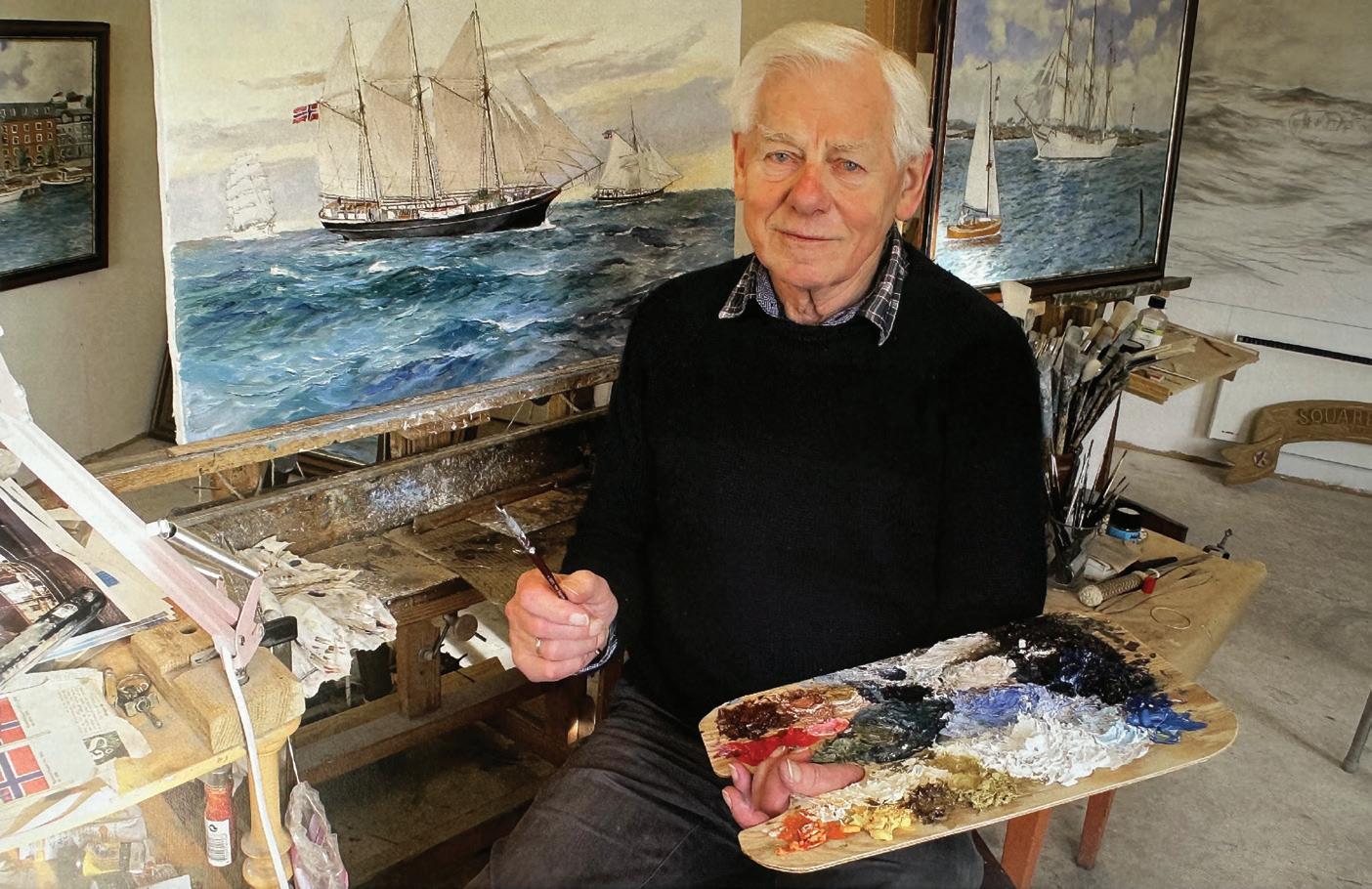
Ants Lepson crossed the bar earlier this year in Norway. He had been working with his friend Rick Lai and brother Indrek Lepson to get this article in Sea History, and, while we are sad he did not live to see it in print, we know he was pleased to share his story and his art with the rest of us.
Fair Winds Captain Lepson!
Spec of Farsund, oil on canvas, 50 x 70 cm
“The North Sea is not a big sea but has a reputation for bad weather. Here, a steamer of pre-WWll vintage is punching into a head sea carrying a big deck cargo. The smack hove-to in the foreground is the 79-foot Boy Leslie, originally of London but later homeported in my adopted hometown in Arendal, Norway.” —Ants Lepson
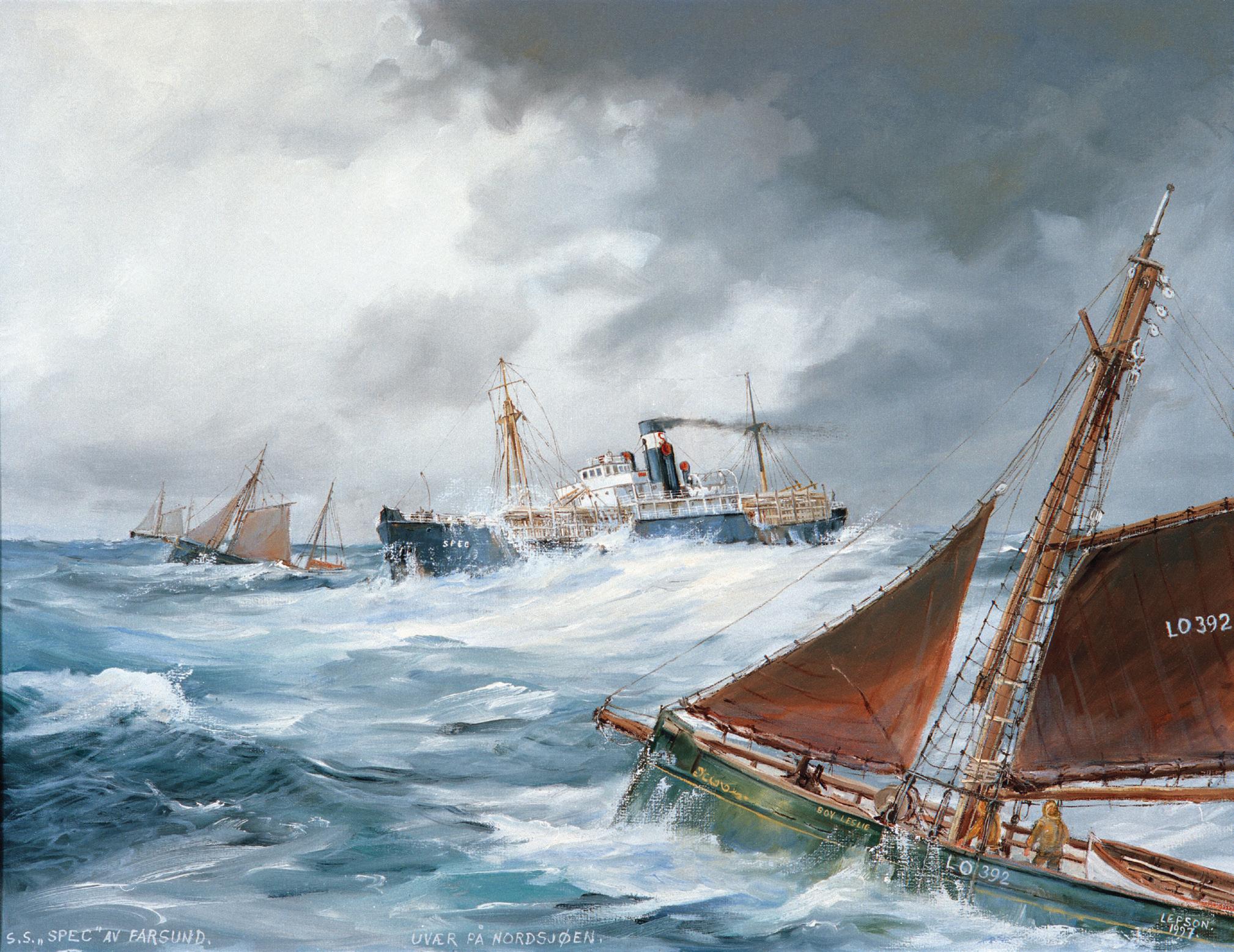
48 SEA HISTORY 184 | AUTUMN 2023
Captain Ants Lepson (1934–2023)
© ANTS LEPSON COURTESY
LEPSON
ANTS
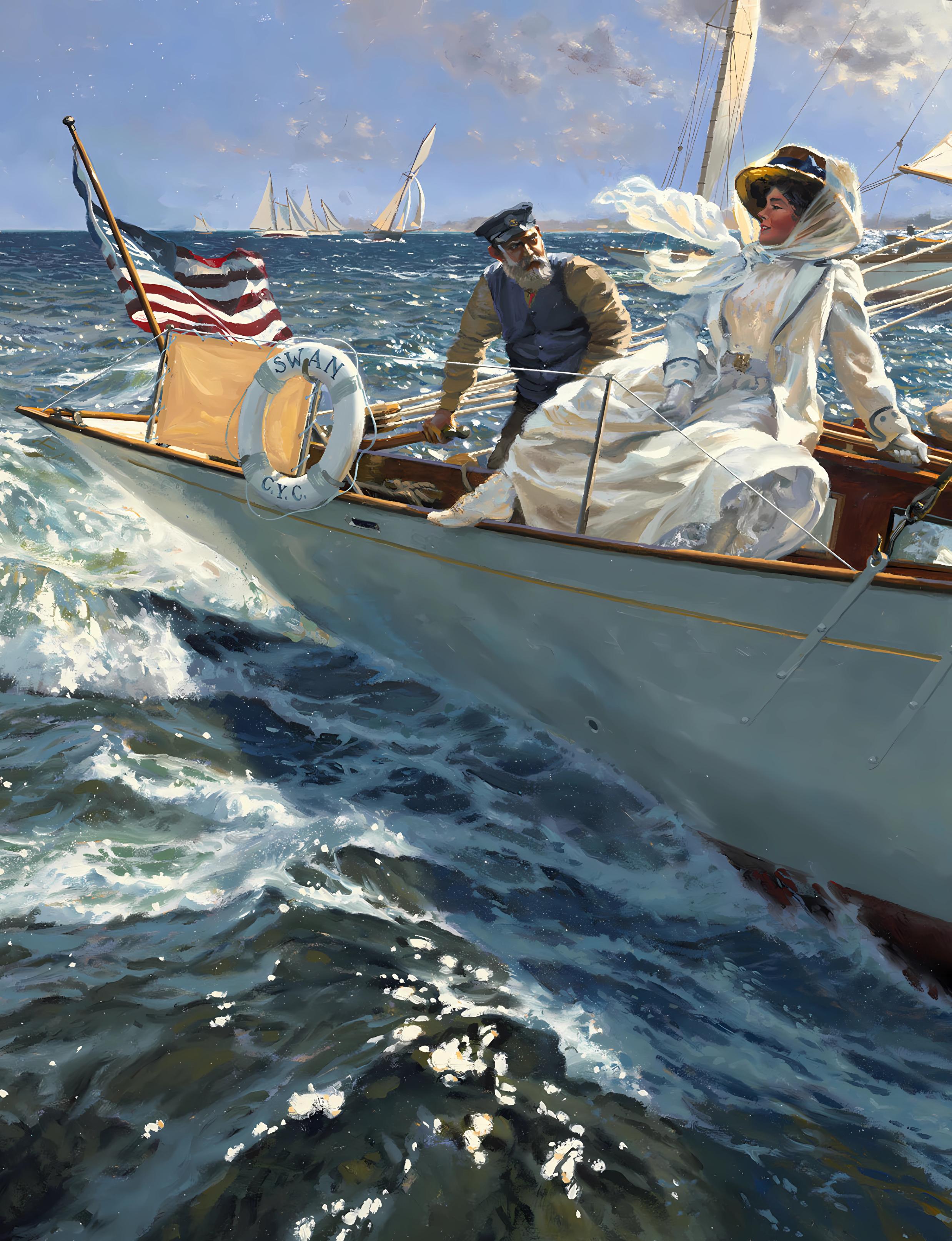
19th National Exhibition Albany Institute of History & Art, Albany, NY September 8th - December 31st Minnesota Marine Art Museum, Winona, MN January 20th - May 12th, 2024 The American Society of MARINE ARTISTS
AmericanSocietyofMarineArtists.com
Painting: Russ Kramer F/ASMA, The Corinthians (det.)
The 1938 Hurricane
The Coast Guard’s Last Ba le Before the War
by William H. Thiesen
Hitting the East Coast over 80 years ago, the Great New England Hurricane was one of the most destructive storms to strike anywhere in the United States up to that time. Also known as the “Yankee Clipper” and “Long Island Express,” the 1938 hurricane caused over $41 billion in property damage and the death of approximately 700 men, women and children.
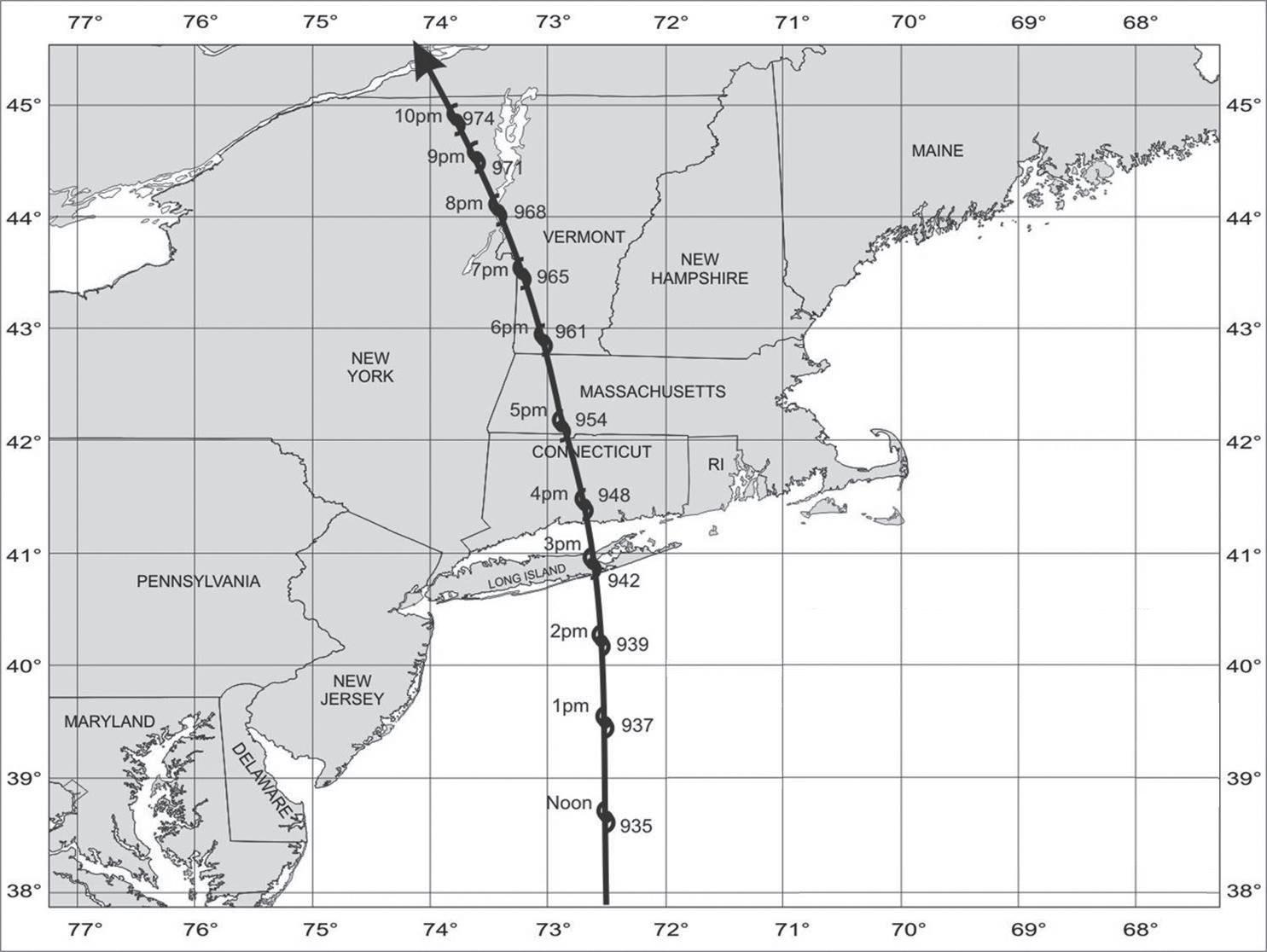
During the storm response, the Coast Guard assisted over 500 vessels and rescued more than 1,000 persons. However, the storm damaged or de-
stroyed 30 Coast Guard boat stations; several of them were never rebuilt. Four US Lighthouse Service depots and 25 lighthouses su ered damage, with one completely destroyed. e Service lost three Coast Guardsmen washed overboard from a cutter, and another seven Lighthouse Service persons perished in the storm.
In September 1938, a year before World War II started in Europe, a tropical depression emerged o the coast of Saharan Africa, and by midSeptember had developed into a full-
blown hurricane. Floridians feared the worst, having endured violent hurricanes twice in the 1920s and just a few years earlier in 1935, but by 20 September, the hurricane had skipped Florida and swirled north. It blew North Carolina’s Diamond Shoals Lightship o station and grew in strength to a dangerous Category 5 storm. Rolling past New Jersey at over 50 miles per hour, the hurricane heavily damaged the Coast Guard station at Sandy Hook.
On 21 September, the storm was barreling northwards toward the heart
50 SEA HISTORY 184 | AUTUMN 2023
Storm track
September 1938 NOAA NATIONAL WEATHER SERVICE
21
of New England. Long Island absorbed its initial impact, hence the storm’s nickname of “Long Island Express.”
e hurricane came ashore with winds well over 100 miles per hour and a storm surge in excess of ten feet. e barrier islands submerged under heavy seas between Long Island’s Fire Island Inlet and Southampton. e deadly combination of hurricane-force winds, storm surge, and breaking waves obliterated shorefront property, coastal towns, and the numerous Coast Guard boat stations dotting the Long Island shoreline. Of the 30 Coast Guard stations damaged or destroyed by the tempest, 22 of them were laid waste in New York— several never re-opened.
Storm damage to Boat Station Brenton Point. The station, guarding the entrance to Narraganse Bay near Newport, Rhode Island, was established in 1884; a boathouse and launch way were built on site in 1912. The main station house
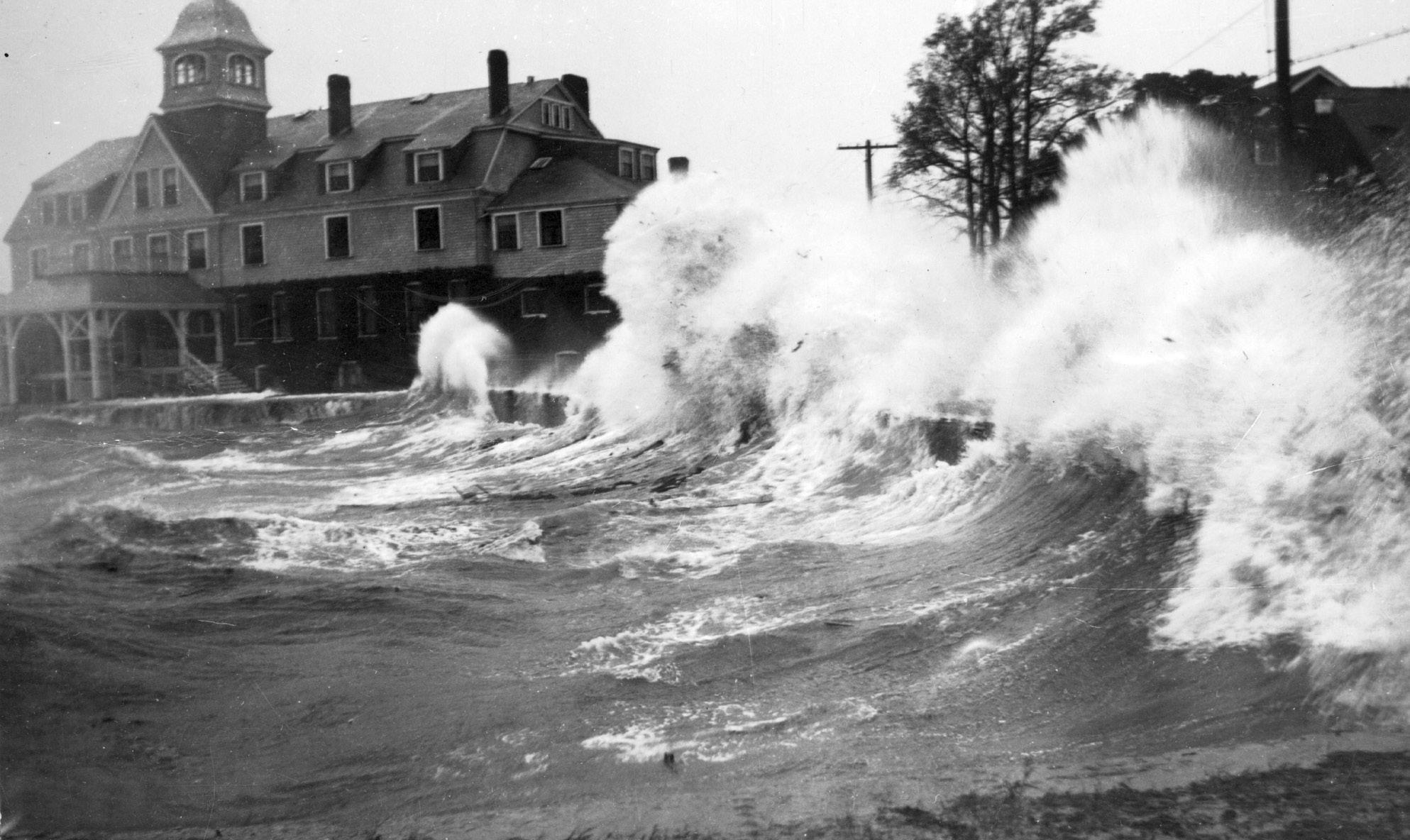
(above) su ered su icient damage that it was deemed unsafe to occupy and beyond repair. The marine railway and boathouse were destroyed, along with their contents, which included a pulling surfboat, dory, and the station’s 36-foot motor lifeboat. All told, the entire station was e ectively damaged beyond repair and was o icially abandoned in 1946.

SeaHistory.org 51
(below) Hurricane waves ba ering the seawall in Woods Hole, Massachuse s, at the height of the storm.
US LIFESAVING HERITAGE ASSOCIATION WHOI / NOAA
120 mile-per-hour winds drove the storm surge ashore before the hurricane battered Rhode Island. at state suffered the worst damage, with over half the storm’s fatalities. Coves, bays, and inlets that cut into the state’s coastline served as funnels, multiplying the 15foot storm surge already riding a spring tide one foot higher than the normal high tide. Smaller oceanside towns were wiped out, and ooding in downtown Providence reached depths between 10 and 20 feet. Coast Guard boat stations in Rhode Island felt the full brunt of the storm, with stations at Brenton Point, Point Judith, Quonochontaug, and Watch Hill heavily damaged. It took years to rebuild these bases, and one had to be relocated to a safer location.
(above) Boats in Dorchester, Massachuse s, ripped from their moorings and washed ashore, where they were pounded by the surf. The hurricane destroyed about 2,600 fishing vessels and damaged another 3,400. In Connecticut and Rhode Island, only three commercial fishing vessels were operational immediately a er the storm. (below) Whale Rock Lighthouse before the storm. The light tower was built with a concrete-filled, cast-iron caisson as its foundation. On top, a four-story lighthouse provided living quarters for the keepers. (inset photo) All
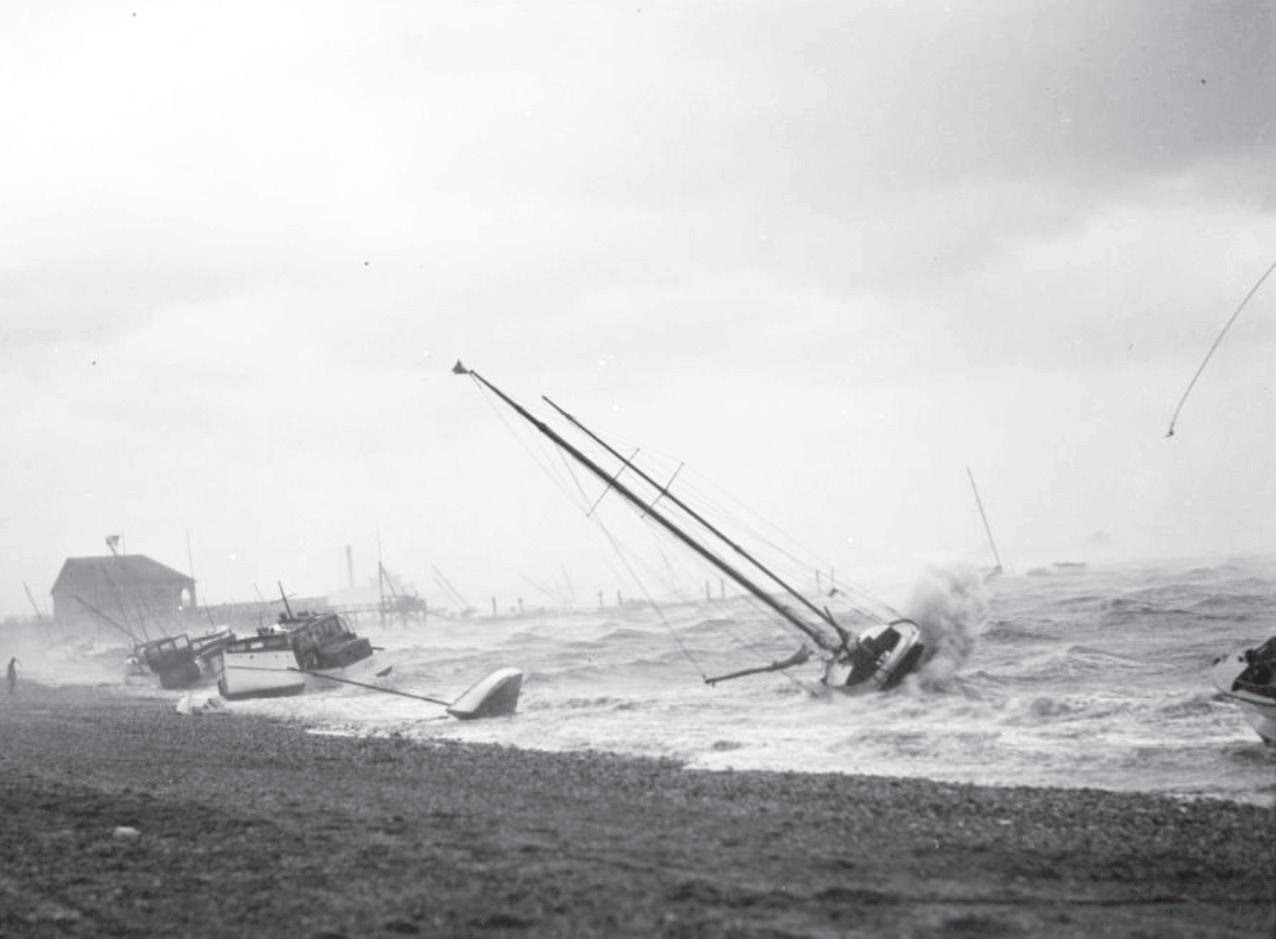
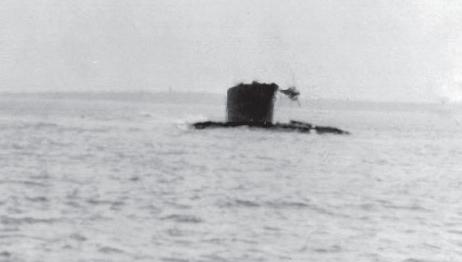

52 SEA HISTORY 184 | AUTUMN 2023
PHOTO BY LESLIE JONES, DIGITALCOMMONWEALTH.ORG
NATIONAL ARCHIVES AND RECORDS ADMINISTRATION ( NARA )
that remained of the station in the wake of the storm.
In Rhode Island, the US Lighthouse Service also su ered its greatest loss of lighthouses and service members. In Narragansett Bay, tidal waves struck the Prudence Island Light, Beavertail Light, Bullock’s Point Light, and Whale Rock Light. Beavertail was severely damaged; the keeper’s wife and son
(right) New London, Connecticut, waterfront the morning a er the storm passed. Ships and boats were smashed against the piers, with several large vessels washing up and over and landing on city streets and railroad tracks.
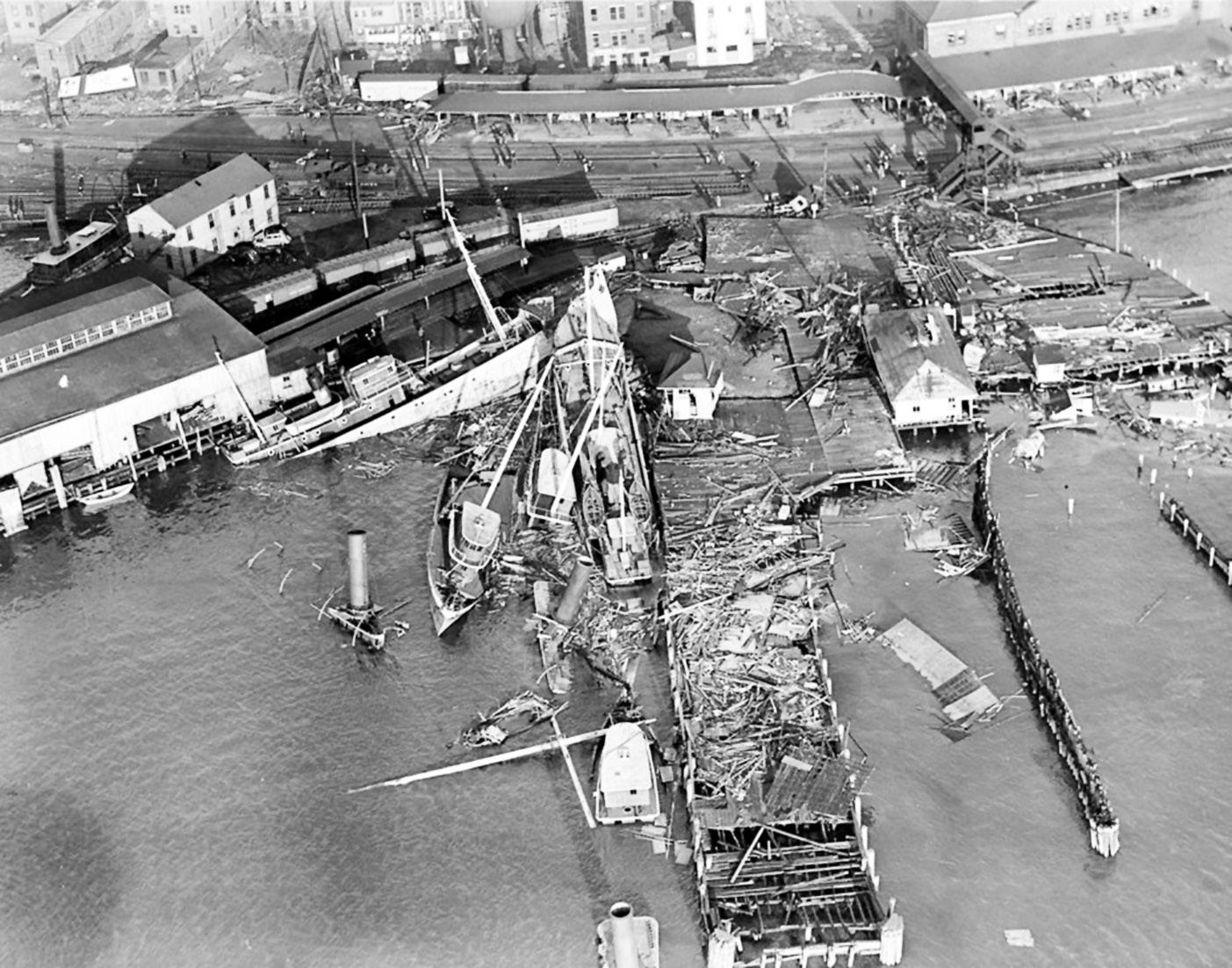
(below) Nearby in East Lyme, homes and debris were tossed across the beaches. Few of the houses along the waterfront were habitable a er the storm; most were just splinters.
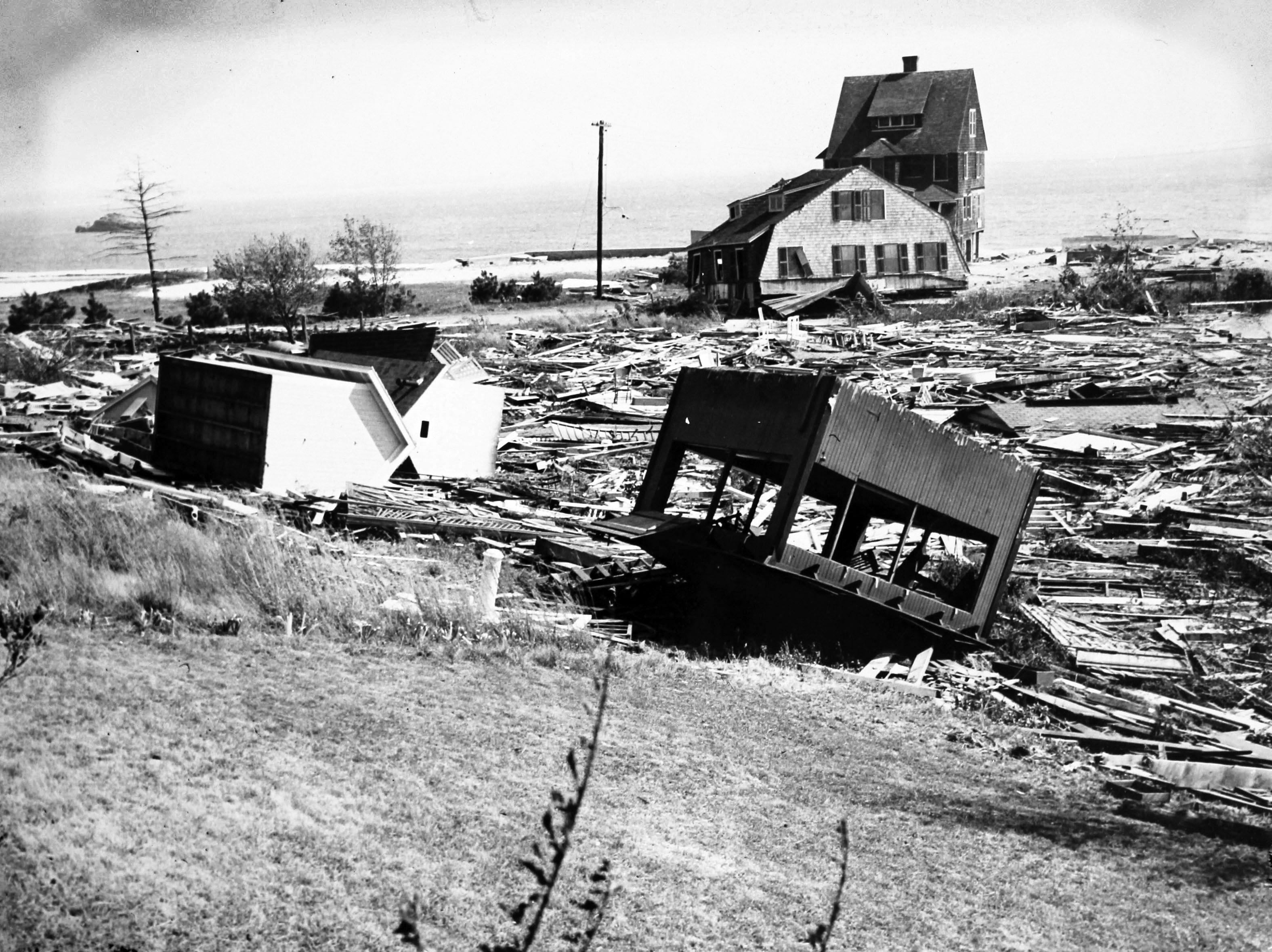
SeaHistory.org 53 NOAA NATIONAL WEATHER SERVICE
NATIONAL ARCHIVES AND RECORDS ADMINISTRATION ( NARA )
drowned at Prudence Island. Tidal waves stripped the sides o of Bullock’s Point Light, which was later decommissioned and replaced with a skeleton tower lighthouse. Whale Rock Lighthouse was destroyed by a tsunami.

e body of its assistant keeper was never found and the lighthouse never rebuilt.
In Connecticut, the storm cost hundreds of lives and caused tremendous property damage. e western shoreline of the state sustained storm surges of up to 20 feet. At New London’s large Coast Guard station, numerous boats were lost or damaged beyond repair. e Coast Guard Academy also lost some of its watercraft. Even more amazing was the sight of the 200-foot lighthouse tender Tulip washed up on the railroad tracks in downtown New London. e tender had burst its moorings and the surge carried it up on shore. Remarkably, Tulip was later removed and re- oated, and remained in commission until 1945, having served in both world wars.
As the eye of the storm traveled north into the heart of New England, the right side of it hit the coast of Massachusetts from the Rhode Island border to the tip of Cape Cod and up to Boston. Storm surges in the area measured between 18 and 25 feet, and the hurricane’s greatest wave height of 50 feet was recorded at Gloucester. e storm devastated Massachusetts Coast Guard stations and lighthouses along the coast, including boat stations at Gay Head, Martha’s Vineyard, and Cuttyhunk. In New Bedford, the keeper’s wife at the ooded Palmer Island Lighthouse drowned in the storm and, except for the original stone tower, lighthouse structures on Bird Island were swept away. Fortunately, the light was not manned at the time.
As the hurricane made its way northwest toward Canada, it continued to cut a swath of destruction. e
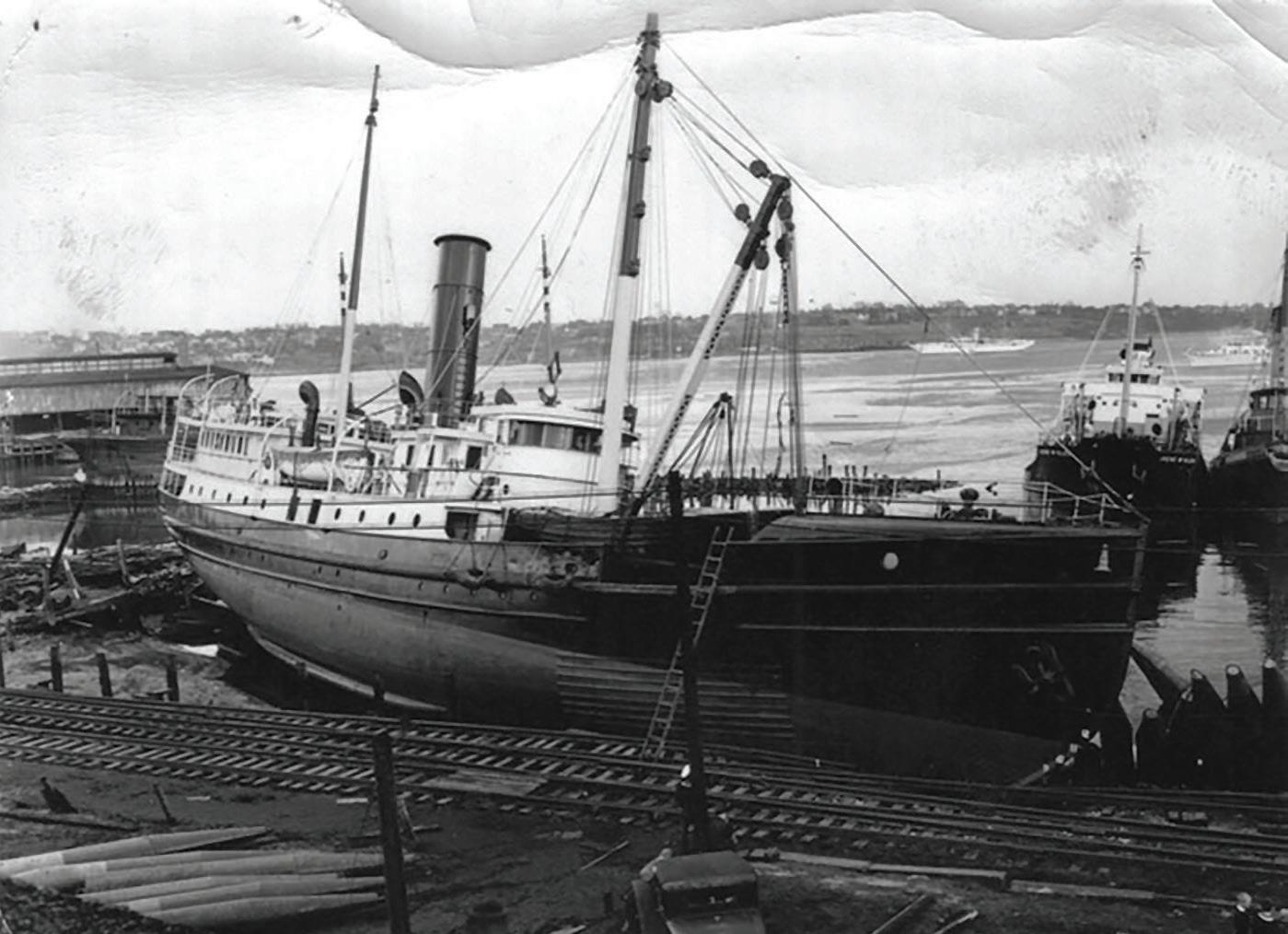
54 SEA HISTORY 184 | AUTUMN 2023
storm
(above) The US Lighthouse Service tender Tulip washed up on shore in New London, Connecticut, blocking local train tra ic. The vessel was recovered a er the hurricane, repaired, and put back into service.
ARMY
OF
(below) The steam-powered tug Gaspee wrecked on the India Point railroad bridge in Providence, Rhode Island, during the storm. It wasn’t until 2001 that the wreckage was removed by the Army Corp of Engineers when the bridge was being demolished.
CORP
ENGINEERS GROTONCT.GOV
toppled two billion trees and destroyed approximately 20,000 homes, buildings, and structures. On eastern Lake Ontario, at the Galloo Island Boat Station, New York, the crew readied their motor lifeboat (MLB) to rescue the one-man crew of a foundering dredge. On board the MLB, Surfman #8 Gerrett Gregory was having trouble breathing the water-saturated air as rain poured down and the wind swept surface water into the air from Lake Ontario. Before motoring into the maelstrom, o cer-in-charge Warrant Boatswain Alston Wilson told his crew, “I know what you’re thinking. e three of us will probably die trying to save one guy who will die also. Get in the boat—we have a job to do.” Fighting 100-mileper-hour winds and heavy seas breaking over the MLB’s stern, Boatswain Wilson maneuvered the MLB beside the dredge and saved the man on board. e dredge later washed up on the rocks, but the
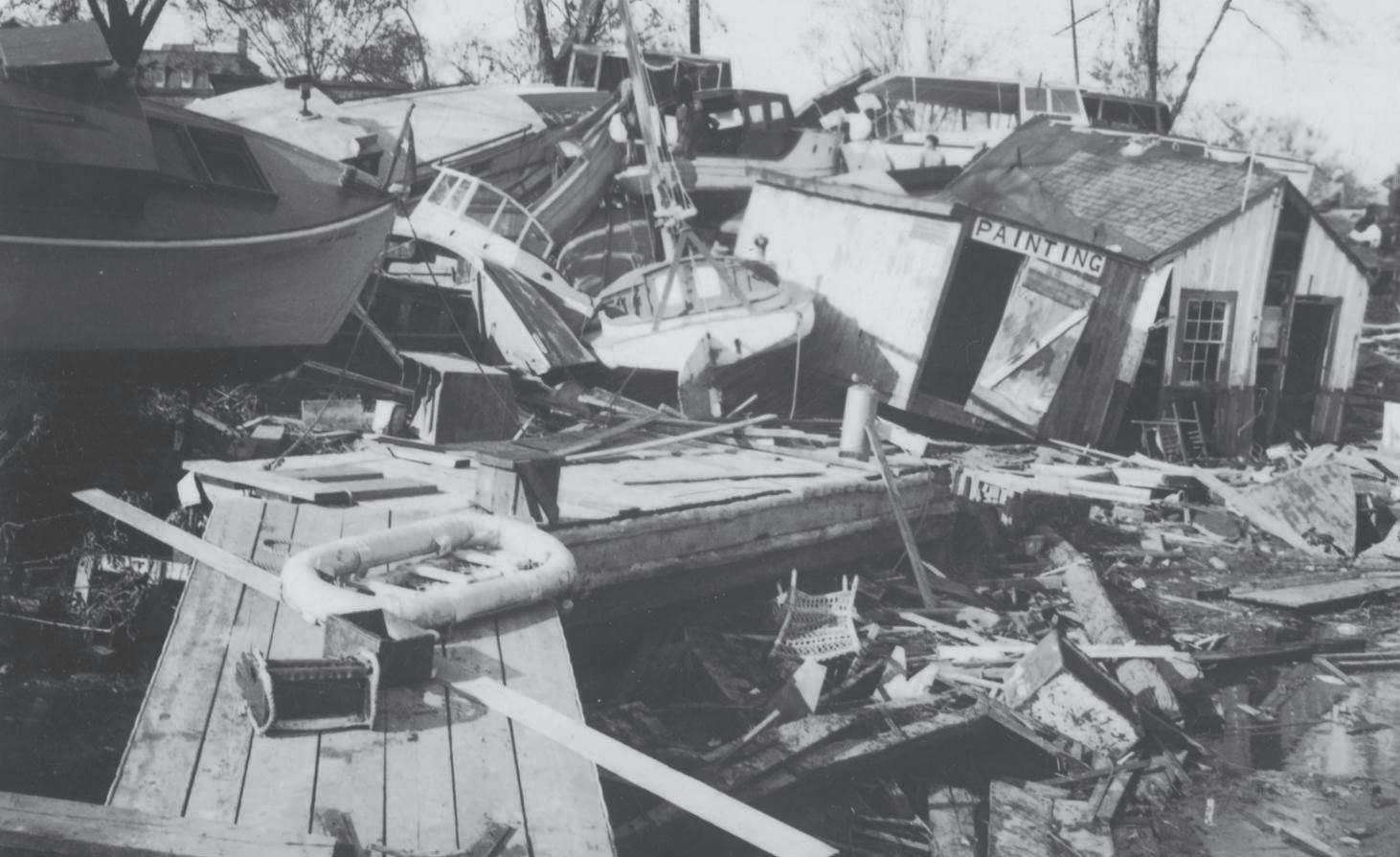
MLB rescue mission had been accomplished without loss of life.
e Great New England Hurricane of 1938 was the most destructive storm to hit the Northeast, devastating the Coast Guard’s boat stations and Lighthouse Service’s lighthouses. In New England, the two services barely survived this battle with one of the worst storms in American history. As one survivor remarked, “I sometimes feel that we have had a preview of the end of the world.” In less than a year, the US Lighthouse Service would merge with the Coast Guard to ght the most formidable human enemy the Service would face in its history.
Today, the US Coast Guard excels at storm-response missions, with its personnel putting themselves in harm’s way every day to complete rescue and humanitarian duties as members of the long blue line.
Dr. William Thiesen serves as the Atlantic Area Historian for the United States Coast Guard. He earned an MA from East Carolina University’s Program in Maritime History and a PhD from University of Delaware’s Hagley Program in the History of Technology. His books include Industrializing American Shipbuilding: The Transformation of Ship Design and Construction, 1820–1920 and Cruise of the Dashing Wave: Rounding Cape Horn in 1860. In addition to his books, over the past 30 years Thiesen has published hundreds of naval and maritime history articles, reviews, essays, and stories in print and online. Dr. Thiesen is a regular contributor to Sea History. He is currently the primary contributor and managing editor of the Coast Guard’s online series, The Long Blue Line, featured weekly on the My Coast Guard website.
(www.history.uscg.mil)

SeaHistory.org 55
NOAA
U er destruction at Pawtucket Cove in Rhode Island.
Marine Tra ic Controller — Susan McDonald Maritime Careers
Susan McDonald is a Marine Tra ic Controller with the Army Corps of Engineers, stationed along the Cape Cod Canal in Massachuse s. She works to ensure the safety of ships and boats as they transit the canal by monitoring their position and establishing directions and guidance as they pass each other.
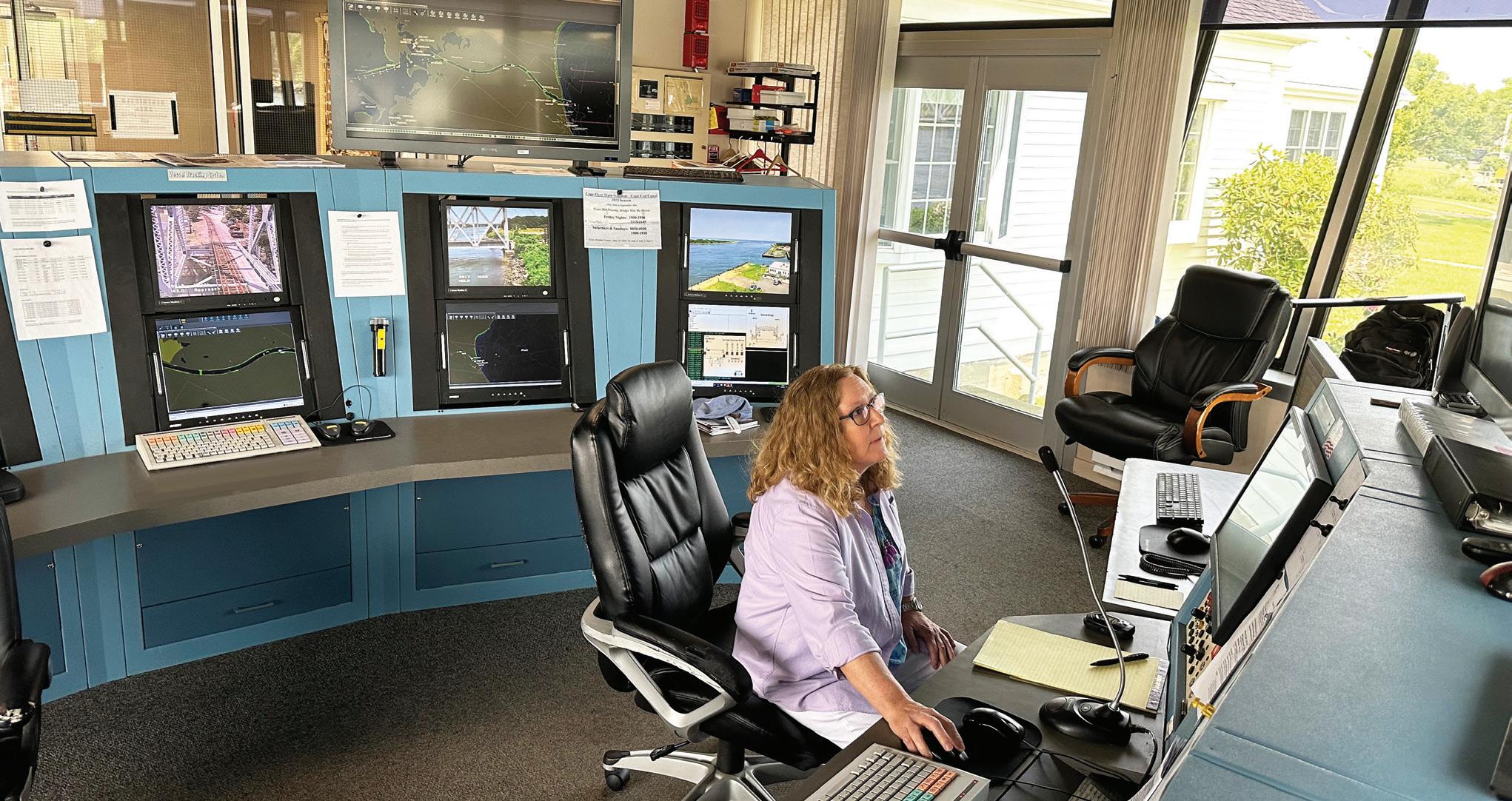
It is not exactly your typical career, and when Susan was younger, not only could she not have predicted she would land this kind of job—she didn’t even know that this kind of job existed!
Susan’s career path hasn’t been a straight line, but it always involved working on or near the water. Her jobs and activities growing up ranged from lifeguarding and windsurfing to service in the US Coast Guard and later working on all kinds of boats. “My father informed me that I had to go to college a er high school and figure out what I wanted to do with my life, but I had no idea.” A er a couple of semesters, she realized that college wasn’t for her. One summer when she was working as a bartender on Block Island—spending all her spare time windsurf-
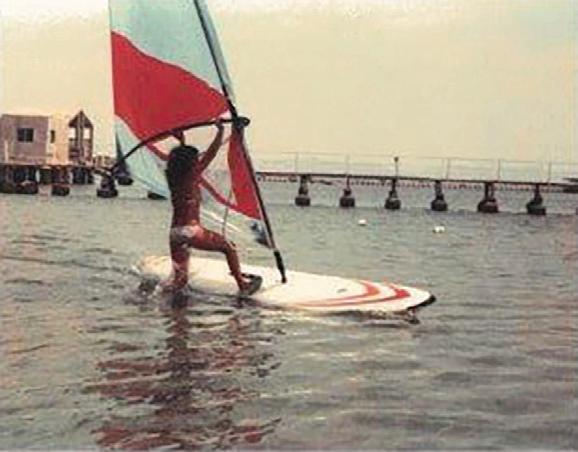
ing—she met some people stationed at the local Coast Guard base: “They showed me their boats and told me stories of rescues they made assisting boaters in distress…. Right then, I knew I wanted to join the Coast Guard, where I could be on the water and help people.”
Susan joined the Coast Guard and was trained in all aspects of vessel operations, boat maintenance, and safety at sea. During her military service, she worked her way up from seaman apprentice aboard the tall ship Eagle to qualifying as a coxswain of a 41-foot boat used for search-and-rescue and law enforcement. Other positions included working as a deck/training o icer on a 110-foot Surface E ect Ship and serving on an aids-tonavigation team maintaining the buoys, lighthouses, and day markers that mariners rely on.
She le the Coast Guard a er eight years and passed her qualifying exams to become a licensed professional mariner. She got jobs on many di erent kinds of vessels: power and sailing yachts, a construction tender, ferries, a brigantine, and even a Chinese junk. When she heard that there were job openings with the Army Corps of Engineers (ACOE) at the Cape Cod Canal, she applied and got a job “operating a 41-foot utility boat on the canal, just like ones I used to run in the Coast Guard.” Later she
SEA HISTORY FOR KIDS 56 SEA HISTORY 184 | AUTUMN 2023
Growing up on the water, Susan loved windsurfing more than anything else, but there weren’t a lot of employers hiring people to do that, so she started to look around at what other kinds of jobs would keep her around the water.
COURTESY SUSAN MCDONALD
PHOTO BY DEIRDRE O’REGAN
became a marine tra ic controller, and she has now been in the control room for five years.
“It took 6 months of supervised training to qualify and be able to stand my own watch. Controllers who are hired with no maritime experience usually qualify within a year. That’s right! Anyone who is willing to learn can train to be a marine tra ic controller. No degree, license, or certificate needed.”
Susan’s “o ice” is right alongside the canal, giving her a front-row seat on all the shipping and boating that transits the waterway. It is hard to pin down what would be a typical day on the job because it varies by day and by season, and controllers have to monitor and deal with weather and mishaps with both mariners and their vessels, and people who use the canal access roads for cycling, walking, and fishing.
The average width of the Cape Cod Canal is only 480 feet. The currents can be very strong, and they reverse direction with the tide change. In addition to recreational boat tra ic, very large ships transit the waterway, and the marine tra ic controllers monitor the water depth and figure out the clearance beneath each vessel’s keel to prevent them from running aground. Above the water, there are three bridges that cross the canal; not all ships can fit underneath them. One of the bridges is a railroad bridge that gets lowered when trains come through. The controllers dispatch park rangers, patrol boats, and emergency personnel to respond to incidents, distress calls, alarms, or any other emergencies. There’s always a controller on duty—24 hours a day, 365 days a year. The crew rotate through shi s, and there are plenty of times when one has to work weekends or holidays.
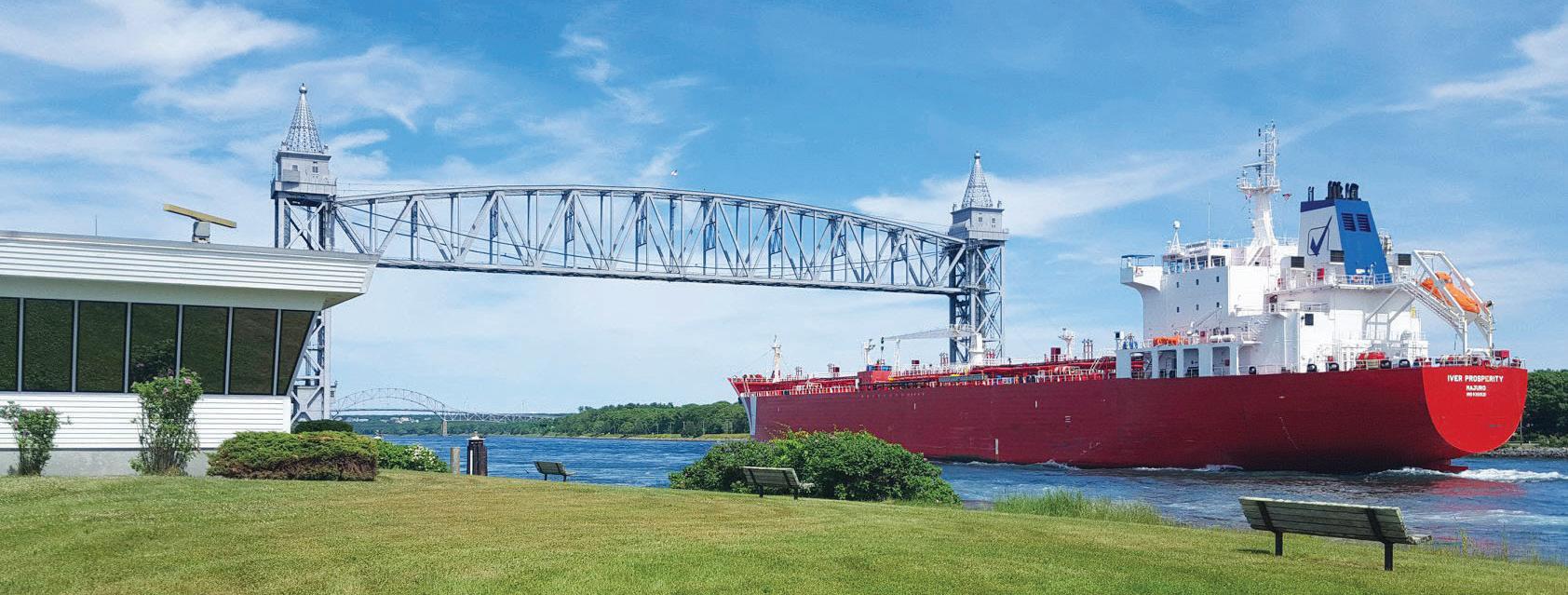
Summer is busy, even hectic, as there are a lot more recreational boaters on the water in addition to the regular commercial ship tra ic. Whales swing by on occasion, which requires the controller to radio all vessels in the area to keep their distance and slow their speed until the whales are safely out of the shipping lanes. Winters are more quiet, but the occasional snowstorm and ice floes in the canal can make things… interesting
“On a typical shi , I will relieve the watch and immediately tuck into managing all these various activities. We are required to maintain vessel ‘active summary reports,’ which include checking in all vessels on the VHF radio, logging their last port of call, next port of call, dra , master’s last name, arrival time and date, departure time and date, transit direction, and the direction of the current at that moment.... The watches go by fast, and at the end of my shi it’s a nice feeling to know that I was of service to all who visited or transited the canal that day, be it vessels, pedestrians, animals, or rail tra ic.

I have been a sailor and professional mariner for most of my life, but I do appreciate that in my role as a marine tra ic controller, I get to go home at the end of my shi . Home is a place many mariners see li le of, so I’m grateful for being able to go for a hike a er work with my dog, Bowline, or have dinner with family and friends, not to mention a good night’s sleep.”
(www.usace.army.mil/careers)
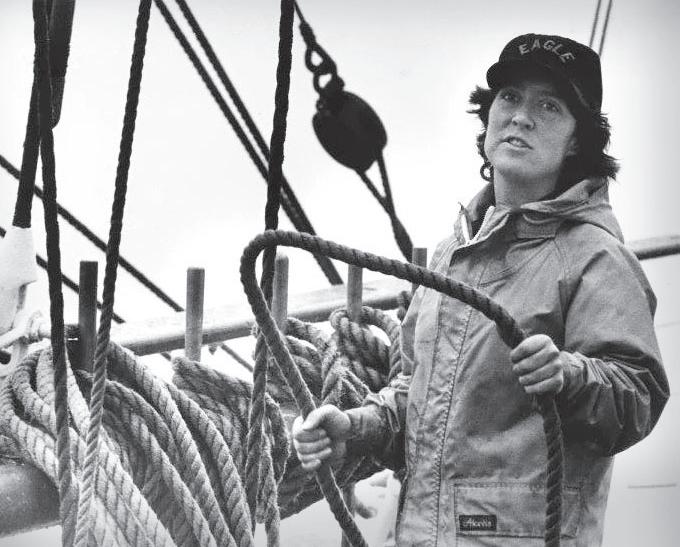
SeaHistory.org 57
COURTESY ARMY
OF
Talk about an o ice with a view! The Cape Cod Canal Marine Tra ic Control field o ice is run by the Army Corps of Engineers and is manned by civilians.
CORPS
ENGINEERS
Susan served in the Coast Guard, where she was trained on a variety of vessel types. One of her first duty stations was as crew aboard the USCG barque Eagle .
COURTESY SUSAN MCDONALD
Welcome to the 2023–24 school year!
by Heather Purvis, NMHS Manager of Educational Programs
Vikings in Arkansas? In April, four middle school students from Pinnacle View Middle School in Li le Rock, Arkansas, dressed in Viking regalia to present “Vikings: A Frontier of Sea Navigation” at the National History Day (NHD) Arkansas state competition. Back in October these young historians, with the guidance of their teacher, Lisa Sabir, embarked on a research journey exploring the world of Viking navigation. They earned a spot at the state competition, where they were presented with the Junior Division Special Maritime Prize from NMHS.
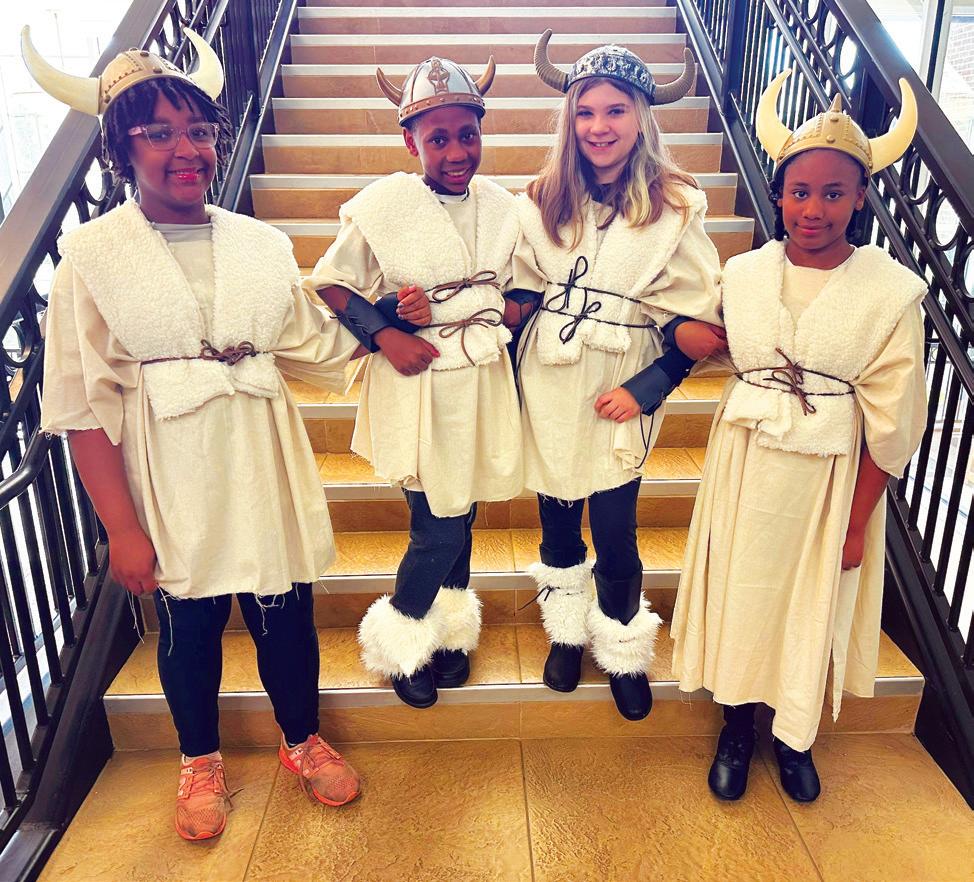
In all, more than half a million students developed performances, exhibits, papers, websites, and documentaries related to the theme: “Frontiers in History: People, Places, Ideas.” The results are always impressive, providing a refreshing and inspiring young perspective on historical events. Thanks to e orts by NMHS Chairman Emeritus, Ronald Oswald, we have celebrated the outstanding achievements of these young historians for more than twenty years. The Society awards Special Maritime Prizes in both junior and senior categories: a one-year membership / Sea History subscription and recognition on the NMHS website. Additionally, first-place projects receive a $100 scholarship, while second-place winners are awarded a $50 scholarship.
“Vikings: A Frontier of Sea Navigation” won the 2023 NMHS Junior Special Maritime Prize from Arkansas for a group performance. (L to R) Tiana Ward, Treveon Russell, Grace Albright, and Tre’Nae Allen. Congratulations!
This year, 53 students from 16 states explored frontiers in naval history, maritime scientific innovations like submarines and the aqualung, and broader themes that included the maritime frontiers of the British Empire and the construction of the Erie Canal. Personal frontiers were also celebrated, with projects focusing on Ernest Shackleton’s Antarctic expedition and the inspiring story of Gertrude Ederle, the first woman to swim the English Channel. Of course, students’ fascination with certain subjects, like pirates or the sinking of the Titanic, never wanes; every year there are always a couple of projects dedicated to these favorites!
As National History Day commemorates its 50th anniversary this year, the theme for 2024, “Turning Points in History,” invites students to explore ideas, events, and actions that have sparked transformative change. Now is the time to get started! Students can find guidance on research and how to prepare on the NHD website, www.nhd.org. Projects on maritime-related topics by students from participating states will be considered for the NMHS special prizes.
Students from Virginia getting pumped up for the finals for the National History Day competition at the University of Maryland.
For more information on National History Day and to learn about the competition in your state, visit the NHD website at www.nhd.org. For information on the NMHS Special Maritime Prize (or to get involved as a volunteer judge), please contact NMHS at 914-737-7878 or via email at nmhs@seahistory.org.
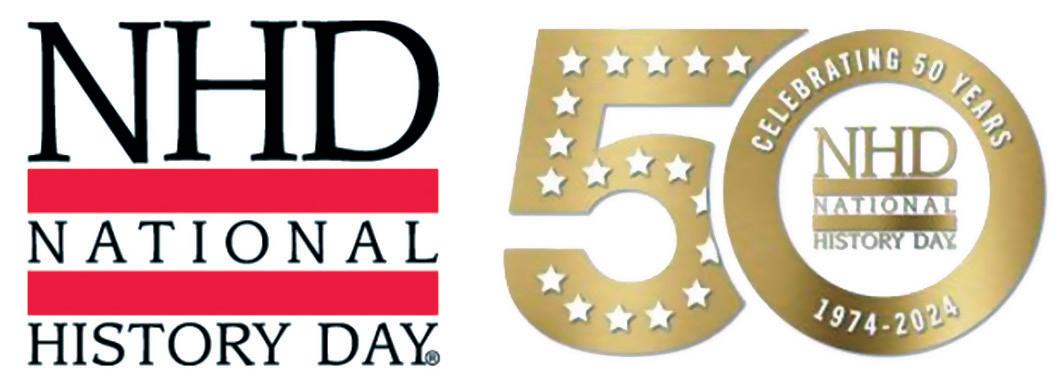
By recognizing young historians like those from Pinnacle View Middle School, NMHS’s Special Maritime Prize is fostering interest in historical exploration and keeping the allure of maritime history alive and well!
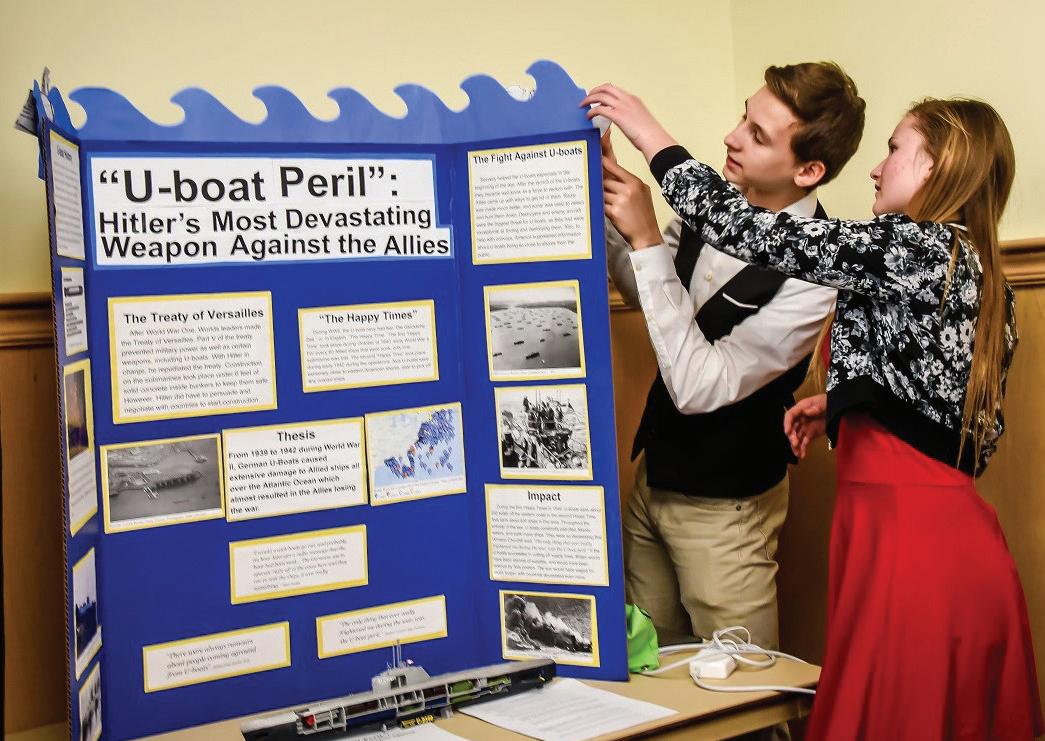


58 SEA HISTORY 184 | AUTUMN 2023 COURTESY LISA SABIR
This year, the National History Day competition is celebrating its 50th anniversary, and now is your chance to get involved.
LUCAS FRECHETTE, MAINE NATIONAL HISTORY DAY
Lucas Freche e of Maine won First Place for his project, “U-Boats During WWII o the Coast of Maine.”
NHD.ORG
ANIMALS IN SEA HISTORY
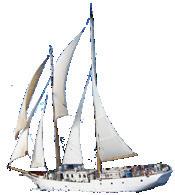
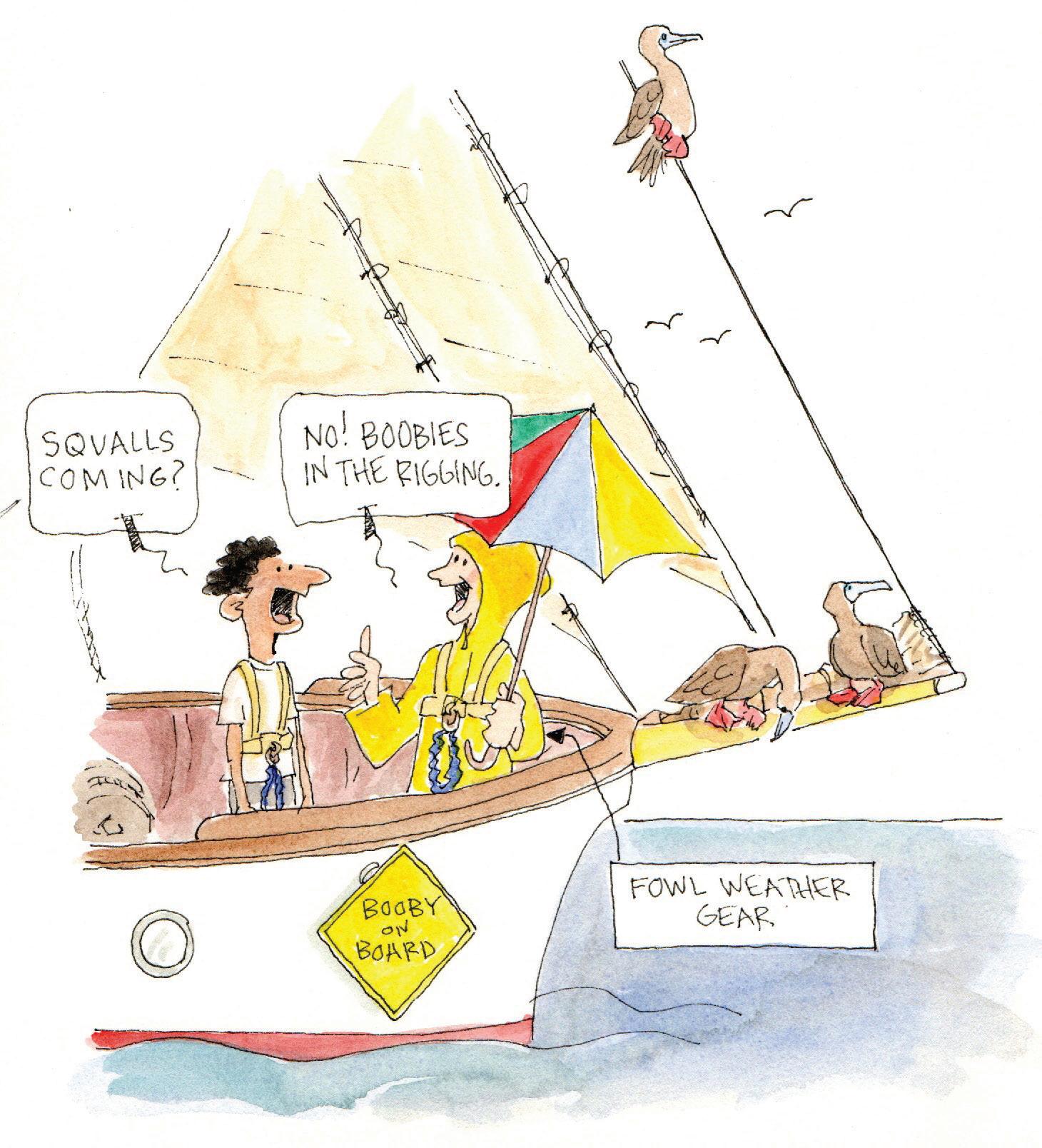 by Richard J. King
by Richard J. King
Last June, the sailing school vessel Robert C. Seamans got underway from Honolulu, bound for Fiji in the South Pacific. The ship’s crew comprised college students, deckhands, oceanographers, two fish specialists, and one marine policy expert, as well as the ship’s regular professional crew, all embarking on an expedition to study oceanography as they crossed thousands of miles of open ocean. Rich King was onboard and sent us this report.
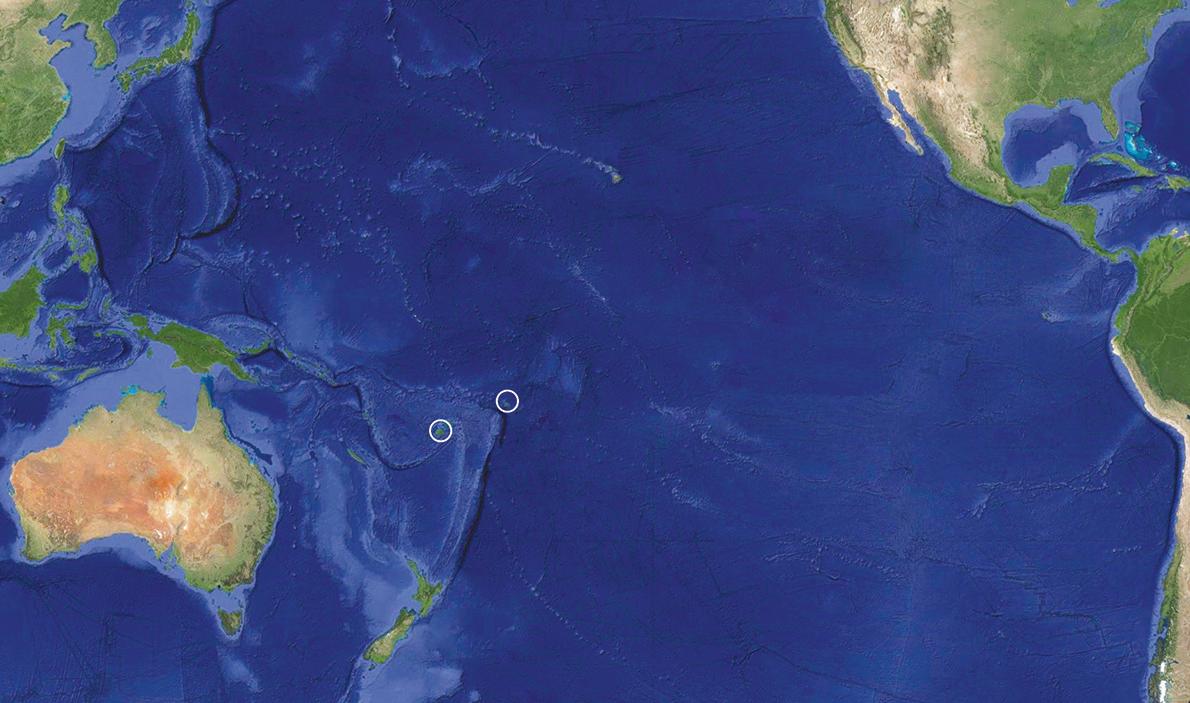
On the first day out of port, with the green mountains of Oahu still visible astern, a couple of seabirds alighted on our topsail yard. This seemed auspicious—a good luck charm. These were red-footed boobies, which we identified because of, well, their red feet. But it didn’t take long until many of the ship’s crew began to think of their arrival as less than a good omen.
Within a day or two, we had more than two dozen red-footed boobies hanging out on the yards and rigging, and on the furled jib on the bowsprit. Facing into the wind, the seabirds balanced on ropes or wire stays as they slept at night or preened their plumage during the day. They were close enough for us to observe their beautiful teal and pink facial coloring and the range of white, grey, and brown plumages in adults and

SeaHistory.org 59
USA
GOOGLE MAPS
AUSTRALIA
AOTEAROA / NEW ZEALAND
Samoa Fiji
Oahu, Hawai’i
juveniles. It was spectacular to watch the boobies swoop o their perches and try to nab flying fish gliding across the waves. At other times to catch fish, the boobies hovered over the water, tilting their heads to look down, and then quickly folded their wings to dive, plunging into the sea from several feet up.
The problem, however, was their guano (a.k.a. poop). The boobies spritzed day and night, bombing the lookouts and anyone else who happened to be on the foredeck. The guano stained almost everything on the bow: lines, deckhouses, bulkheads, laundry, life rings, the deck, and the people onboard. One crewmember got hit right a er taking an outdoor shower. Another got spla ered in her bunk by an impossibly angled shot that got below deck through a bu erfly hatch. Soon people began shaking the rigging to try to get them to leave and came to resent the hours of extra scrubbing of the deck.
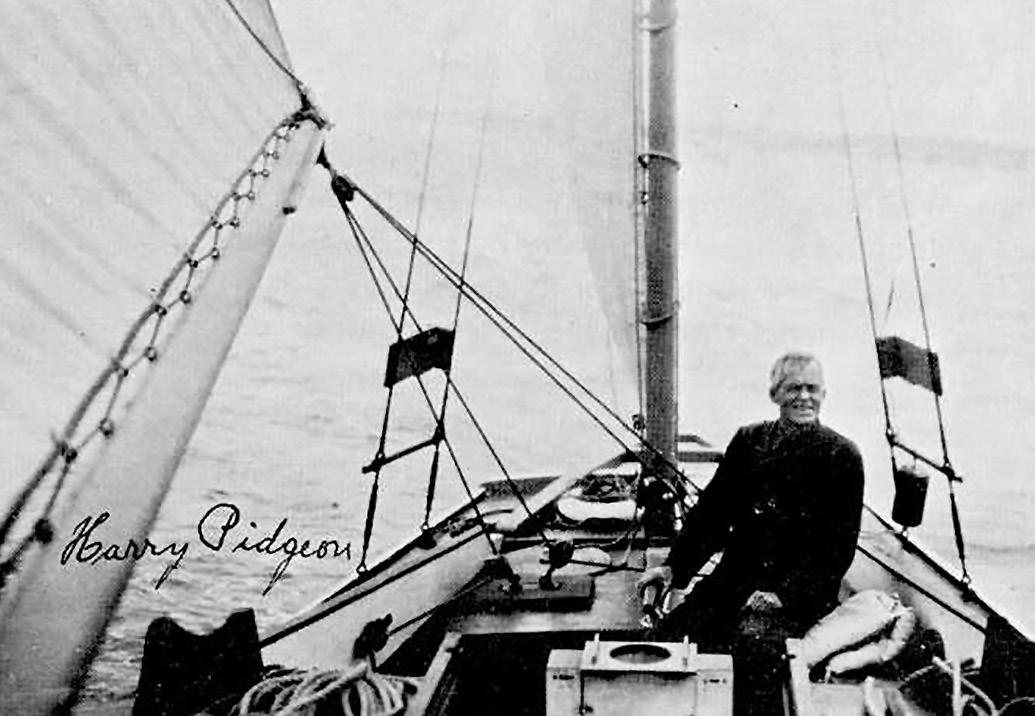

Closely related to gannets and pelicans, there are six species of boobies. They do not roam the seas for months at a time like the albatross, but they tend to have a much larger range away from their home islands than other tropical seabirds, such as frigatebirds or terns. Due to their lesspredictable foraging trips, boobies were not as useful to the traditional Polynesian navigators, who knew them as t ākapu, a name found throughout many South Pacific languages. For centuries, boobies have been known to hitchhike aboard ships and even small boats as they crossed the Pacific Ocean.
The English name “booby” perhaps comes from early mariners who considered them foolish and easily captured. In 1634, Sir T. Herbert wrote: “One of the Saylers espying a Bird fitly called a Booby, he mounted on the topmast and took her. The quality of which Bird is to sit still, not valuing danger.” Harry Pidgeon, who sailed alone around the world twice in the 1920s and ’30s on a 34-foot boat he built himself, wrote about how two boobies lived on his boat for nearly a month as he sailed from Panama to Los Angeles. Just as we observed aboard our vessel, they came back to his boat each night to sleep. He loved having them on board, gave them names and fed one of them flying fish by hand. He fancied that they warned him about sharks and did not seem to mind the extra cleanup.
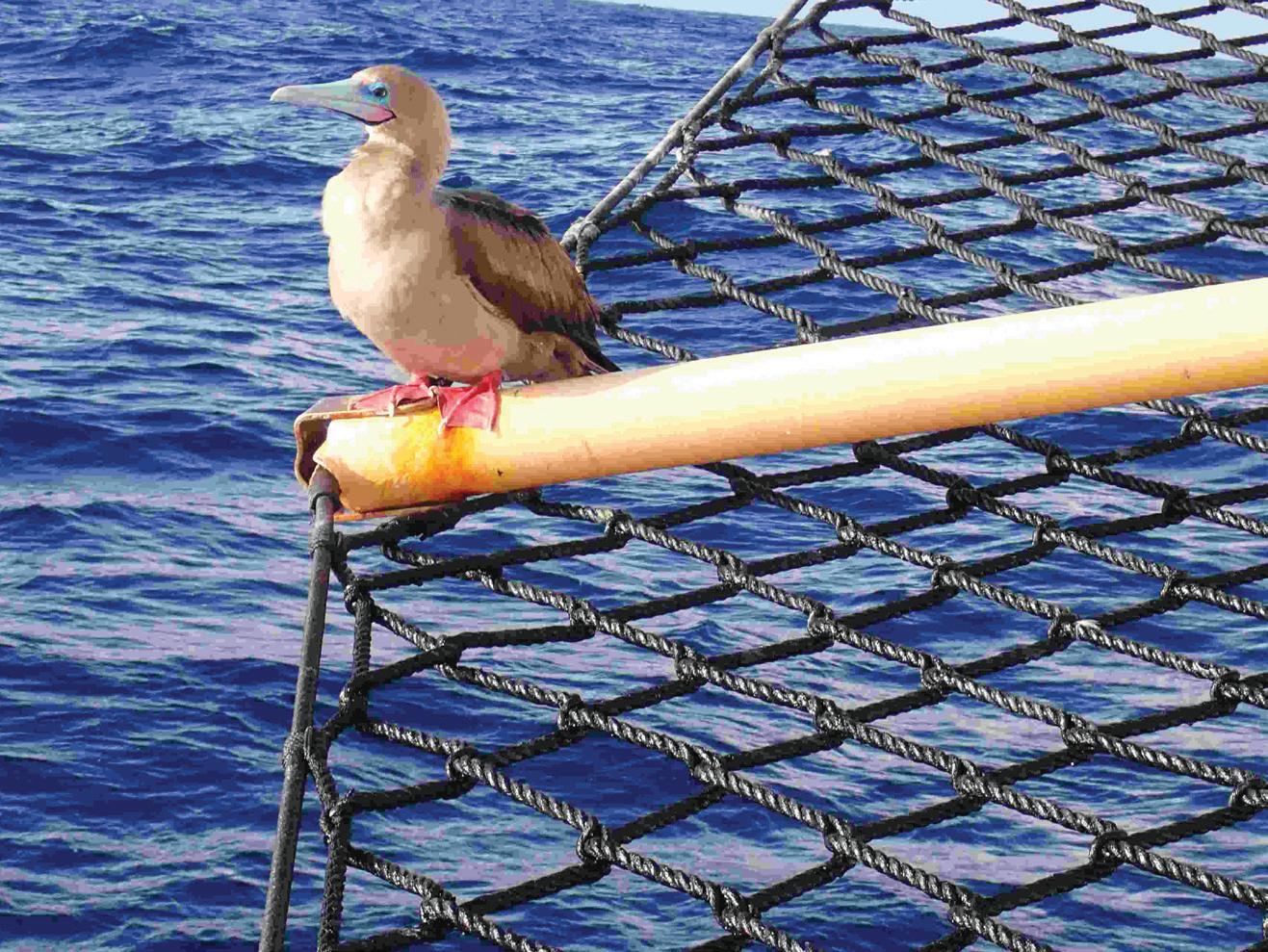
60 SEA HISTORY 184 | AUTUMN 2023
A red-footed booby making itself comfortable on the headrig of the sailing school vessel Robert C. Seamans in the Pacific.
Harry Pidgeon sailed solo around the world—twice— and was happy for the company the boobies provided.
AROUND THE WORLD, SINGLEHANDED BY
D.
&
1932
PHOTO
BY RICHARD J. KING
HARRY PIDGEON,
APPLETON
CO.,
Starting about a week a er we le Hawaii, as we continued southwards toward the equator, the red-footed boobies began to thin out to about ten birds on board each day. One morning, around 0800, we watched two fly o quite deliberately toward the southeast—which was perhaps not coincidentally the direction of Palmyra, a known large red-footed booby rookery about 250 nautical miles away. That same day we also noticed

one of the boobies had a spiral of polypropylene fishing line around its le foot. Sympathy for this individual bird, as well as a few hard rain squalls that helped clean the deck, helped rebuild a li le love for the remaining boobies on board. One crewmember even printed small badges with a dramatic print of a booby that said “Coexist.”
For more Animals in Sea History: see www.seahistory.org, www.educators.mysticseaport.org, or Rich’s new book, Ocean Bestiary: Meeting Marine Life from Abalone to Orca to Zooplankton, showcasing a revised collection of over 17 years of this column.

“Sea History for Kids” is sponsored by the Henry L. & Grace Doherty Charitable Foundation

SeaHistory.org 61
BYREBECCACOX
SHIP NOTES, SEAPORT
In July, a team of archaeologists extracted sections of the oldest known hand-sewn boat in the Mediterranean just o the beach near the Croatian city of Zambratija. An example of the ancient shipbuilding tradition of Istria and Dalmatia, the shipwreck dates to between the late 12th century and late 10th century BCE. is vessel is thought to have been about 40 feet in length; a 23-foot section was found on the seaoor back in 2008 by a local sherman. It wasn’t until a few years later when archaeologists from the Archaeological Museum of Istria and the Conservation Department were alerted and visited the site that it was recognized as a rare surviving example of what was once the standard boat construction method in the ancient Mediterranean. A Franco-Croatian team from the Centre Camille Jullian and the Archaeological Museum of Istria in Pula, Croatia, is at work studying the sections to identify the bers and sewing techniques used in the boat’s construction and identify its age, as well as creating a 3D model. After the sections are desalinated, they will be sent to the ArcNucléart lab in Grenoble, France, for conservation. e boat will eventually be exhibited in a museum dedicated to Istria’s maritime heritage. (Centre Camille Jullian, www.ccj.cnrs.fr) …
e Battleship New Jersey, which operates as a museum ship in Camden, New Jersey, will be headed for dry dock later this year. In June, the state authorized $5 million from the New Jersey Historical Commission for the haul-out. US Navy guidelines for maintaining inactive warships call for the vessels to be dry-docked for periodic underwater hull maintenance once every 20 years. e last time the New Jersey was out of the water for maintenance was 32 years ago, while she was still an active US Navy warship. e New Jersey will be towed across the Delaware River to Philadelphia and remain there for approximately 60–100
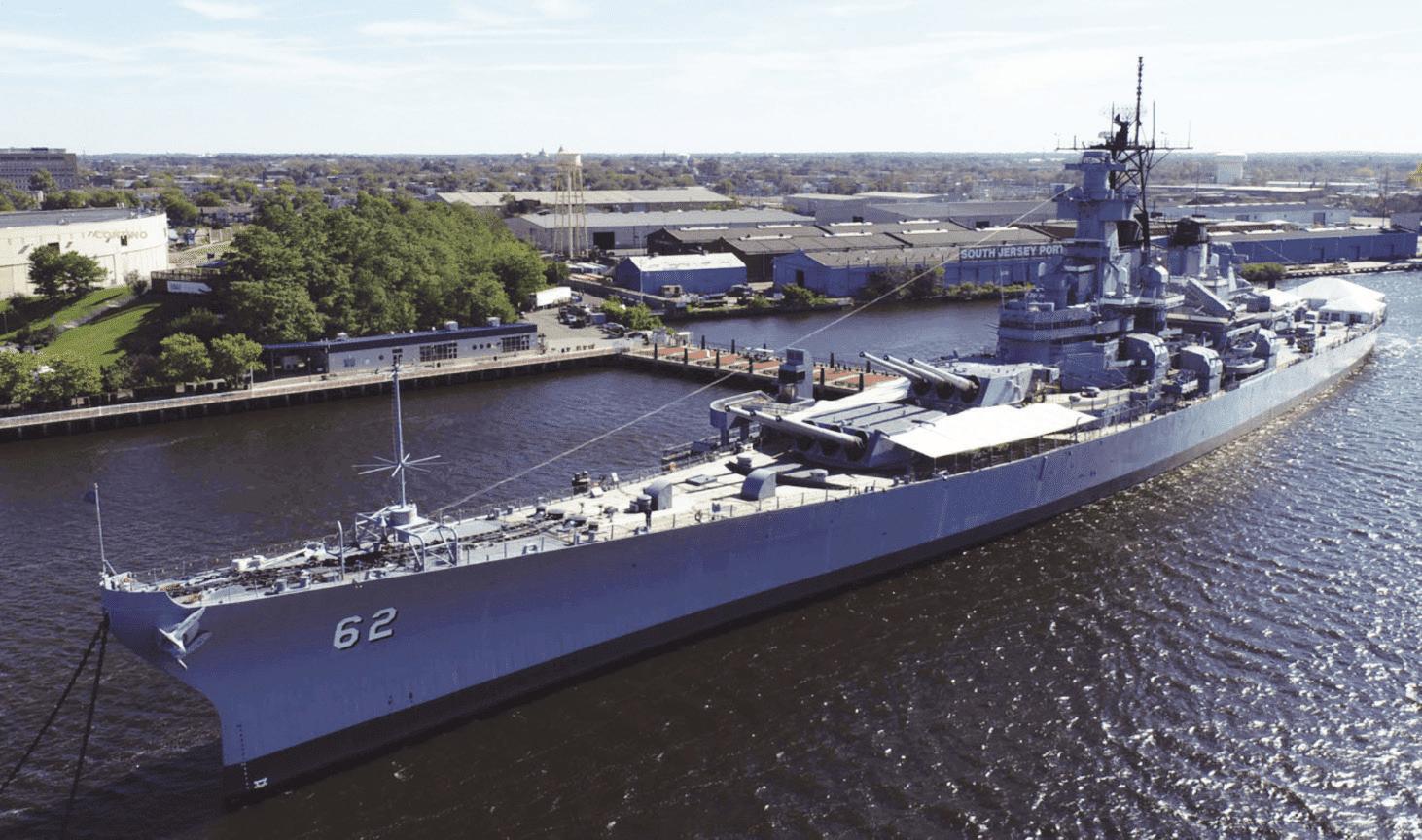
days. ree critical tasks will be undertaken during dry dock: cleaning and repainting the hull to prevent corrosion, repairing corrosion to the 132 “blanks” the Navy welded over the ship’s throughhull openings, and replacing the more than 1,304 anodes that make up a critical part of the ship’s cathodic protection system to prevent the dissimilar metals in the ship’s hull from wasting away. e ship will be dry-docked at the Philadelphia Naval Shipyard’s Dry Dock Number 3, the same site where the ship was originally built between 1940 and 1943 and then reactivated from 1967–1968. e Battleship New Jersey Museum and Memorial is in the process of securing the remaining funds for the shipyard work with the expectation that the ship will be hauled in late 2023 or early 2024. With 19 Battle Stars, the New Jersey is the most decorated battleship in the history of the US Navy. Berthed on the Camden waterfront along the Delaware River, the museum is open every day for tours. (62 Battleship Place, Camden, NJ; www.battleshipnewjersey.org ) …
The remains of an ancient hand-sewn boat o the beach near Zambratija, Croatia, have been recovered and are undergoing conservation.
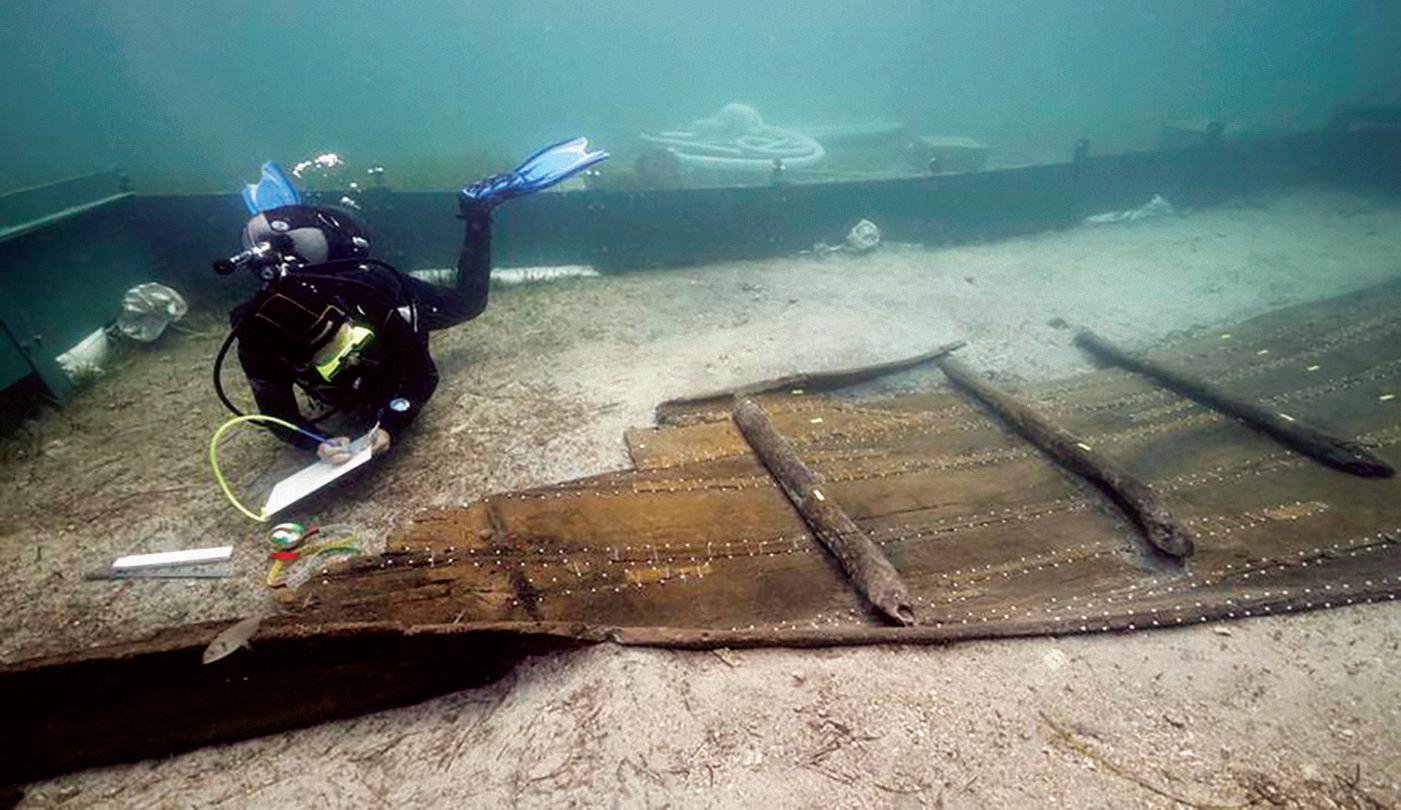
62 SEA HISTORY 184 | AUTUMN 2023
& MUSEUM NEWS
Ba leship New Jersey
COURTESY BATTLESHIP NEW JERSEY
PHILIPPE GROSCAUX / MISSION ADRIBOATS / CNRS / CCJ
e loss of her starboard propeller has led to the cancellation of the brig Niagara’s 2023 sailing season. “Canceling the remainder of Niagara’ s sailing season comes as a great disappointment to PHMC [Pennsylvania Historical & Museum Commission], the Flagship Niagara League, our volunteers, and community supporters,” said Melissa Mann, PHMC’s Director of Historic Sites and Museums. In the fall, Niagara will head to the shipyard, where both
Brig Niagara
incorporating the culture of their homeland. In 1860, Alabama plantation owner Timothy Meaher sent the schooner Clotilda to the West Coast of Africa to secure a human cargo of Africans and bring them back to Mobile. is was in violation of US law, which had banned the importation of enslaved
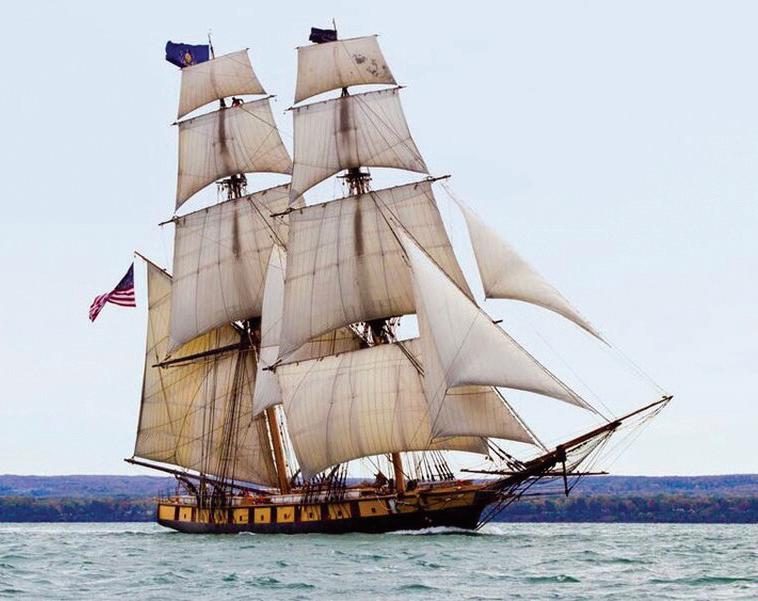
persons in 1808. After disembarking the Africans, the schooner was taken upstream, where it was burned and sunk to hide the evidence of the crime. e remains of the schooner were discovered near the Mobile Bay Delta in 2018 and
(continued on page 65)
propellers will be replaced and new generators will be installed, as previously planned. After weighing its options, the PHMC decided to replace both of the brig’s propellers with custom-fabricated variable-pitch propellers, a process that will take about three months and cost approximately $120,000. For the remainder of the summer season, the ship will be open for deck tours at the Erie Maritime Museum until she departs for Cleveland. Niagara is a faithful reconstruction of Oliver Hazard Perry’s relief agship at the Battle of Lake Erie. (150 East Front Street Erie, PA; www.eriemaritimemuseum.org) … e Africatown Heritage House in Mobile, Alabama, was dedicated on 8 July, the same date on which, 163 years earlier, the slave ship Clotilda arrived in Mobile with 110 captured Africans—52 years after the international slave trade had been outlawed . After they were freed in 1865, survivors of the Clotilda passage pooled their resources and created a new settlement they named Africatown,
Take the Helm of a Legend
You can actually take the wheel of the 1882 National Historic Landmark schooner Grace Bailey.
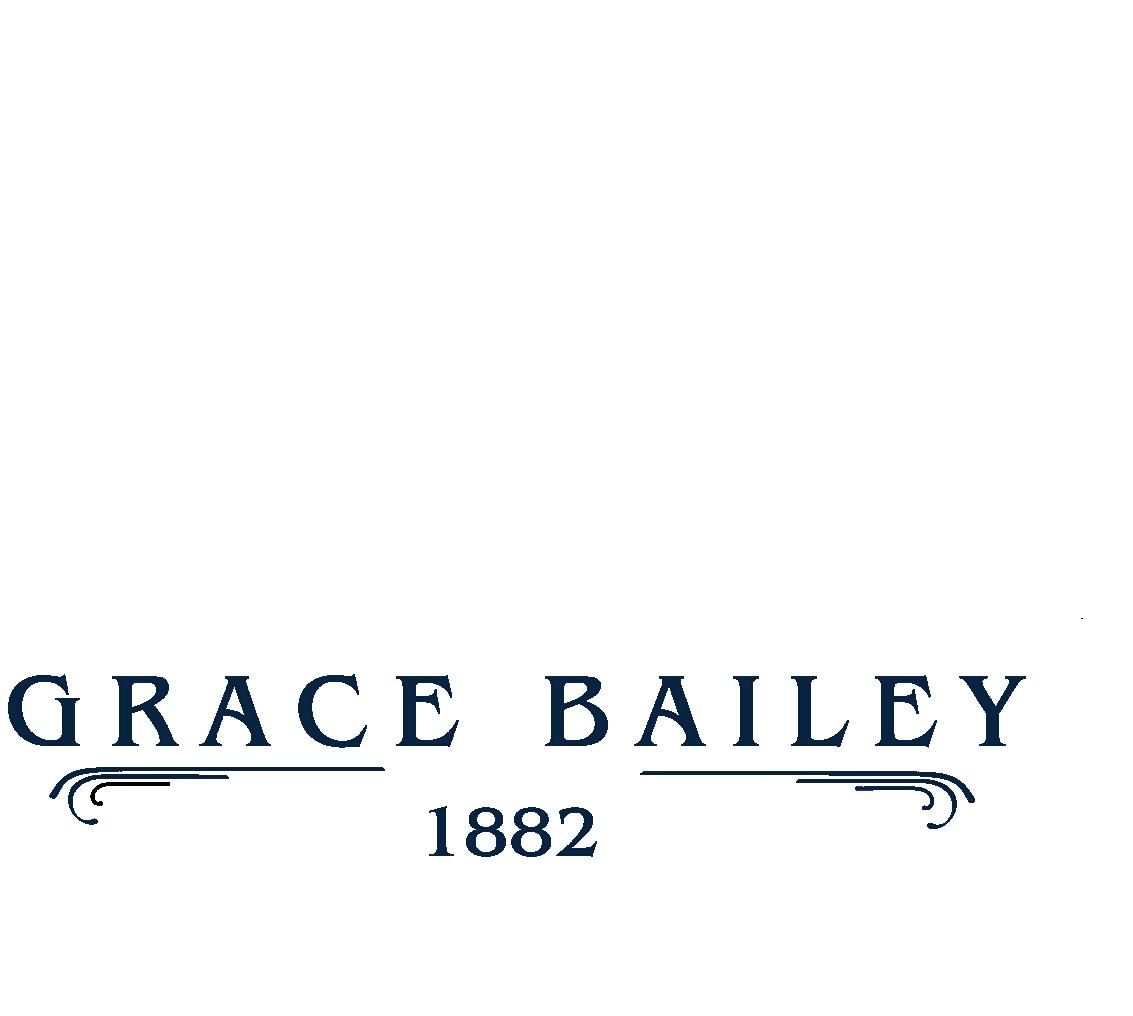
Join us for 3-6 night windjammer cruises throughout the world class sailing grounds of midcoast Maine.
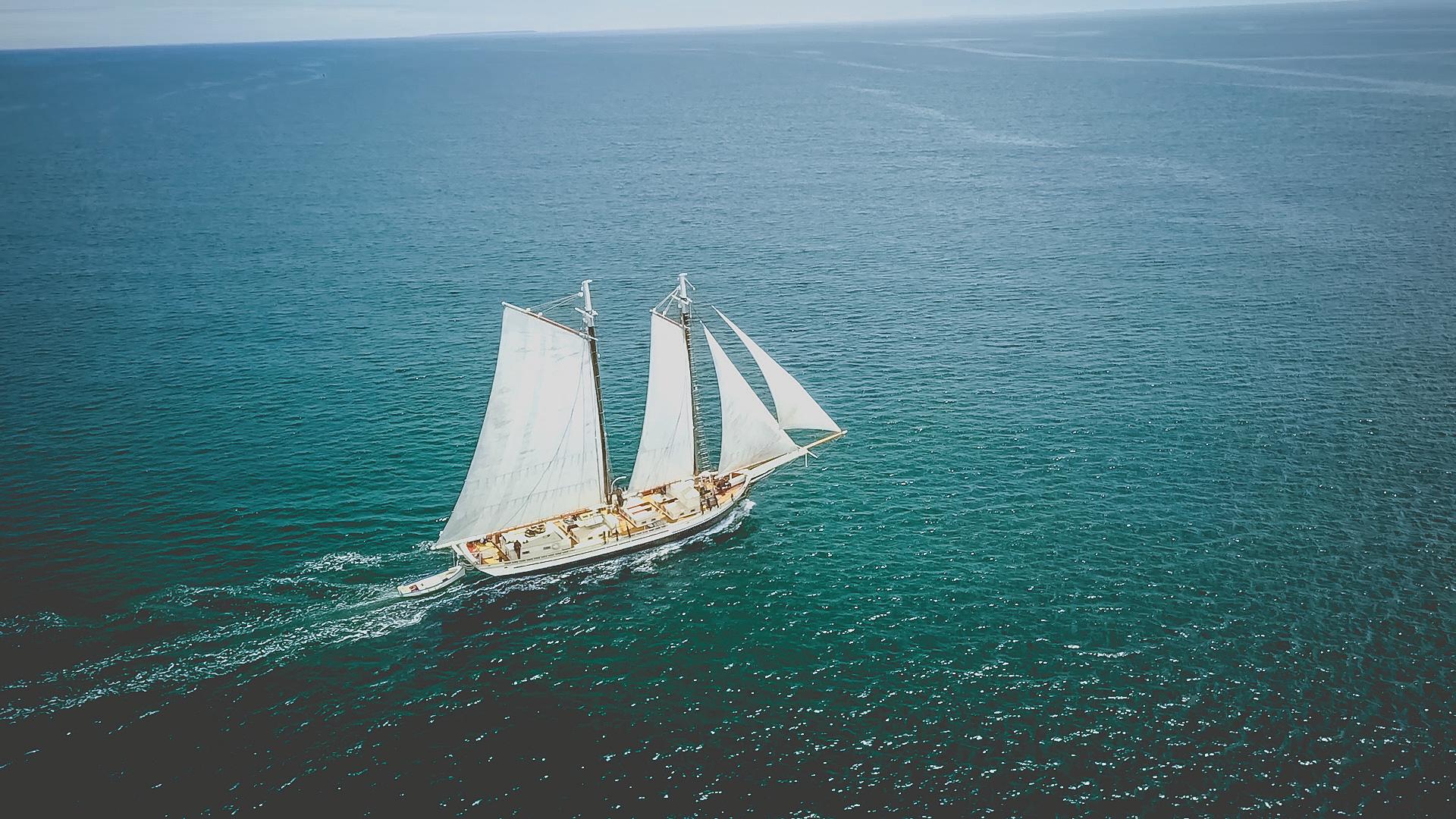
You'll remember this voyage for the rest of your life. We guarantee it. New hosts. Great food. Fresh accommodations. Everything is included. All that's missing is you.
sailgracebailey.com/sh
SeaHistory.org 63
C M Y CM MY CY CMY K
FLAGSHIP NIAGARA LEAGUE
The Newest / Oldest Member of the Fleet— The 1607 Virginia of Sagadahoc
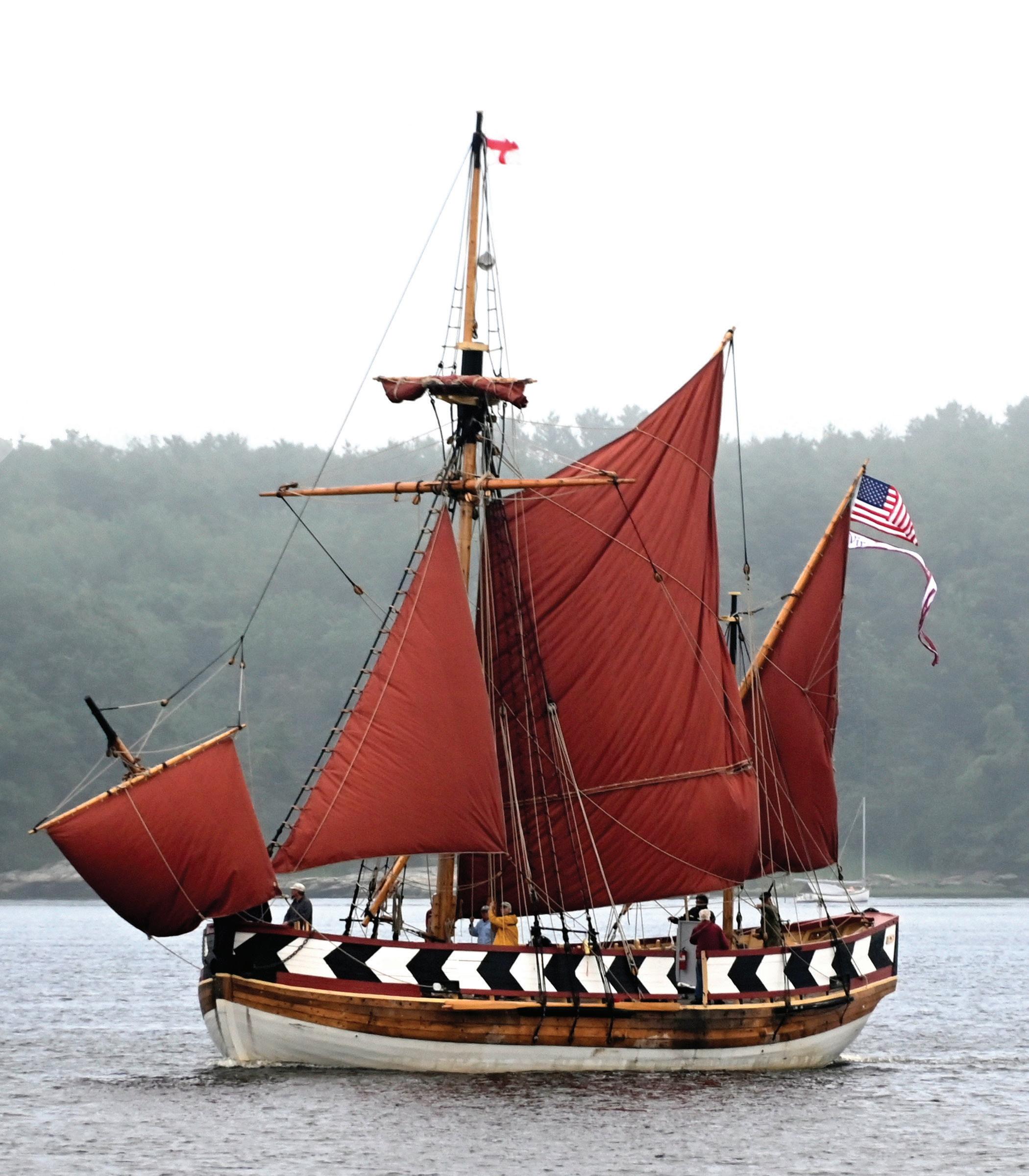 by Keith Spiro, Virginia crewmember, Maine’s First Ship
by Keith Spiro, Virginia crewmember, Maine’s First Ship
e re-creation of the 1607 pinnace Virginia sailed into Boothbay Harbor’s Windjammer Days as the newest ship (but representing the oldest vessel) to participate in the event. e ship—a pinnace—was launched in June 2022. She was built over an 11-year period by an all-volunteer crew. For this coastal voyage—the vessel’s rst—Virginia was commanded by veteran sailing ship master JB Smith and supported by Captains Graham McKay and Dana Leonard, plus a crew of six. In the words of Captain Smith, the trip was “dedicated to all Maine’s First Ship volunteers past and present, who through years of hard work and dedication made Virginia their own.”
e original Virginia was built by colonists on-site in Maine with the intention of using it for exploring the coast and for shing, but ultimately it was used to repatriate some of the colonists when the settlement was abandoned in 1608. After their arrival in England, the vessel was sold to the Jamestown colony and made another successful Atlantic crossing the following year.
Until the ship earns its US Coast Guard certi cation to sail with passengers, only crew can operate the vessel. In the meantime, Maine’s First Ship, the organization that owns Virginia,

has created a robust series of activities and hands-on experiences ashore that honor the legacy and ingenuity of the maritime community that built it.
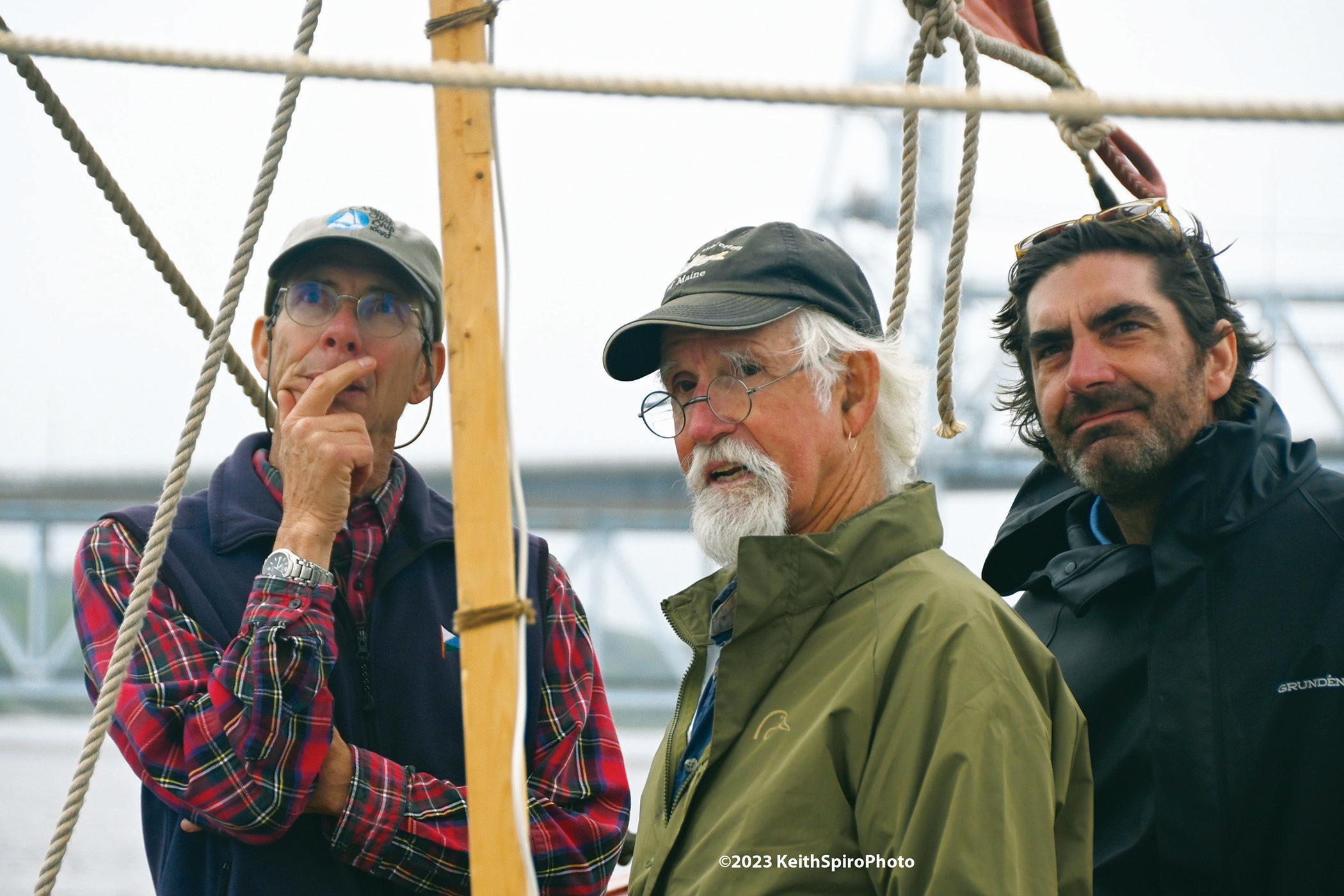
Maine’s First Ship’s role as steward of a historic place and now operator of an eye-catching vessel, serves to revive an important story from early American history. All are invited to learn more about the ship and its activities, volunteer, take advantage of shoreside and online programs, sign up for the newsletter, or consider membership.
( e ship’s home wharf and visitor center are located at the Bath Freight Shed, 27 Commercial Street, Bath, Maine. www.mfship.org)
64 SEA HISTORY 184 | AUTUMN 2023
JB Smith (center) served as the trip’s o icial captain. Captains Dana Leonard (le ) and Graham McKay (right) assisted, plus a crew of six.
Virginia sailing up the Kennebec River on her return to Bath, her homeport.
PHOTO BY KEITH SPIRO
PHOTO BY KEITH SPIRO
(continued from page 63)
authenticated by the Alabama Historical Commission and SEARCH Inc. Artifacts recovered from that site are incorporated into the 2,500-square-foot exhibit, Clotilda: e Exhibition, which tells the broader story surrounding the 110 individuals, from their roots in West Africa to their voyage in Clotilda, and the history that unfolded after their arrival. e history of the slave trade of the region, the shipwreck, the creation of Africatown, and its community today are all covered. e museum was built by the Mobile County Commission; it is a collaborative project of several local organizations including the Alabama Historical Commission, the History Museum of Mobile, the City of Mobile, the Mobile County Public School System, and the Mobile Area Lodging Corporation. (Africatown Heritage House, 2465 Winbush Street, Mobile, Alabama; www.clotilda.com) … e Navy Department Library is on the move! e Department of the Navy has refurbished two former ordnance factories and warehouses in the Washington Navy Yard to transform them into a new Naval History and Research Center. e new state-of-the-art twostory structure meets the National Archives and Records Administration (NARA) Directive 1571 for archival requirements for temperature, humidity, and daylight control, and provides a suitable environment for protecting and presenting naval art, artifacts, and the Navy’s archaeological collection.
e Navy Department Library began moving its personnel and assets into the new building in May and is expected to be completed by press time. e library’s collection includes 114,000 books, 374,000 manuscripts, and 189,000 periodicals, with an emphasis on naval, nautical, and military history from around the world. (Email NHHCNavyLibrary@us.navy.mil or call 202
433-4132 for information on the new library’s opening date and requirements for entry. Washington Navy Yard, 1022 O Street SE, Washington, DC; www. history.navy.mil) … Michigan’s Great Lakes Shipwreck Historical Society (GLSHS) announced on 11 July the discovery of the shipwreck of the tug Satellite, lost in Lake Superior on 21 June 1879 e GLSHS team was joined by Josh Gates of the Discovery Channel’s Expedition Unknown series to search for two World War I-era minesweepers that sank in 1918, taking 80 men to the bottom. When the research team was about 30 miles NW of Whitesh Point, Michigan, it stumbled upon
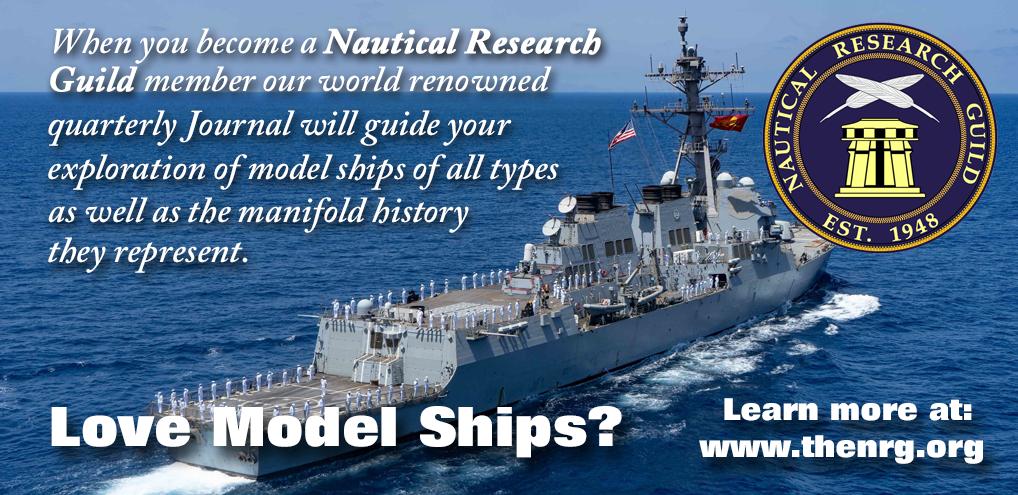
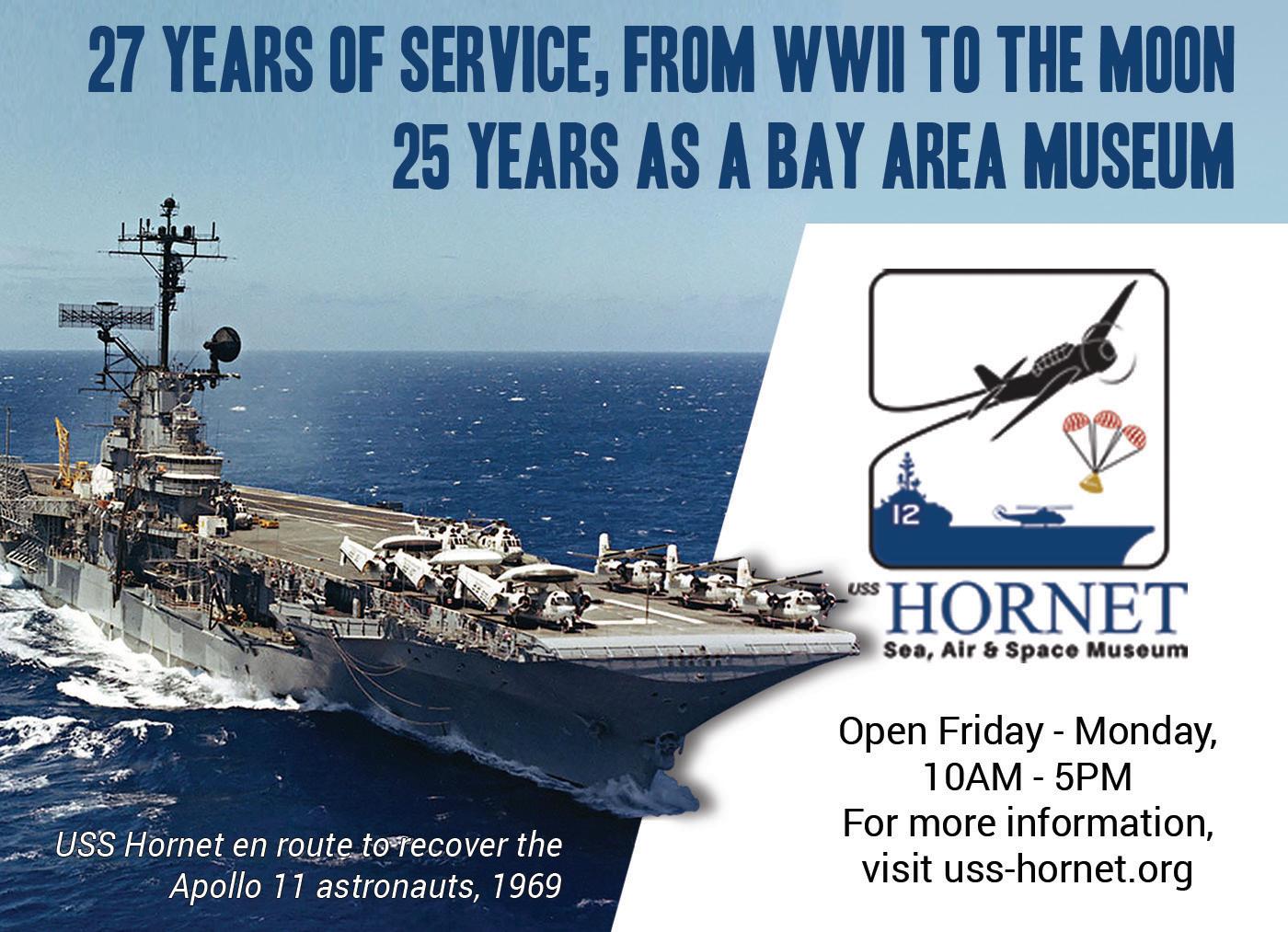
a di erent wreck in approximately 300 feet of water. e team rst saw the wreck site via its sonar image and then sent ROVs to ground-truth the target.
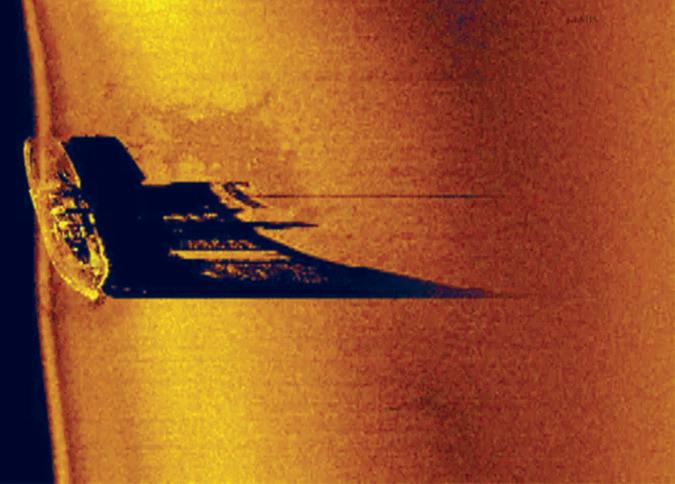
SeaHistory.org 65
Sonar image of the tug Satellite on the bo om of Lake Superior.
COURTESY GLSHS
For now, any further documentation will be via ROV and there are no plans to recover any of the vessel’s remains.
ere are no known images of the Satellite from before her sinking, but she was described as being ornate and beautiful. e tug occasionally carried passengers and cargo; there was no loss of life during the wrecking event. (Look for updates on the GLSHS website: www.shipwreckmuseum.com.) … e Port of Everett, Washington, held an event on 15 June to commemorate the career of schooner/tug Equator is spring, the Port determined that the remaining structure could not be saved and would be dismantled at the end of summer. After a long career, rst as a sailing vessel and later converted for towing, Equator was abandoned in 1956 and then put in place, with other derelict vessels, as part of the breakwater at Jetty Island, a man-made island and park just o the Everett waterfront. She was rescued in 1967 by Eldon Schalka, a local resident, who rallied friends and supporters to save the historic vessel, which, among other notable aspects of her career, once carried author Robert Louis Stevenson and his wife on a voyage between Hawaii and the Gilbert Islands, during which time he conceived of his novel, e Wreckers Schalka and others succeeded in getting the vessel named to the National Register of Historic Places in 1972. Over the years, plans were made to restore the boat and return her to a seaworthy condition, but funding was never acquired, and the hull was moved from place to place, eventually set up for display under a protective but openwalled shed near the Port of Everett boat launch. e stern collapsed six years ago, and the hull has been deteriorating steadily since. As part of the decision to dismantle the vessel, a team from Texas A & M’s Nautical Archaeology Program was invited to visit and document the hull in early June, which
they did using high-de nition photogrammetry, 3D laser scanning technology, and traditional recording methods.
e mid-June open house was an opportunity for the public to get one last look at Equator, talk to the archaeology team, and learn about the Port’s plans to preserve her memory. Going forward, plans are in the works to create an interpretive display, which will include a 1:48 scale model of the vessel. Equator was designed and built as a two-masted schooner by Matthew Turner in 1888; she subsequently cruised under various
charters in the South Paci c. She was tted with a steam engine for use in the Alaska sh-packing industry in 1897 and later converted for use as a wire drag vessel for the Coast and Geodetic Survey. After 1941 she was working as a towboat before being abandoned in 1956. (www.portofeverett.com) …
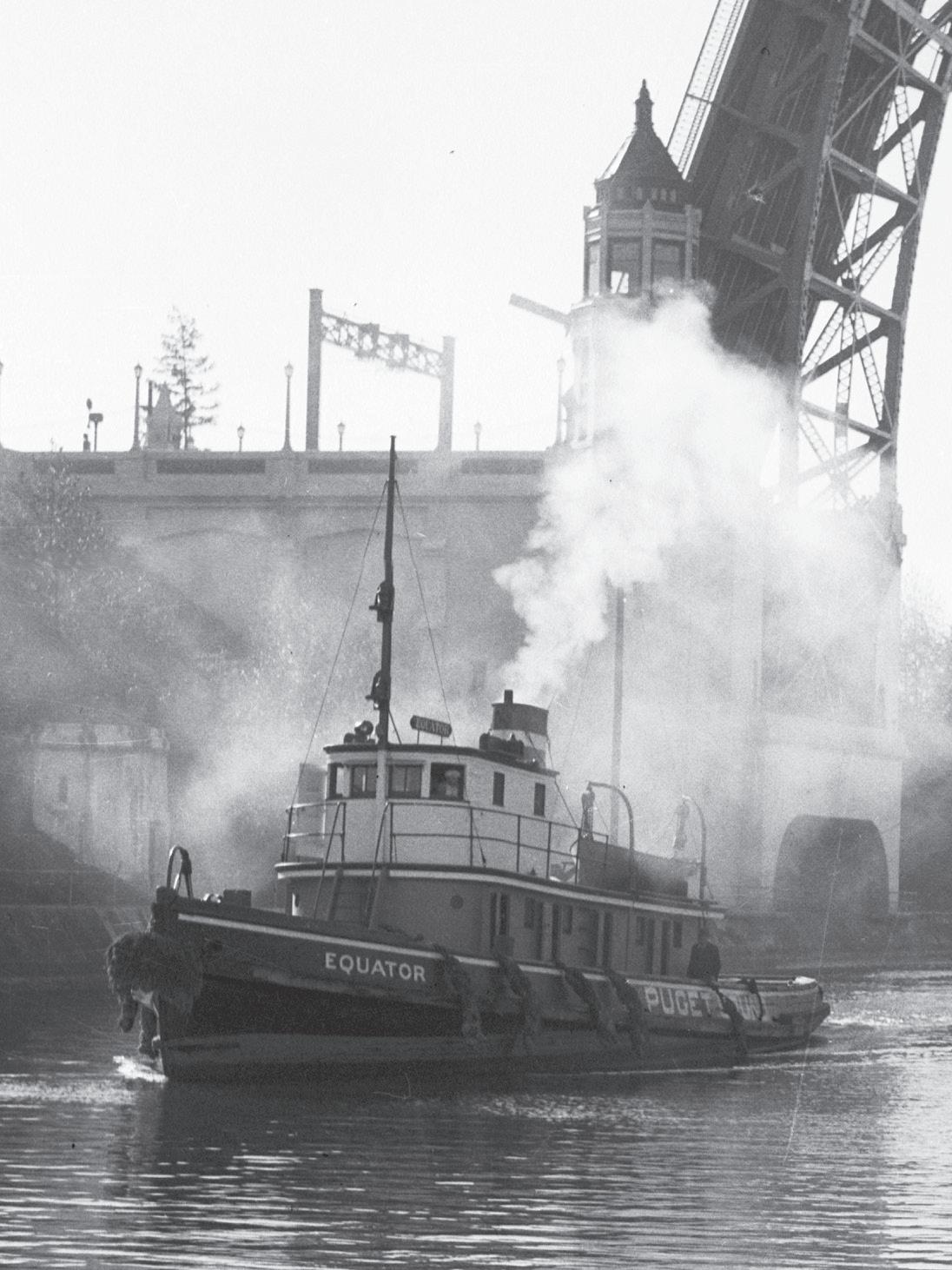
Supporters of the 1925 Gloucester, Massachusetts, gillnetter Phyllis A have announced that they are dismantling the vessel, as su cient funds to restore the vessel were never raised, despite the dedicated e orts
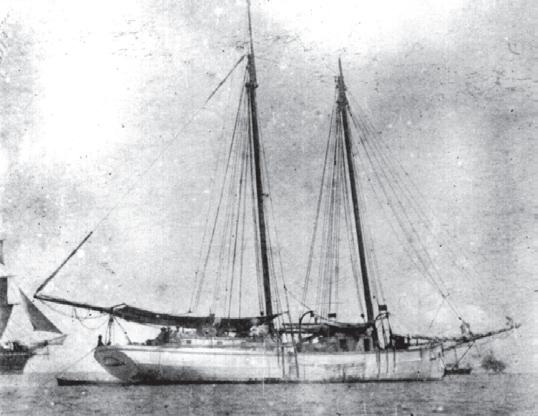
66 SEA HISTORY 184 | AUTUMN 2023
Tug Equator in 1934. She was originally built as a schooner (inset). SEATTLE MUNICIPAL ARCHIVES
SAN FRANCISCO MARITIME NATIONAL HISTORICAL PARK
of the Phyllis A . Marine Association (PAMA). e PAMA described the vessel as “a no-frills, hardworking, shing boat,” built in the Warner Shipyard in Kennebunkport, Maine. She was built for Albert Arnold, one of the “Michigan Bears,” a group from Charlevoix, Michigan, that introduced gillnetting to Gloucester in 1910. Phyllis A. was owned and operated by the Arnold family for 75 years. e Phyllis A. Maritime Association was formed in 2000–2001 and the boat was brought to the Kennebunk River, where she was displayed at the Arundel Restaurant pier; ve years later the group moved her to Gloucester. While the organization initially had some success in its fundraising e orts, the economic wake of the pandemic in particular led to the conclusion that the group would not be able to raise the money to achieve their goal of getting Phyllis A. back in the water for use as an educational vessel.
e boat’s deconstruction is underway; her pilot house was given to the organization Maritime Gloucester for use in a display about gillnetting. PAMA will continue to tell the story of Phyllis A and the Michigan Bears and is actively seeking to connect with any relatives of the Michigan Bears. (www.phyllisaorg.wordpress.com) … On 25 May the Naval History and Heritage Command (NHHC) con rmed the identity of a shipwreck site discovered by ocean explorer Tim Taylor and his “Lost 52 Project” team as that of the World War II destroyer USS Mannert L. Abele (DD 733), the rst US warship sunk by a Japanese suicide rocket bomb. Launched on 23 April 1944 from Bath Iron Works in Maine, the Allen M. Sumner -class destroyer served as a training ship and was later converted to a ghter-director vessel. e Abele supplied shore bombardment and close- re support in the invasion of Iwo Jima; the next month her crew rescued the pilot and crew of a downed ghter
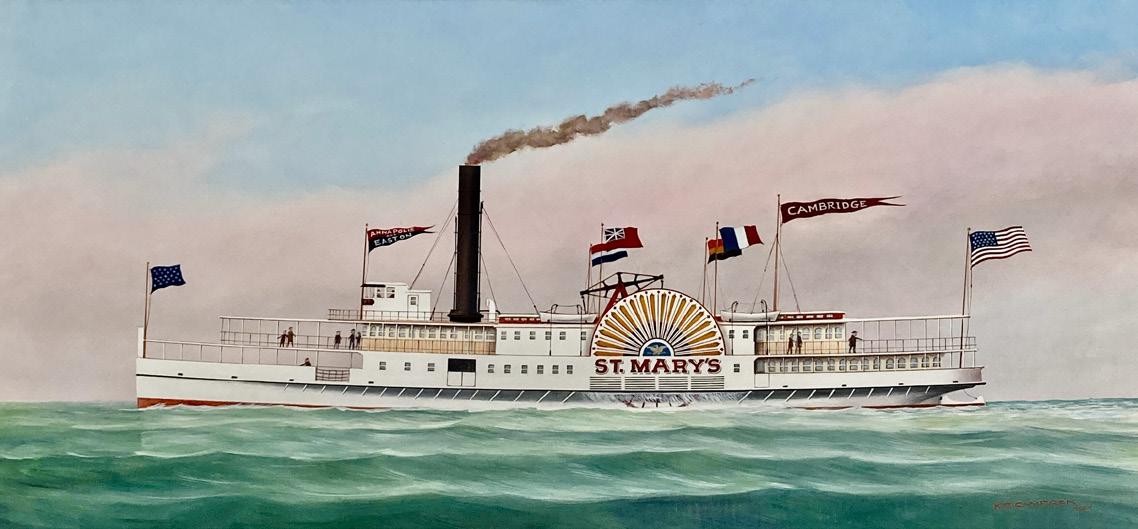
plane. On 12 April 1945, the Abele was underway approximately 75 miles north of Okinawa when radar picked up enemy aircraft approaching. According to Petty O cer 1st Class Abigayle Lutz, Naval History and Heritage Command, “Mannert L. Abele engaged with and damaged multiple enemy aircraft, until eventually an aircraft managed to crash abreast of the after reroom on the starboard side, penetrating the after-engine room. A minute later, the ship was hit at the waterline by a Yokosuka MXY-7 Ohka (Cherry Blossom) rocket-powered
human-guided bomb, and the resulting explosion caused the ship’s bow and stern to buckle rapidly. USS Mannert L. Abele was the rst of three radar picket ships hit and the rst US Navy vessel sunk by the human-guided kamikaze bomb.” e destroyer was named for CDR Mannert “Jim” Abele, who, after cruises in command of the submarine Grunion (SS-216) during which it sank two sub chasers and damaged a third, was lost with his crew when Grunion went missing on 16 August 1942. (www.history.navy.mil) …
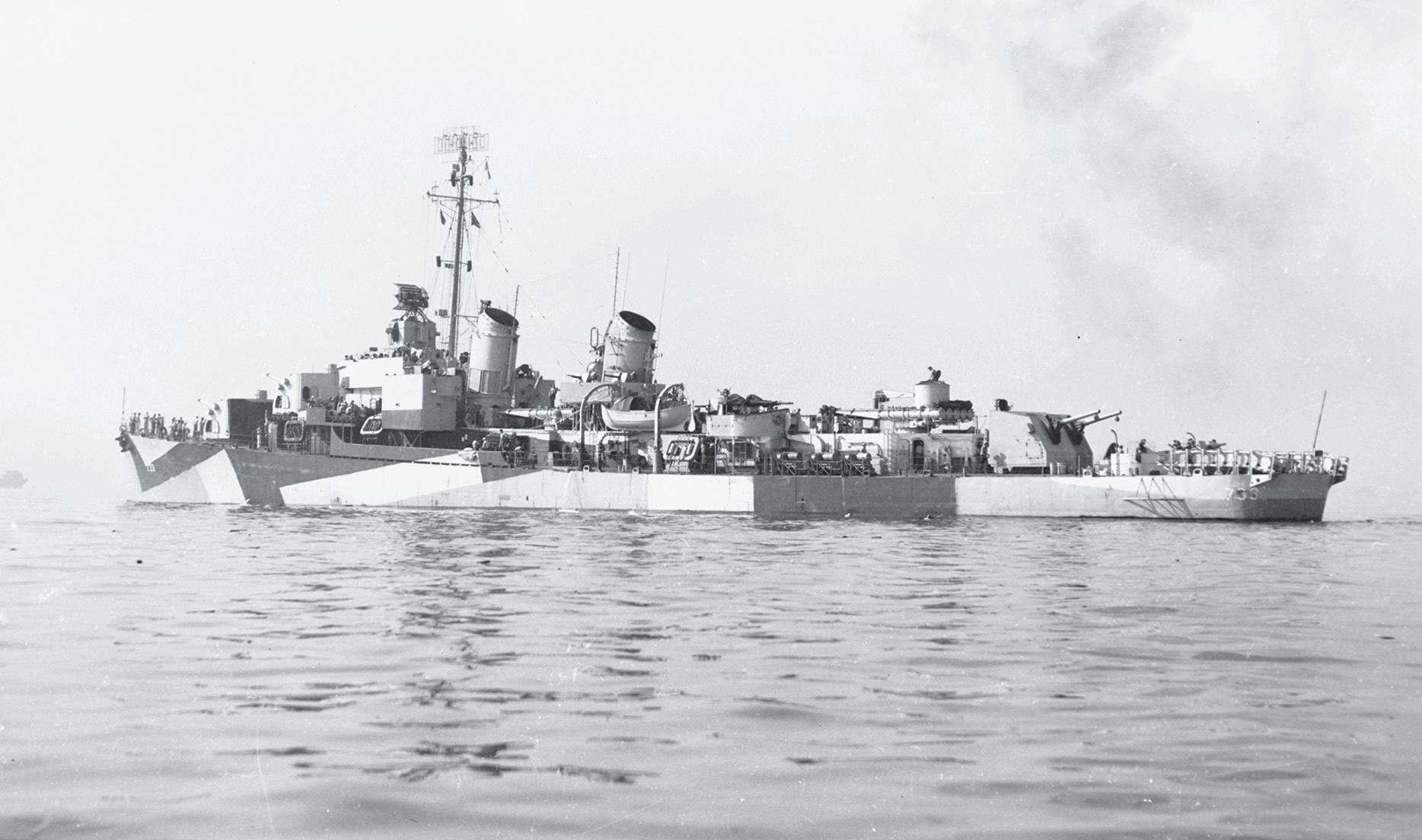
SeaHistory.org 67 The Trippe Gallery Photographs ~ Paintings ~ Sculpture 23 N Harrison Street ~ Easton, Maryland 410-310-8727 tripphilder@icloud.com
USS Mannert L. Abele (DD 733) in 1944.
US NAVY PHOTO, NHHC
CLASSIFIED ADS
BRONZE MARKERS FOR USLSS, USLHS, USCG and MERCHANT MARINE VETERANS. Highest quality bronze grave markers • www.uslifesavingmarker.com.
OUT- OF-PRINT NAUTICAL BOOKS SEA FEVER BOOKS. ousands of titles. E-mail: seafeverbooks@aol. com; Ph. 203-464-8808 (EST); www.seafeverbookstore.com.
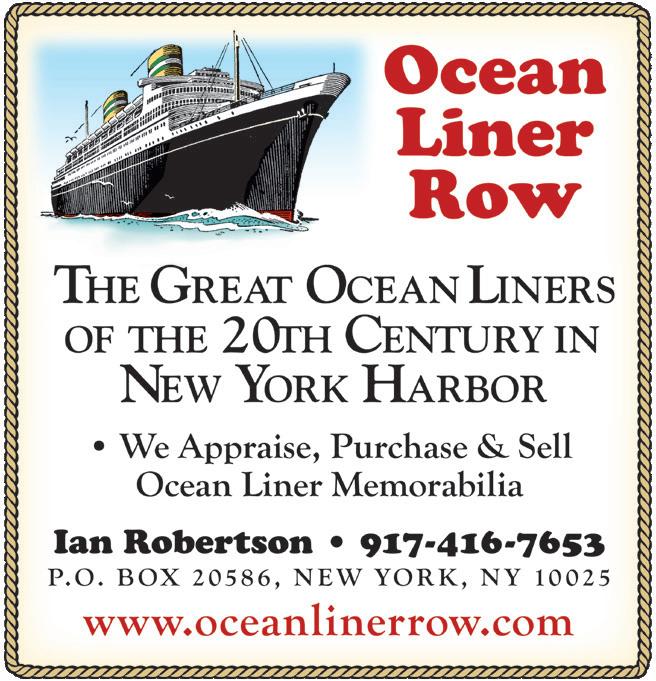

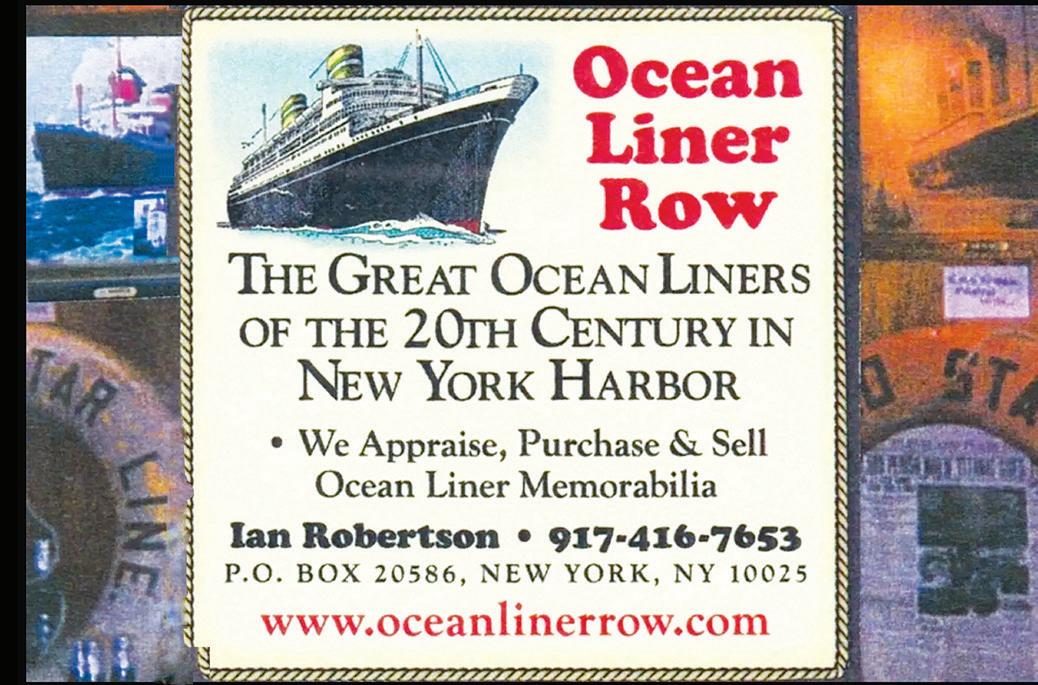
KEEPING THE TRADITION ALIVE by Capt. Ray Williamson. e remarkable story of Maine Windjammer Cruises,TM founder of the windjammer industry. 172 page, 11 x 14 hardcover book with over 100 full-page images from the days of cargo to the present. Price–$48. Call 800 736-7981; email sail@mainewindjammercruises.com.
CUSTOM SHIP MODELS, HALF HULLS. Free Catalog. Spencer White, 4223 Chestnut Dr., Center Valley, PA 18034.
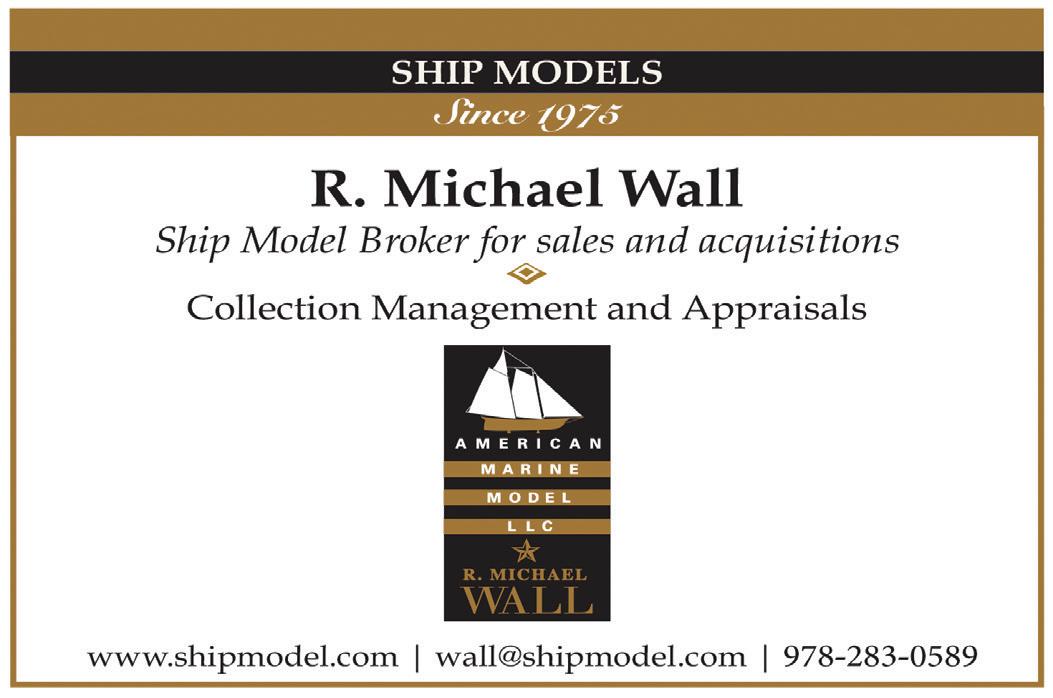
FINE ART PRINTS OF SEA ROVERS & BUCCANEERS by award-winning ASMA Signature artist Don Maitz. Visit: www.paravia.com/DonMaitz.
TUGBOATS AND SHIPYARDS: THE RUSSELLS OF NEW YORK HARBOR, 1844–1962, winner of the Steamship Historical Society’s 2020 C. Bradford Mitchell Award. Hilary Russell recounts the full lives and remarkable accomplishments of the three generations of watermen and the often beautiful, sometimes original, evolving forms of the craft that objecti ed the family’s work. $31—order through AbeBooks, PayPal, or mail a check to: Berkshire Boat Building School, PO Box 578, She eld, MA 01257.
PRESIDENTS PLAYING CARDS All 46 US presidents are represented on these playing cards with interesting facts and quotes. www.presidentsplayingcards.com.
THE AUTHORITY TO SAIL by Commodore Robert Stanley Bates. e fully illustrated authoritative history of US Merchant Marine licenses and documents issued since 1852. Co ee-table size book, 12” x 14.” Order direct: e Parcel Centre, Ph. 860 739-2492; www.theauthoritytosail.com.
BOMBSHELL by T. F. McGraw. e little-known Civil War tale of a humble New York canal boat, rushed to conversion at New Berne in 1863, into a multi-purpose steam gunboat. Operating on the coastal rivers of North Carolina, Bombshell delivered Army raiders and provided them artillery cover, evacuated Freedmen, and performed many other missions. Succumbing to battle damage in late 1864, Bombshell was stricken from the rolls under her original name, the Oscar F. Burns, e ectively condemning the plucky little ship to obscurity—until now. Paperback, 204 pages, illustrated. $20.00, including shipping and applicable taxes, directly from Indian Creek, PO Box 14663, New Bern, NC 28561.
PIRATE PLAYING CARDS by Signature ASMA Artist, Don Maitz, National Geographic contributor and originator of the Captain Morgan Spiced Rum character. Full-color playing cards have di erent watercolor images on each face. Prints present sea-rover adventurers. Order from: www.paravia.com/DonMaitz.
THE LOST HERO OF CAPE COD by Vincent Miles. e story of an elite mariner, Captain Asa Eldridge, and the nineteenth-century battle for commercial supremacy on the Atlantic. Reviews, availability, at www.vjmiles.com/lost-hero and Amazon.com.
NATIONAL PARKS PLAYING CARDS. Many of America’s National Parks are represented on these cards with interesting facts and images. www.ArcturusLLC.net.
Advertise in Sea History! Contact Wendy Paggio a at advertising@seahistory.org
68 SEA HISTORY 184 | AUTUMN 2023
e replica oyster boat Ida May was launched on 3 May in Oyster Bay, New York, 12 years after laying the keel. After the original Ida May’ s retirement in 2003, the Oyster Bay community came together to ensure vessel’s legacy would live on for generations to come. e Christeen Oyster Sloop Preservation Corporation decided to build a new boat based on her existing lines to create a oating classroom where residents could learn about Oyster Bay’s ecology and history. e original Ida May was built in 1925 by Frank M. Flower, who named the boat after his wife; Flower and Sons harvested oysters aboard the boat for the next 75 years.

e vessel’s owners subsequently transferred the vessel’s ownership to the Waterfront Center, which recognized that the boat is an important symbol to the local community and represents the area’s maritime heritage. e vessel was hauled ashore with the intention of restoring her as a land exhibit, but over time her condition deteriorated and she was demolished in 2010—but not before NYS Senator Carl Marcellino secured grants to have the vessel’s lines
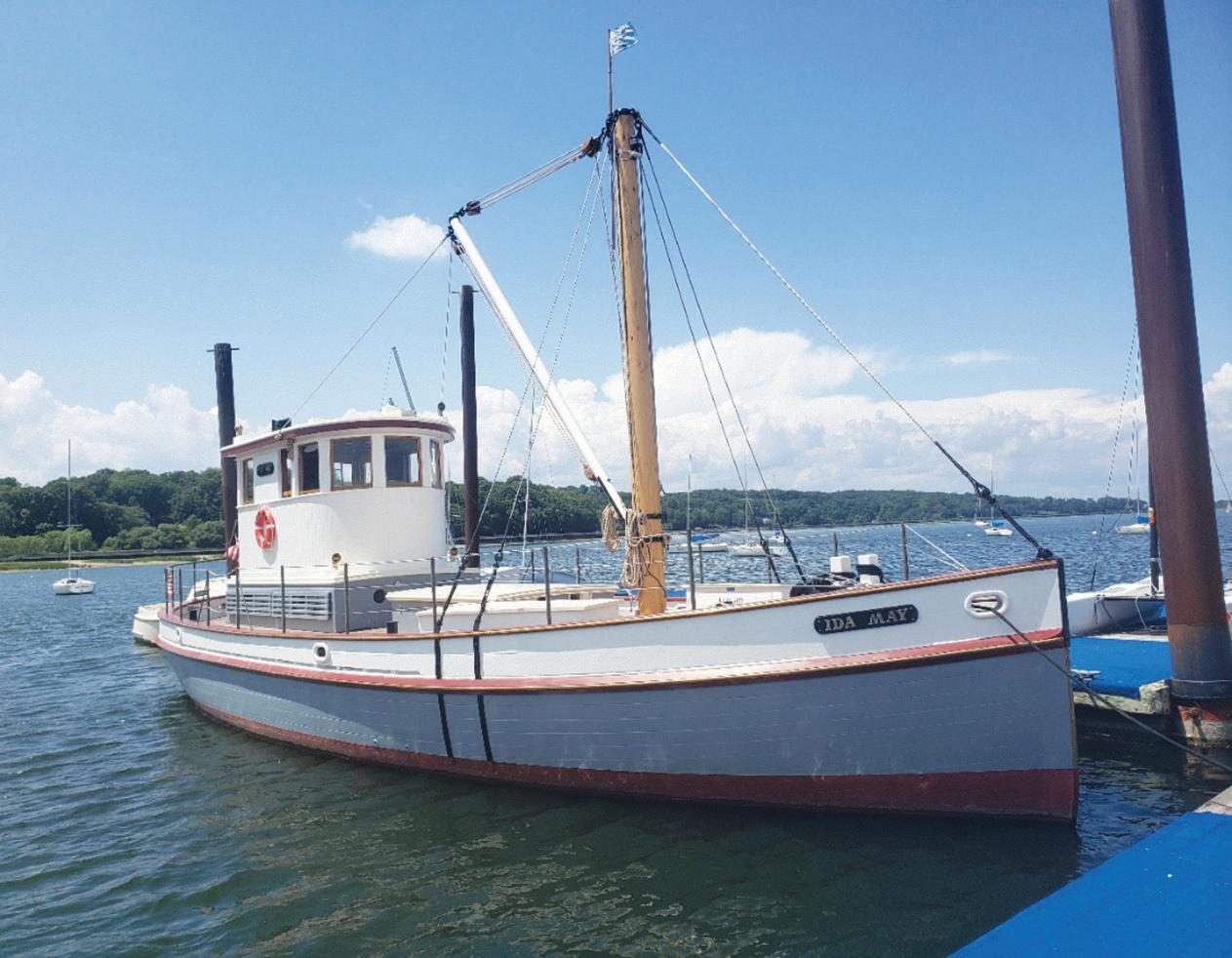
documented for the historical record and construction drawings created for a replica that would also meet Coast Guard safety requirements. e new Ida May will be managed by the Waterfront Center, a non-pro t dedicated to connecting people to the water via educational and recreational programs. Ida May will take the public out on Oyster Bay to learn about the marine environment and cultural history. (www.idamayproject.org ; e Waterfront Center, 1 West End Ave., Oyster Bay, NY; www.thewaterfrontcenter.org )
… A documentary lm produced by the Bu alo and Erie County Naval & Military Park about segregation and integration in the US armed forces has been recognized with three Telly Awards. e 30-minute lm, Two Wars: e Road to Integration was written and co-directed by the museum’s director of education, Steven Tedesco, and produced in conjunction with the museum’s 2022 exhibit of the same name. It uses interviews with military historians, African American historians, and African American veterans from World War II and other wars to tell the
story of segregation and integration through rst-hand accounts. e museum commissioned Bu alo-based creative rm Abbey Mecca to produce the lm. e documentary was recognized in the categories of Documentary (Short Form), Documentary (General History), and Documentary (Editing). e Telly Awards honor excellence in video and television across all screens; judges include streaming services and production companies such as BBC World Service, Net ix, A&E Networks, and the National Geographic Society. e nation’s largest inland naval park, the Bu alo and Erie County Naval & Military Park is home to a museum and retired naval vessels USS e Sullivans, USS Little Rock, USS Croaker, and PTF17. You can view the lm on YouTube by typing in the name of the lm. (1 Naval Park Cove, Bu alo, NY; www. bu alonavalpark.org ) … South Street Seaport Museum announced in June it has been awarded a $2,011,000 grant from the New York State Council on the Arts to support the façade restoration and window replacement of the A. A. omson & Co. Warehouse, the museum’s 1868 industrial building located in the South Street Seaport Historic District in New York City e funding will help the museum complete the restoration of the ve-story building’s cast-iron and marble façade and install new energy-saving windows. Once renovations are completed, 11,000 square feet of previously inaccessible space in the omson Warehouse will be available for exhibitions, educational programs, and community meetings. e building’s additional infrastructure upgrades include a new elevator and stairs, as well as new electrical, plumbing, re protection, and climate control systems. (South Street Seaport Museum, 12 Fulton Street, New York; www.southstreetseaportmuseum.org. NYS Council on the Arts, www.nysca.org )
SeaHistory.org 69
Ida May IDA MAY PROJECT
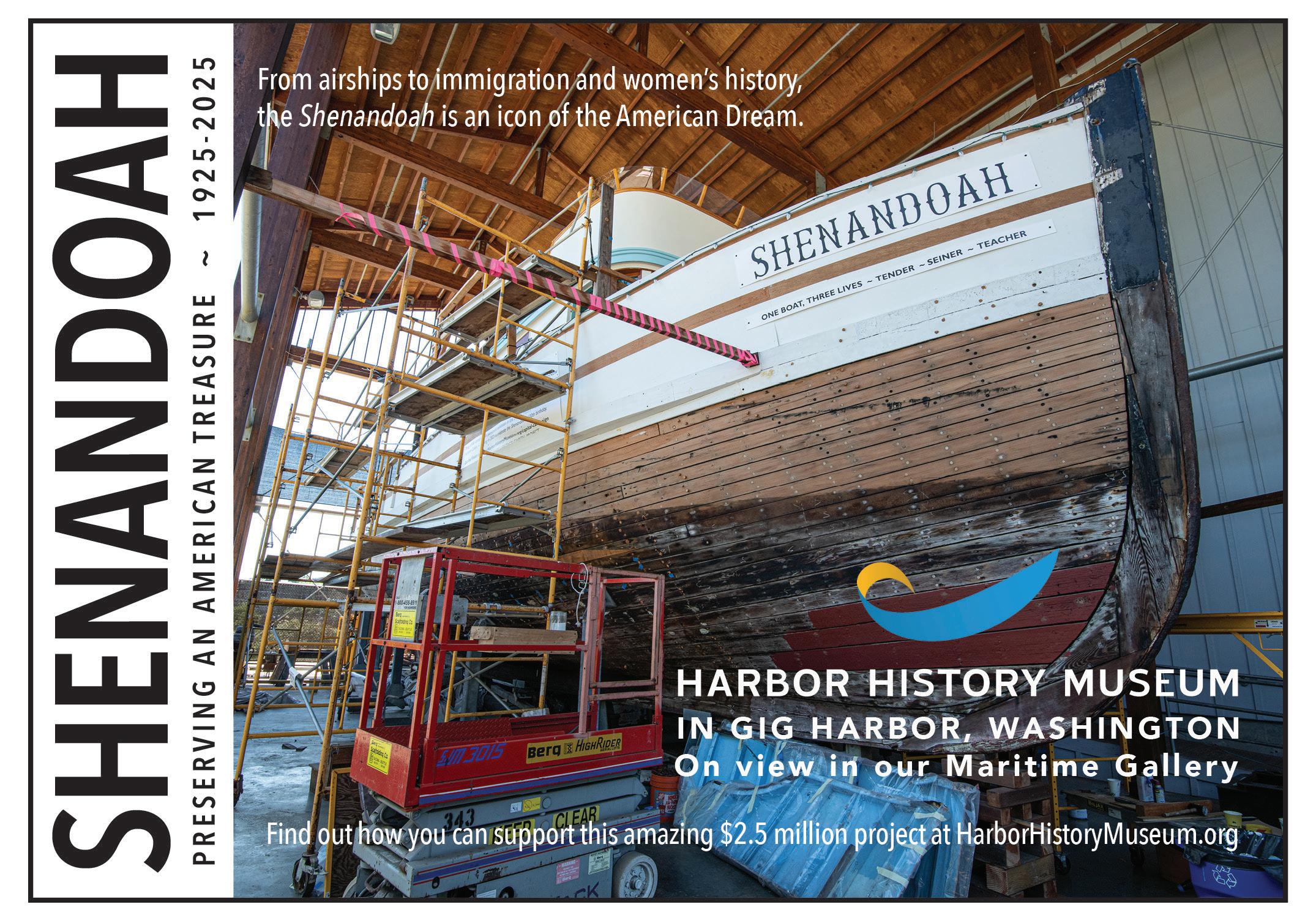
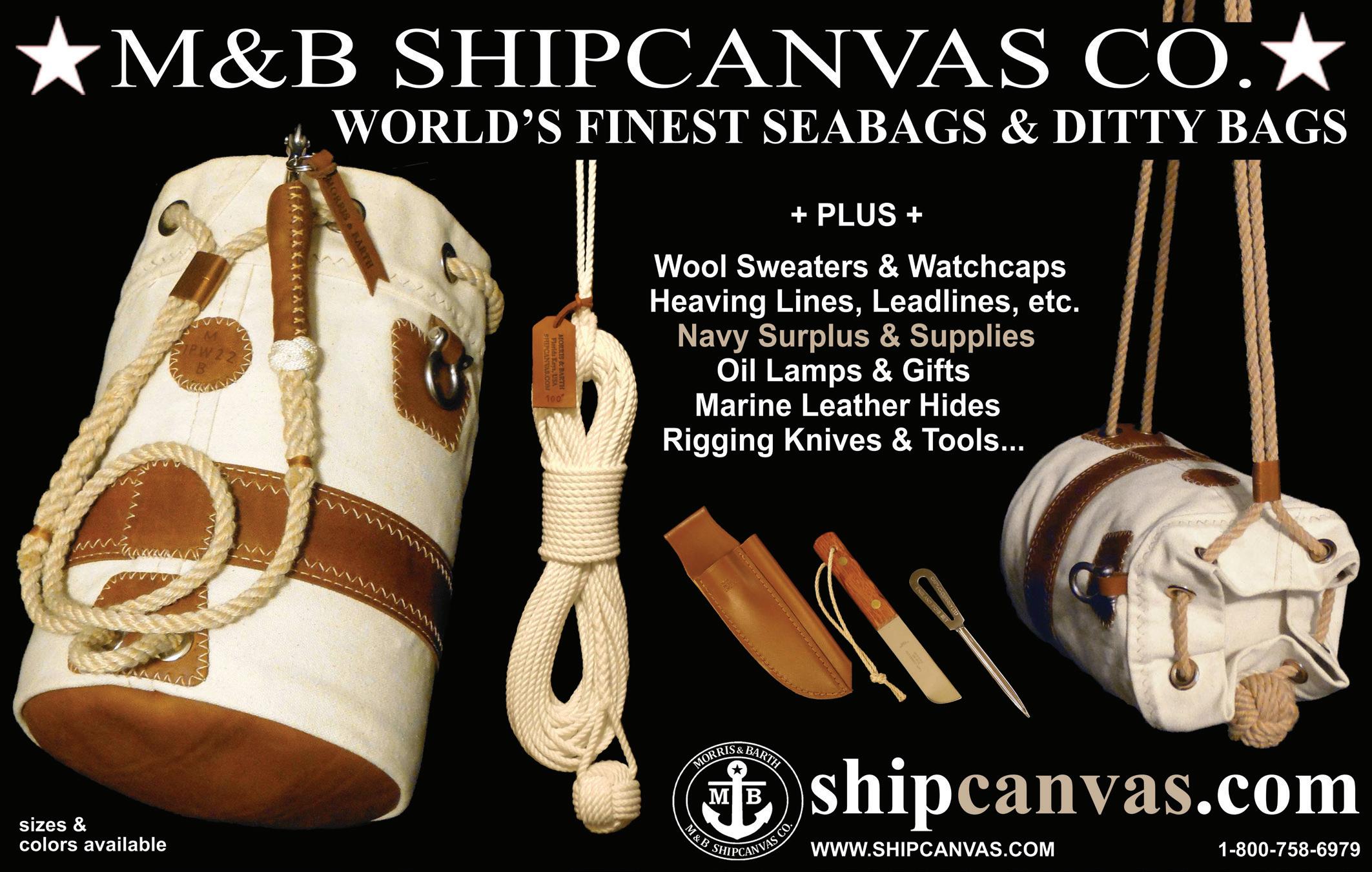
70 SEA HISTORY 184 | AUTUMN 2023
Making Maine: Statehood and the War of 1812
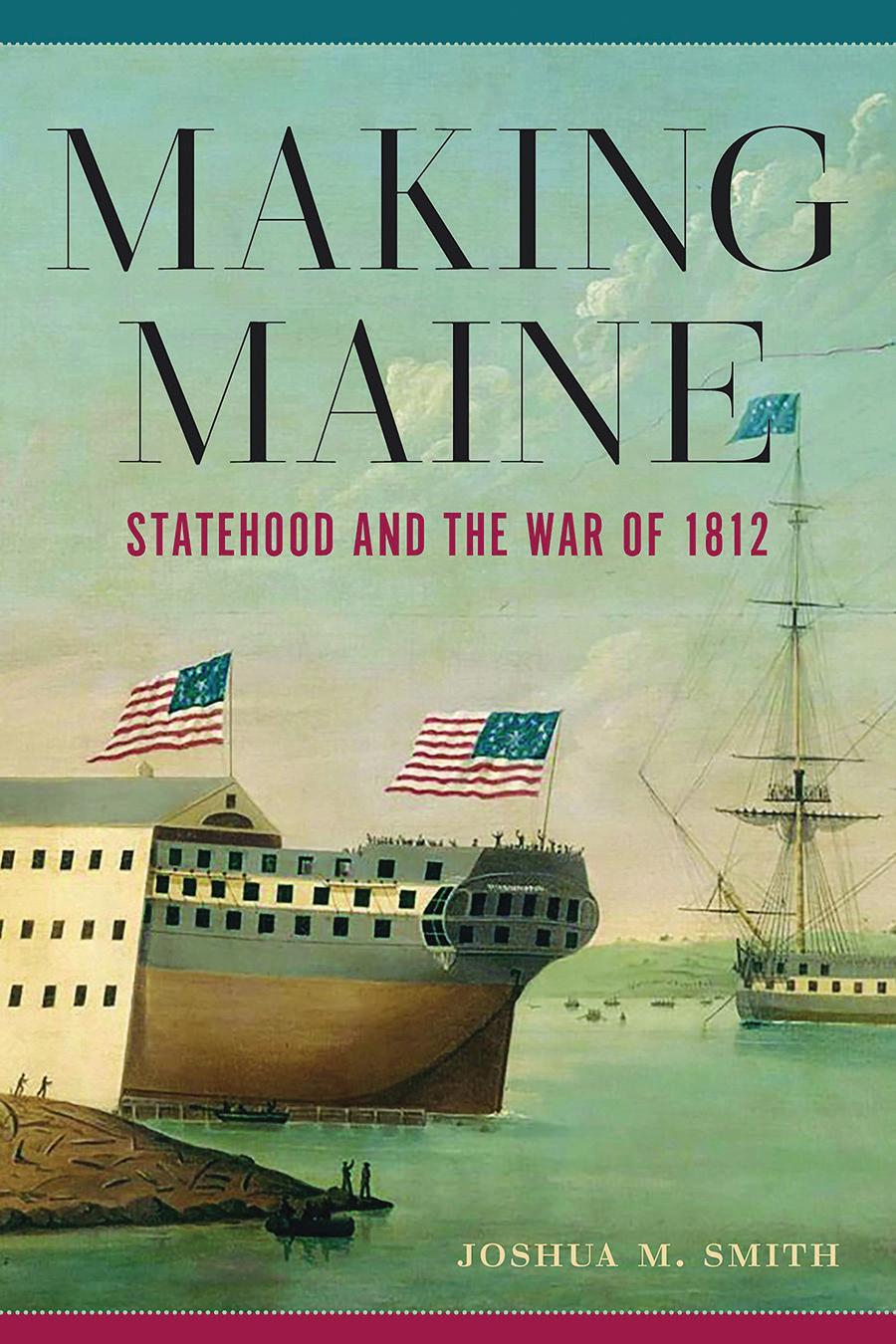
by Joshua M. Smith, PhD (University of Massachusetts Press, Amherst, 2022, 312pp, maps, notes, index, ISBN 978-1-62534-701-5; $34.95hc)
Historian Joshua Smith, director of the American Merchant Marine Museum at Kings Point, has written a captivating and important book explaining how Maine became a state in the years following the War of 1812. e title implies the connection between these two events, but there are many other threads woven into this story; Smith shows his mastery of the subject in analyzing its social, economic, political, and military origins.
When Captain Charles Morris departed the Chesapeake Bay in January 1814 in command of the frigate Adams on the hunt for British merchant ships, he had absolutely no thought that his ship would end up in ames high up the Penobscot River on the coast of Massachusetts (then the District of Maine). After sailing a wide arc in the North Atlantic, he steered toward Penobscot Bay. When the frigate ran aground— brie y—on a rocky shoal and su ered some damage, it was noticed by a British sloop of war. Morris had sailed into the waiting arms of a squadron under Rear Admiral Edward Gri th, RN, who was the advance guard of an invading British Army under the command of Lieut. General Sir John Coape Sherbrooke. Captain Morris headed up the winding Penobscot River, hoping to discourage his pursuers and make repairs.
He moored at Hampden, where he prepared to defend his frigate with the help of local militia. All was for naught. e militia took ight before a boat attack, and Morris had to burn his frigate to avoid its capture. He and his crew escaped overland through the wooded, sparsely populated country to reach the naval station at Portsmouth.
us began the British occupation of northern Maine from Passamaquoddy
to Camden, Castine, and Hampden, which was to last until a month after the rati cation of the Treaty of Ghent in 1815.
e British invasion and occupation brought into sharp relief the sour relationship between the northern counties of the district and the more prosperous absentee landowners of the southern counties and the political interest groups of Boston and the General Court (state legislature). For years, the hardscrabble farmers and squatters of northern Massachusetts had been poorly treated by their wealthier neighbors to the south. Landowners often persuaded the authorities to use the militia to oust the squatters who were felling timber and clearing the land to eke out a living from the rocky soil. Further, the poorly armed state militias were riven with partisanship; they lacked good o cers and su ered from poor discipline.
e embargo of 1807 prevented local merchant ships from sailing, so both masters and crews became impoverished, unable to earn income through trade. is in itself stimulated increased smuggling across the border with New Brunswick.
Caleb Strong, the Federalist governor of Massachusetts, was a stubborn, conservative individual opposed to the idea of war with Great Britain. He refused to place the state militia under federal control; as a result, Massachusetts, particularly its northern counties, was unprepared for con ict when it arrived. e heaviest blow fell on the District of Maine when the British invaded in July 1814. Republican party sentiment in Maine grew stronger as the Federalist governor and his military council failed to defend their interests at this critical time. Sentiments in favor of statehood for Maine supported by the powerful King family and its allies were led by Congressman William King, who in 1820 became the State of Maine’s rst governor.
ere are few, if any, faults to nd in Smith’s well-written book; it is equipped with ve maps to acquaint the reader with remote areas of Maine, but missing are any portraits of leading personalities. e notes section is very detailed and the index is comprehensive, although there is no bibliography. is book is recommended for all those with an interest in the War of 1812 and the history of the early American Republic, and it will be particularly useful for scholars whose focus is the history of New England in the early national period.
William S. Dudley Easton, Maryland
e Wager: A Tale of Shipwreck, Mutiny and Murder by David Grann, (Doubleday, New York, 2023, 352pp, illus, gloss, notes, biblio, index, ISBN 978-0-3855-3426-0; $30hc)
e Wager. One might assume this is a book about a ship because of the subtitle, and because the dust jacket has an image of a three-masted sailing vessel with a decorated stern castle rolling in a violent sea. Others, without the bene t of the image or subtitle, might consider the book to be about Admiral
REVIEWS SeaHistory.org 71
Sir Charles Wager, First Lord of the Admiralty (1733–42), after whom the ship was named. Of course, both are correct. e reason for the connection is not, however, due to his rank as Lord High Admiral, but because his name has regularly appeared in media for about a decade related to another naval episode involving a Spanish ship o Cartagena, Colombia—the Spanish treasure ship San Jose
Charles Wager was captain of a British eet sent to capture Spanish treasure ships homeward bound from the Caribbean. His forces won a brutal battle with the treasure eet o Cartagena in 1708. e principal target was the treasure-laden San Jose, which exploded during the action, taking to the bottom gold, silver, and other cargo valued today by some at $20 billion.
HMS Wager was built as an East Indiaman with 28 guns, a sixth rate. She was purchased by the Royal Navy
to join a eet under Commodore George Anson on a secret mission to ambush another Spanish treasure eet, including a galleon said to be the prize of all the oceans. Sir Charles Wager was the mission’s principal sponsor and the eet included his namesake vessel. Six ships set out under Anson’s command in 1740 for Cape Horn to position themselves for the ambush o the Paci c Coast of South America. With his crew su ering from scurvy and typhus once they reached Cape Horn, the mission was no longer one of treasure and glory—but of survival. Perhaps as a portent, Wager ’s master died underway.
Author David Grann draws the reader into the turbulent, unpredictable waters o Cape Horn with the requisite towering waves, howling winds, shattered rigging, and the disappearance of both ships and men in the freezing waters. Wager pressed on under a new master, David Cheap. In a miserable
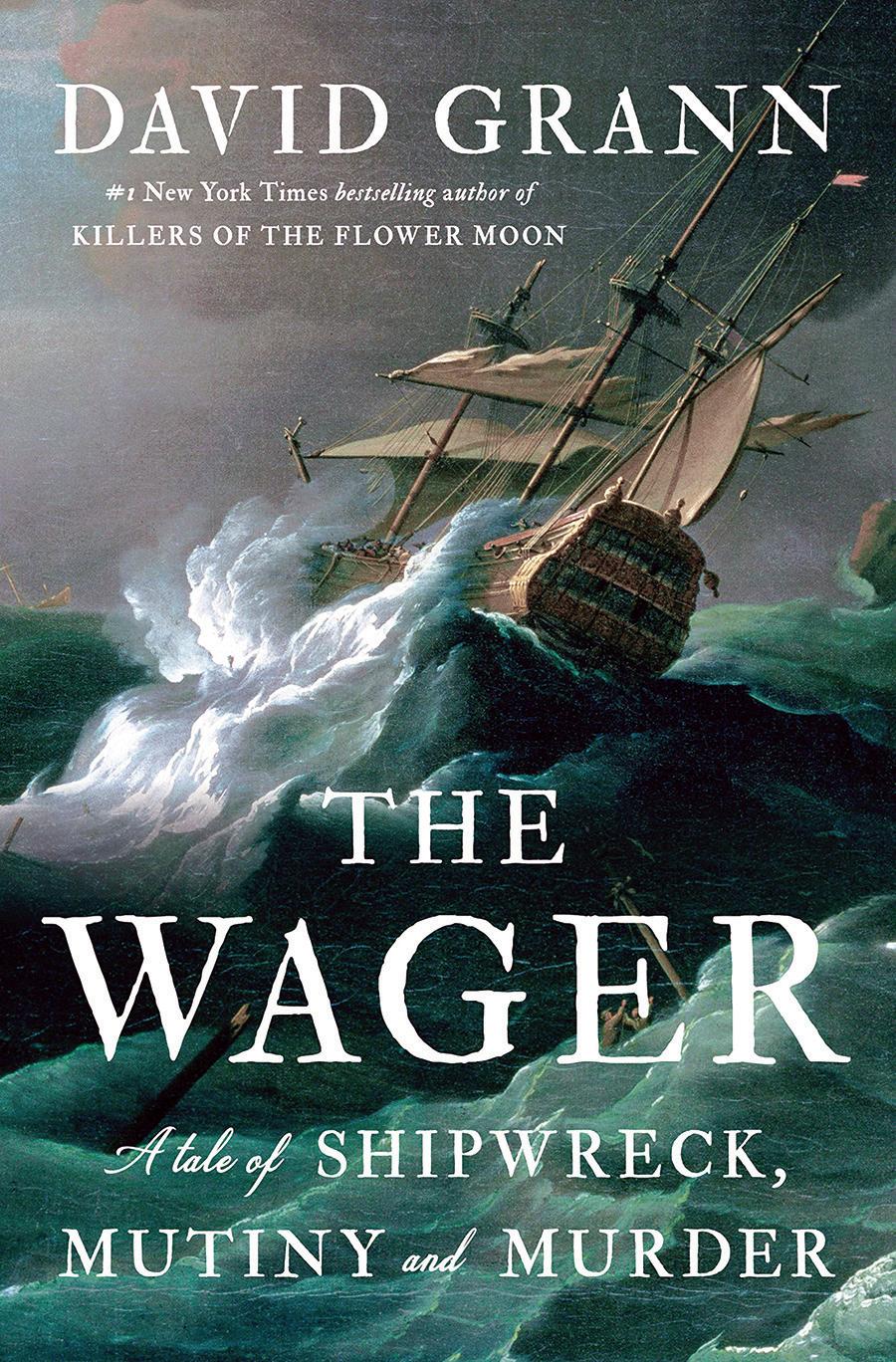
Looking for Vessel Information? Go to:
internationalmaritimelibrary.org
This vessel database contains almost 140,000 vessels, with many felds of information. This list is primarily compiled from the “List of Merchant Vessels of the United States” and Custom House records. Other annuals are also used. This database not only contains American vessels, but foreign ones too. Whether you are looking for commercial, pleasure, sail, power, warships, unrigged and undocumented we just might have what you are looking for and always inputting more! If what you are looking for is not there let me know also feedback welcomed.
See also the Shipwreck Index with Chronological listing.
Transatlantic Train
The Untold Story of the Boston Merchant Who Launched Donald McKay to Fame
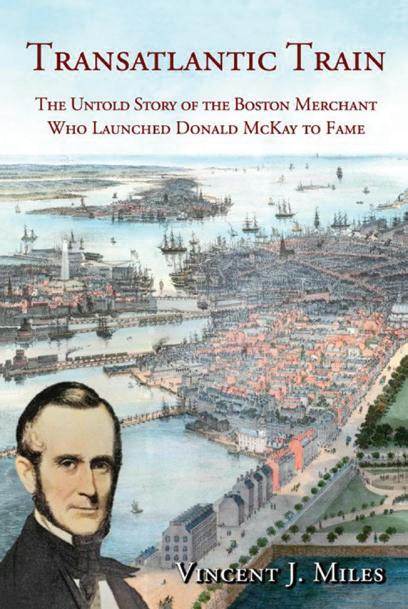 by Vincent J. Miles
by Vincent J. Miles
state after rounding the Horn, Wager edged northwards but far too close to the Chilean coast, where she wrecked on a desolate rocky Patagonian island. e 145 survivors of the original company of 250 named it Wager Island.
Reduced to eating seaweed and mussels with whatever could be salvaged from the wreck, the malnourished men endured freezing temperatures in imsy shelters. e chain of command broke down and, with it, discipline. With a pragmatic approach to issues facing the crew, gunner John Bulkeley emerged as a natural leader, while the captain and o cers continued to demand adherence to the chain of command without offering much in the way of leadership.
Donald McKay
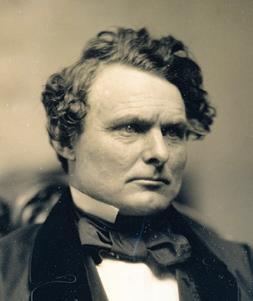
“An impressive feat of historical research that illuminates the life of an unjustly neglected historical fgure.”
Kirkus
Reviews and more information at vjmiles.com. Available at Amazon.com, etc.
While they received some help from local natives, they needed an escape route—the alternative was death from starvation and exposure. Bulkeley argued for sailing in vessels built from Wager’ s timbers through the Strait of Magellan to Brazil, a voyage of nearly 3,000 miles. Captain Cheap argued that their orders were to meet Anson, and thus they must sail northwards along the hazardous Chilean coast to the rendezvous point.
72 SEA HISTORY 184 | AUTUMN 2023
As tensions rose, Captain Cheap shot dead a midshipman to maintain order, but Bulkeley branded him a murderer and un t to lead. Most of the men backed Bulkeley, who arrested Cheap, loaded the most usable boats with supplies, and put to sea. After more than 100 days at sea, thirty survivors miraculously drifted ashore in southern Brazil, where they were seized by the Spanish and spent the next two years in captivity. Captain Cheap’s party fared no better. Only three men survived a voyage to a port in Chile, where they also spent a few years in Spanish captivity.
e return of both parties to England unleashed a war of words, which forms the source material for much of this story. Rather than heroic survivors of a tragic shipwreck, Cheap claimed that Bulkeley’s party were mutineers and deserters who should be hanged.
e accused proclaimed Captain Cheap a murderer and tyrant. e Admiralty called for a court-martial in 1746 to decide who was telling the truth.
e accounts published by the opposing parties are intense, thorough, and desperate. e losing side faced a hangman’s noose from a yardarm. e determination of the court-martial resolves the suspense. I would reveal the decision but do not wish to spoil your read of a sea story whose masterful telling has few peers.
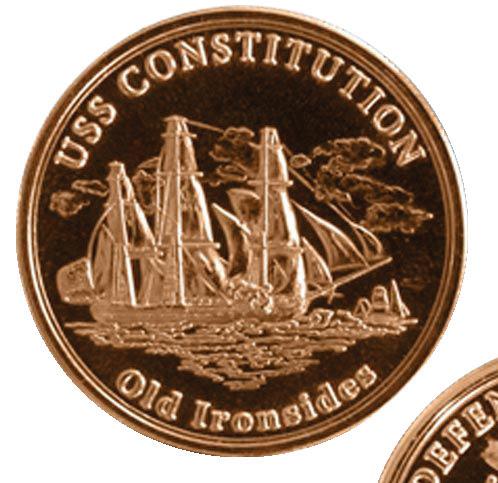 Timothy J. Runyan Greenville, North Carolina
Timothy J. Runyan Greenville, North Carolina

All Hands on Deck: A Modern-Day High Seas Adventure to the Far Side of the World by Will Sofrin (Abrams Press, New York, 2023, 272pp, illus, biblio, ISBN 978-141976-706-7; $28hc)
We all remember the blockbuster movie Master and Commander: e Far Side of the World, based (loosely) on Patrick O’Brian’s brilliant bestselling books and, speci cally, the tenth installment of the Aubrey-Maturin series,
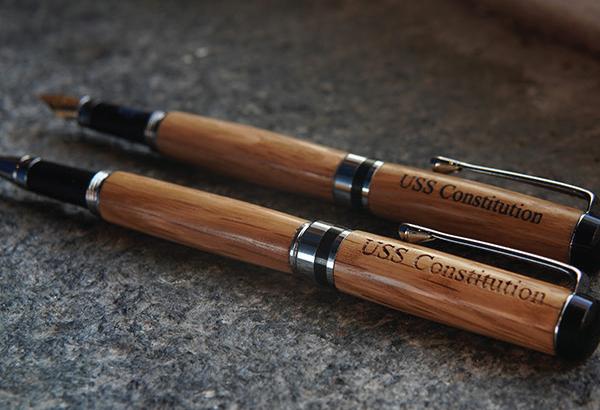
e Far Side of the World. In order for that lm to be made, there had to be an 18th-century full-rigged ship cast as the main character, HMS Surprise— Captain Jack Aubrey’s command. While sound stages and mock-ups could perform some of the duties, the scenes lmed at sea had to show a real ship. Enter the reproduction American school ship Rose, the only “authentic” candidate for the role.
e only problem with this solution was that the ship was in Newport, Rhode Island—and not in great shape. She would have to be sailed (one could not easily put a 150-foot ship on a trailer and drive it across the country!) to California, a long haul even for a modern sailing vessel and barely possible with a wooden three-masted square-rigger that had been more or less falling apart for several years. Oh! And they had to leave Newport in January. In the 18th century, such a vessel would carry a crew
of 250–300 souls; the modern-day Rose had a pick-up crew of 30, few of whom were real sailors. Daunting at best!
Author Will Sofrin joined that crew with some modern sail-racing experience but no knowledge of the complexities of an 18th-century full-rigged ship—and he was one of the more experienced deck hands. e mates had the appropriate knowledge, and, of course, the ship was commanded by Captain Richard Bailey, who had some 30 years’ experience aboard Rose and similar ships. e tale Sofrin tells o ers a keen insight into the claustrophobic and wet living conditions onboard, the con icts that inevitably arose among disparate individuals, the very steep learning curve, and the sense of community the crew and o cers built during the ve-month voyage. Of course, there are the obligatory disasters, including a dismasting (main topmast), and a frightening nearhurricane in the Atlantic.
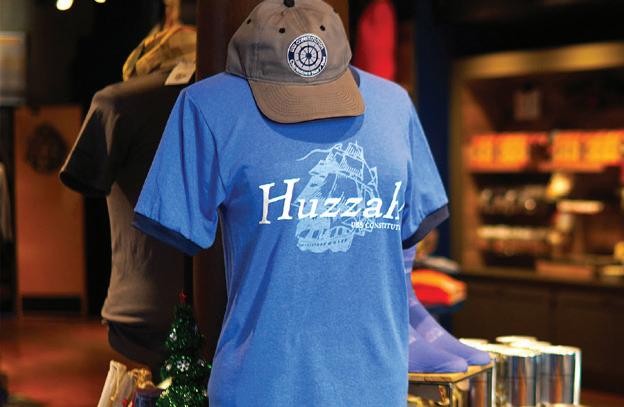
SeaHistory.org 73
USS Constitution-themed Gifts for Every Occasion Visit the store at the Museum during opening hours at Building 22 Charlestown Navy Yard Charlestown, MA or shop online at muzemerch.com/partner/ uss-constitution-museum USS CONSTITUTION MUSEUM STORE
The Museum Store has something for everyone including apparel, headwear, books, and exclusive products made from wood & copper salvaged from USS Constitution
e tale he tells is part travelogue, part history lesson, part primer on big ship sailing, and part commentary on social mores among unlikely shipmates.
e crew morphs from a group of individuals to a bonded team, all pulling together. It is an interesting study of human nature.
e only negatives I can o er are that the narrative is somewhat repetitive and a bit pedantic in describing technical sailing terms and maneuvers.
ere are entirely too many references to O’Brian’s books, with multiple comparisons to HMS Surprise and the 18thcentury Royal Navy.
at said, it is a highly enjoyable read and I can un inchingly recommend it to any sailor or history bu .
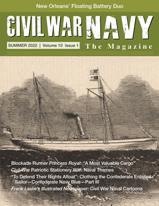
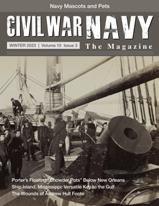 William H. White Rumson, New Jersey
William H. White Rumson, New Jersey
Hard Aground, e Wreck of the USS Tennessee and the Rise of the US Navy by Andrew C. A. Jampoler (University of Alabama Press, 2023, 264pp, illus, maps, notes, biblio, index, ISBN 978-0-81732-139-0; $115hc)
“Open-hearthed steel” over iron was to be central to rebuilding the anemic United States Navy into a late
19th-century naval power. In 1882, an impatient House Naval A airs Committee under Rep. Benjamin W. Harris was tired of reading and writing internal reports that found the sea service’s best ships “old and nearly worn out, slow in speed, feeble to o ensive power and utterly de cient in defensive power, even in the power of running away from danger.”
Such was the state of the United States Navy, as presented in the opening pages of Andrew Jampoler’s Hard Aground, e Wreck of the USS Tennessee and the Rise of the US Navy.
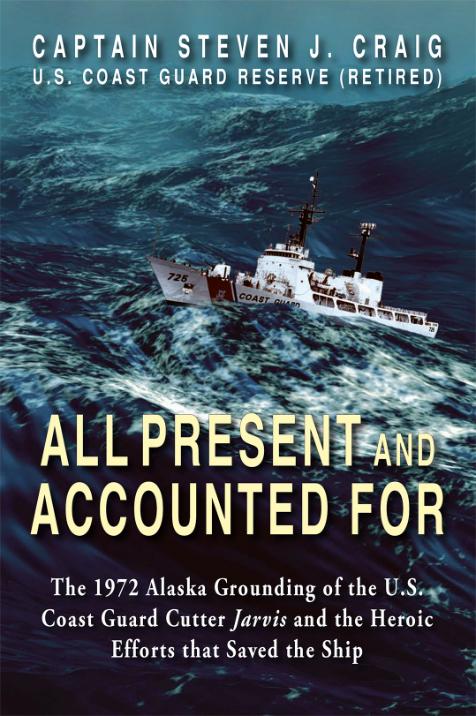
e book is an eye-opening history of the sea service, covered in three overlapping narrative threads: the Navy’s reconstruction after the Civil War; the planning, building, operating, renaming, and wrecking of USS Tennessee [renamed Memphis in May 1916]; and biographies of naval and political gures, such as the largely forgotten Benton Decker, the perceptive William Sims, long-serving Secretary Josephus Daniels, and insightful diplomat Henry Morgenthau.
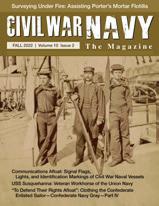
In 1881 Secretary William Hunt, whose son was then an active duty naval o cer, inherited a navy barely capable
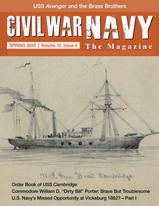
of coastal defense, suspect at commerce raiding, still leaning towards sail over steam, and muddling along with aged bureaucracies. Following Rear Adm. David Dixon Porter’s advice, Hunt created a naval advisory board to examine and report on what to do.
With the bene t of hindsight, we can examine the decisions made by Congress and the administration and ask if they made the right choices in planning for the Navy’s Future Force. To answer this question, let’s pick a decade between 1881 and 1925, the era of the great naval conferences. Jampoler gives Secretary Daniels a reprieve for his pragmatism in making hard choices before the United States entered World War I, but otherwise he, as well as other historians and naval analysts, would have to say “no.”
At the start, the Americans appeared on the right course to build a two-ocean empire. A few years later, however, the lesson the United States, Great Britain, Germany, and other naval powers took from the Russo-Japanese War was to come down hard for big guns, big ships, and dreadnoughts. After the Battle of Tsushima Strait, nothing more needed to be said about amassing naval power.
During this period, the Royal Navy junked Horatio Nelson’s strategy embracing spontaneity in battle. Admiralty thinking shifted and came to acknowledge that without synchronized movements, deadly collisions would occur. Jampoler correctly notes that British naval o cers—like their army counterparts—“had misunderstood the impact of technology upon the conduct of modern warfare, thinking that the new war could be fought in the old way.” To those in the eld and at sea, only the distances in the lines of battle had changed.
War at sea had become “a contest between rival blockades.” U-boats hunted and sank merchantmen in the North
74 SEA HISTORY 184 | AUTUMN 2023
civilwarnavy.com 1 Year, 4 Issues: $37.95 Subscribe Now at civilwarnavy.com Or send a check to: CSA Media, 29 Edenham Court Brunswick, GA 31523 International Subscriptions Digital Only Join the Crew!
Atlantic and around the British Isles, and the Royal Navy lay mines o the German exits to the sea, while keeping a constant at-a-distance blockade.
What should have been a strong point in Hard Aground— extensive use of illustrations—turns out to be confusing and jarring. Here is where design has an unwanted impact. Using a typeface and size similar to the narrative’s text in illustration captions unnecessarily disrupts the ow of Jampoler’s narrative. is is not a one-o , but a constant throughout the book.
Having noted the design aw and the mixed impact of the asides, Jampoler’s unique focus on an era that changed the United States Navy deserves close attention during this latest era of Great Power competition at sea and on land, as well as in the air, in space, and in cyberspace.
John Grady Fairfax, Virginia
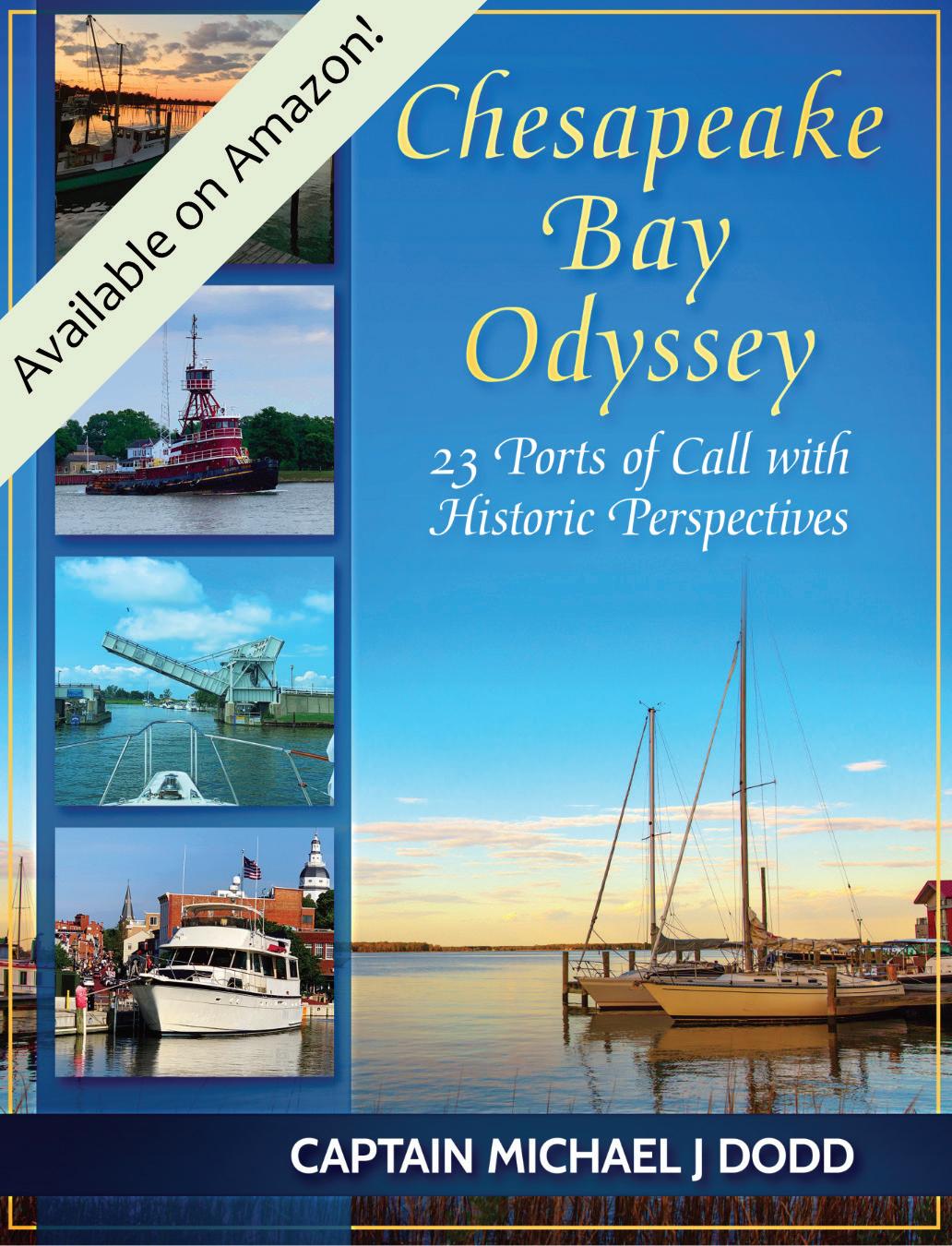
Conquistadores: A New History of Spanish Discovery and Conquest by Fernando Cervantes (Viking Random House, New York, 2021, 512pp, illus, notes, biblio, index, ISBN 978-1-10198126-9; $35hc)
e dust jacket of Fernando Cervantes’s fascinating new book depicts ocean waves against a darkened background. It is an appropriate metaphor for the conquistadores, those 16th-century Spanish noblemen whose caravels bore them forth to slaughter and gold.
e image conjures the lines of Cuba’s great national poet José Martí: “I hate the sea, which without anger supports on its complacent back, the ship that with music and owers, brings a tyrant.”
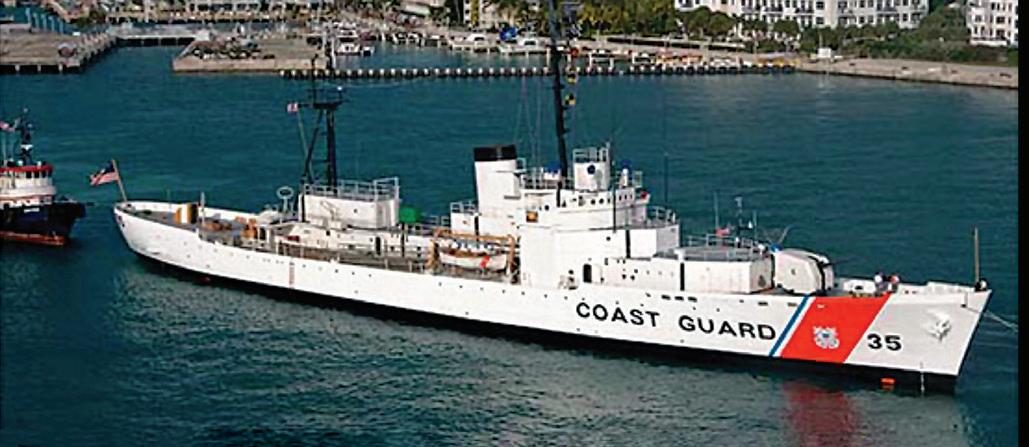
Conquistadores have gotten a lot of bad press over the years, beginning with the compassionate cleric Bartolomé de Las Casas bearing witness to their depredations, to a 2016 article in the Economist about Peruvian poverty titled
“Let’s Sue the Conquistadores.” Cervantes, a Mexican professor of early modern studies at the University of Bristol, believes a more balanced perspective is overdue. He is no apologist, but writes that it is “important that we do not reduce the richly complex world of the conquistadores to a sweeping caricature.” He brings impressive credentials to this task, including numerous articles and books on Hispanic intellectual and religious history.
is book is not a complete survey of the conquistadores, as there were hundreds of them. Rather, it is an exploration of the political, religious, and intellectual in uences that created them. Cervantes declares that our “understandable sense of revulsion” at their bloody deeds, “runs the risk of hiding from us fundamental aspects of the late-medieval religious culture” that de ned their worldview. He methodically details the components of that
SeaHistory.org 75
... • • •
culture, including Catholicism, and legal concepts like the Encomienda (“to entrust”) system and the Requerimiento (“the requirement”). Under the Encomienda, Spaniards “enjoyed the unlimited personal services” of the conquered Indians assigned to them. In return, they were to provide protection and Christian teaching. e system was meant to transition the conquistadores into colonists, but abusive forced labor often resulted.
e Requerimiento was “ a lengthy and rather convoluted manifesto which, from 1513 onwards, the Crown ordered to be read by a notary to any indigenous
peoples before the Spaniards could legally open hostilities against them.” is led to ludicrous scenes such as a royal o cial dictating in Spanish to ba ed Indians. He ordered them to embrace Charles V and the Catholic faith, or “we shall make war against you in all ways and manners.” Las Casas called the document “unjust, impious, scandalous, irrational and absurd.” Cervantes suggests we see it di erently, however. “Rather than a ‘useless legalism,’” he argues, “it was a sign that the Spanish Crown was becoming all too aware of its obligations to the natives, and was attempting to cover itself legally.”
Within this complex framework, Cervantes weaves the stories of several principal gures, including Christopher Columbus, Hernán Cortés, Francisco Pizarro, and Hernando de Soto. Columbus, of course, released Spain’s pentup energies when he discovered (for Europeans) the Americas. Like many modern writers, Cervantes describes the Niña, Pinta, and Santa Maria as “cramped, ill-equipped vessels.” is is in marked contrast to Samuel Eliot Morison, an expert sailor and Columbus biographer, who wrote that they were “well built, well rigged, well equipped, and well manned,” not to mention that Columbus himself declared them “muy aptos” for the job at hand. Seamanship and caravels were critical to the Spanish endeavor and deserve at least some appreciation, even in a primarily intellectual/political history.
INDIVIDUAL ORDERS : www.dreadnaughts-bluejackets.com
FOR BULK ORDERS: orders@newacademiapublishing.com
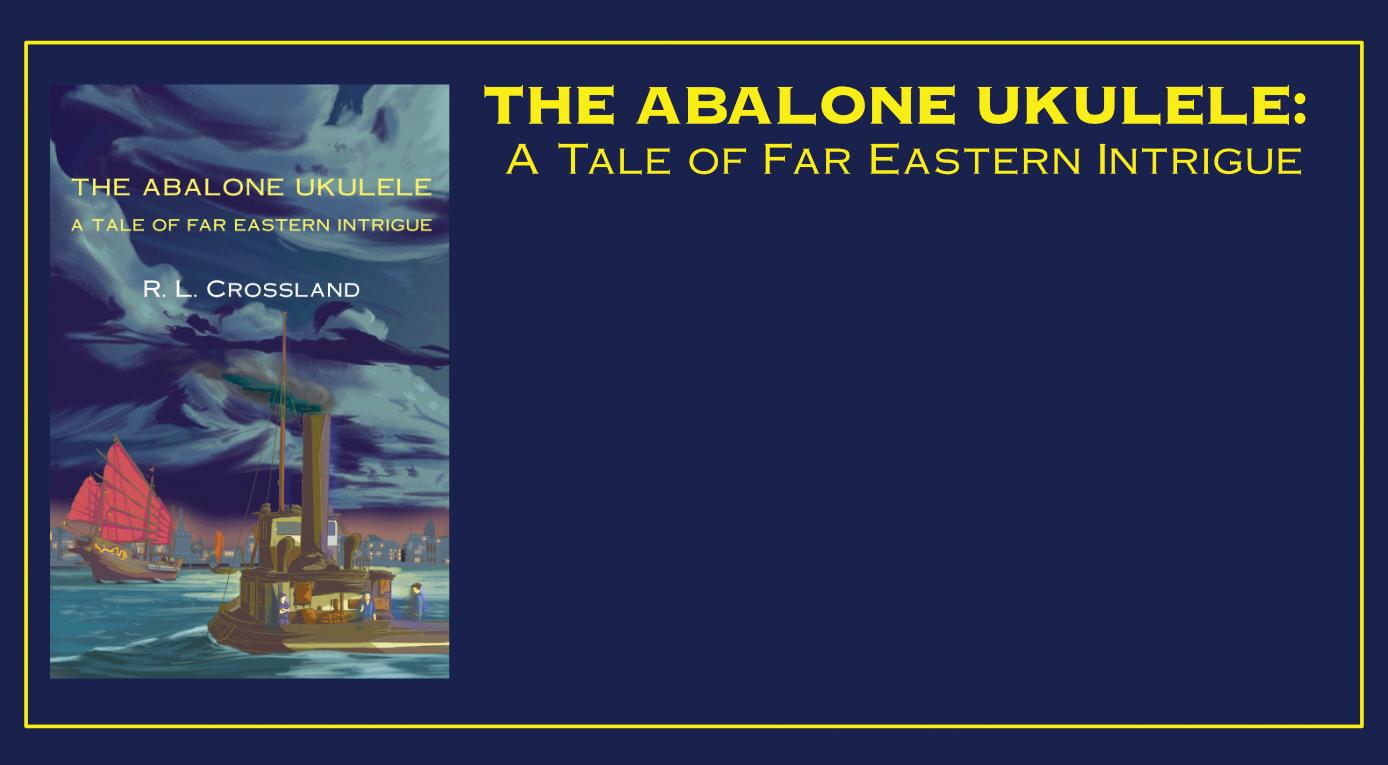
etimewasOctober1991. e shipwas AnneKristine,theoldest continuouslysailingvesselinthe world.Whatawaitedthemwas HurricaneGrace,thesouthernend ofwhatcametobeknownas“ e PerfectStorm.”
“NelsonSimon’smemoir…isthe kindofcharacter-driven,stormbattered,seafaringyarnJoseph Conradwouldhaveloved.Or written.”
– AliceMcDermott
,winnerofthe NationalBookAward
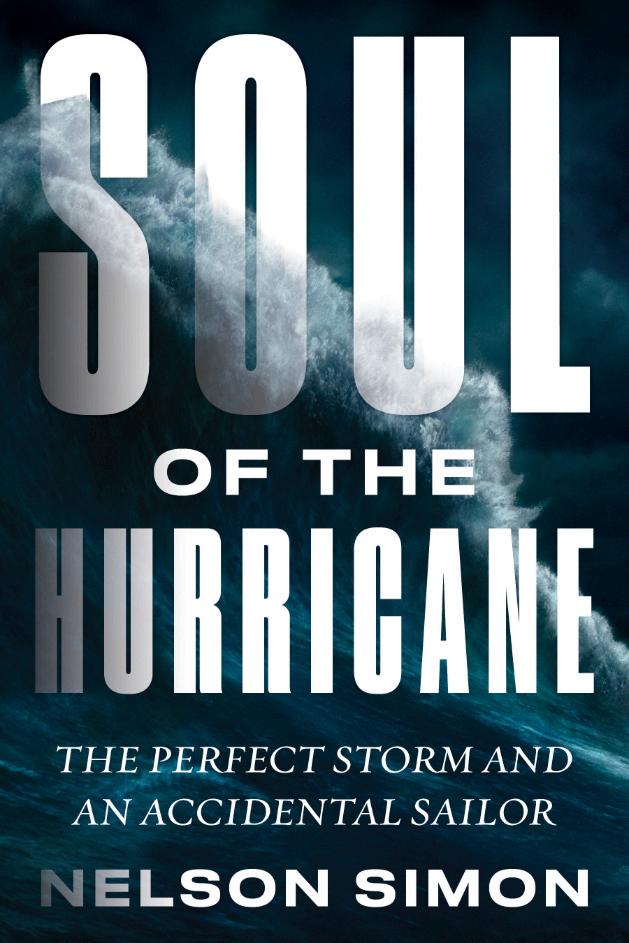
Availablefrommostonlinebooksellers ordirectlyfromIndependentPublishers Groupat ipgbook.com
Cervantes is surer in his handling of the indigenous populations confronted by the conquistadores, and his sketches of formidable leaders like Moctezuma, Atahualpa, and Tascalusa are vivid and memorable. Likewise are his descriptions of their incredible cities, including Tenochtitlan, Cusco, and Mabila, and the battles waged to take them. e author is also careful to emphasize the importance of indigenous allies to the Spaniards. He calls them “native conquistadores,” who “played far more than a merely supportive role: they consistently outnumbered the Spaniards by at least ten to one.” Cervantes also gives the reader insight into the thinking of the Indians, who accepted the Christian god as one more among the deities they already worshipped. To the consternation of the evangelizers, they also regarded the devil as “a further deity that they could, and should, incorporate into their pantheon” and not “as an enemy to be feared and avoided.”
Cervantes concludes this readable study by arguing that among the conquistadores’ legacies was a vice-regal
76 SEA HISTORY 184 | AUTUMN 2023
is triple-expansion epic is set in 1913 Shanghai, where four cultures are about to collide: China, Korea, Japan, and the US. e point of collision is three tons of Japanese gold ingots meant to undermine an already collapsing China.
“ e Abalone Ukulele is a master class in historical ction. With painstaking research and a gift for story spinning, Crossland brings to brilliant life a sprawling epic of greed, gold, and redemption.”
—Joseph A. Williams, author of Seventeen Fathoms Deep and e Sunken Gold
governing system that exercised “a high level of local autonomy and regional diversity” under a Crown mindful of the rights due its new subjects. e result was “three centuries of stability and prosperity,” if not vigorous economic growth. His book is no whitewash but an important and nuanced reassessment of an incredibly consequential topic.
John S. Sledge Fairhope, Alabama
A Cultural History of the Sea , 6 vols., general editor, Margaret Cohen (Bloomsbury Academic, New York, 2021; $610hc)
•Vol. 1, A Cultural History of the Sea in Antiquity, edited by Marie-Claire Beaulieu
•Vol. 2, A Cultural History of the Sea in the Medieval Age, edited by Elizabeth A. Lambourn
•Vol. 3, A Cultural History of the Sea in the Early Modern Age , edited by Steve Mentz
•Vol. 4, A Cultural History of the Sea in the Age of Enlightenment, edited by Jonathan Lamb
•Vol. 5, A Cultural History of the Sea in the Age of Empire, edited by Margaret Cohen
•Vol. 6, A Cultural History of the Sea in the Global Age, edited by Franziska Torma
Multivolume collections of essays present unique challenges to editors and readers alike. Editors—whether of the series or of individual volumes, or the publishing house editor—struggle to translate what sounds like a good idea into a coherent whole, while managing multiple authors is like herding cats. Coming at such a project as a reviewer poses its own di culties. Do you focus on the set as a whole, the individual volumes, or on the fty-four individual essays? As in photography, zooming in and out on the subject yields dramatically di erent results.
Before diving in, it would be helpful to know what cultural history is. Series editor Margaret Cohen o ers little guidance, apart from noting that the eight thematic chapter titles “address culture understood in its expansive, anthropological sense: as designating the diverse realms of practices organizing the structure of a society.”1 MerriamWebster de nes it as “history that especially by contrast with narrative political history concentrates upon the social, intellectual, and artistic aspects or forces in the life of a people or nation.”
All of the Bloomsbury Cultural History series have the same organization: six volumes, chronologically sequenced, each with an introduction and seven “themes (and chapter titles)” that provide a framework for understanding particular “social, intellectual, and artistic aspects or forces.”

In the Cultural History of the Sea, these chapters are “Knowledges,” “Practices,” “Networks,” “Con icts,” “Islands and Shores,” “Travelers,” “Representations,” and “Imaginary Worlds.” e idea is that “thematic coverage is consistent across all periods so that users can either gain a broad overview of a period or follow a theme through the ages.” Curiously, each volume has a table of contents with these headings and the
1 www.bloomsburyculturalhistory.com/ about-bloomsbury-cultural-history
authors’ names, but only at the start of each chapter do we learn its actual title. Some are quite straightforward. Volume 1, chapter 4 is Jorit Wintjes’s “Con ict at Sea in the Ancient World,” which examines a wide range of warlike encounters on and over the sea from the Persian Gulf to the English Channel through the seventh century. His approach to technological and operational change is ably handled, but, according to the above de nitions, neither are cultural history.
In volume 2, Elizabeth Lambourn’s corresponding chapter, “Connected Histories of Maritime Violence in the Western Indian Ocean” engages more directly with cultural understanding. Her insights reveal as much about how historians have changed their comprehension of naval con ict in the medieval Indian Ocean as they do about the cultural aspects of naval warfare in the medieval period itself. She also o ers a behind-the-scenes glimpse at how the chapter title began as “War” and was “renegotiated by the pre-modernists among us to ‘Con icts’.” is change re ects “the various ways in which violence in a maritime context has been framed within di erent disciplines and methodologies.”
So far, so good. But in volume 5, chapter 4 is William Boelhower’s “Reframing Oceanic Violence: e Pax Britannica and Wild Weather during the Nineteenth Century.” Given the monumental changes in propulsive technology, hull materials, and weaponry in the 1800s, the editorial decision to allow such a stark departure from the established understanding of con ict undermines the claim that one can “follow a theme through the ages.” Framing heavy-weather sailing as a type of con ict is an interesting conceit, but not one that conforms to expectations.
More troubling is the collection’s Eurocentric orientation. An almost laughable instance is found in James
SeaHistory.org 77
Seth’s “Representations: e Maritime Visual Arts in the Global Early Modern Period” (volume 3). Chinese and Indian “paintings, scrolls, and decorative objects,” he informs us, “often allude to places that many Asian artists had never visited, people they likely had never visited with, and events that they had not seen for themselves.” One could say the same of Rembrandt, who managed to paint Christ in the Storm on the Sea of Galilee without leaving either the Dutch Republic or the seventeenth century.
Despite the vast pool of historians—maritime, cultural, and otherwise—from the global south and east, all but four or ve of the authors in this collection are of European, North American, or Australian origin, and fewer than 10 percent of the essays focus on non-Western subjects. Introducing volume 2, Lambourn o ers an apology for the lack of coverage of non-Western subjects, although she writes thoughtfully about the role of Hindu, Buddhist,

and Jain interaction with, writings on, and artistic traditions of the sea; her selections of illustrations demonstrate a deep familiarity with the material. e chapter she wrote, “Connected Histories of Maritime Violence in the Western Indian Ocean,” is a ne introduction to the history of maritime warfare and other forms of violence in the Indian Ocean at the time of Europe’s Middle Ages.
Cannon Schmitt’s rst-rate “Sea of Ink” (vol. 5) o ers a close reading of the ship’s library aboard the Dulcibella, the nine-meter yawl serves as “the hero” of Erskine Childers’s Riddle of the Sands. “ e gambit of this chapter,” Schmitt writes,
will be to assume that [the narrator] Carruthers’s mention of a title brings with it the entirety of the book in question as it exists outside the novel…. Inverting the usual procedure
whereby historical context is invoked to interpret ction, I take the ctional ship’s library in e Riddle of the Sands as material for a cultural history of the sea in the age of empire.
It is a brilliant play and Schmitt carries it o with aplomb. Whether this chapter ts in “Imaginary Worlds” rather than “Representations” is debatable. One could easily swap it with Charne Lavery’s “Lascars, Drifters, Aquanauts,” the subject of which is “canonical writing of the sea” in the nineteenth century, chie y Conrad, with some reference to Melville, Verne, and others. (Note that across the series, “Representations” can be either visual or literary.) While Lavery is attentive to scienti c advances and other broad historical trends of the period, she reads these authors through a literary critical lens rather than a cultural-historical one.

ARMAGEDDON IN THE ARCTIC OCEAN
ARMAGEDDON IN THE ARCTIC OCEAN
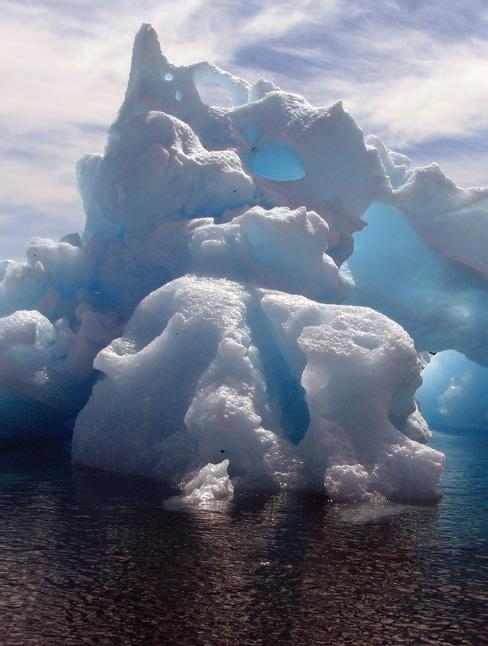
PAUL G. G ILL
“...An absolutely splendid read.”
“What a story, and how well told!”
Eric C. Rust, Professor of History, Baylor University
“…Real, relevant, and deeply meaningful to anyone who has set sail and headed into harms way.”
James Stavridis, Ph.D., Admiral, US Navy (Retired)
www.hellgatepress.com






Devoted to stories about engine-powered vessels, their crews, and their passengers, and published quarterly by SSHSA for more than 80 years.
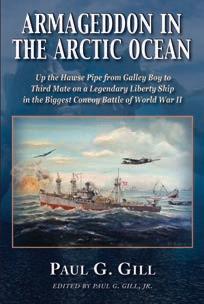
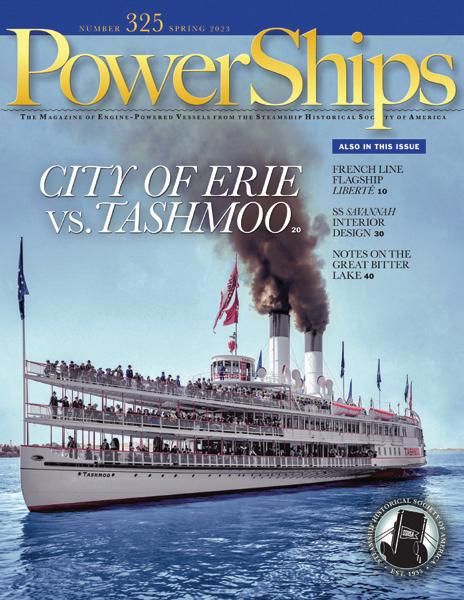
• 88 pages • Full color
Email
78 SEA HISTORY 184 | AUTUMN 2023
I N F O @ S S H S A O R G • W W W S S H S A O R G Get
STEAM SHIP H ISTORICAL SOCIETY OF A MERICA
a FREE Copy of...
info@sshsa.org or call 1-401-463-3570 and we’ll send you a FREE copy and tell you how to subscribe.
Up the Hawse Pipe from Galley Boy to Third Mate on a Legendary Liberty Ship in the Biggest Convoy Battle of World War II
EDITED BY PAUL G . GILL , JR .
Craig L. Symonds, Professor Emeritus of History, U.S. Naval Academy
None of the essays in this series focuses on the Americas south of the United States. is is a missed opportunity, not least because Cohen’s general editor’s preface, which appears in each volume, invokes Derek Walcott’s 1979 poem, “ e Sea is History.” Yet while Walcott’s poem presents a cultural gloss on the sea in the guise of an abbreviated Caribbean Bible—“ en came from the plucked wires / of sunlight on the sea oor / the plangent harps of the Babylonian bondage … but the ocean kept turning blank pages”—no one engages here with the outsize impact of these verses on the culture of maritime historiography in recent decades.
Criticism is easy, but there are gems to be found here. Mirella Romero Recio’s essay, “Religious Practices at Sea in Antiquity,” covers sacred spaces, sacrices, gods and heroes, and magic, which were among the “myriads of elements involved in the religious practices … that responded to an inner logic derived from the practice of a professional activity that constantly called for divine intervention.”
e Age of Empire includes Siobhan Carroll’s imaginatively conceived microhistory. “ e Awful Prospect of Eternity: Ocean Networks and the Wreck of the Kent ” examines networks in di erent registers—across the empire, transAtlantic, and even within individual ships—through the story of an East Indiaman lost to re in the Bay of Biscay in 1825, beginning with the retrieval of a passenger’s message in a bottle, which washed ashore in Barbados the following year. “In the stories of individual ships and people,” she observes, the British Admiralty “learned to glimpse the movements of much larger forces: winds and currents, trade and warfare, and the migrations, forced and otherwise, of human and nonhuman populations.” Here, Carroll “restages” the process to allow us to “view the story of this wreck as a
window onto the scale, power, and actions of the oceanic networks of the nineteenth century.” In so doing, she models how to conceptualize and write cultural history.
Volume six, e Global Age, brings the series to a strong nish. Simone Müller’s “Con icts: Underneath the Quiet Waves” is a harrowing investigation of the sea as dumping ground, particularly for ordnance, chemical weapons, and radioactive waste, including sixteen Soviet “nuclear reactors from submarines and icebreakers, some still with nuclear fuel, most of them in water less than one hundred meters deep,” as well as industrial waste from mine tailings to PCBs. It is noteworthy (if unsurprising) that as late as 1971, Congressional subcommittees could report that “questions on the e ects of ocean dumping had ‘scarcely’ been asked and ‘then only by an obscure group of scientists, known as ecologists’.”
e environmental theme continues in Rebecca Hofmann’s “War in the Paci c,” which traces the legacy of war and imperial rivalries on the islands of Oceania. As she notes, these “continue to bear the scars of nuclear tests, while struggling with the neocolonial exploitation of their natural resources or the current issue of the Great Garbage Patch that marks the transition from the Nuclear into a Plastic Ocean,” to say nothing of the impact of climate change. John Crylen’s “Representations: On Undersea Filmmaking” o ers a new way of understanding the ocean depths and how the overwhelming majority of us perceive it. His juxtaposition of how we view underwater lm and aquariums is instructive, and his history of the development of underwater cinematography fascinates.
e illustrations run the gamut from a 1901 cartoon from Punch captioned “‘Catching a Mermaid!’ [Submarine Photography is now possible]” to a still showing the cartoon gures Tom and Jerry swim-
ming with Esther Williams, from the 1953 movie, Dangerous When Wet, and a photograph of the underwater set for Disney’s 20,000 Leagues Under the Sea (1954).
Ariane Tanner’s “Imaginary World: e Human-Ocean Relation in Fantastic Futures of A uence and Formidable Visions of Unsettledness” drops us rmly but re ectively in the midst of our shared ecological crisis. She begins obviously enough, with a discussion of Rachel Carson, a non-swimmer whose work “exempli es the crucial role of imagination for the understanding of the ocean.” e focus shifts to plankton, which “represents many aspects of an imagined scienti c, technical, and geopolitical solution to the problems faced by the Western world.” People began to understand the importance of plankton to food chains and human welfare more than a century ago. For example, attempts to cultivate phytoplankton for human consumption began in the 1950s. e failure of this e ort underlies the plot of the dystopian movie Soylent Green (1973), in which humans became a substitute for plankton chips, which were virtually the sole source of nutrition for an overpopulated world. Tanner ties this to other understandings of the oceanic environment and its exploitation, and quotes Naomi Oreskes’s observation that the shift in our perception of the ocean from an all but inaccessible realm out of sight and mind to “a vast abode of life … and a place on which all life, both marine and terrestrial, depends is one of the most important cultural and scienti c shifts of the twentieth century.”
It is rare that such a collection of essays ends as powerfully as this, but Tanner’s essay leaves no doubt about the importance of environmental understanding to the present and future of maritime history and world culture.
L incoln Paine Portland, Maine
SeaHistory.org 79
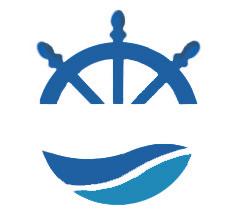
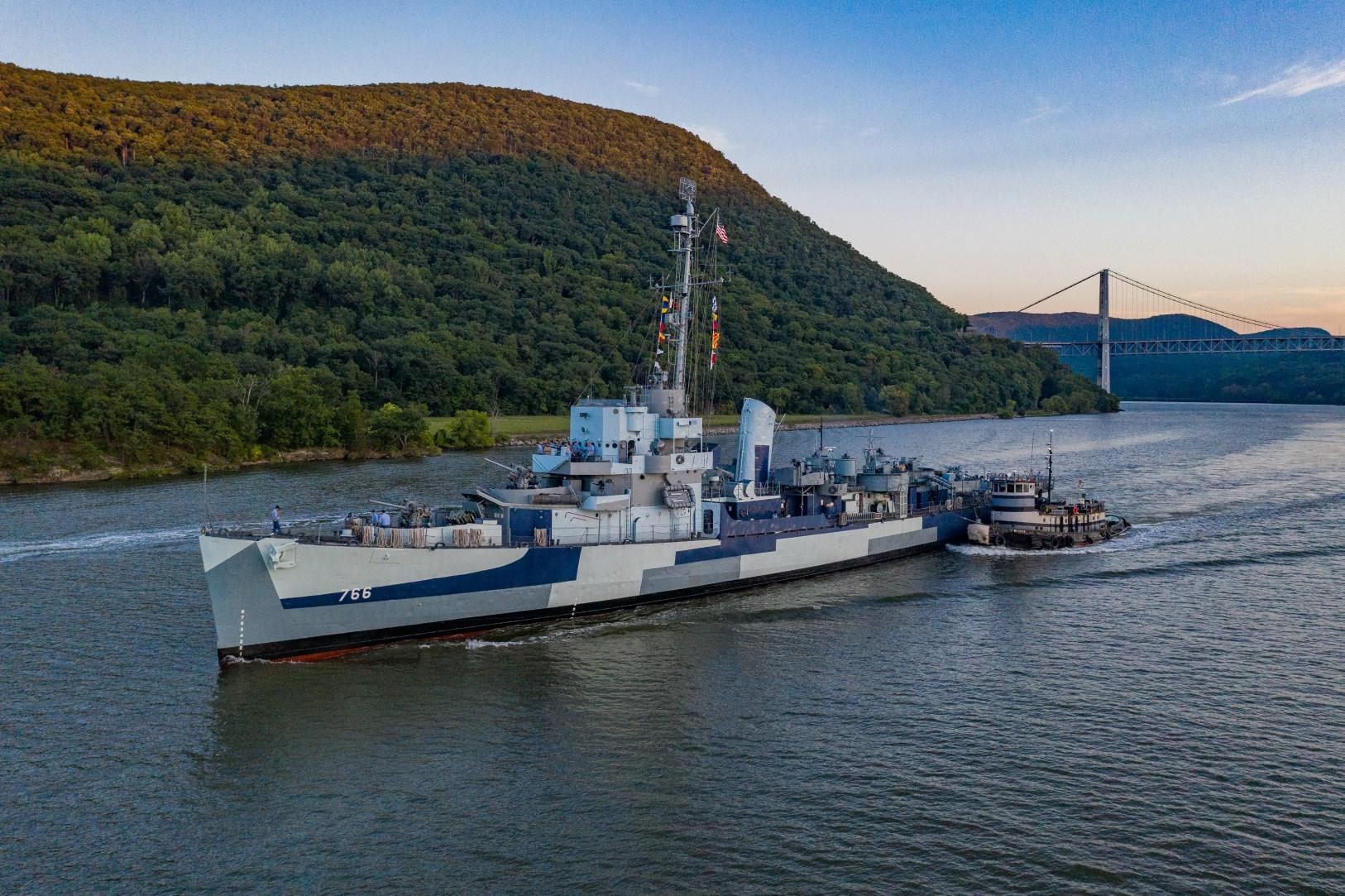
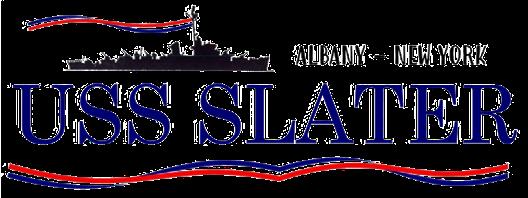
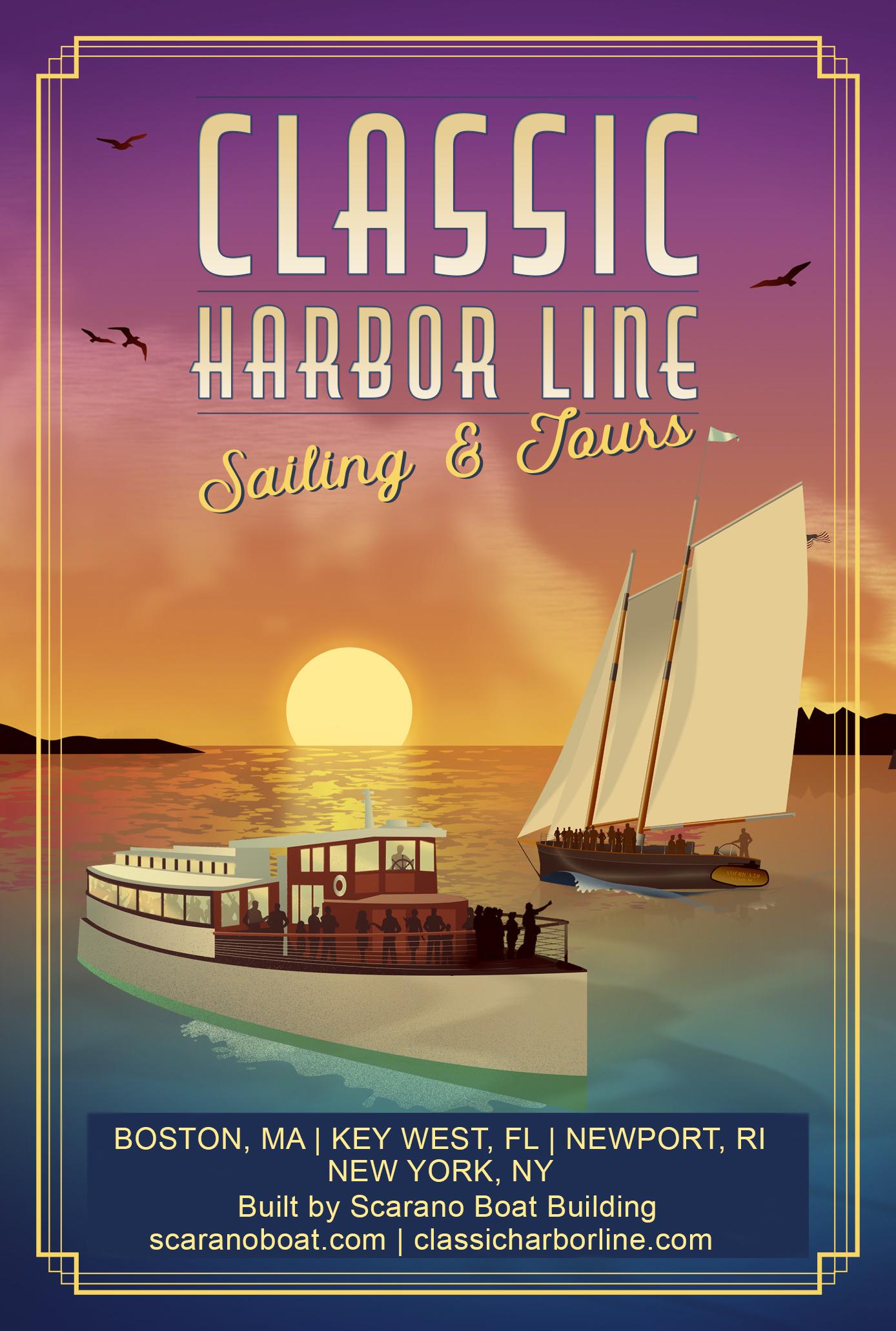

OSWEGO “oldest US freshwater port” Open daily • 1–5 pm Offering dockside tours of vessels May thru October West 1st Street Pier, Oswego, NY www.hlwmm.org 315-342-0480 MARITIME MUSEUM AT OSWEGO H. LEE WHITE Explore the decks of the last Destroyer Escort afloat in America. 518-431-1943 ussslater.org 1/8 page AD
CENTER FOR AMERICAN MARINE ART
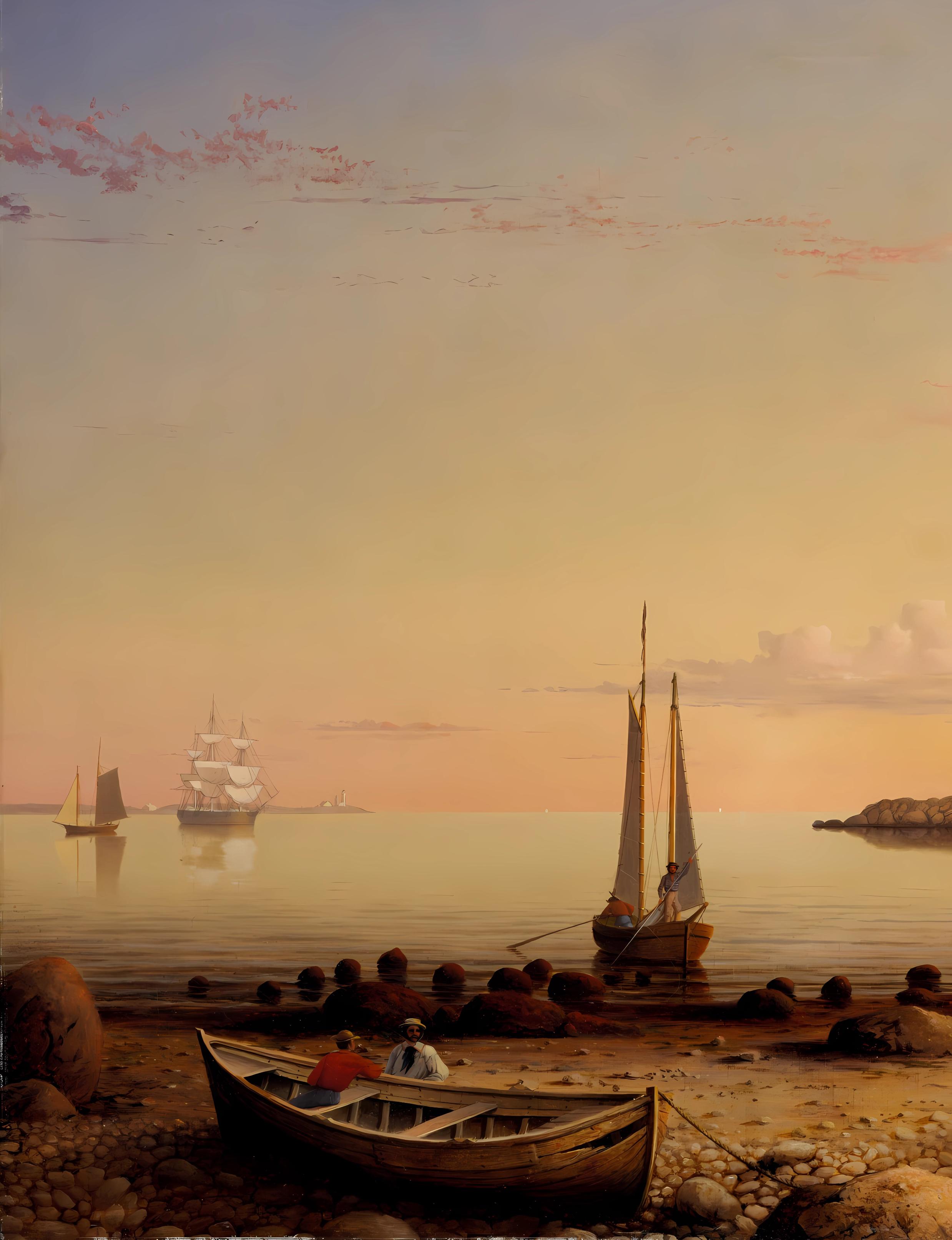
We’re on a mission to save America’s visual maritime heritage.
Many museums and private collectors lack the resources to image their paintings to cultural heritage standards. Using multiple, ultra-high resolution photos in a new process called photometric stereography, we are not just preserving what’s in the images, but also a precise, 3D model their surfaces, imperfections and brush-strokes. Please visit americanmarineart.com to learn about what we do.
Your donation today will equip and fund imaging and cataloguing programs for collections around the country.
WWW . AMERICANMARINEART . COM
Painting: Fitz Henry Lane, Stage Fort, 1862, Metropolitan Museum of Art






















































































 by CAPT Daniel A. Laliberte, USCG (Ret.)
by CAPT Daniel A. Laliberte, USCG (Ret.)















 by Bill Bleyer
by Bill Bleyer
















 PHOTO BY PHCS W. M. COX, US NAVY
PHOTO BY PHCS W. M. COX, US NAVY



 by Deirdre O’Regan
by Deirdre O’Regan






























 by Richard J. King
by Richard J. King











 by Keith Spiro, Virginia crewmember, Maine’s First Ship
by Keith Spiro, Virginia crewmember, Maine’s First Ship

















 by Vincent J. Miles
by Vincent J. Miles

 Timothy J. Runyan Greenville, North Carolina
Timothy J. Runyan Greenville, North Carolina




 William H. White Rumson, New Jersey
William H. White Rumson, New Jersey























